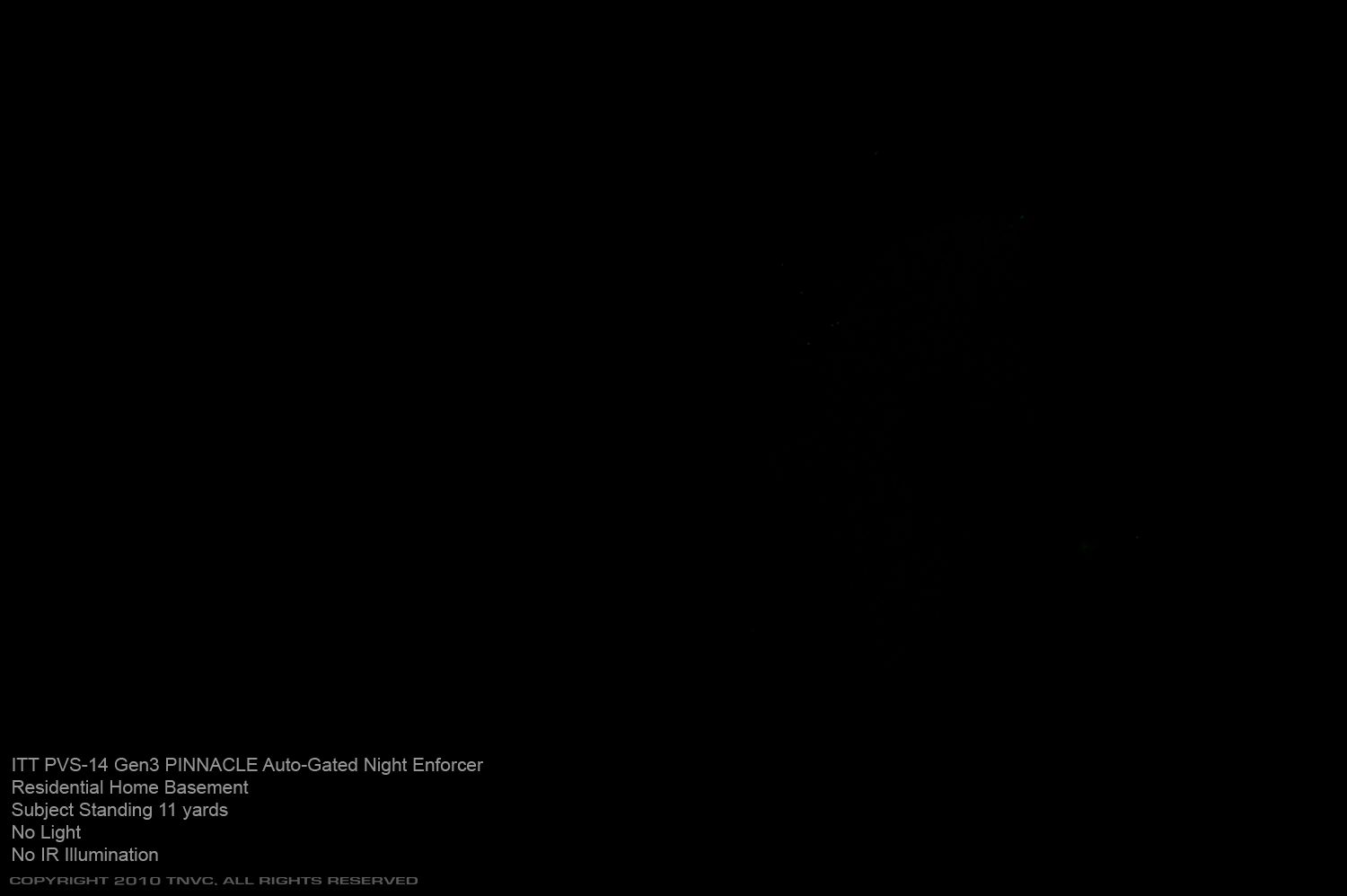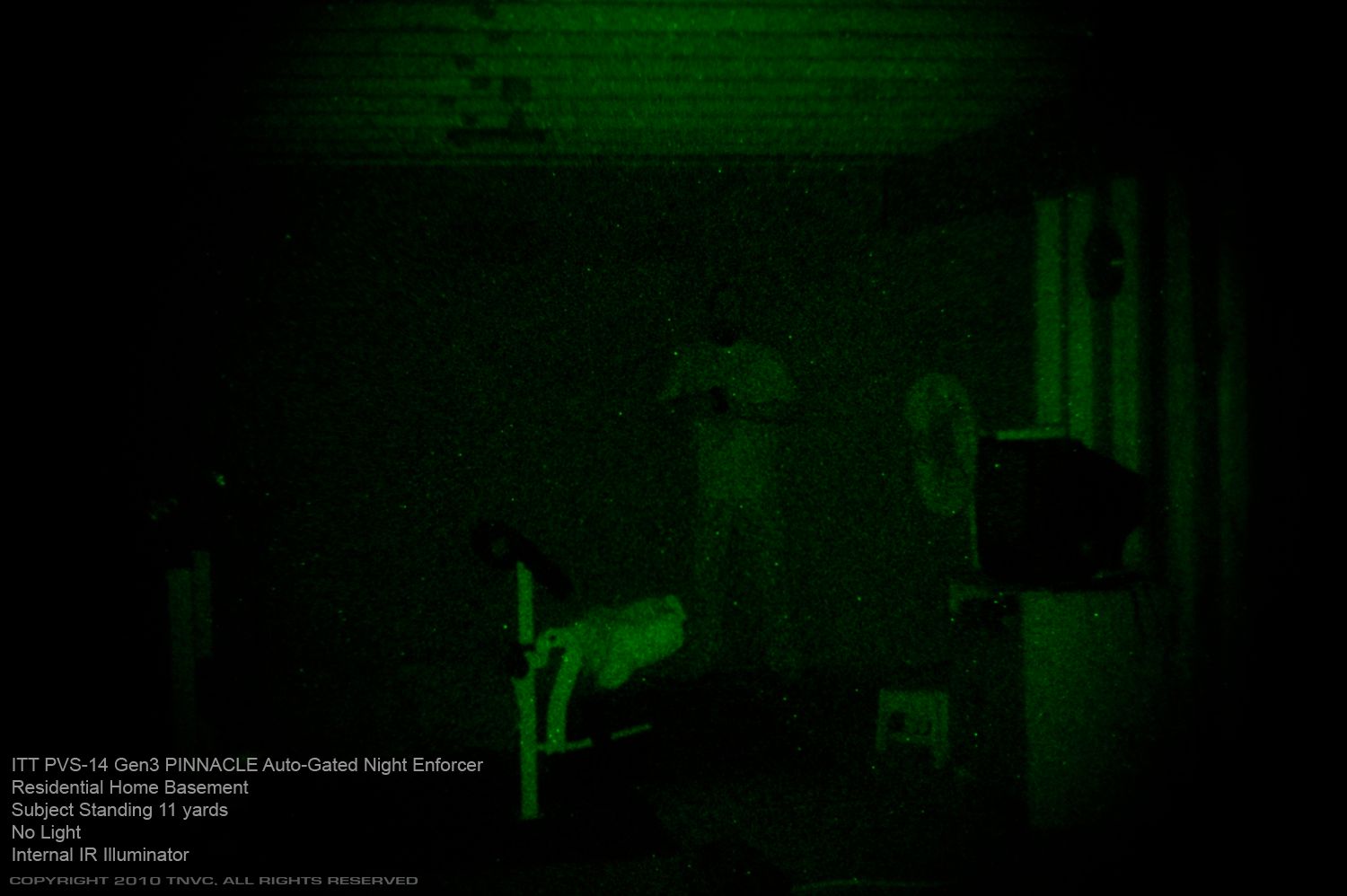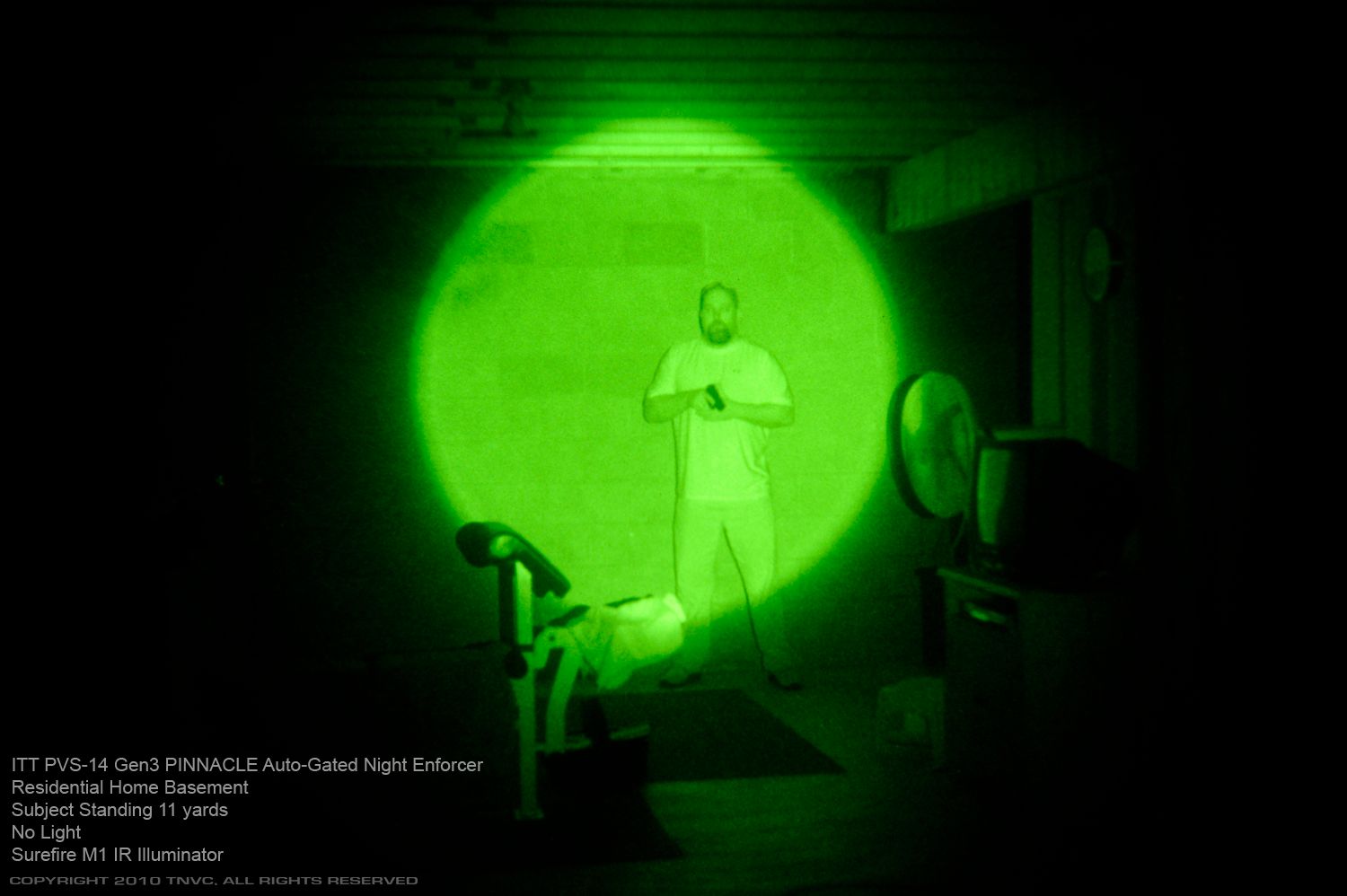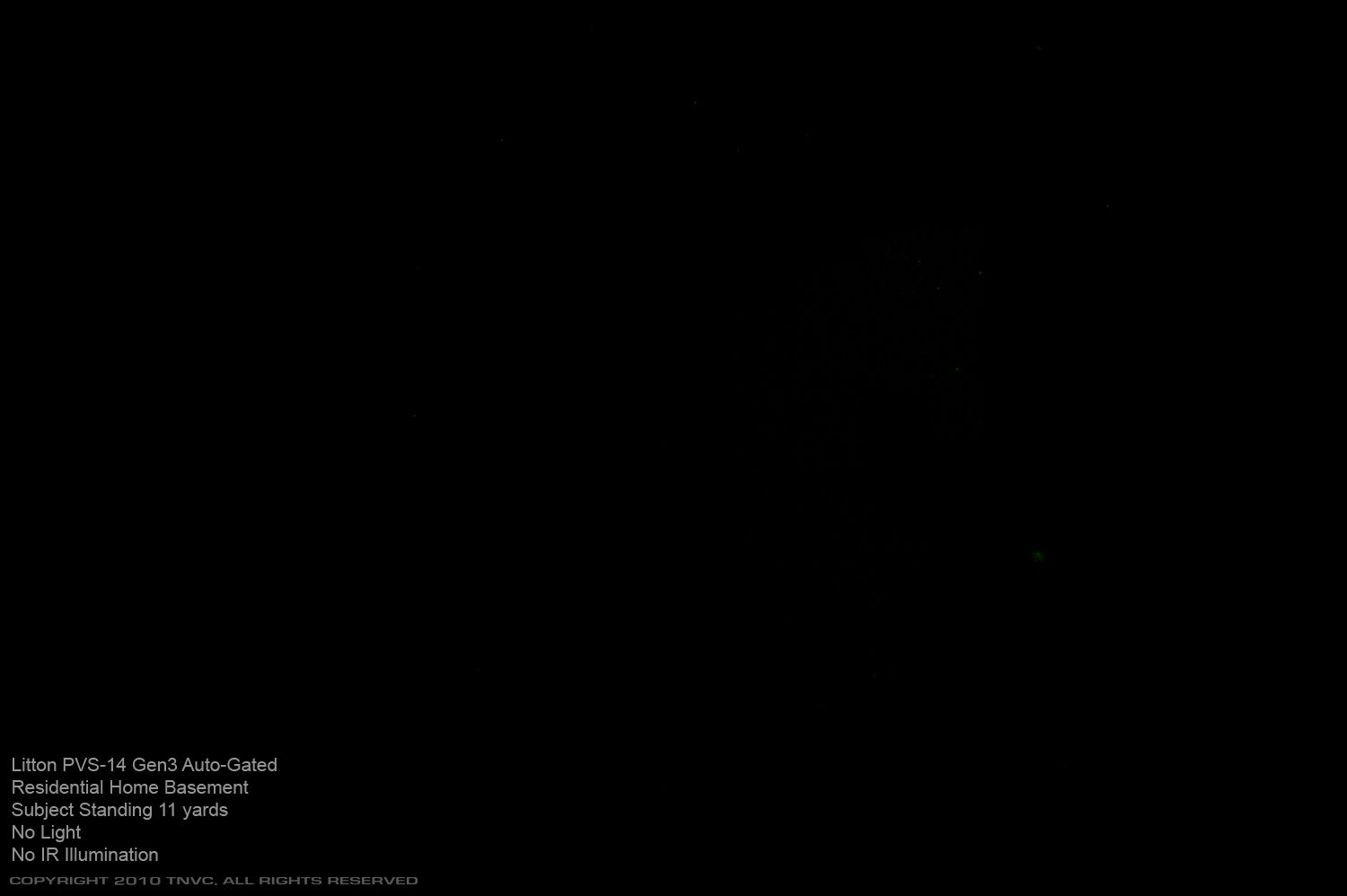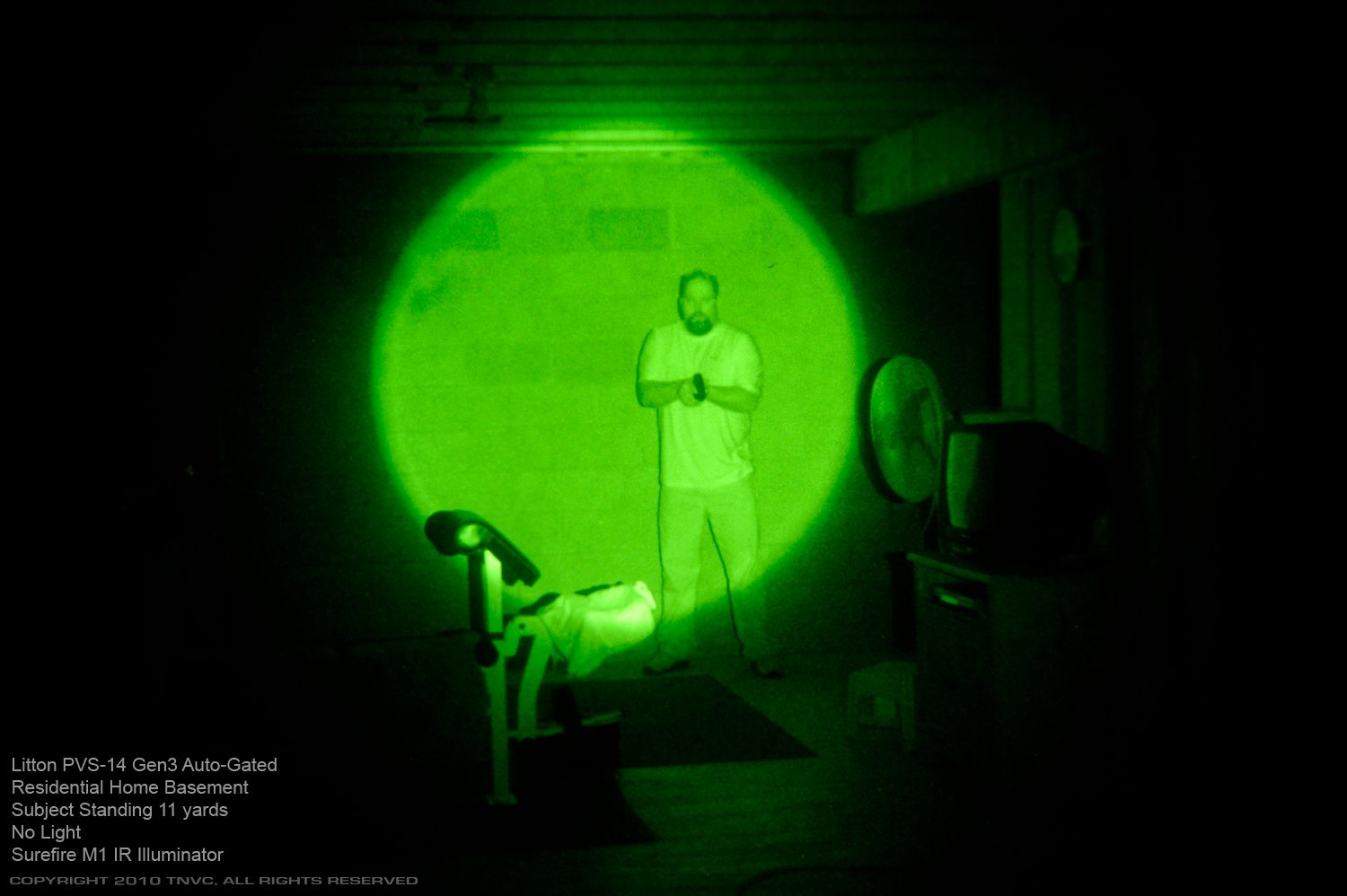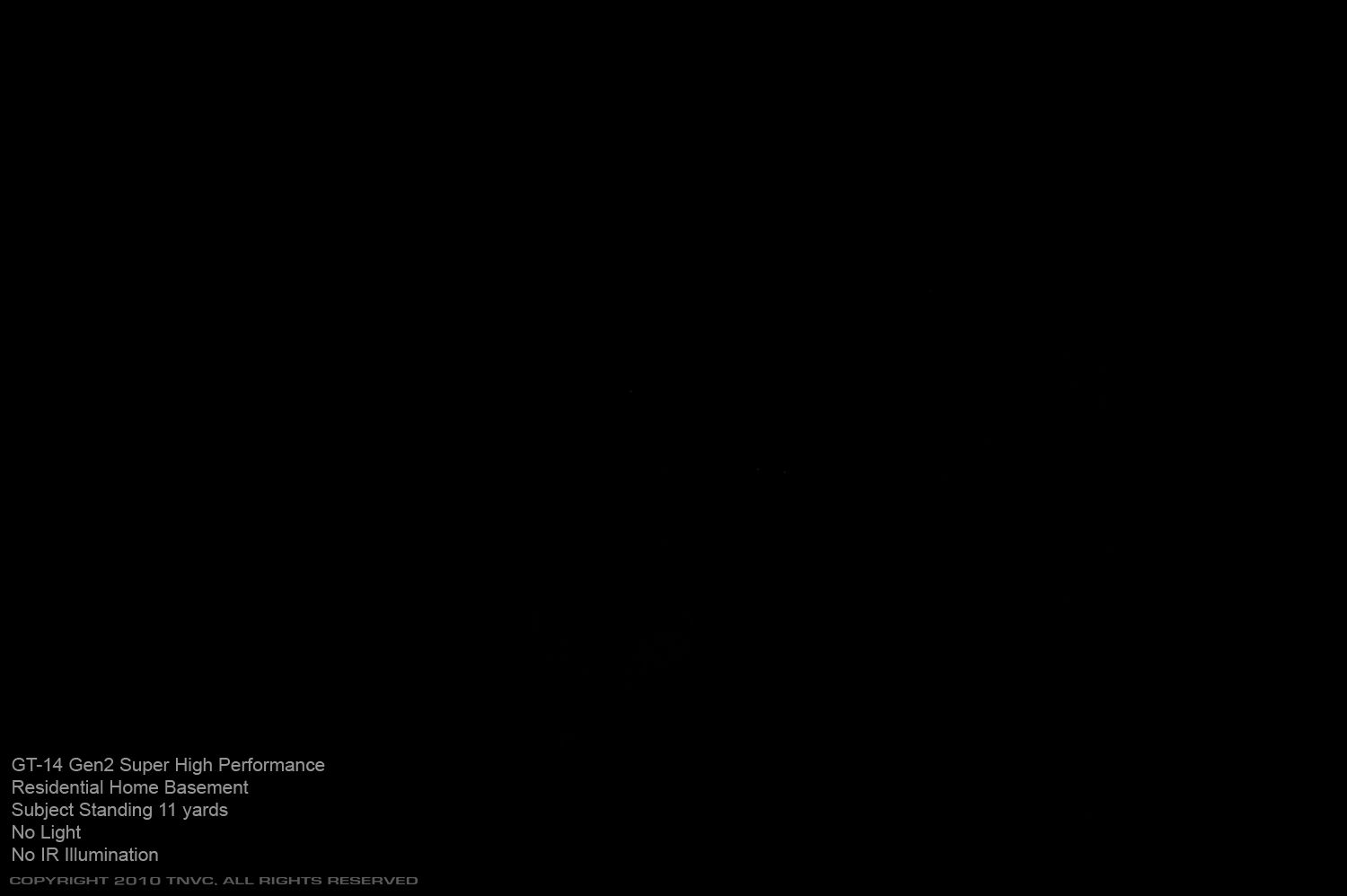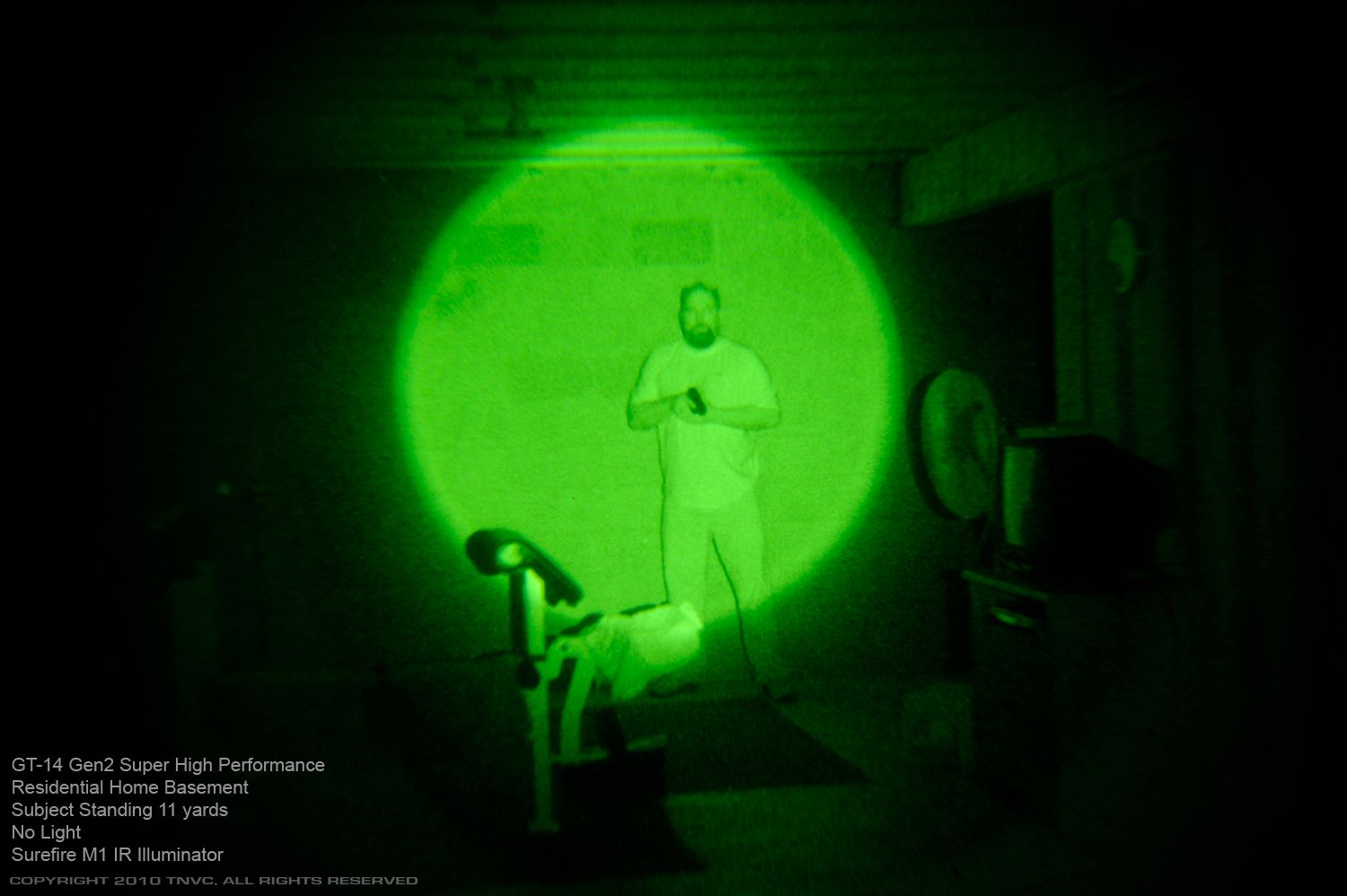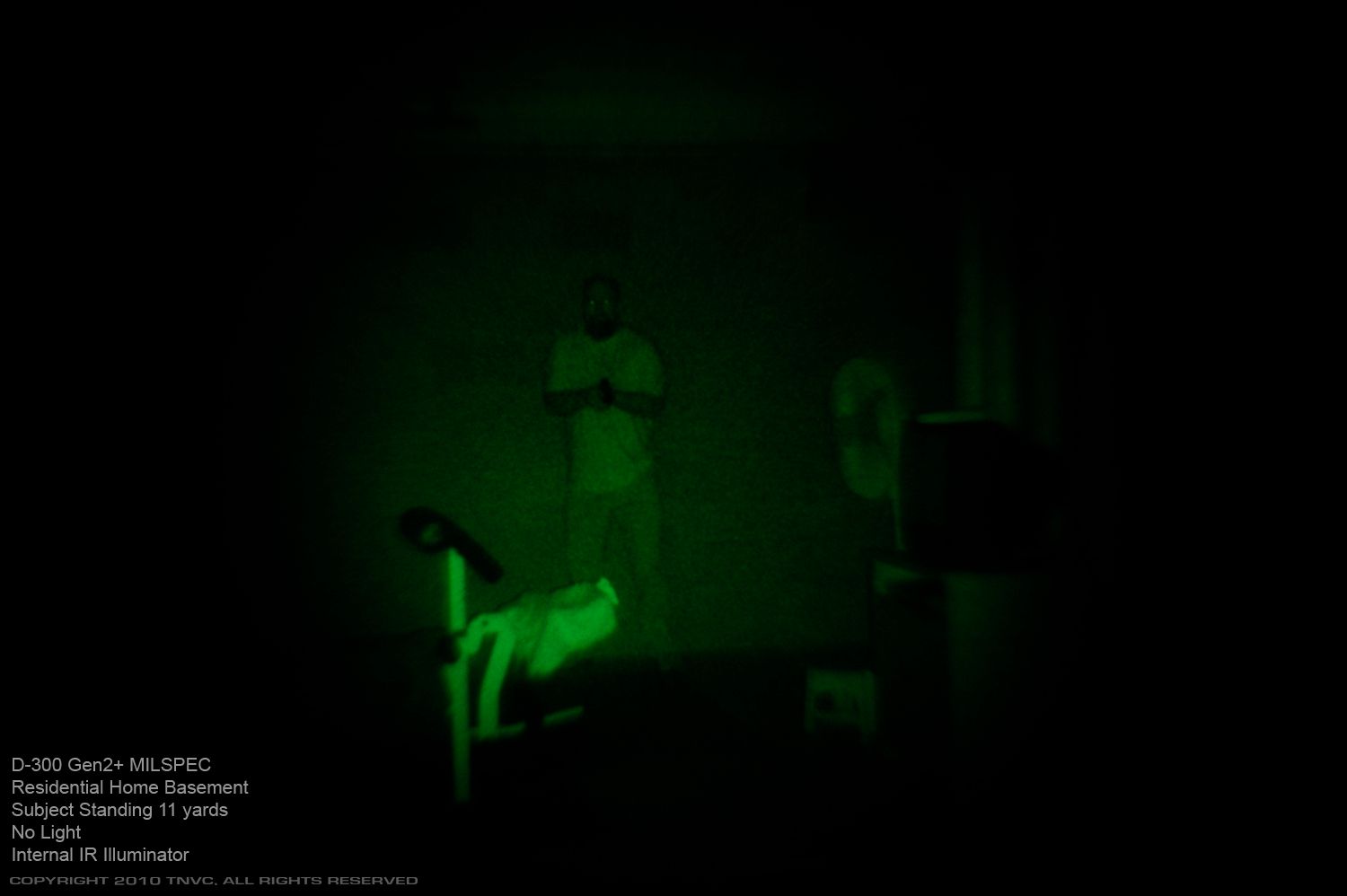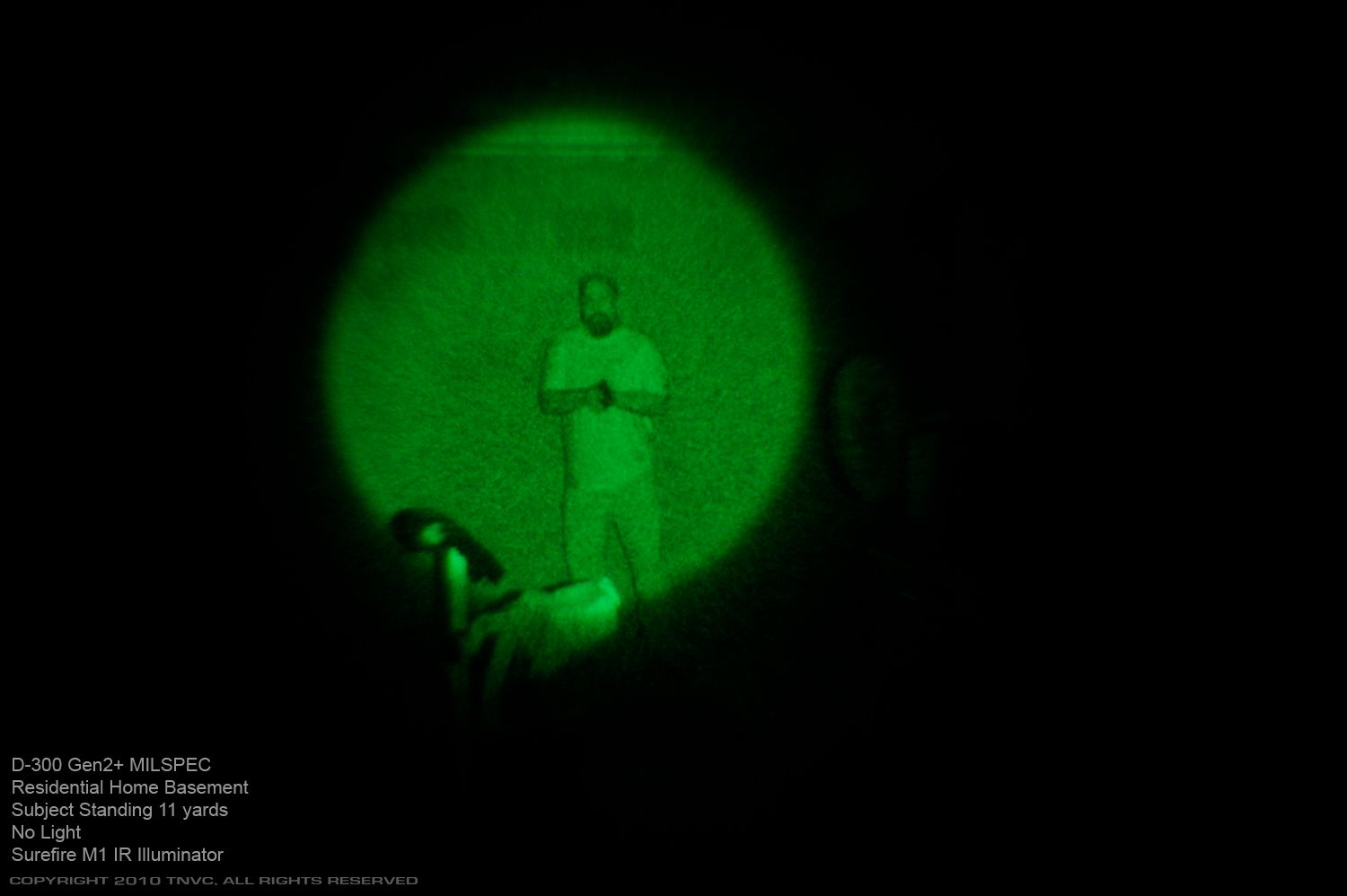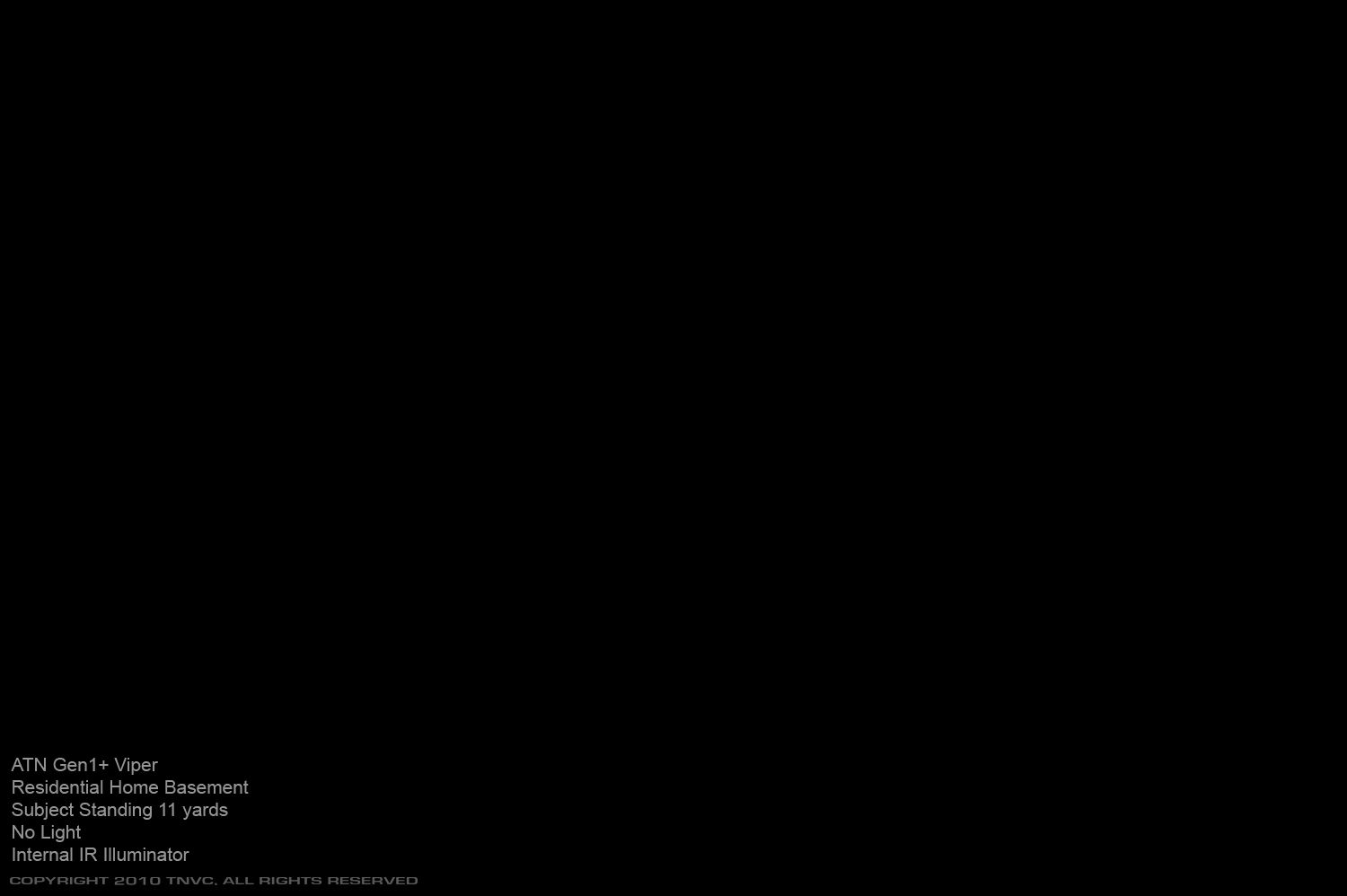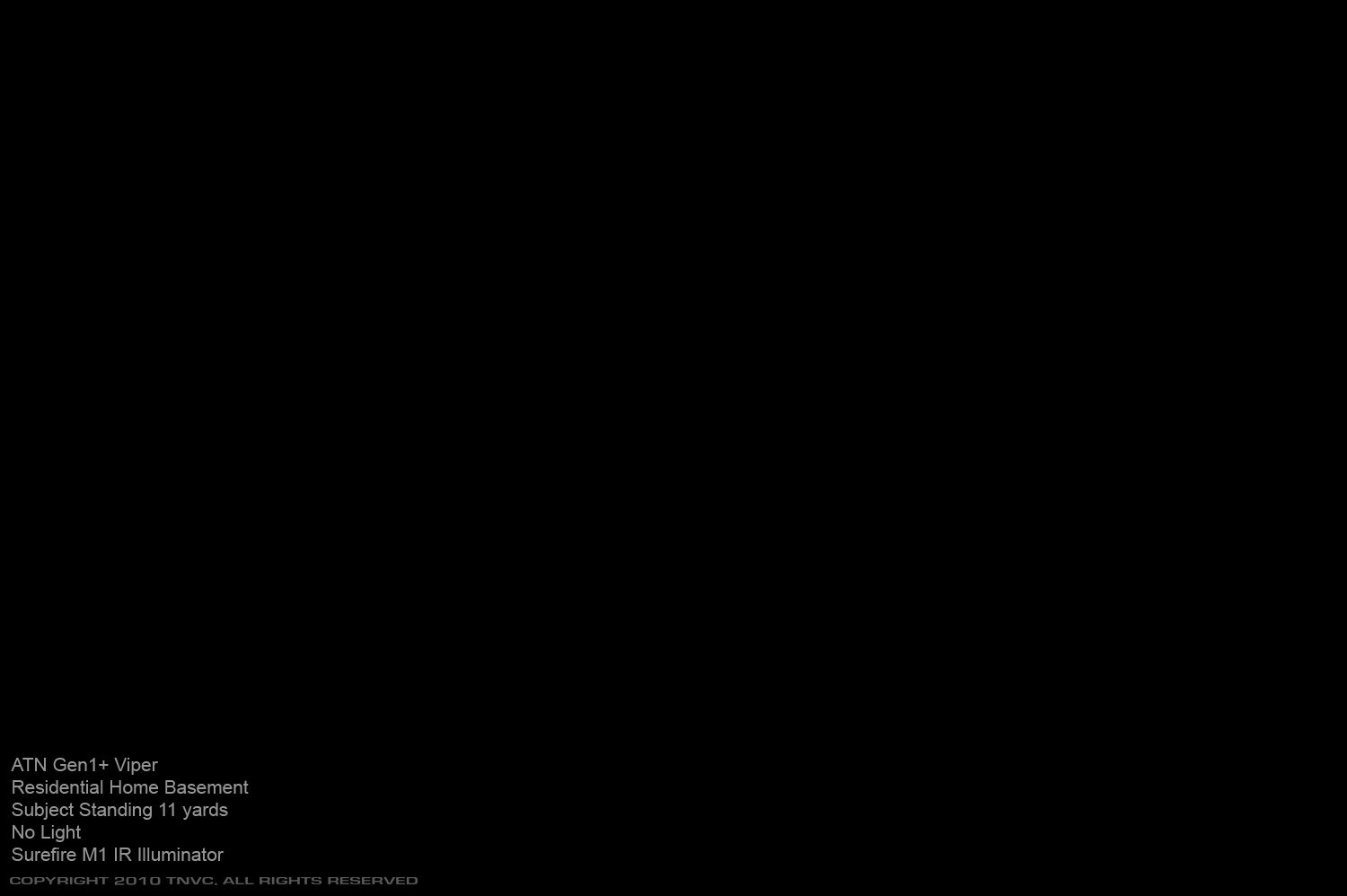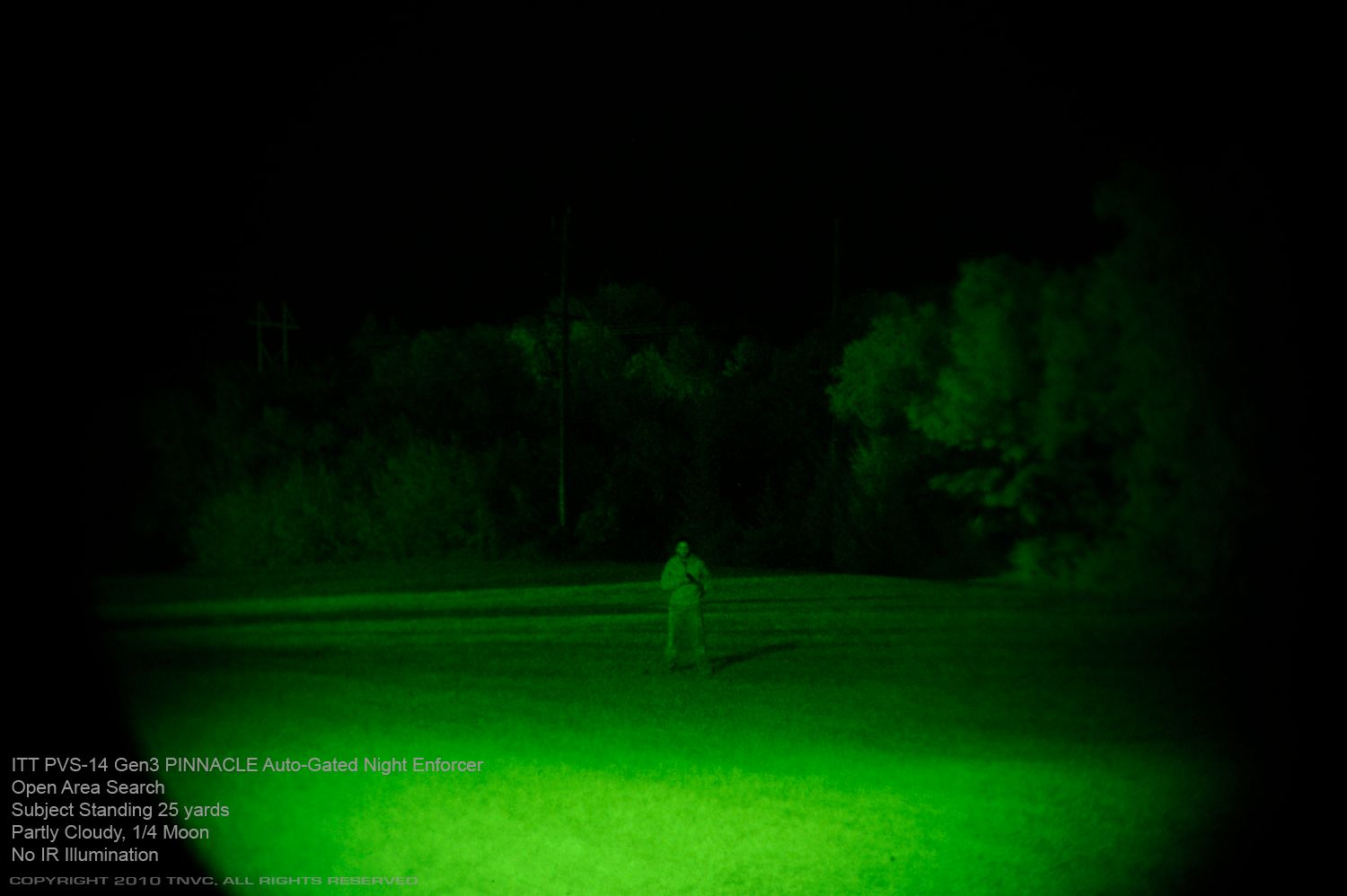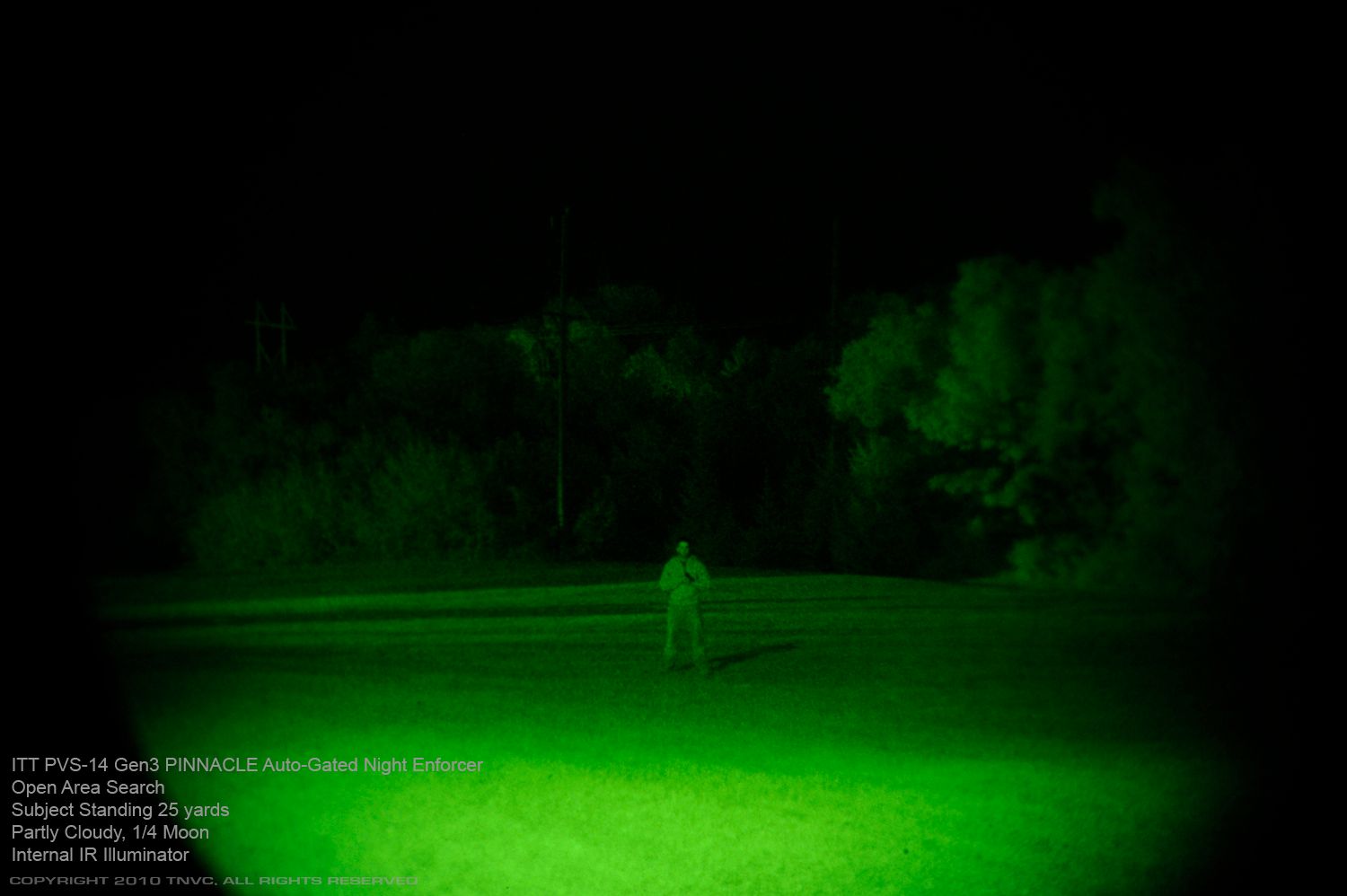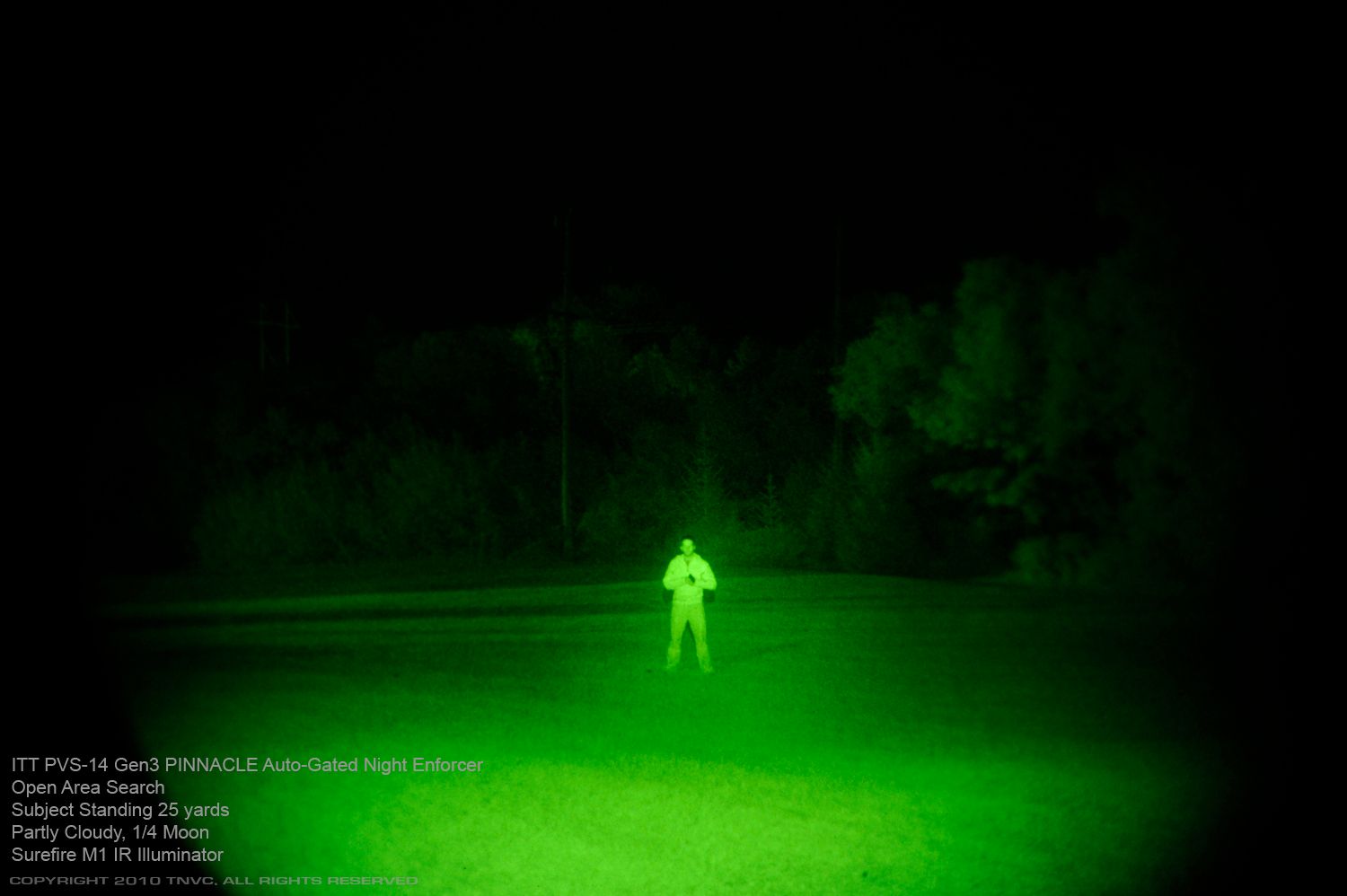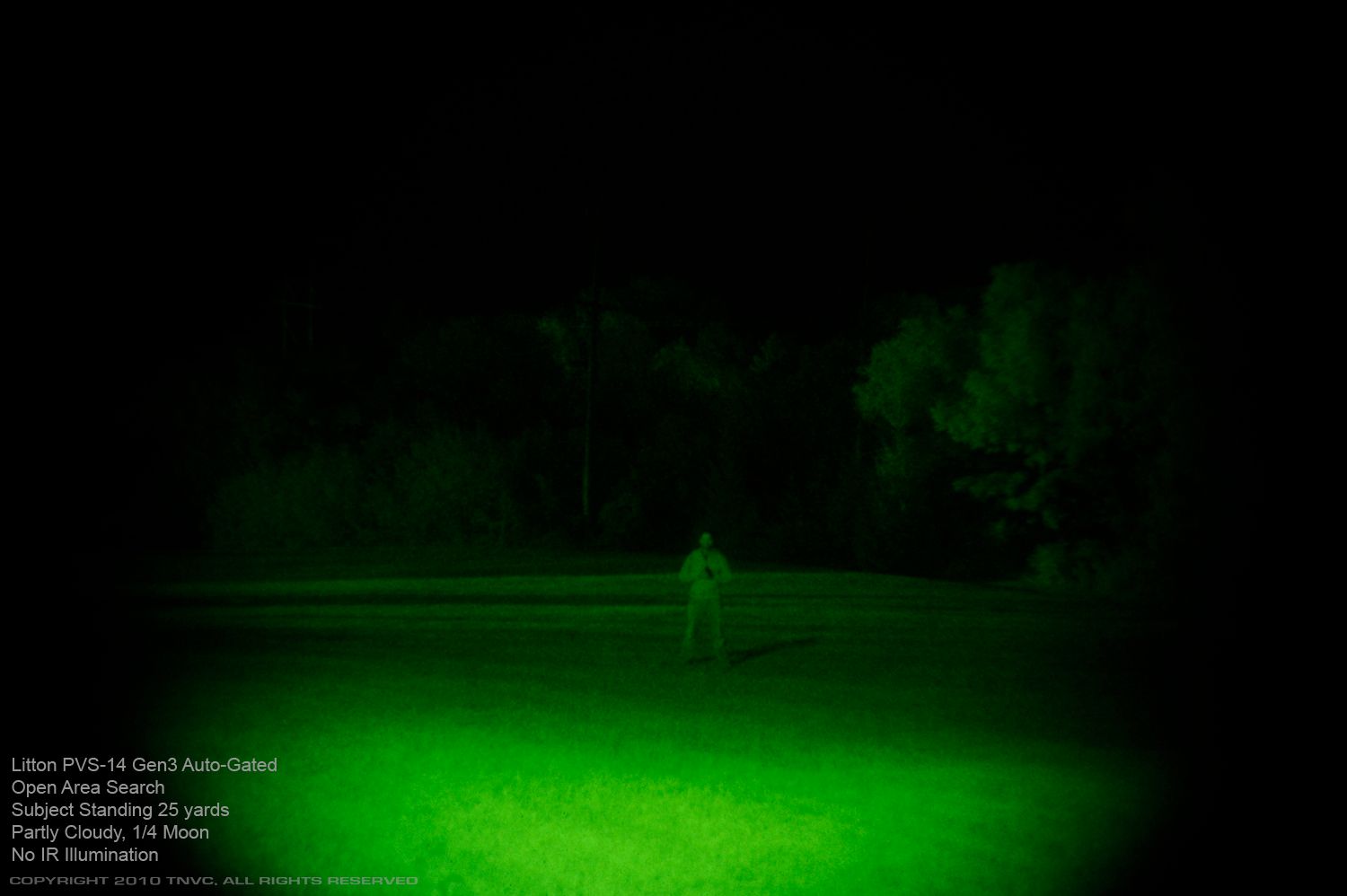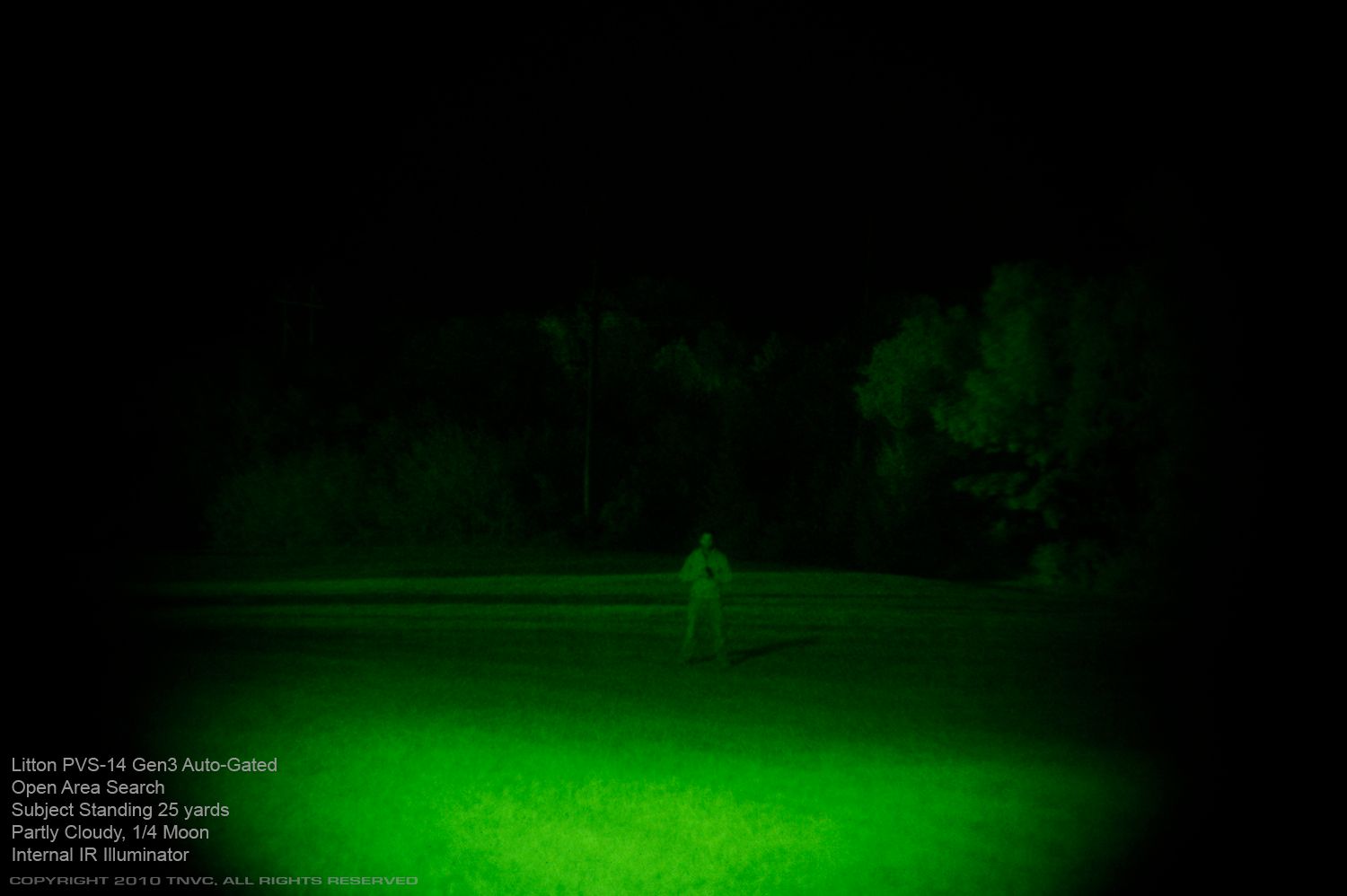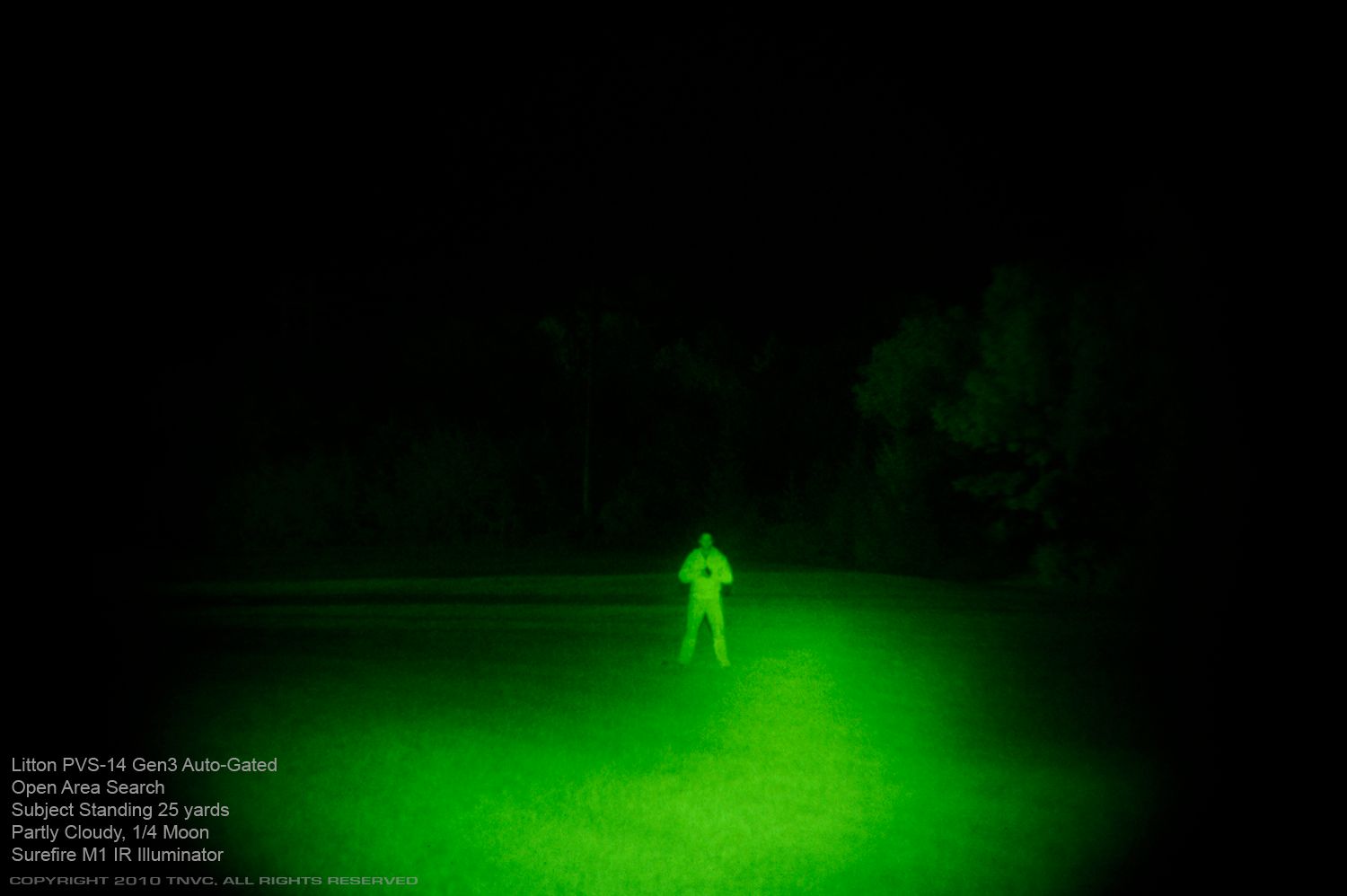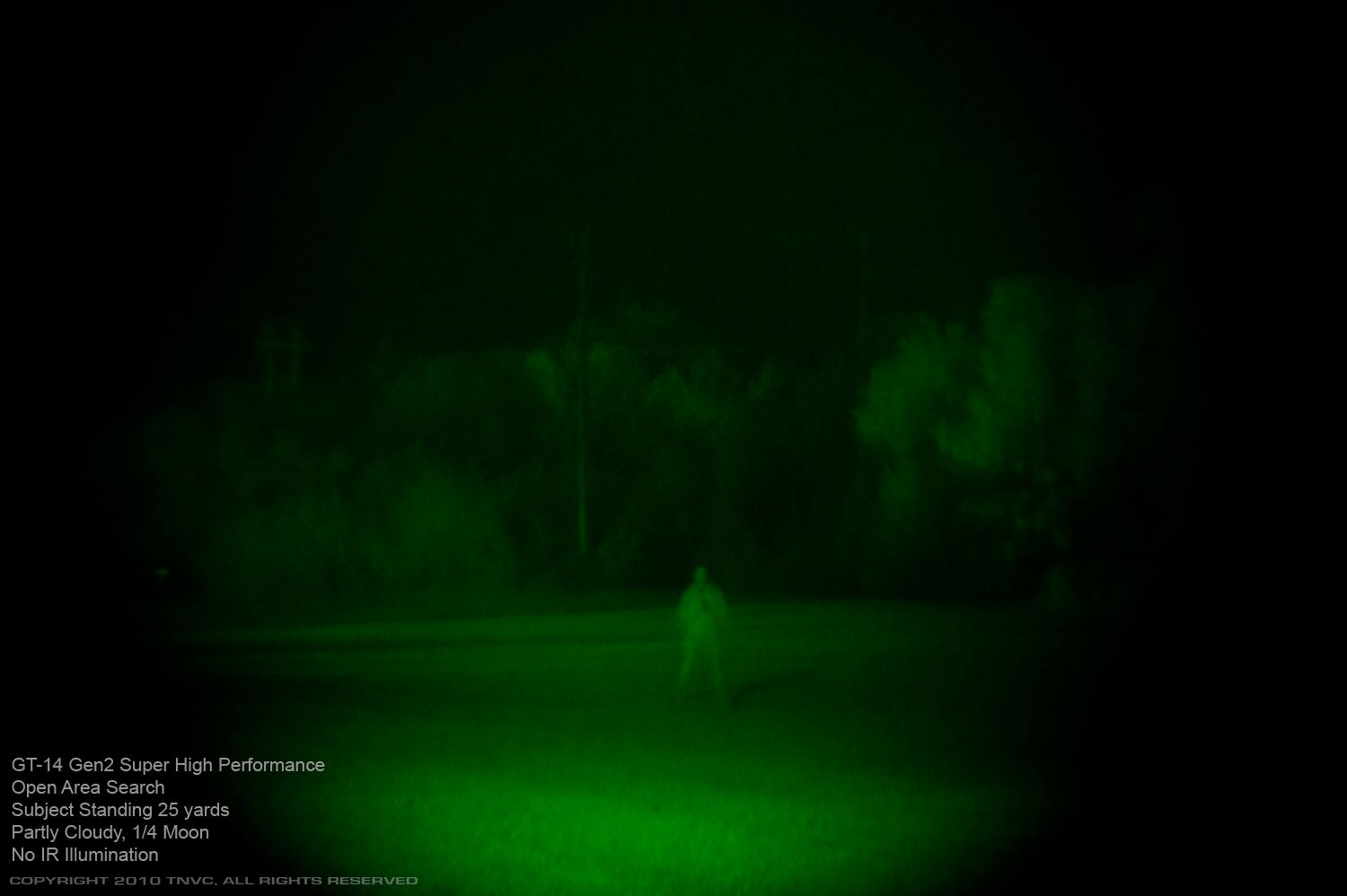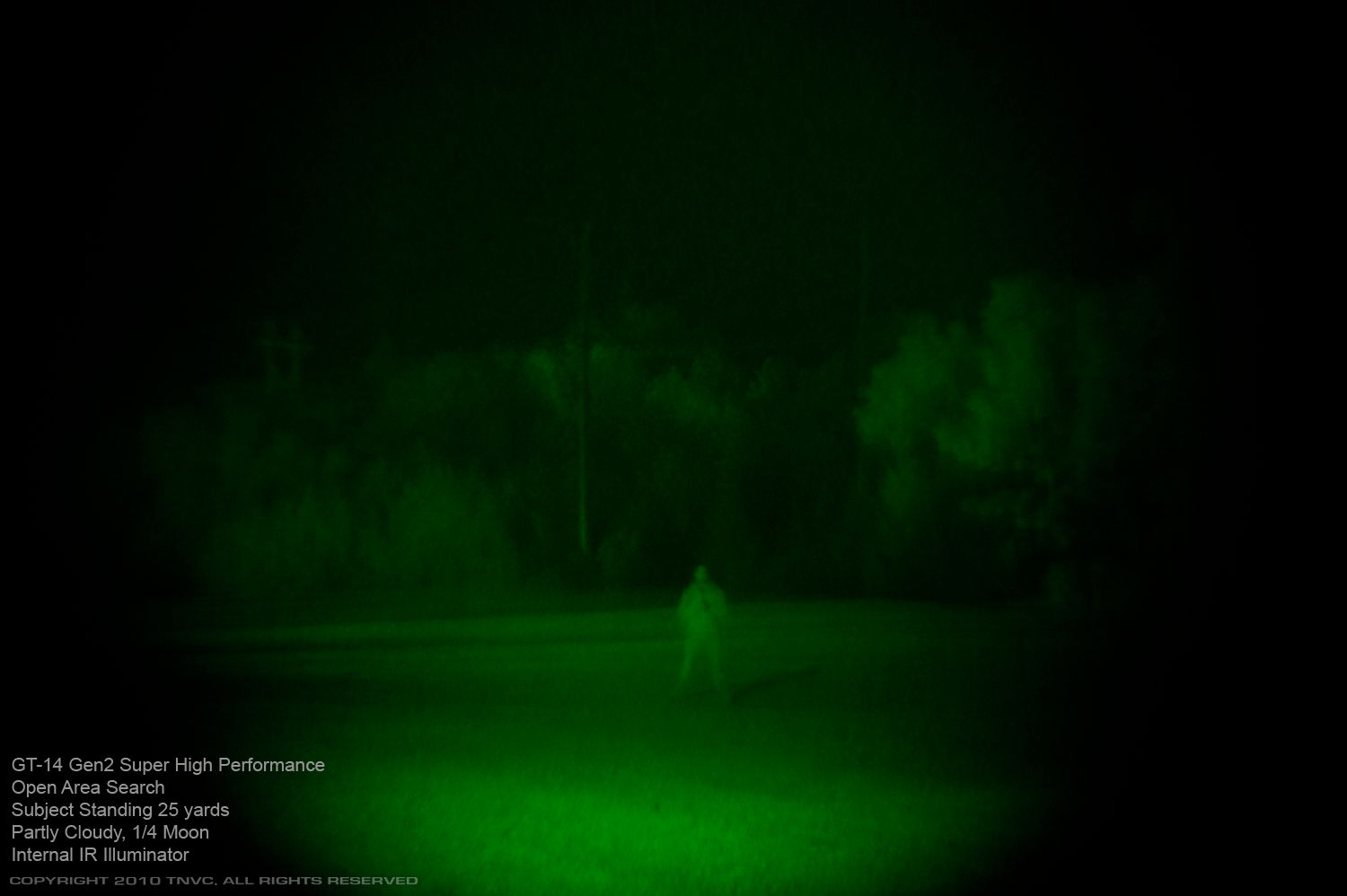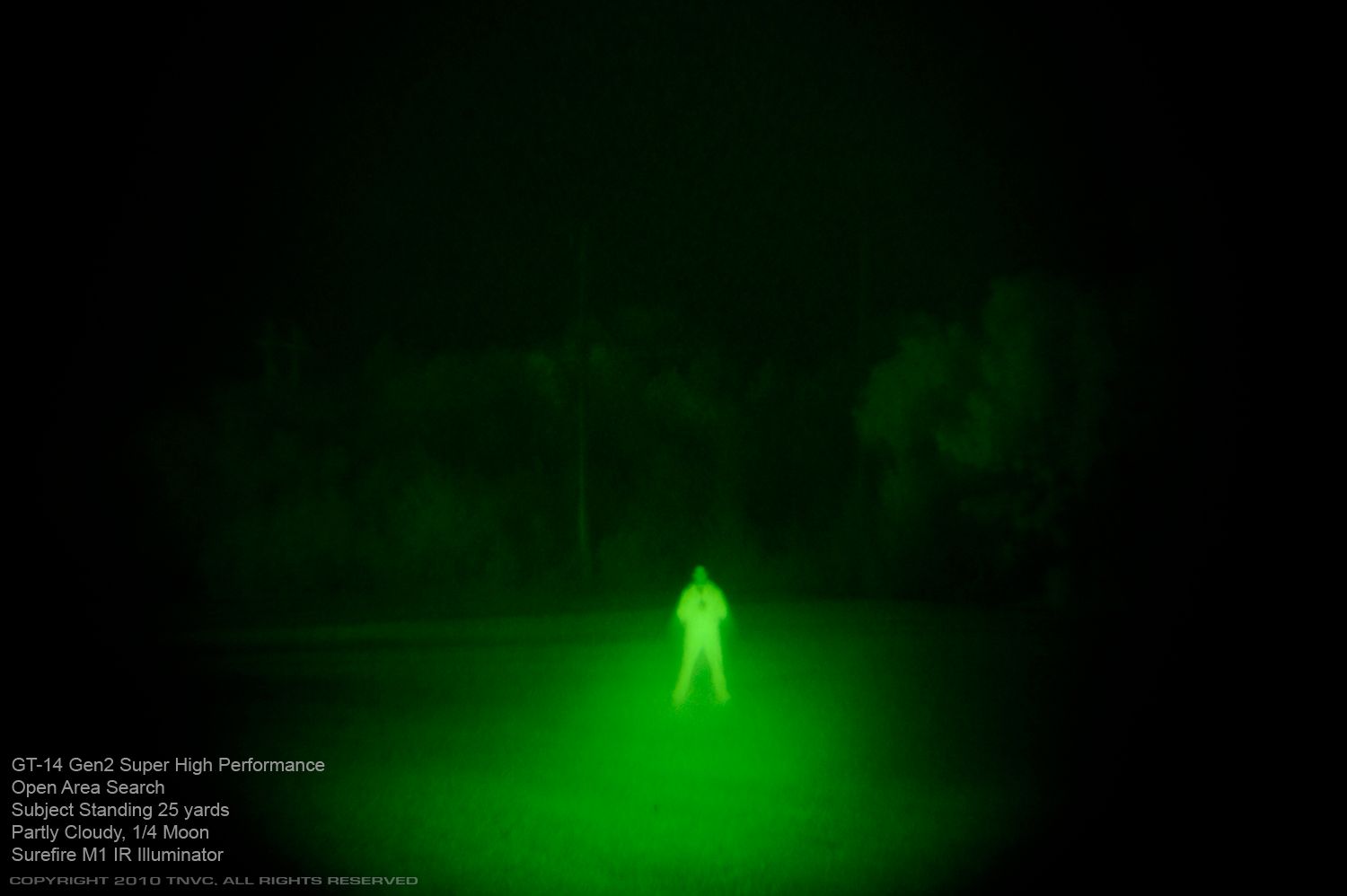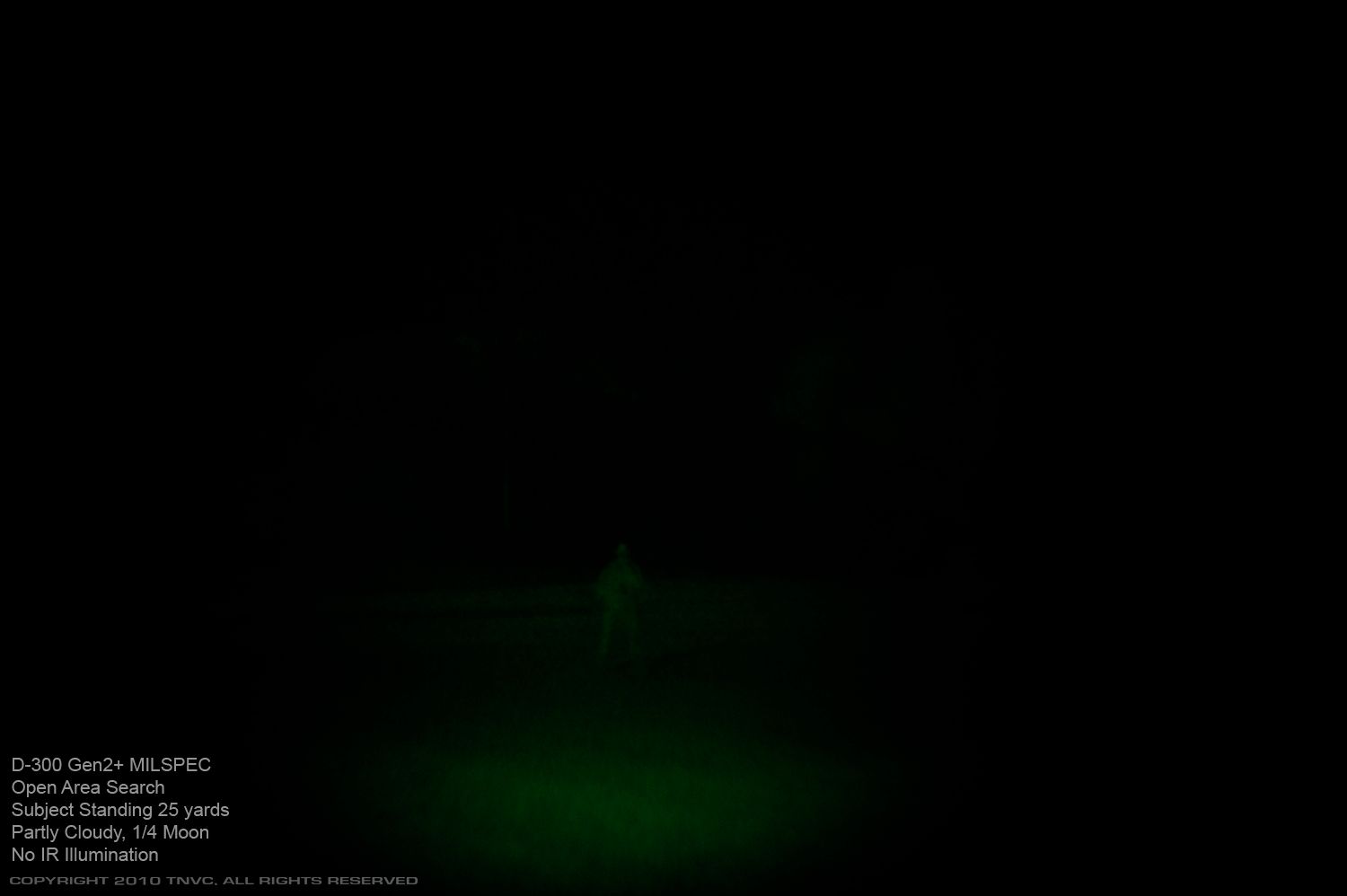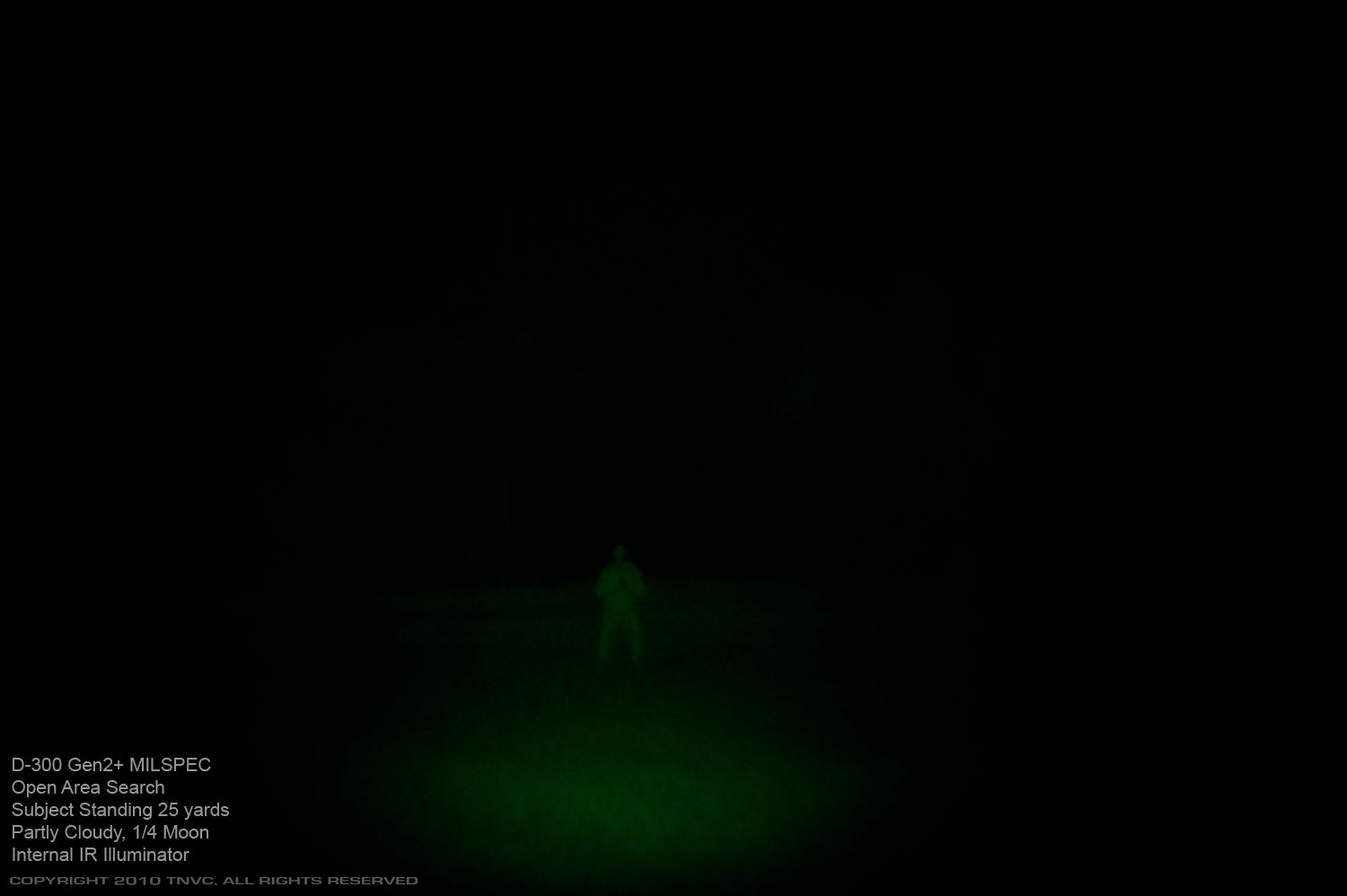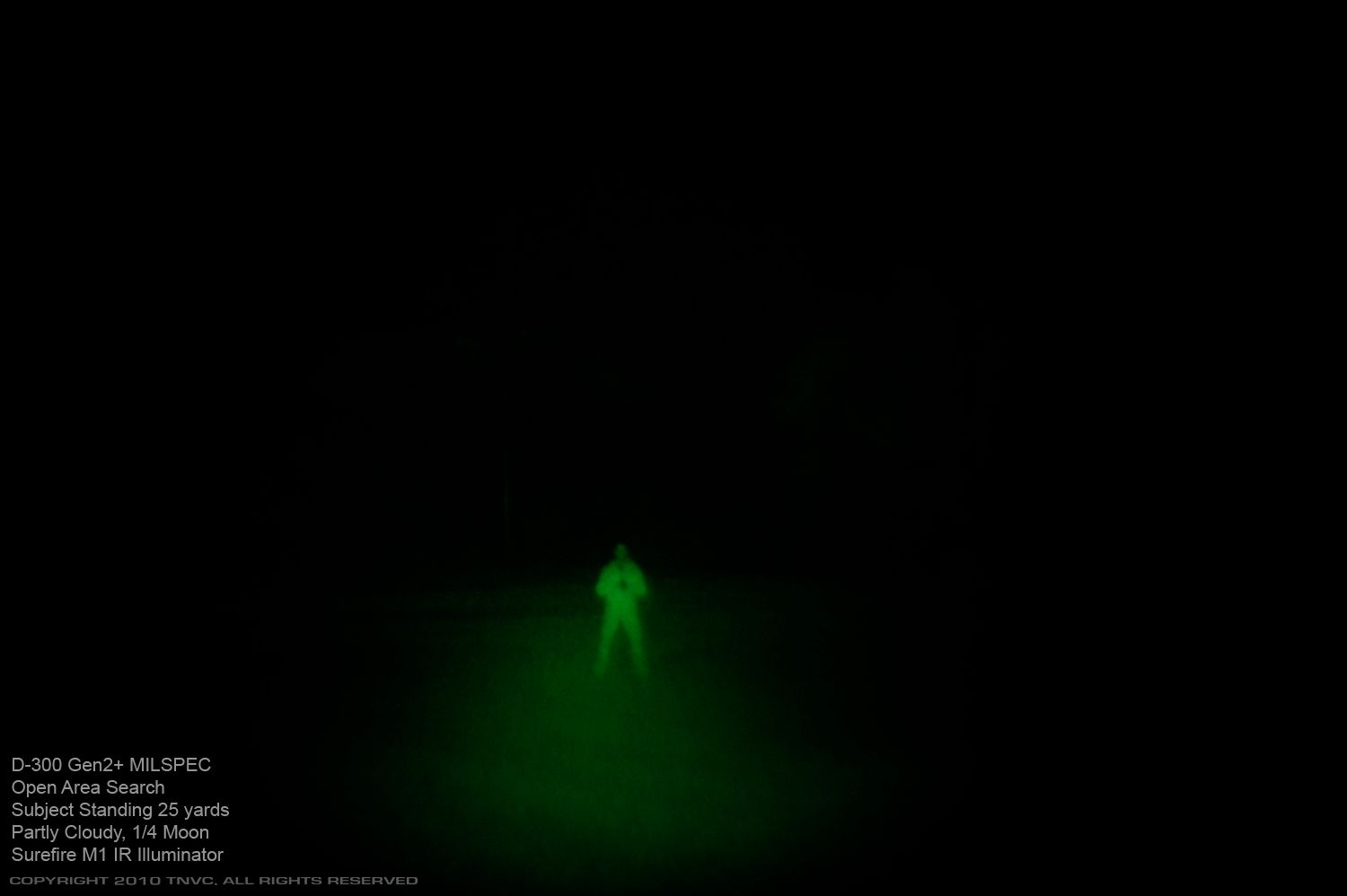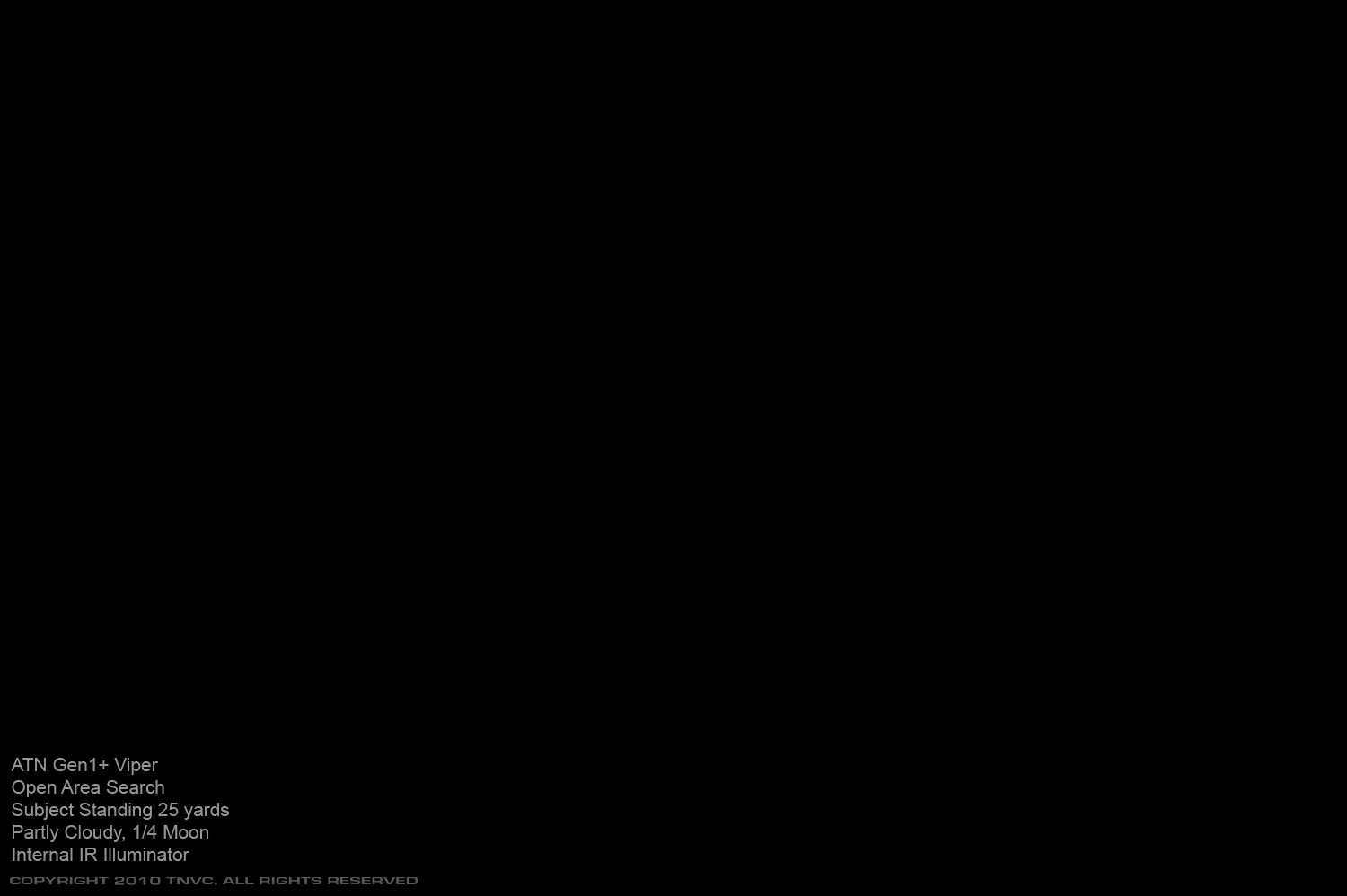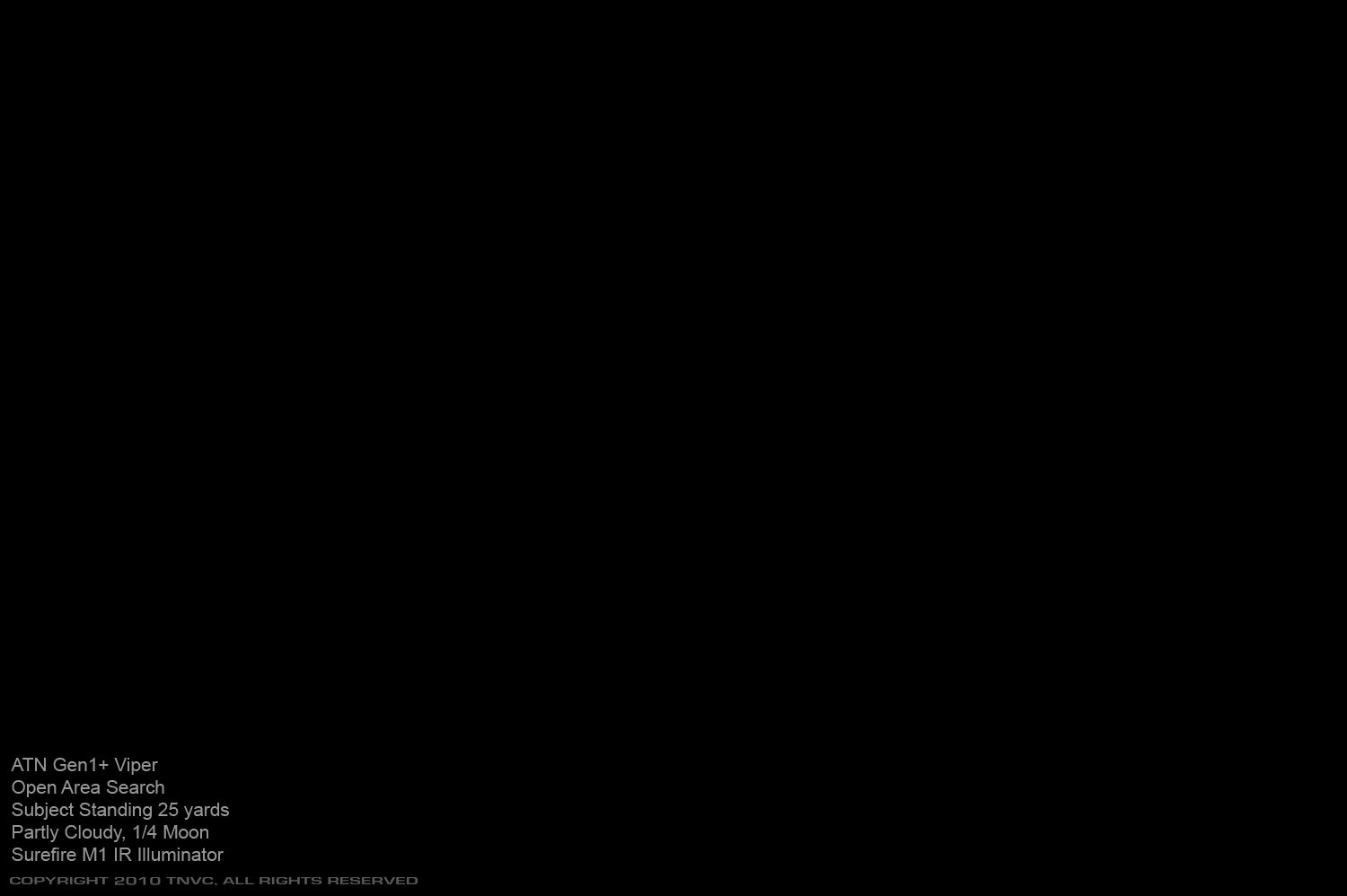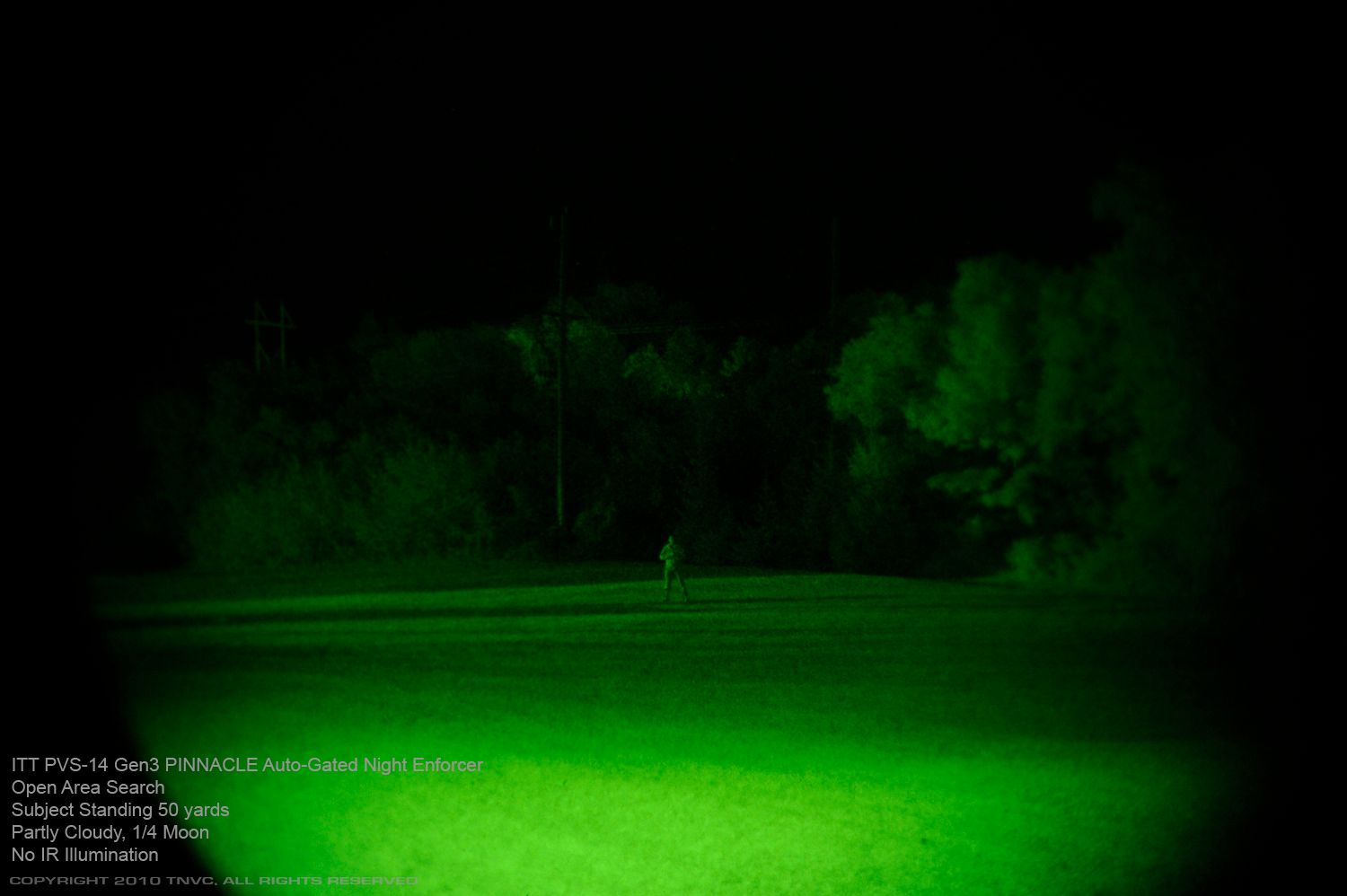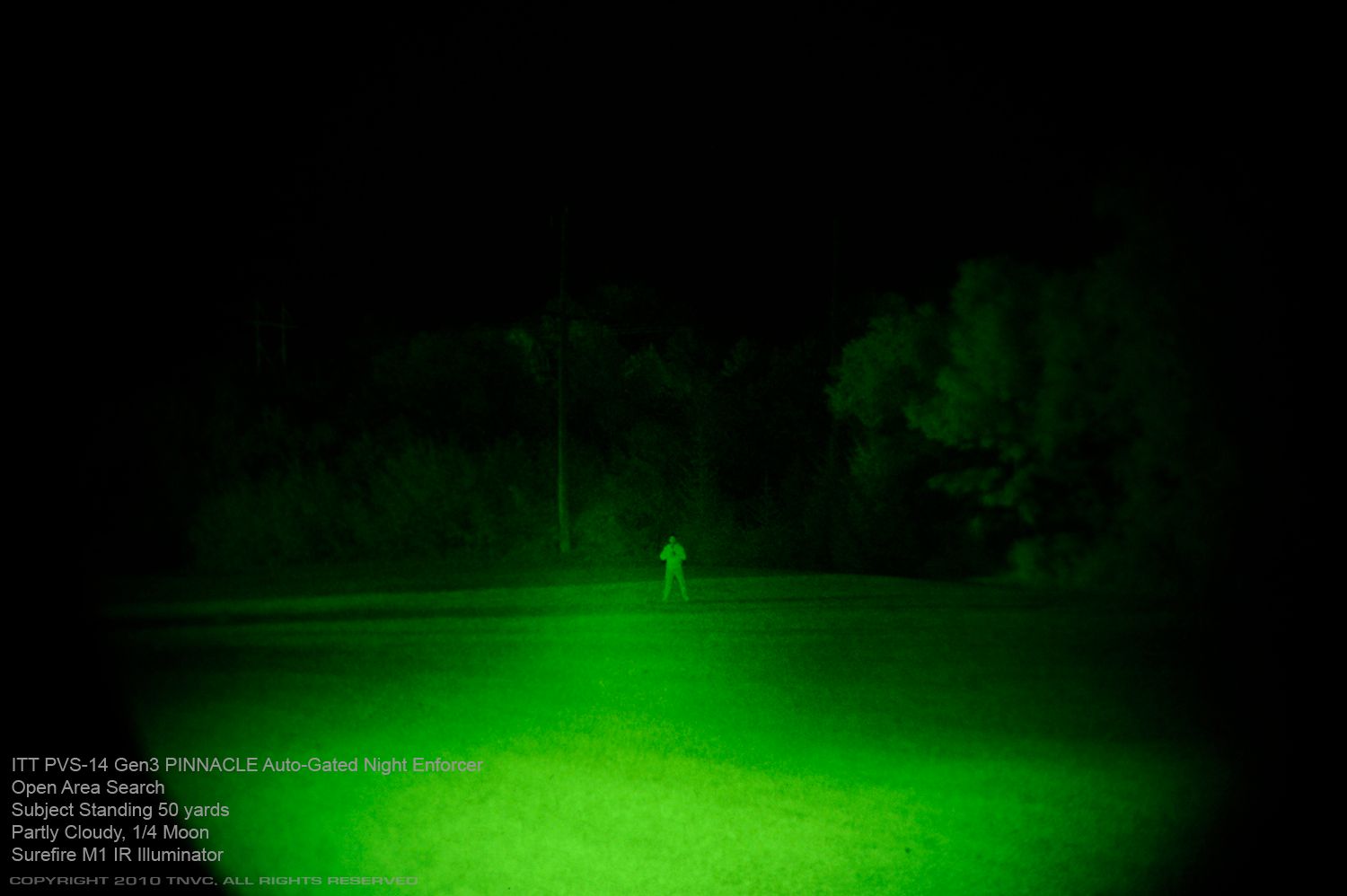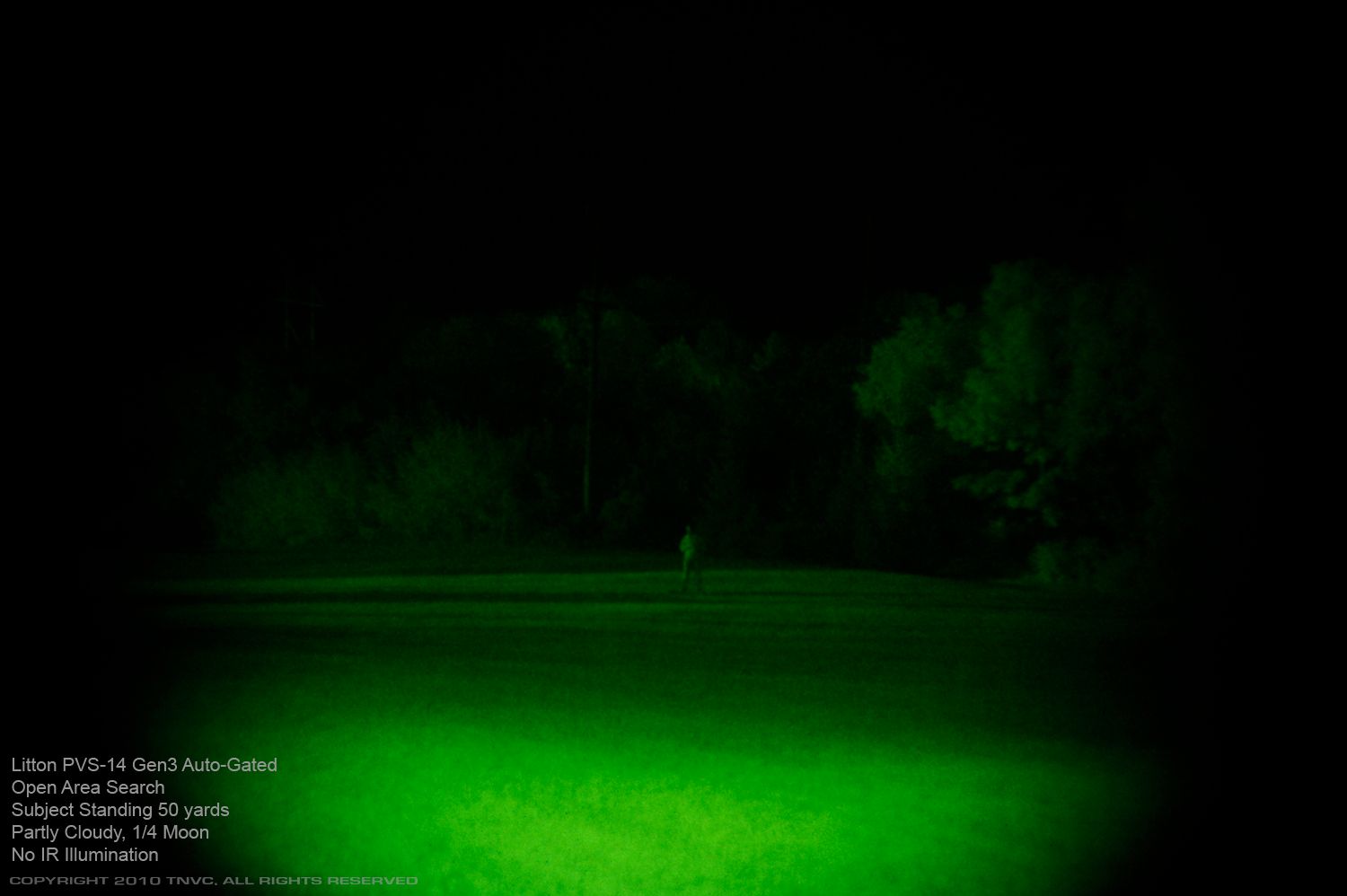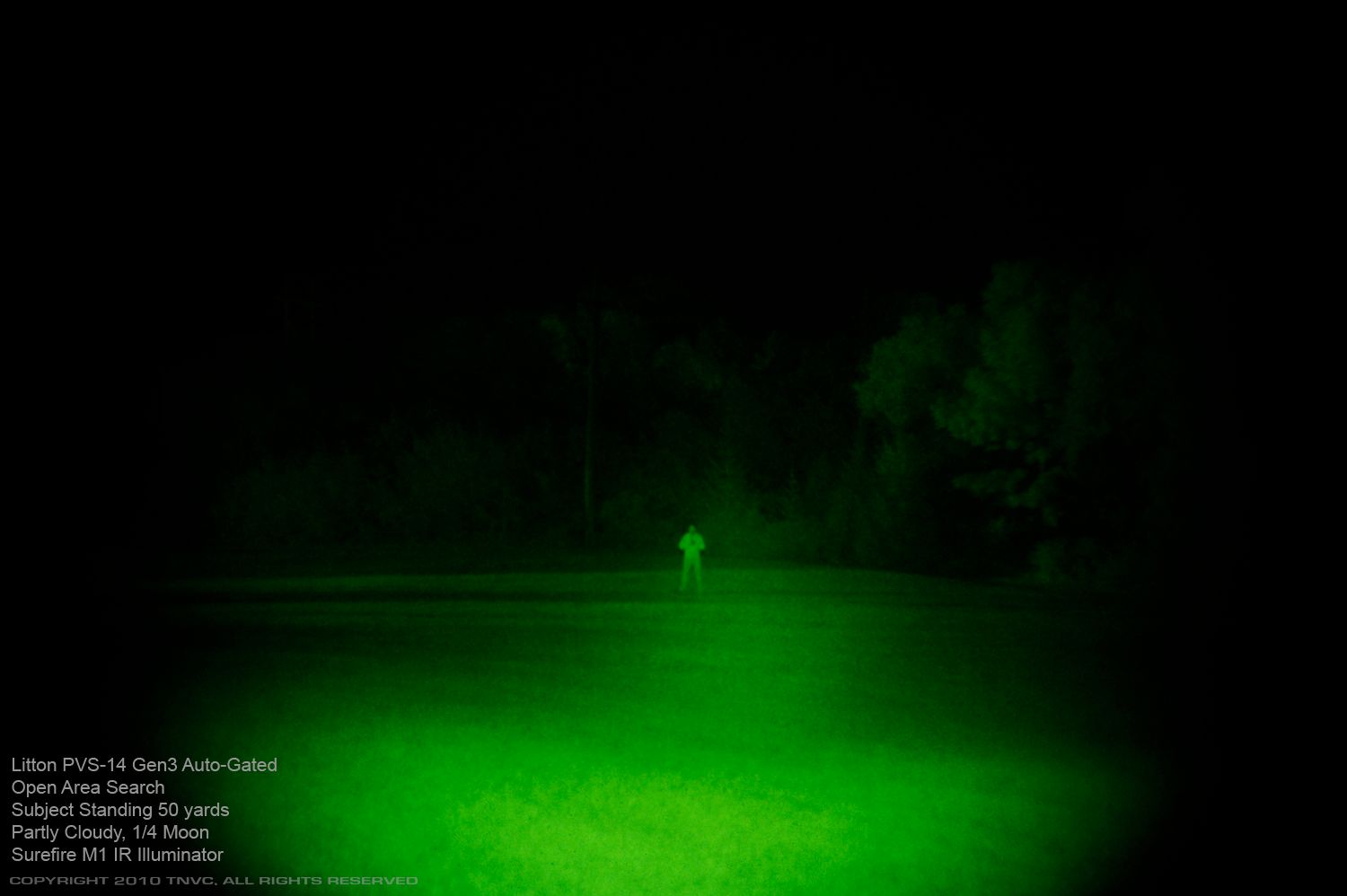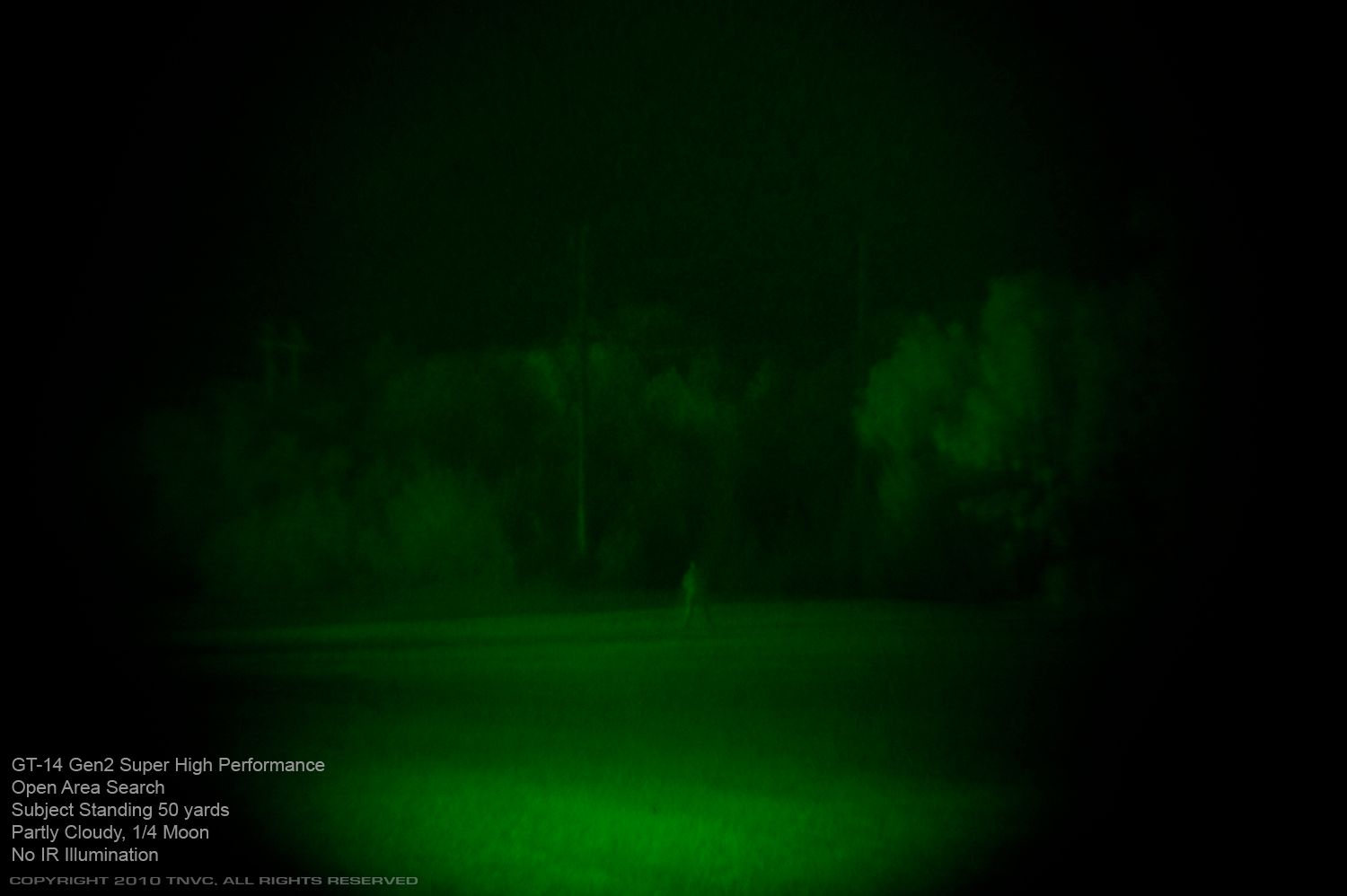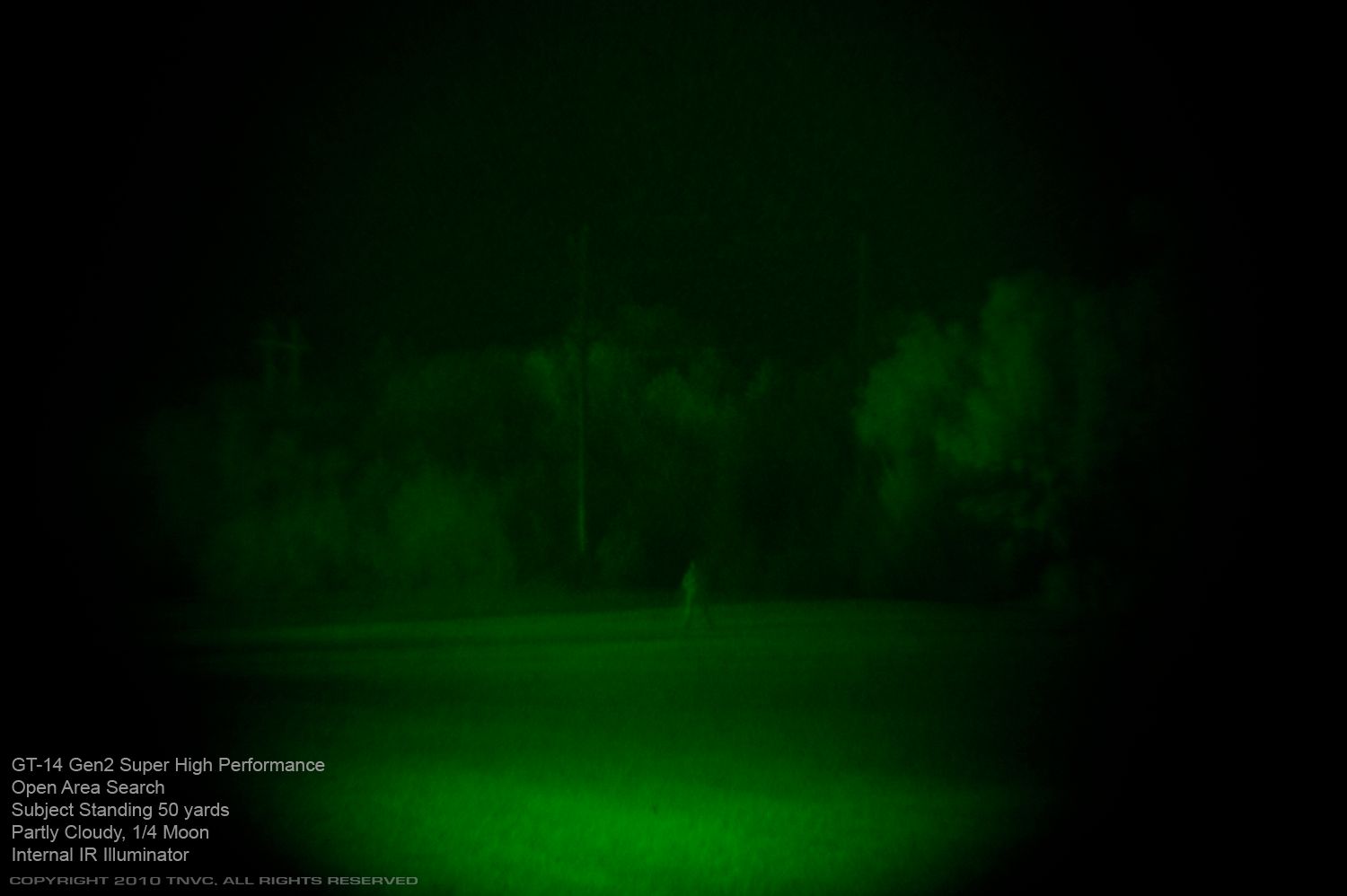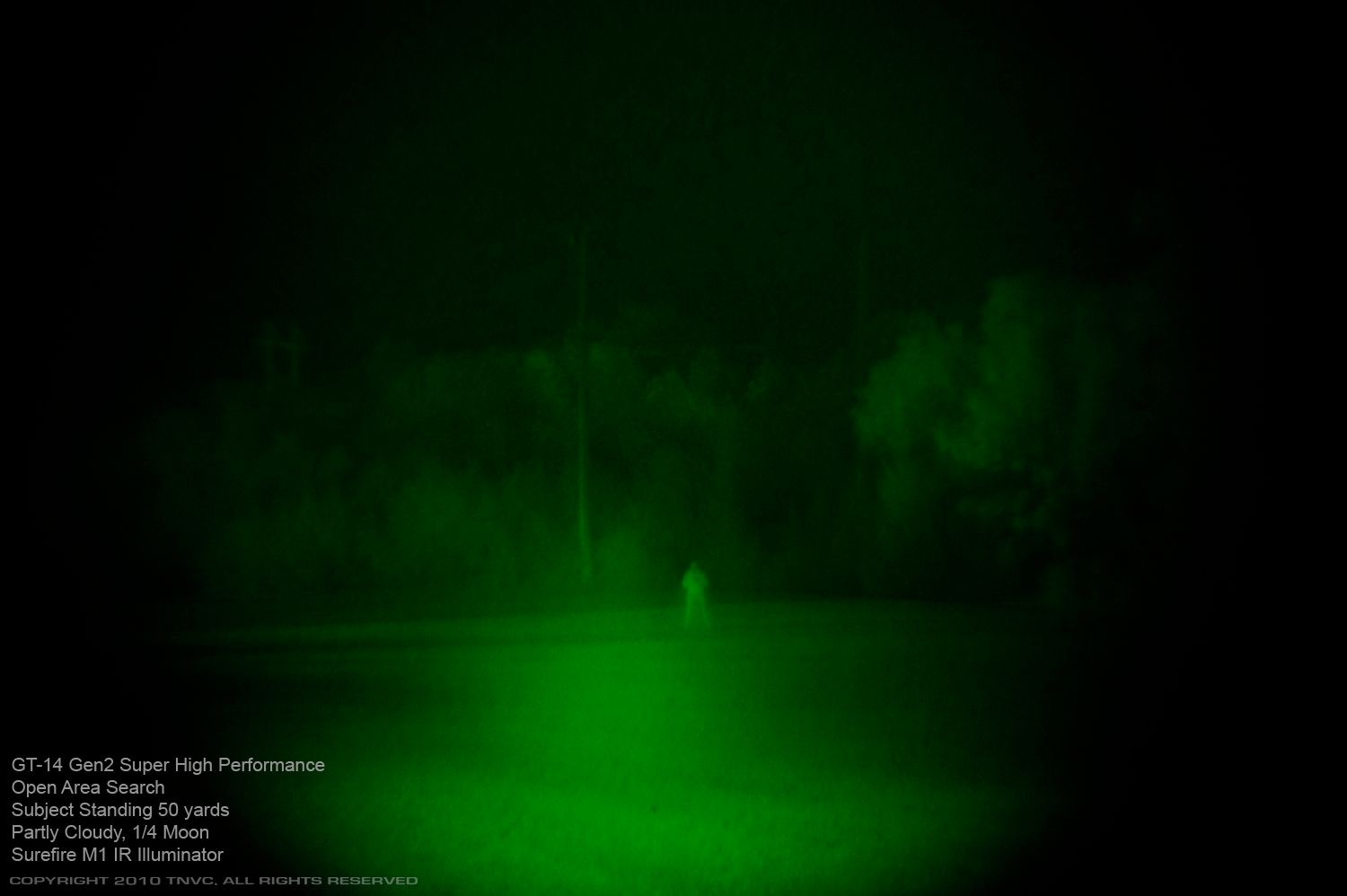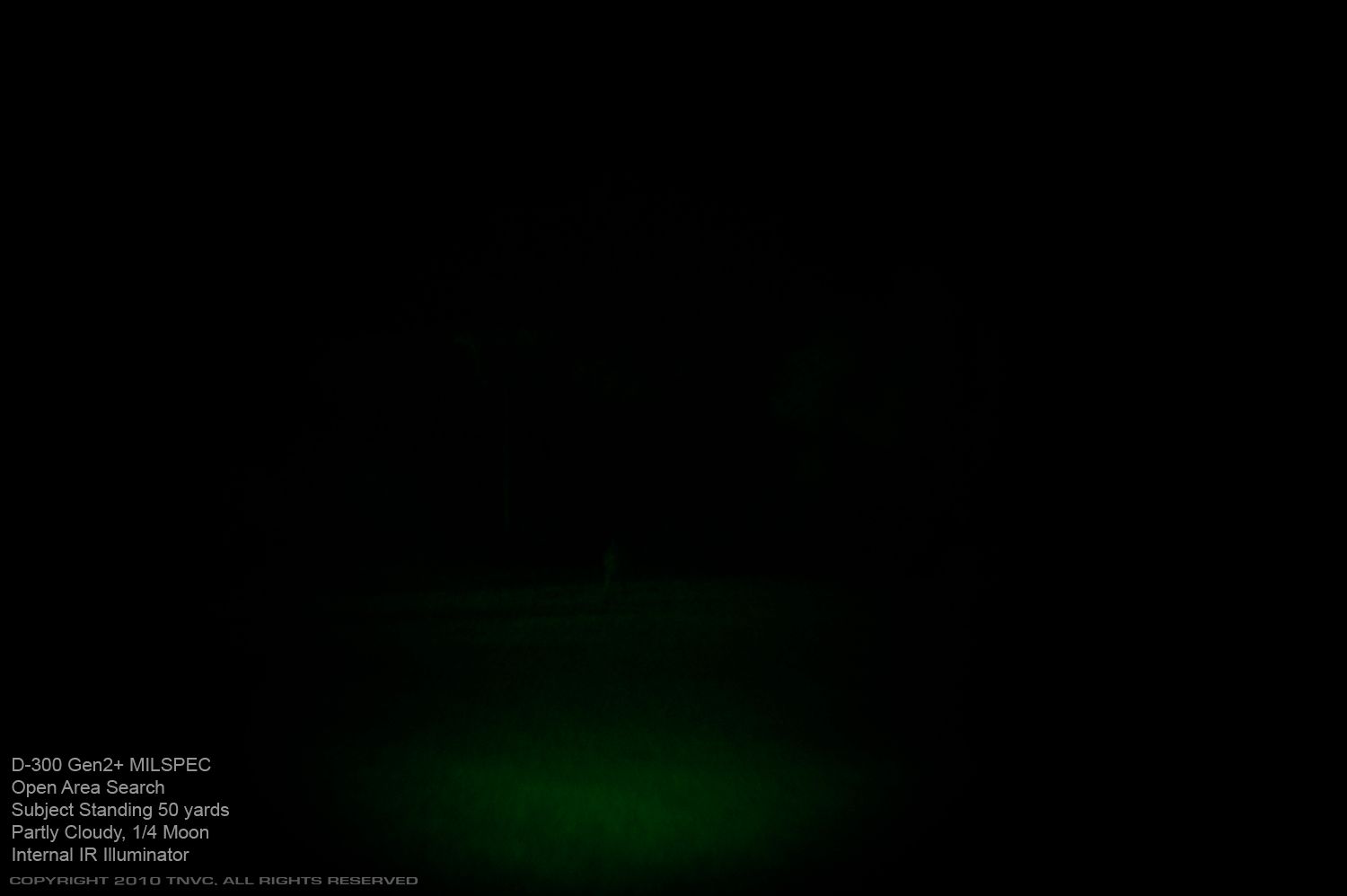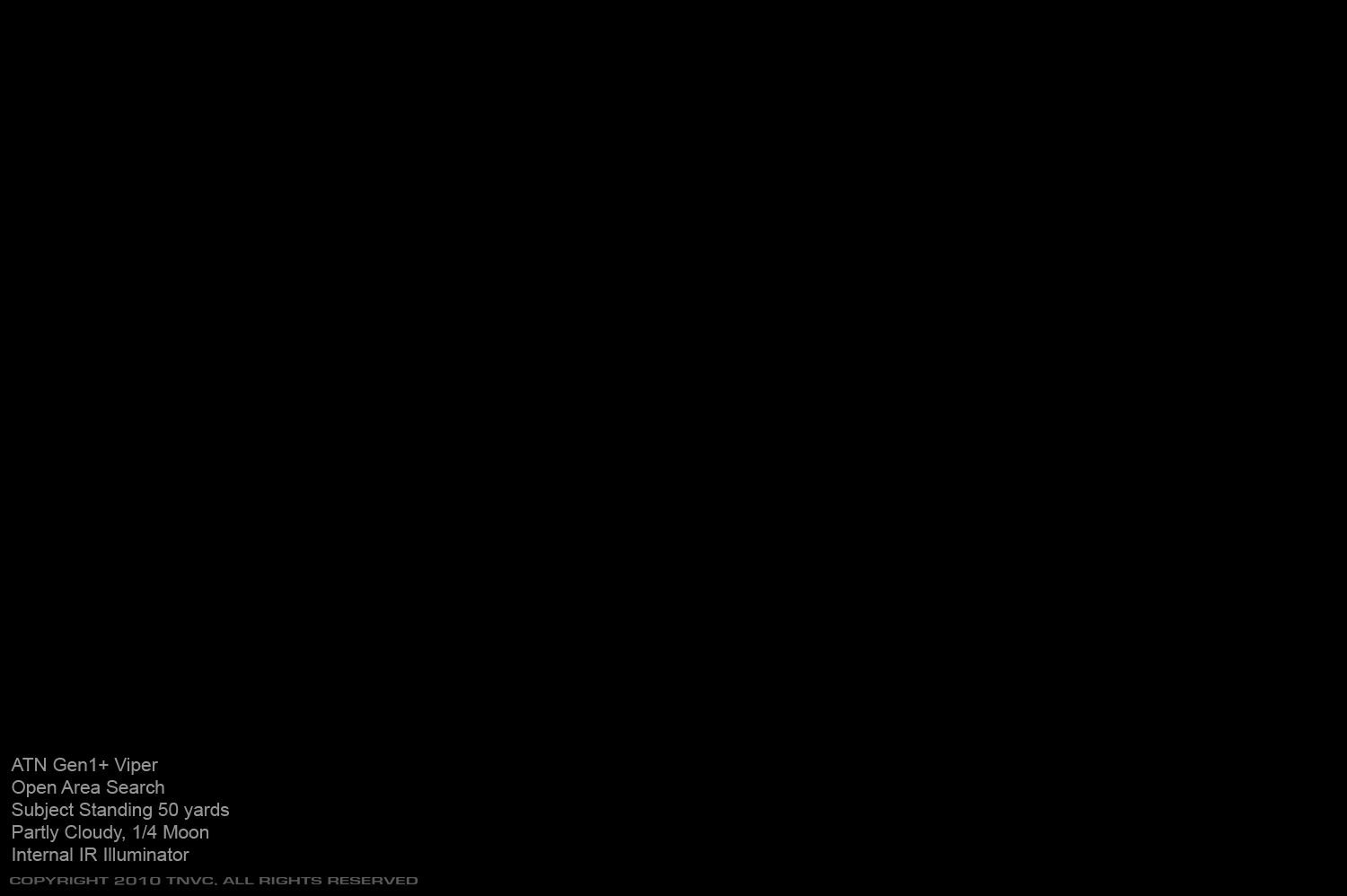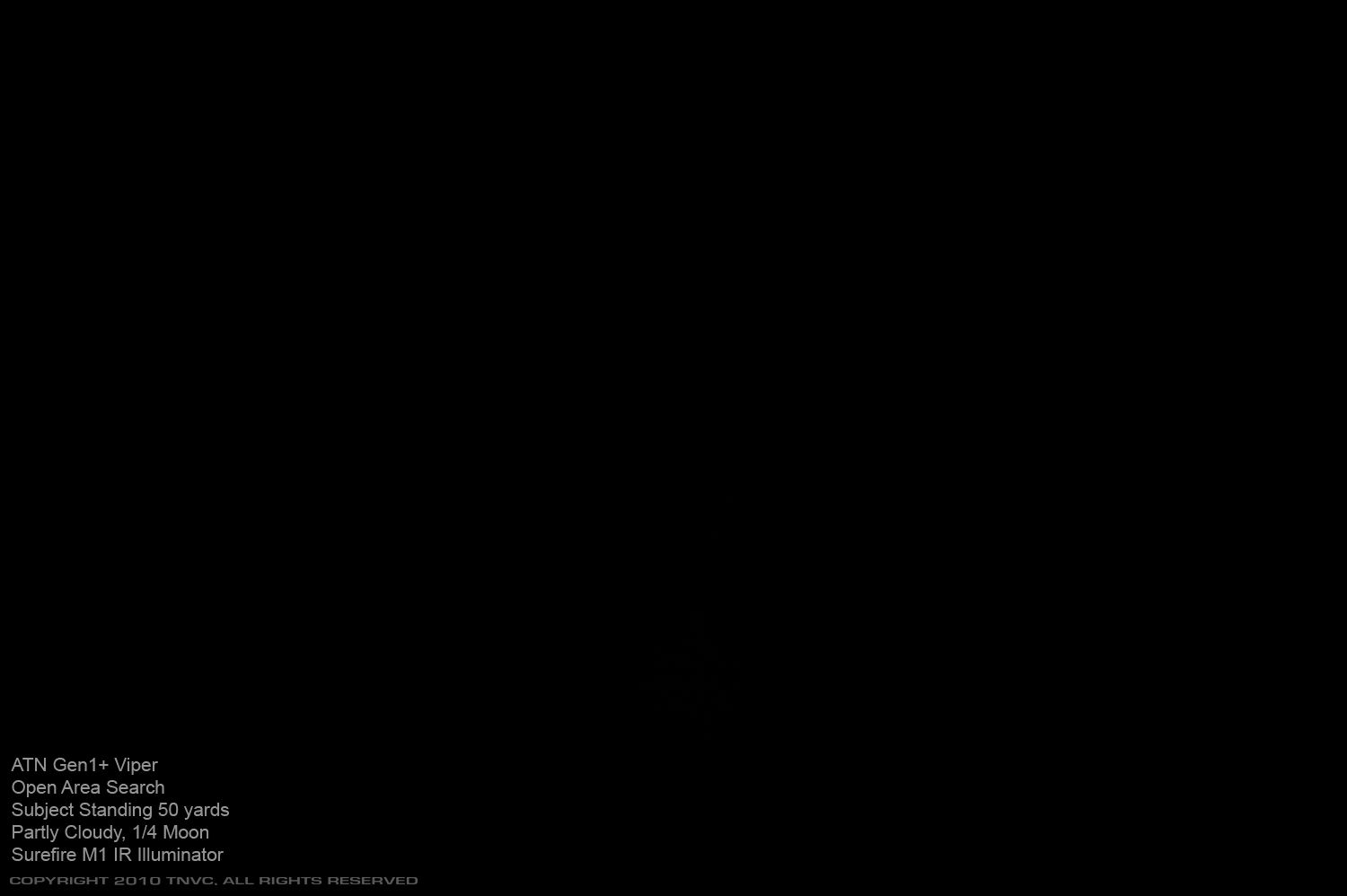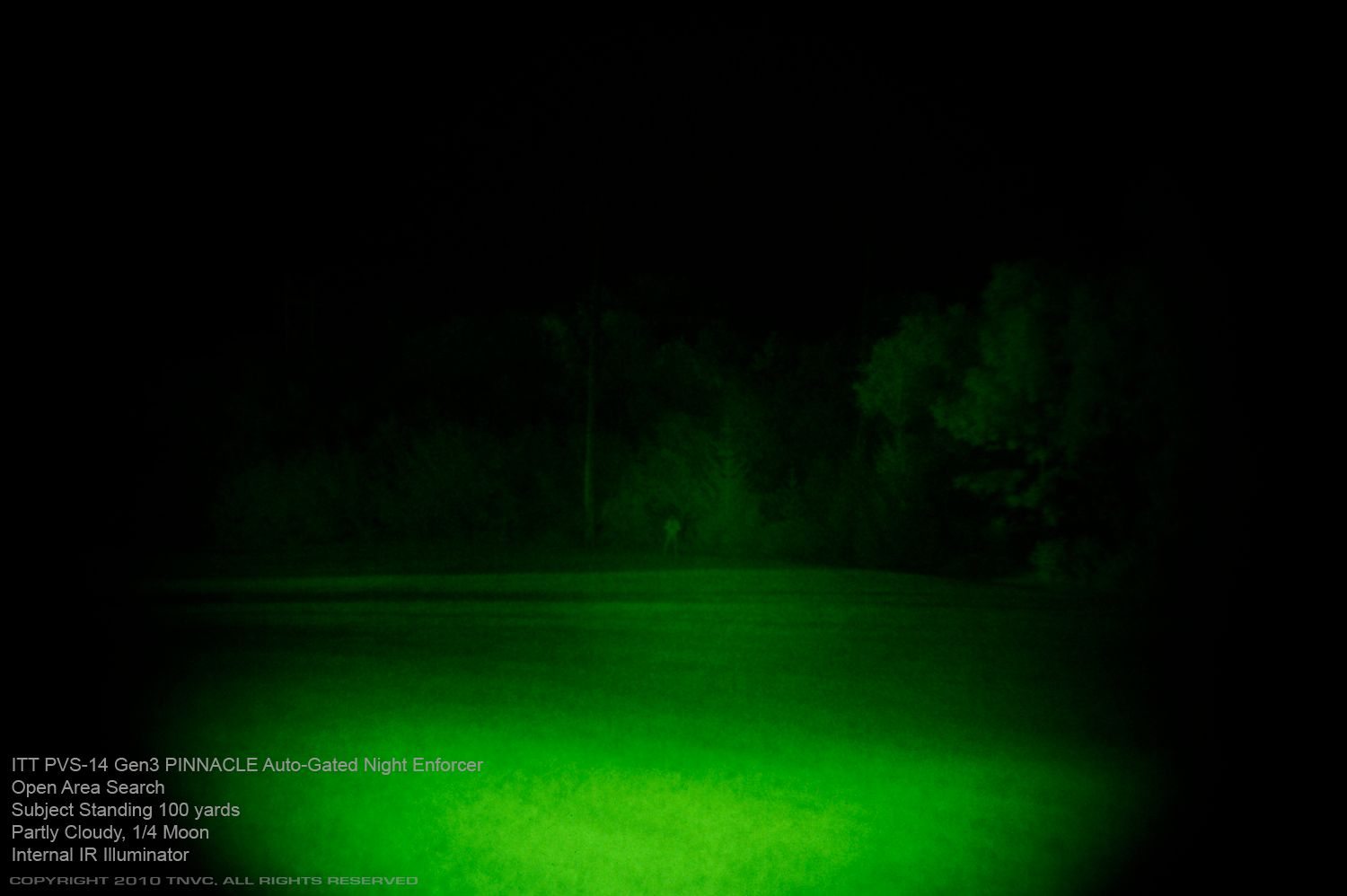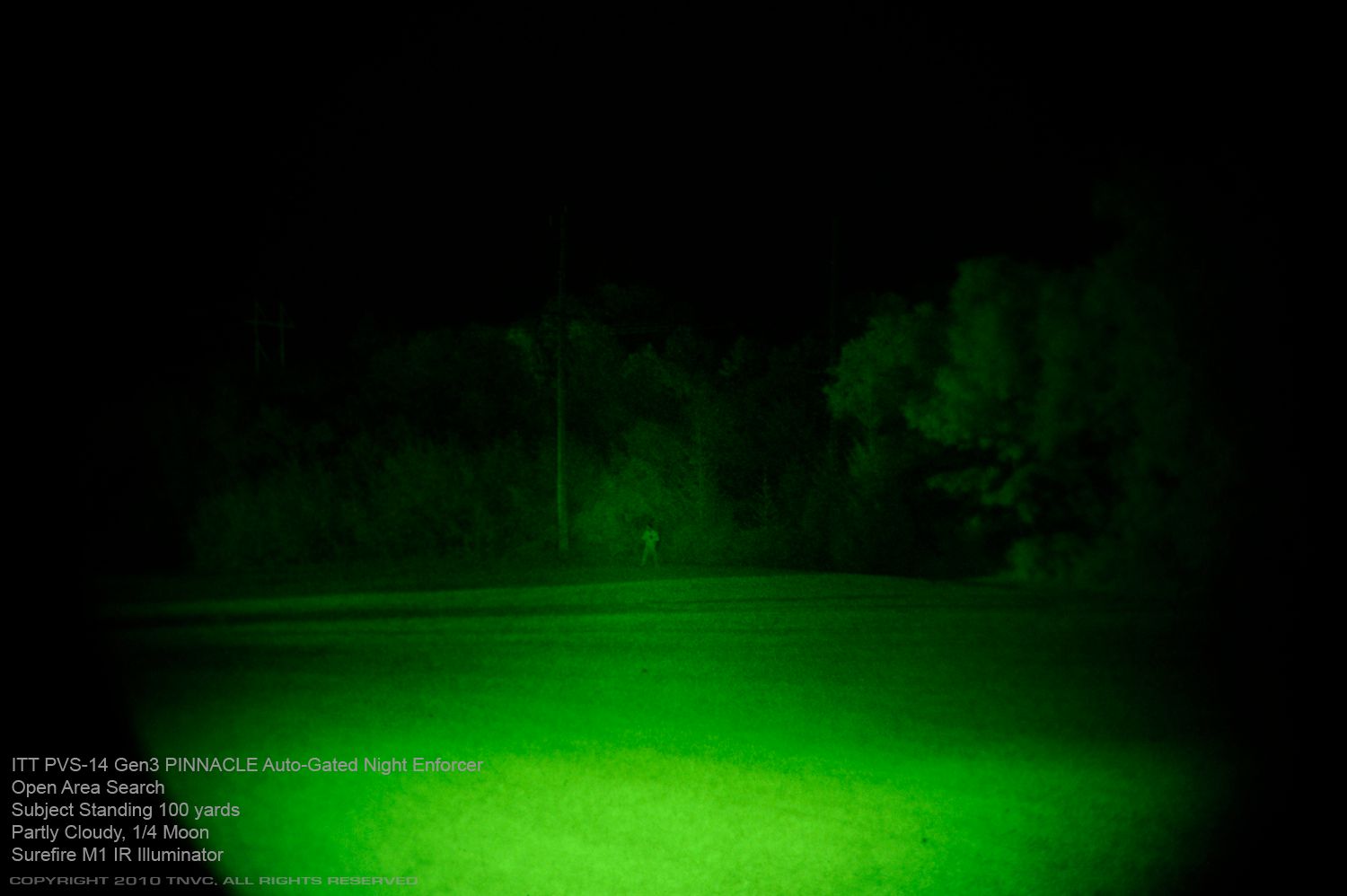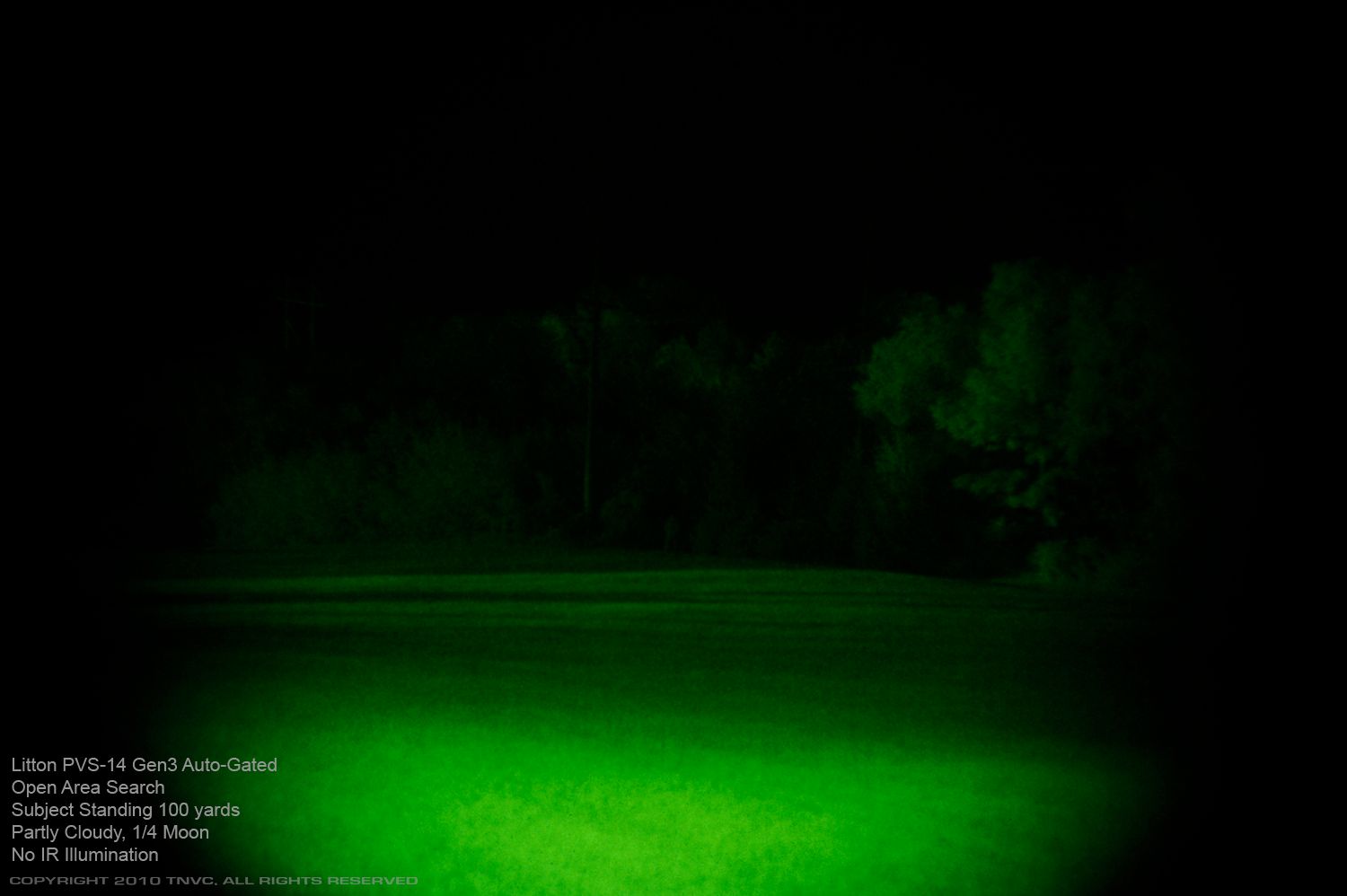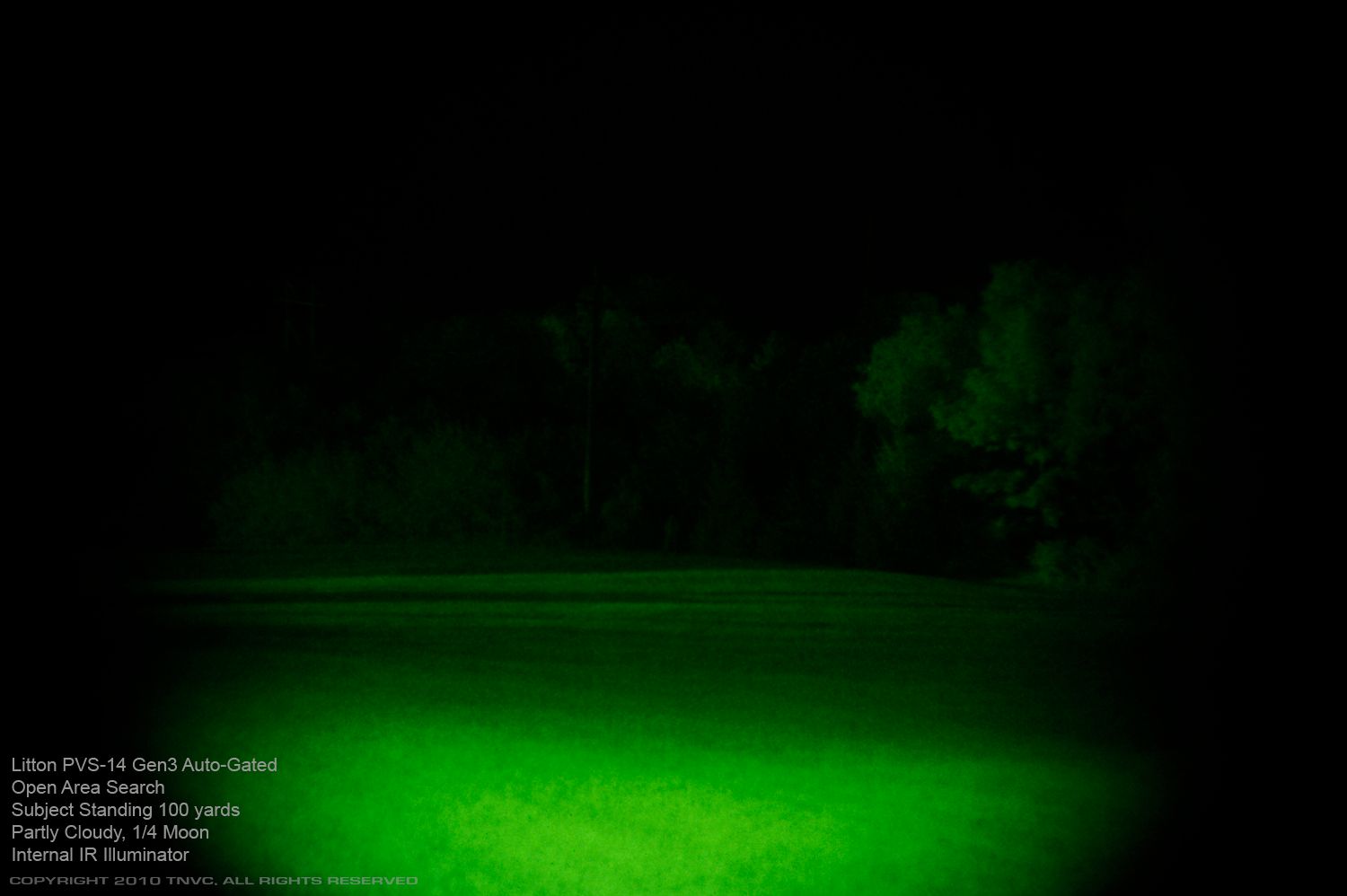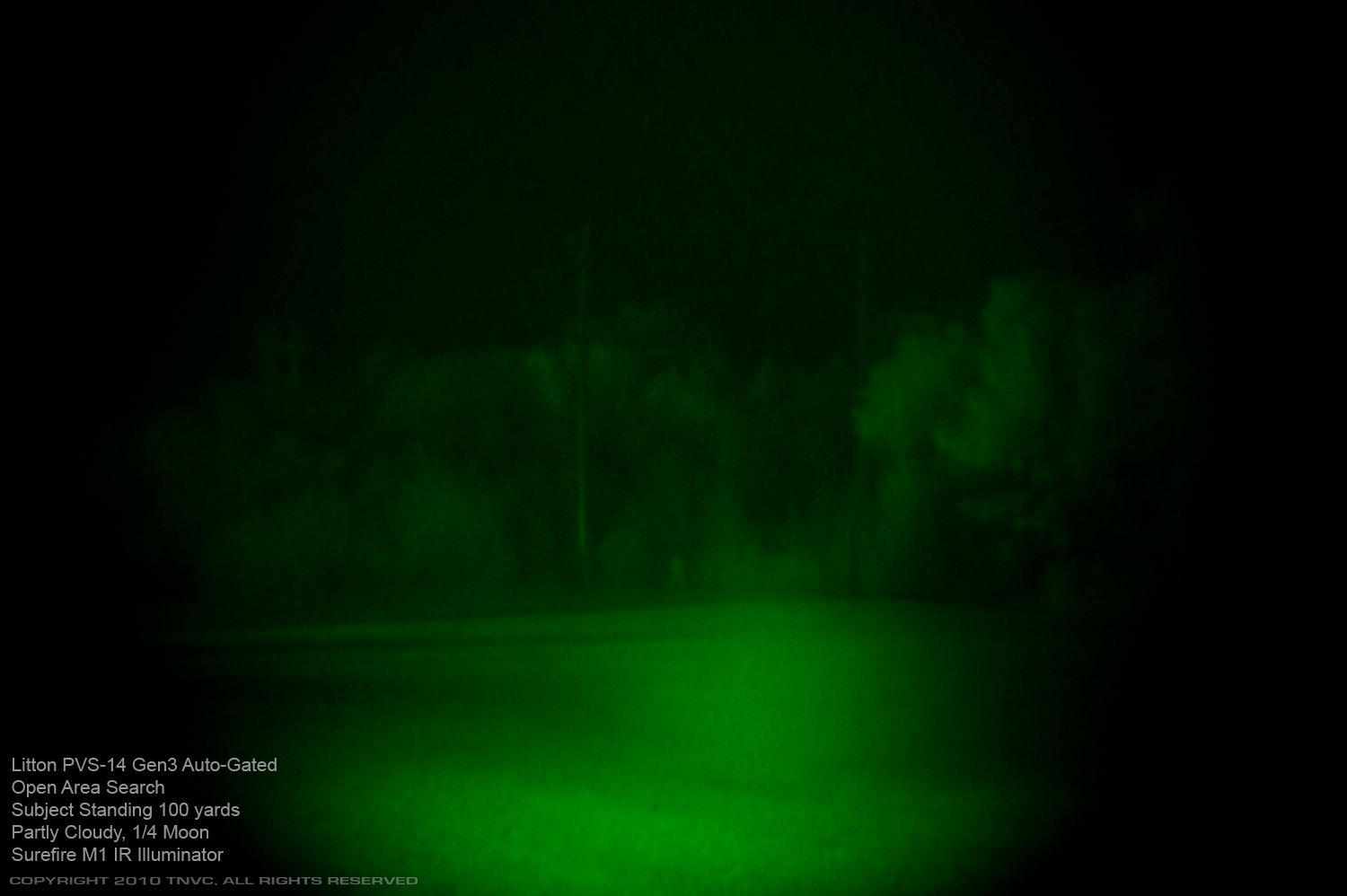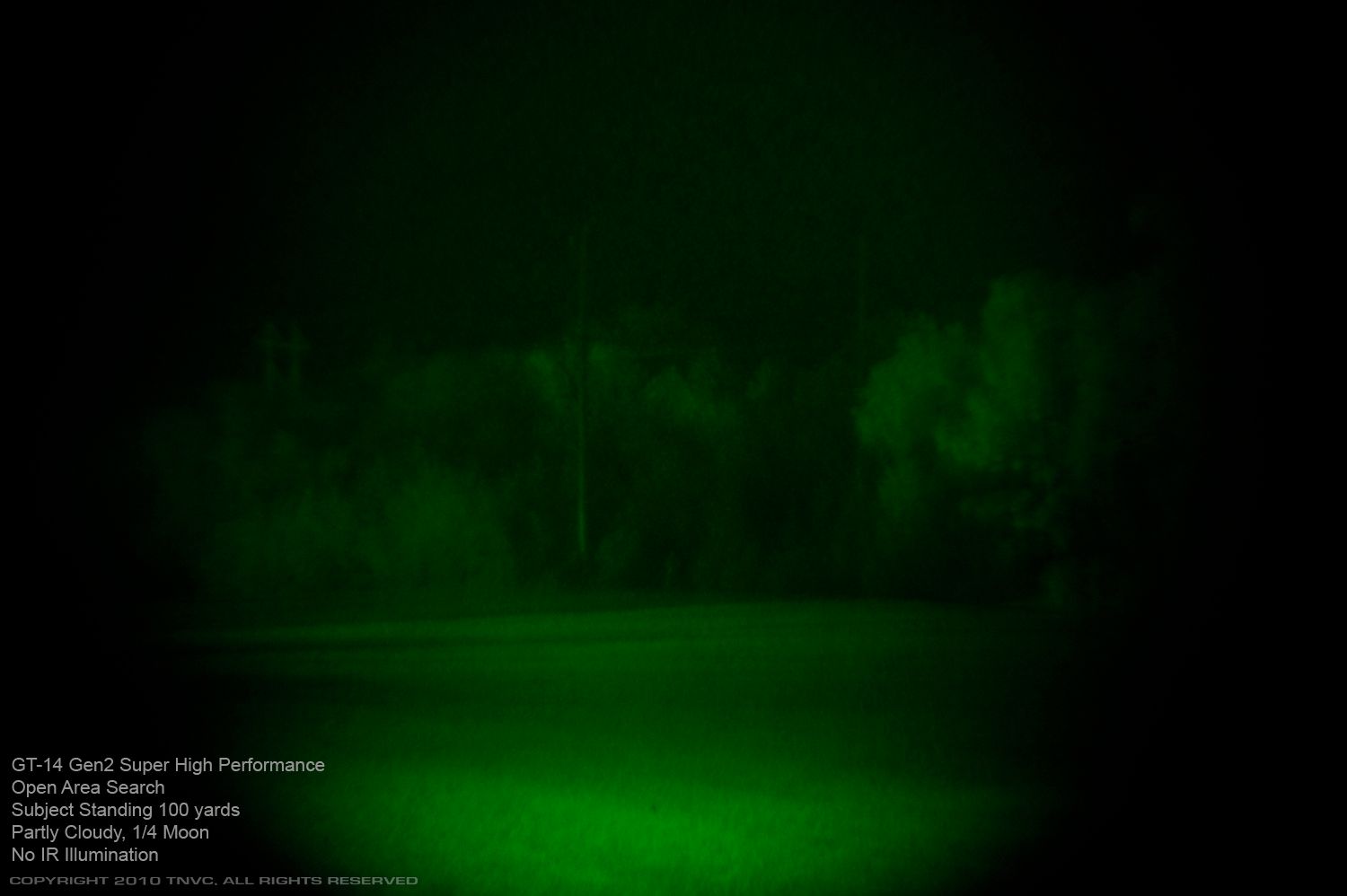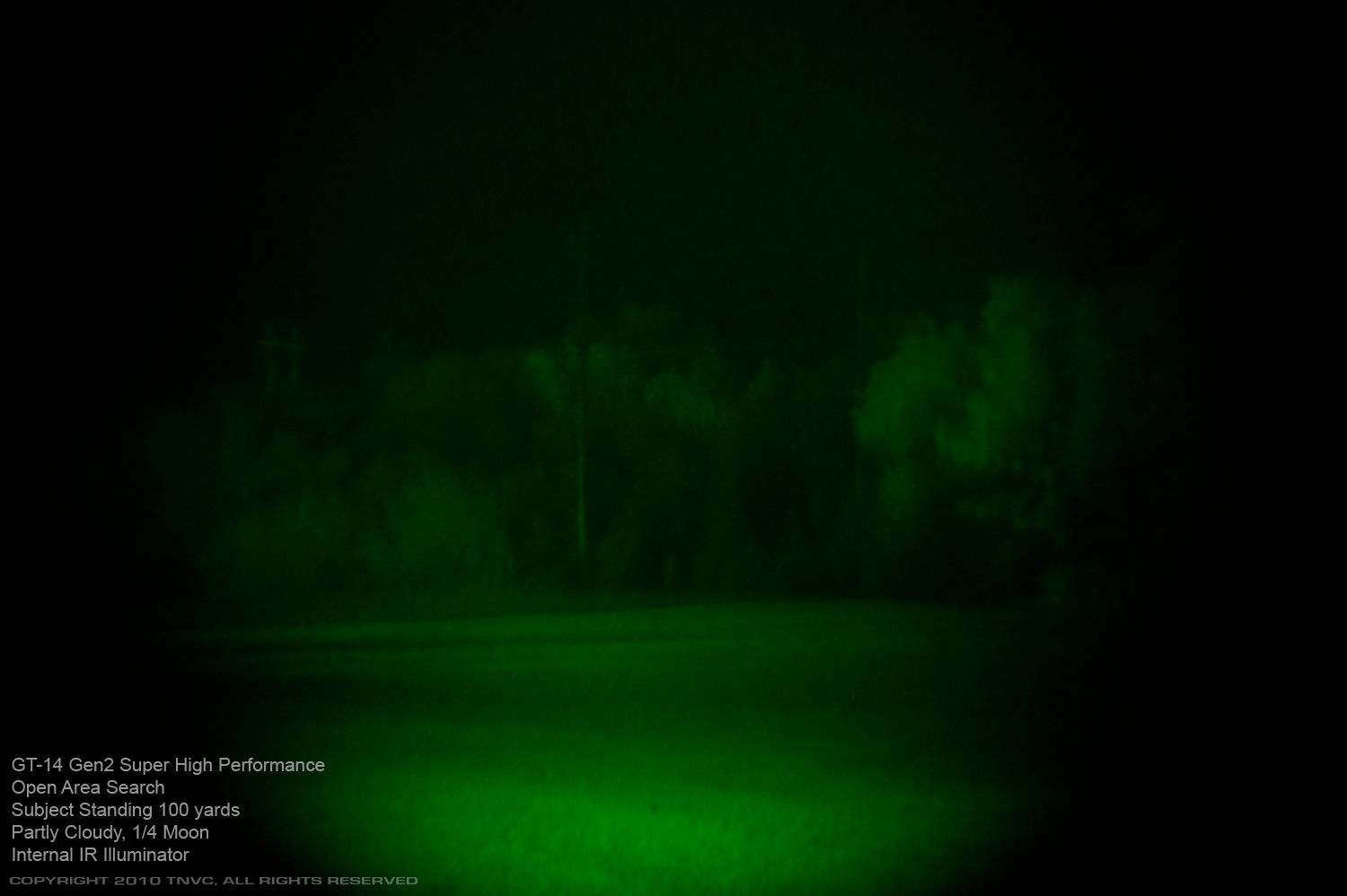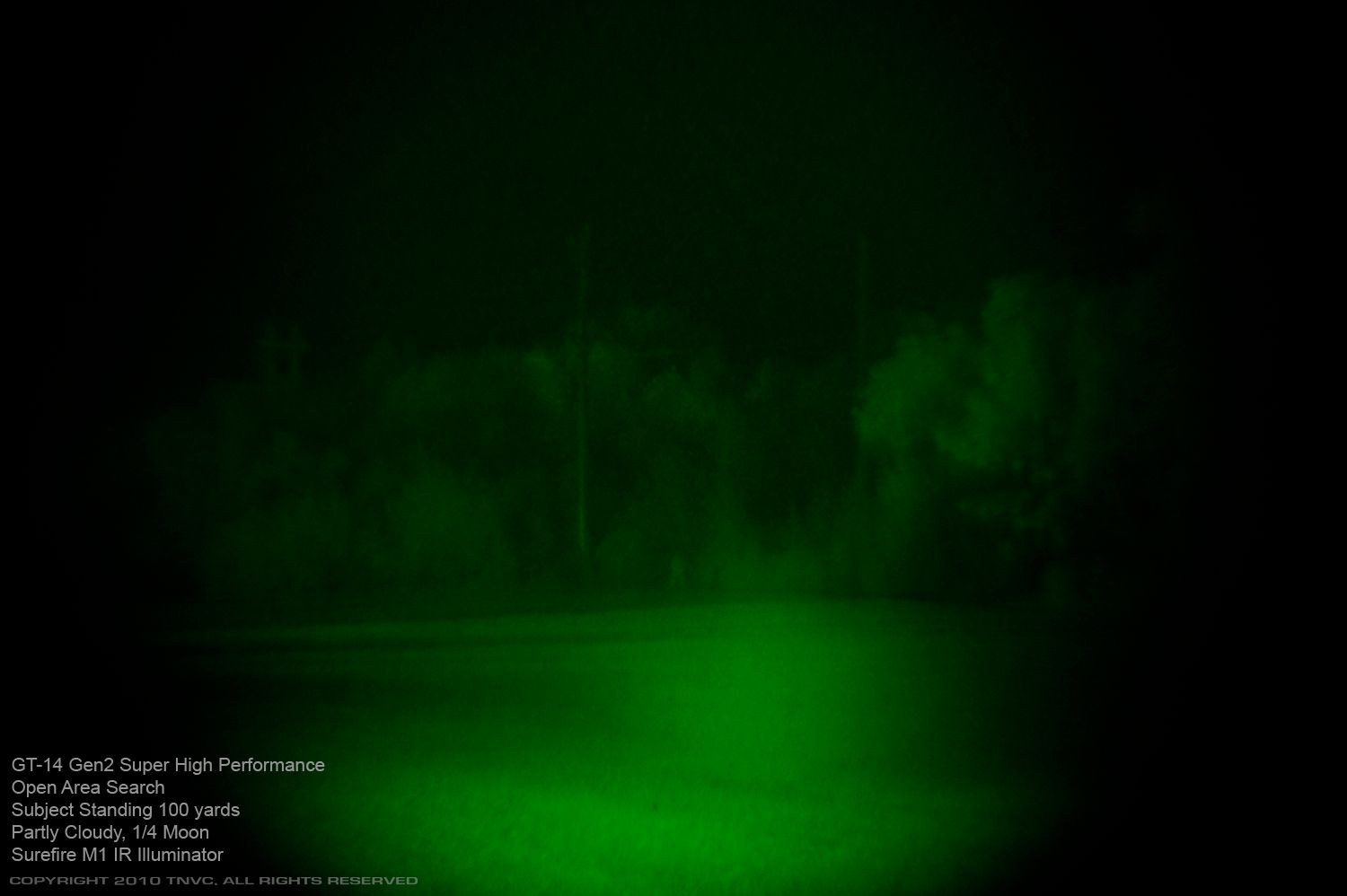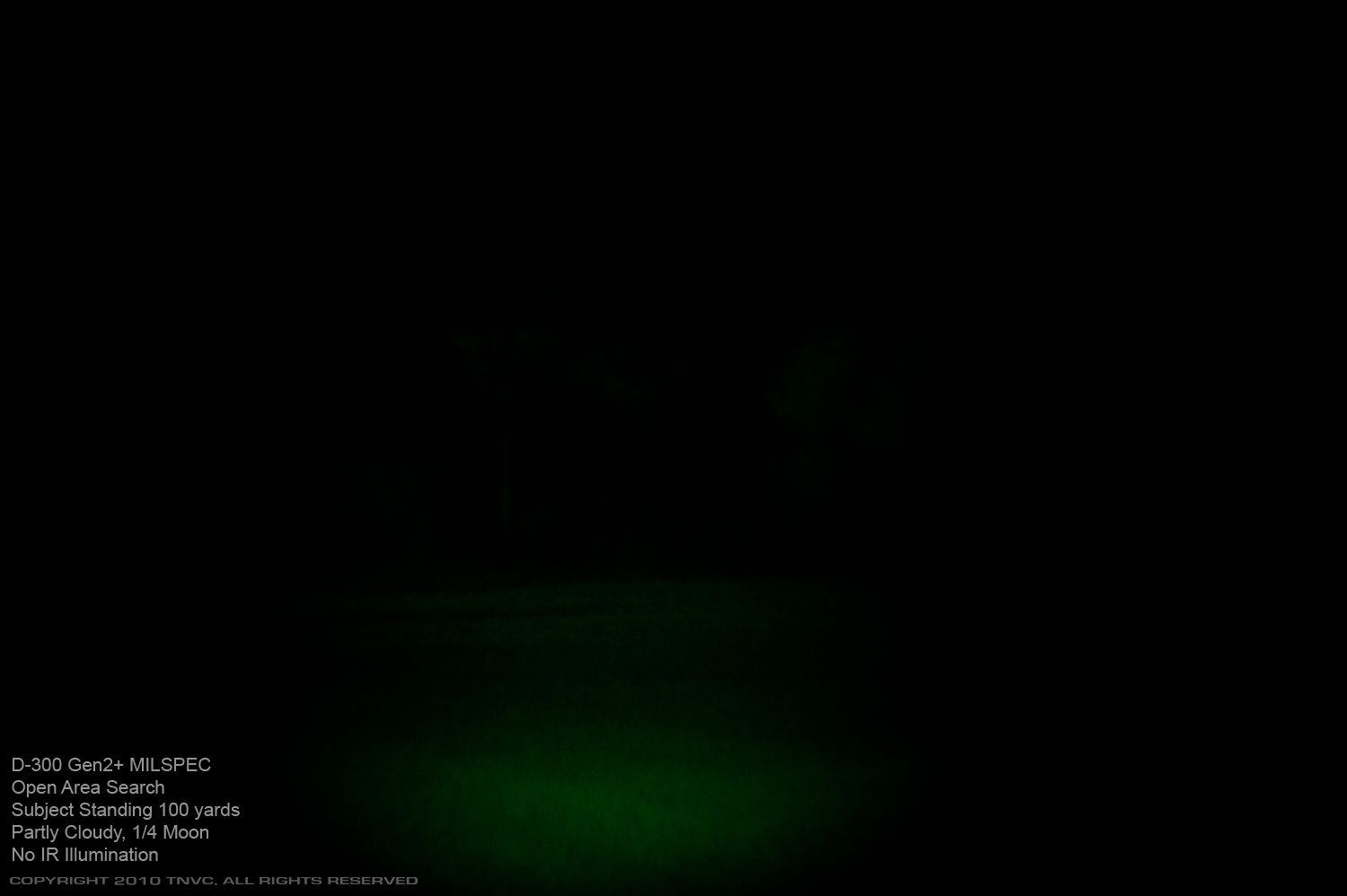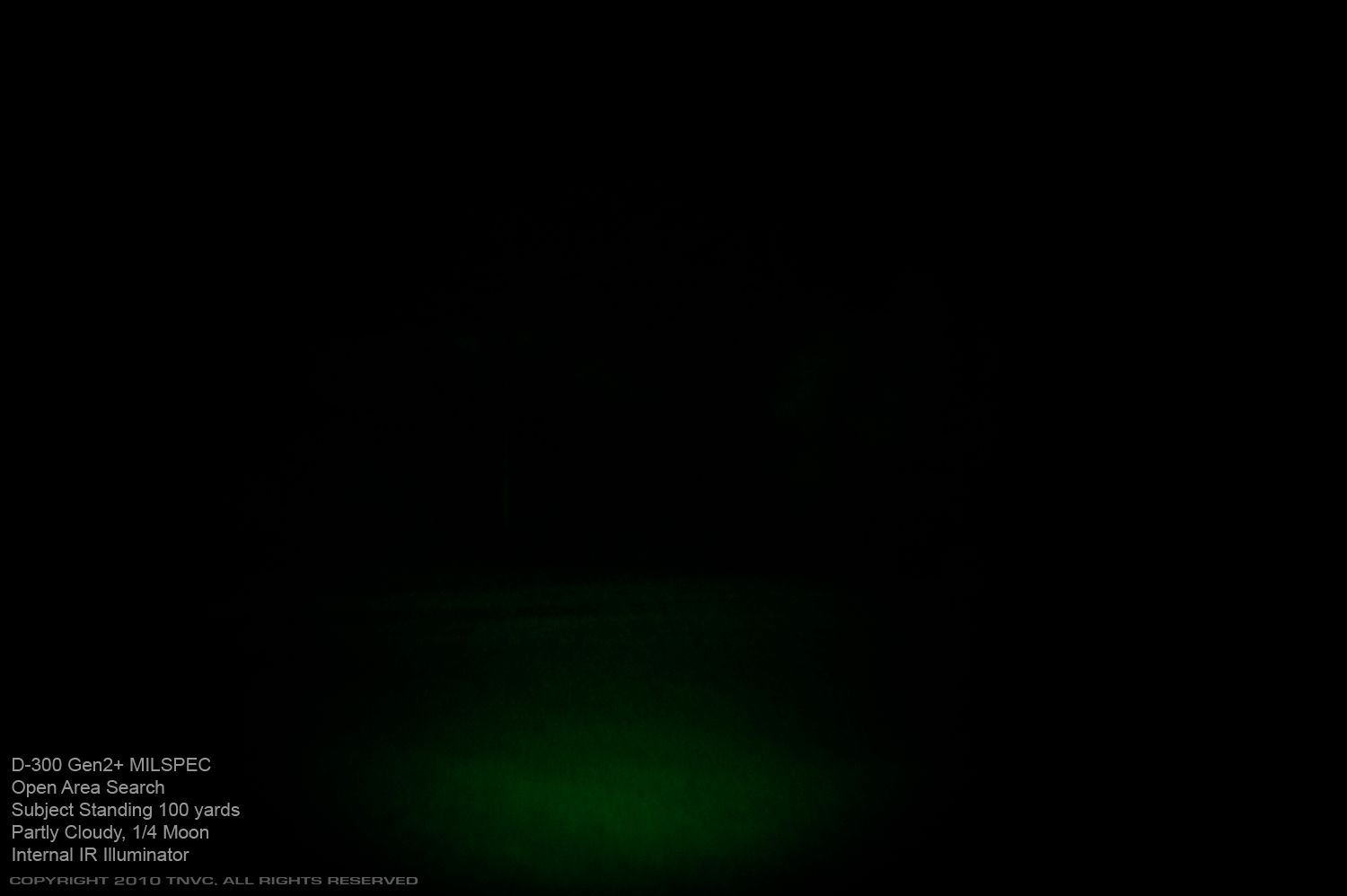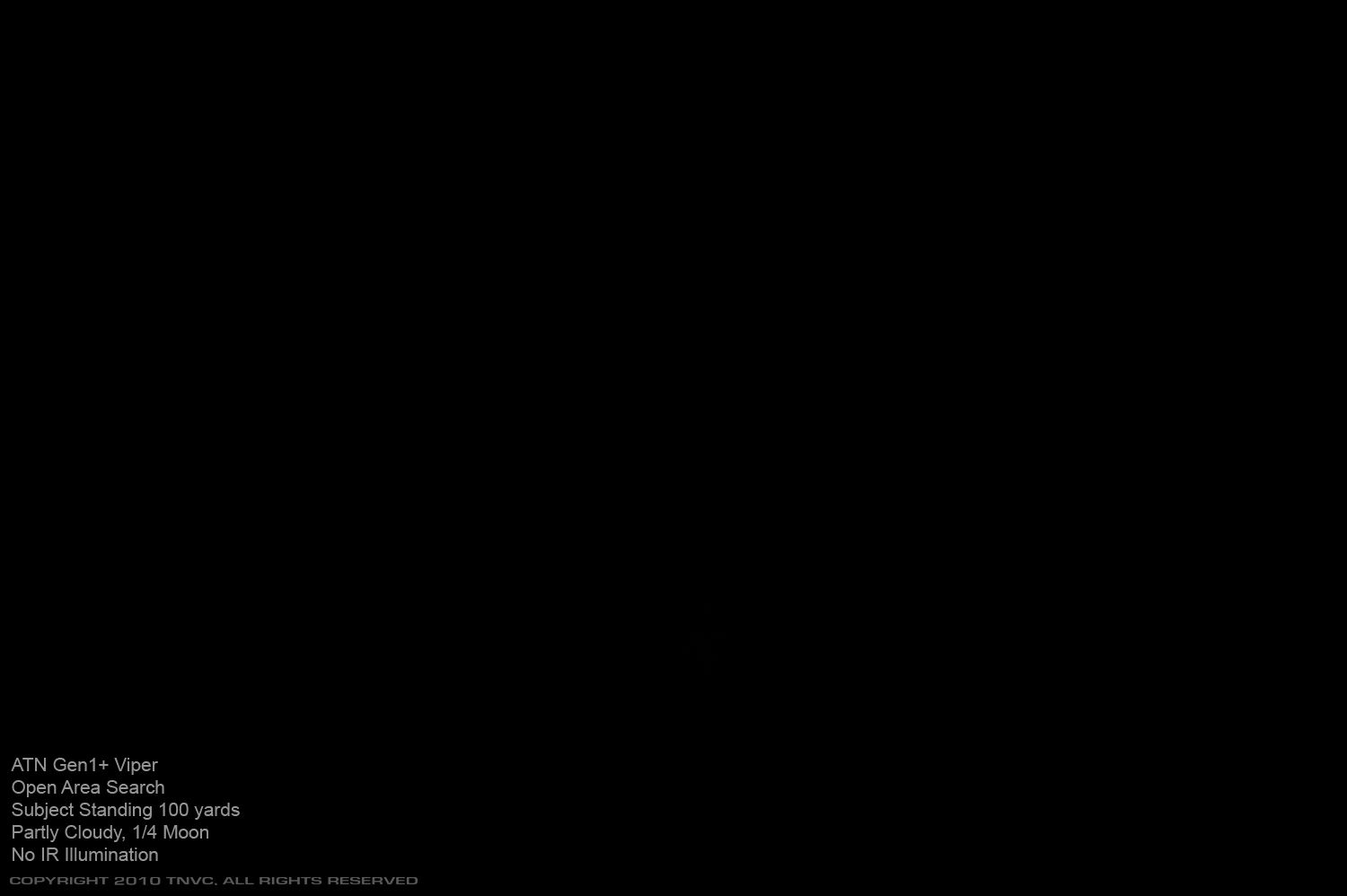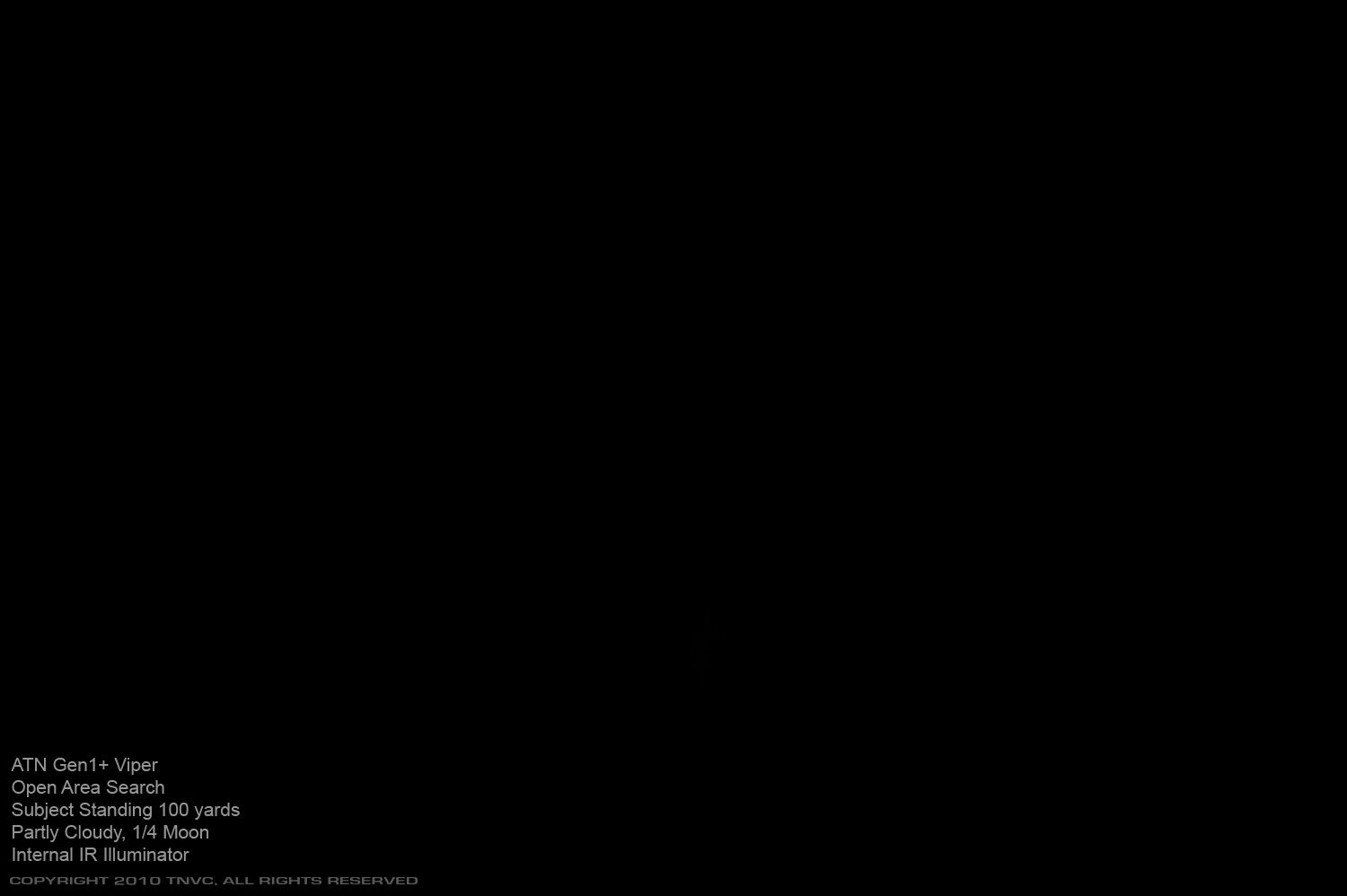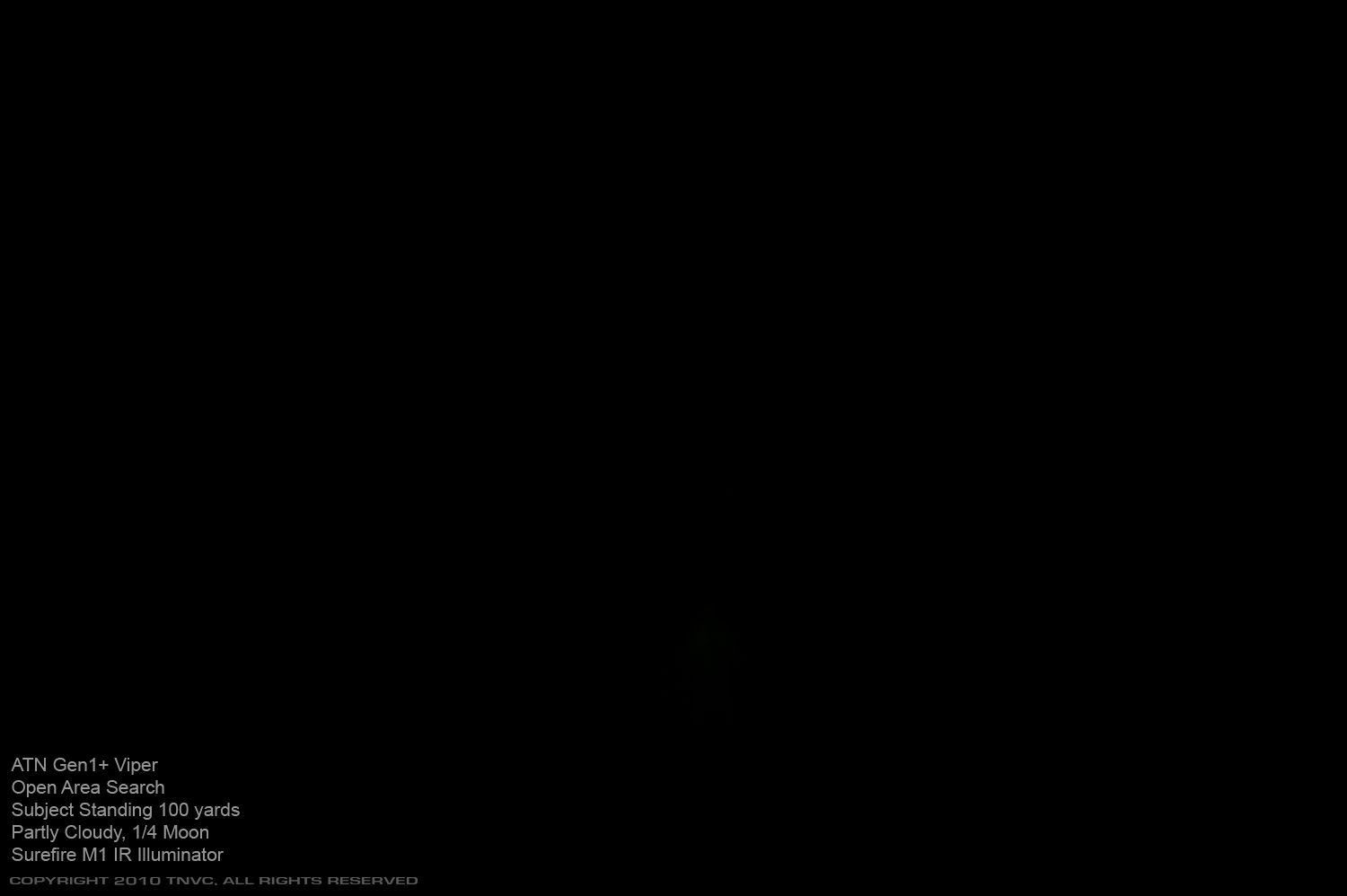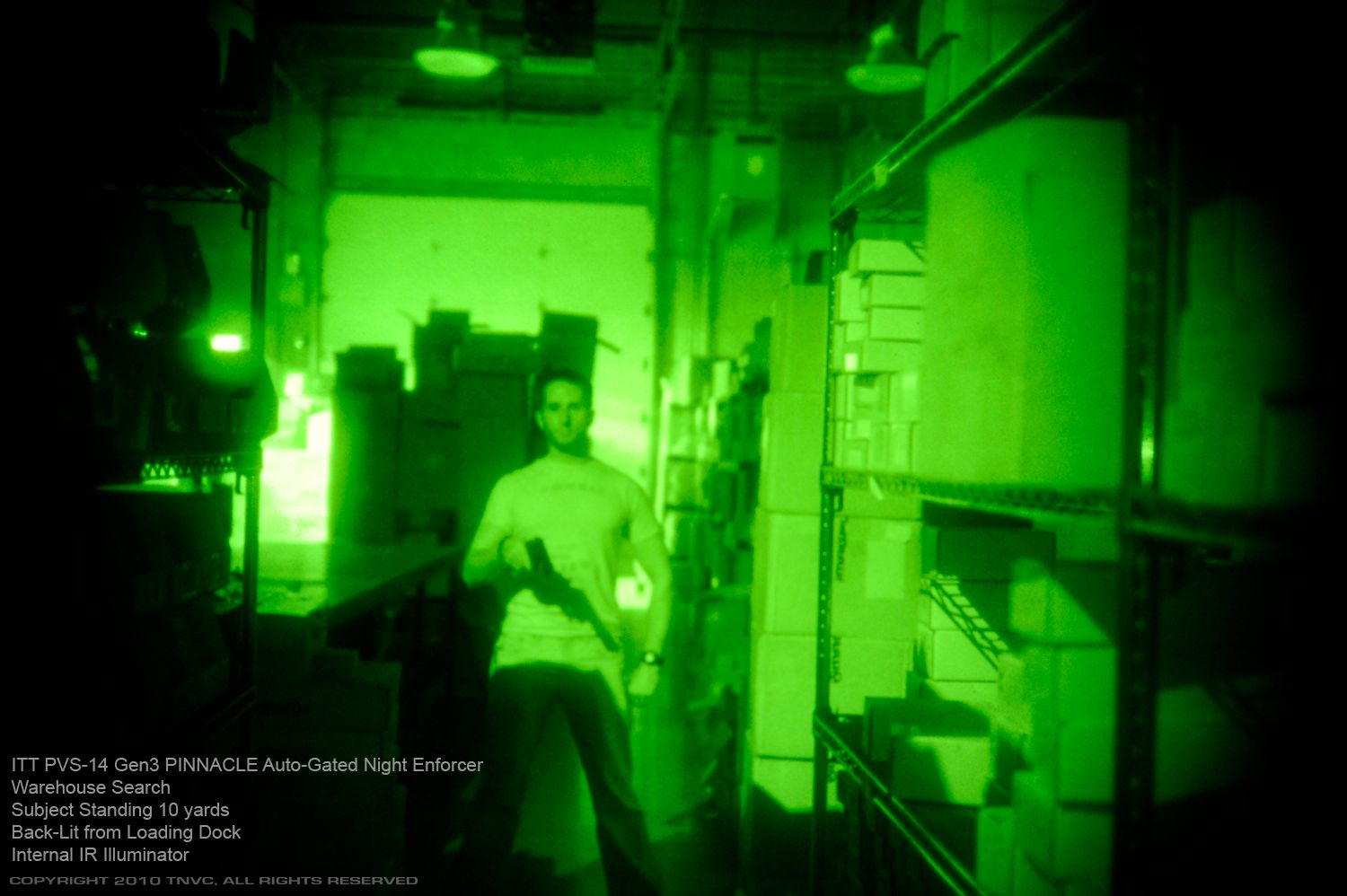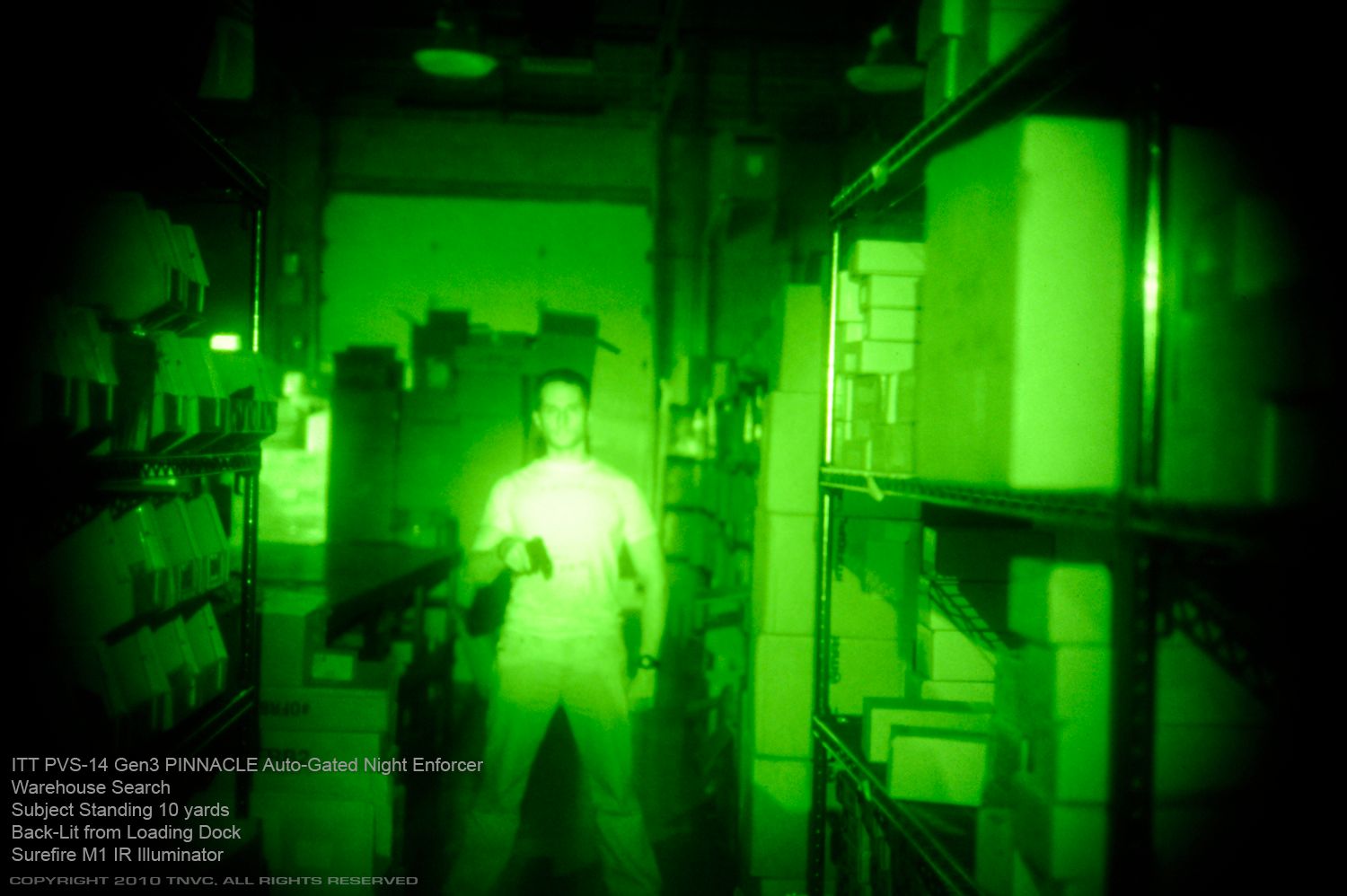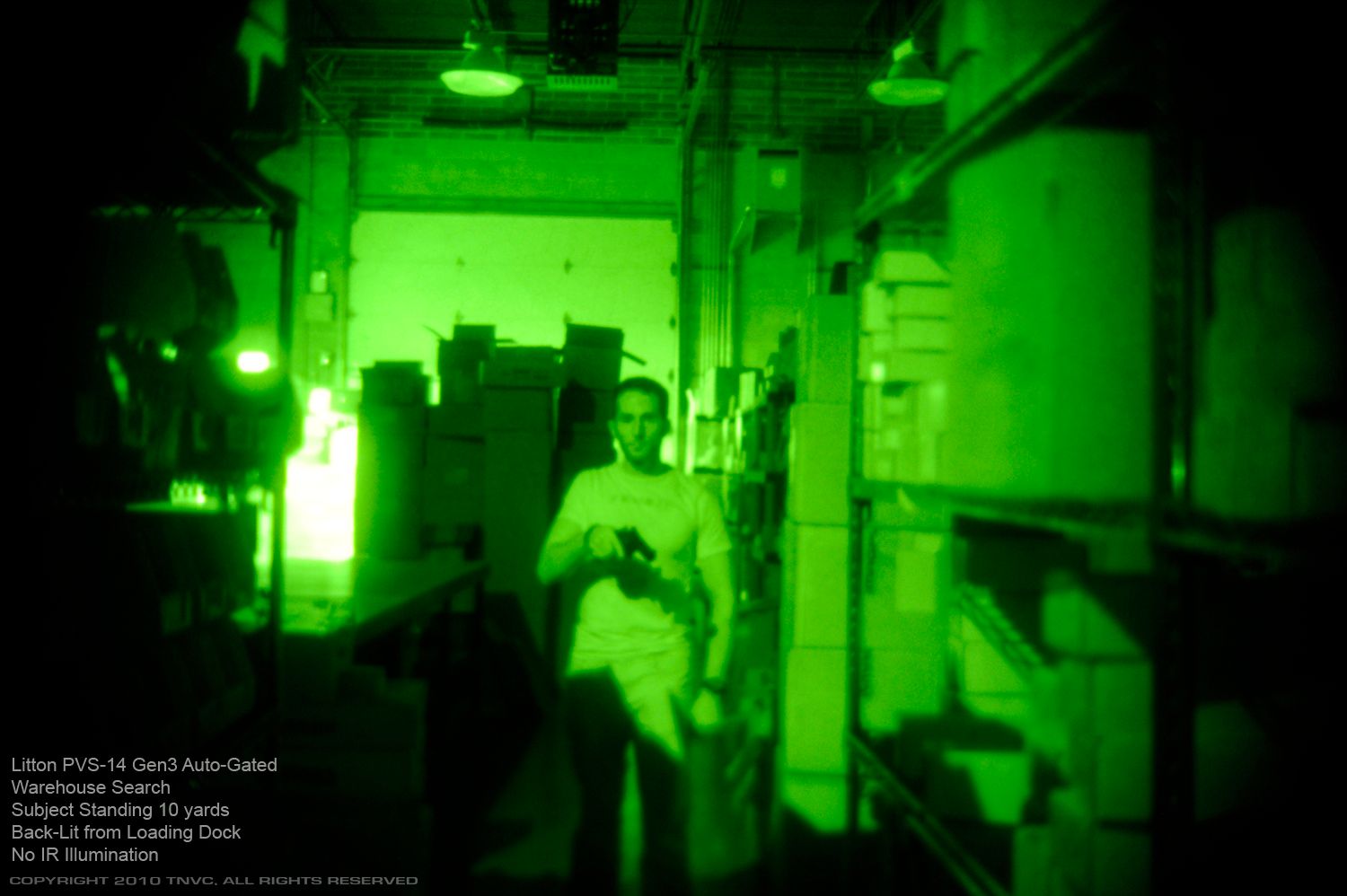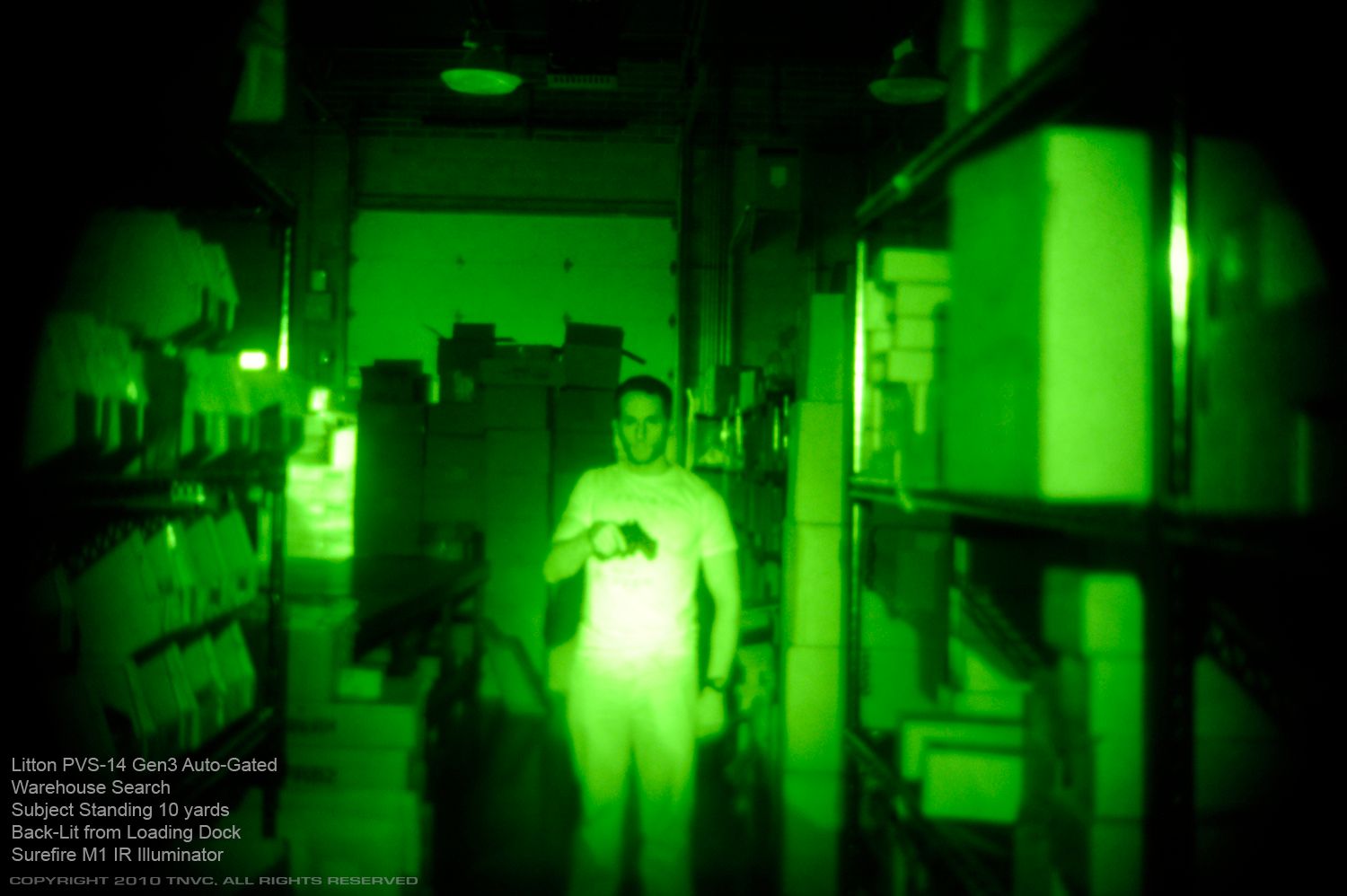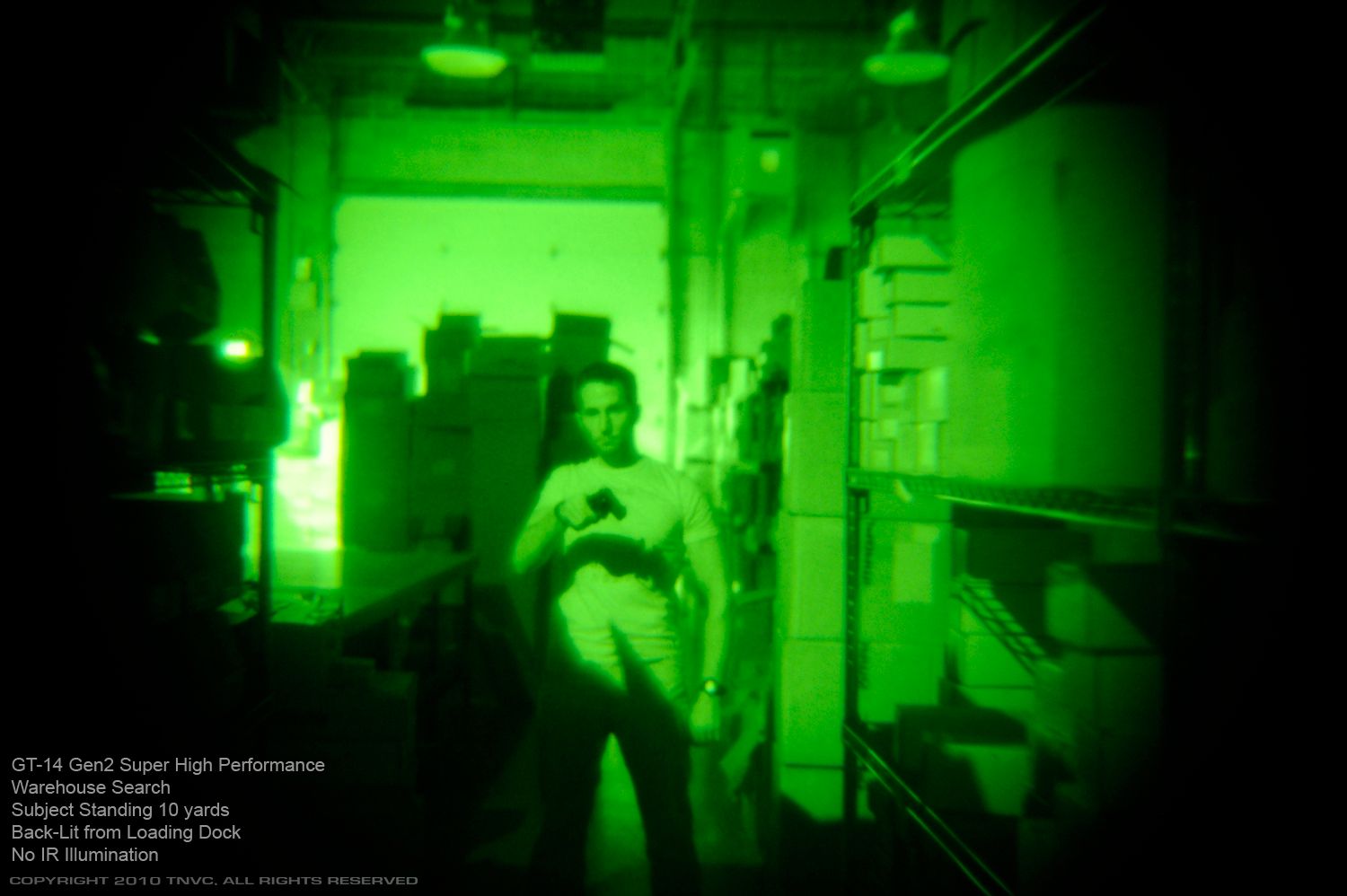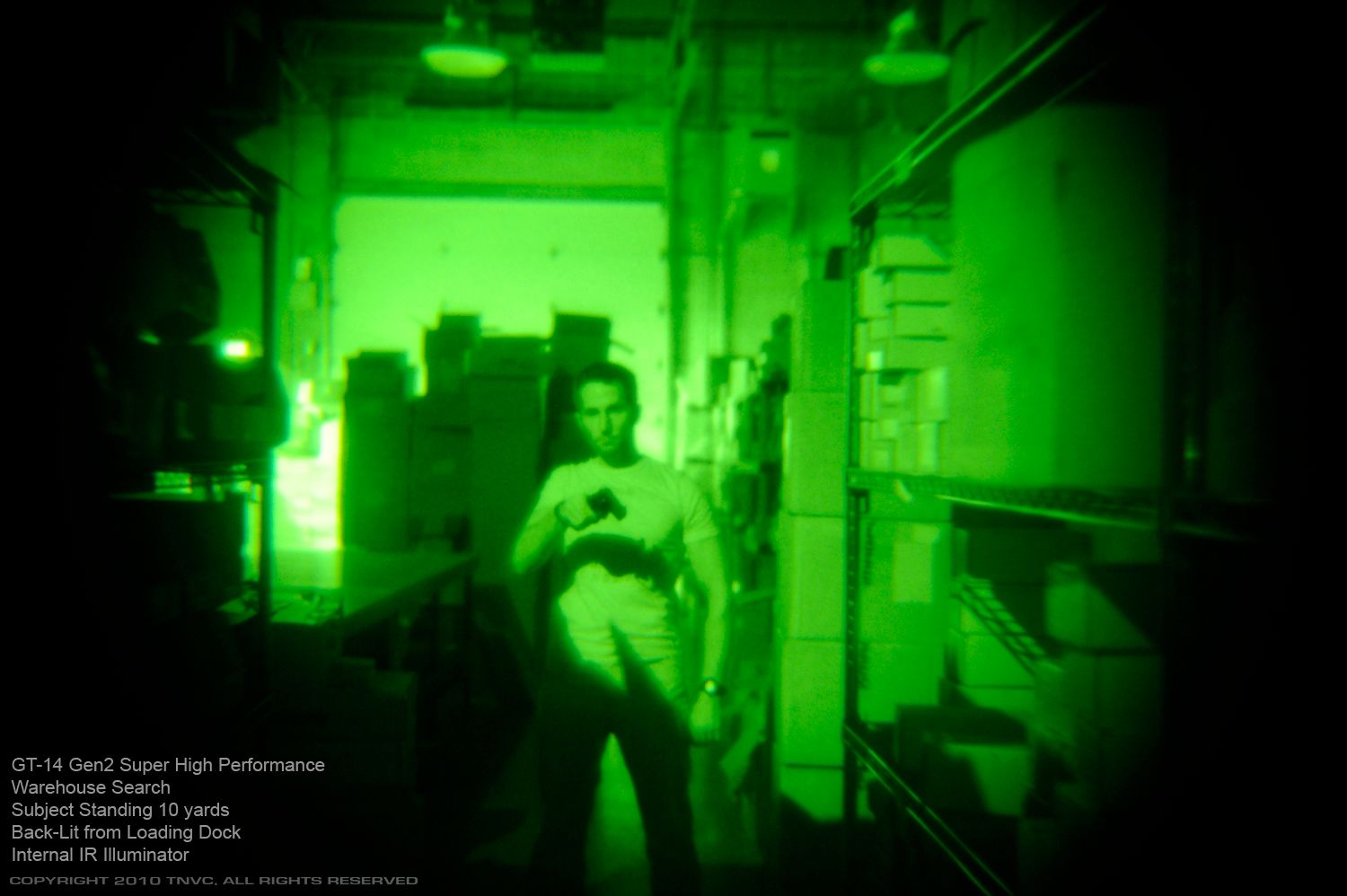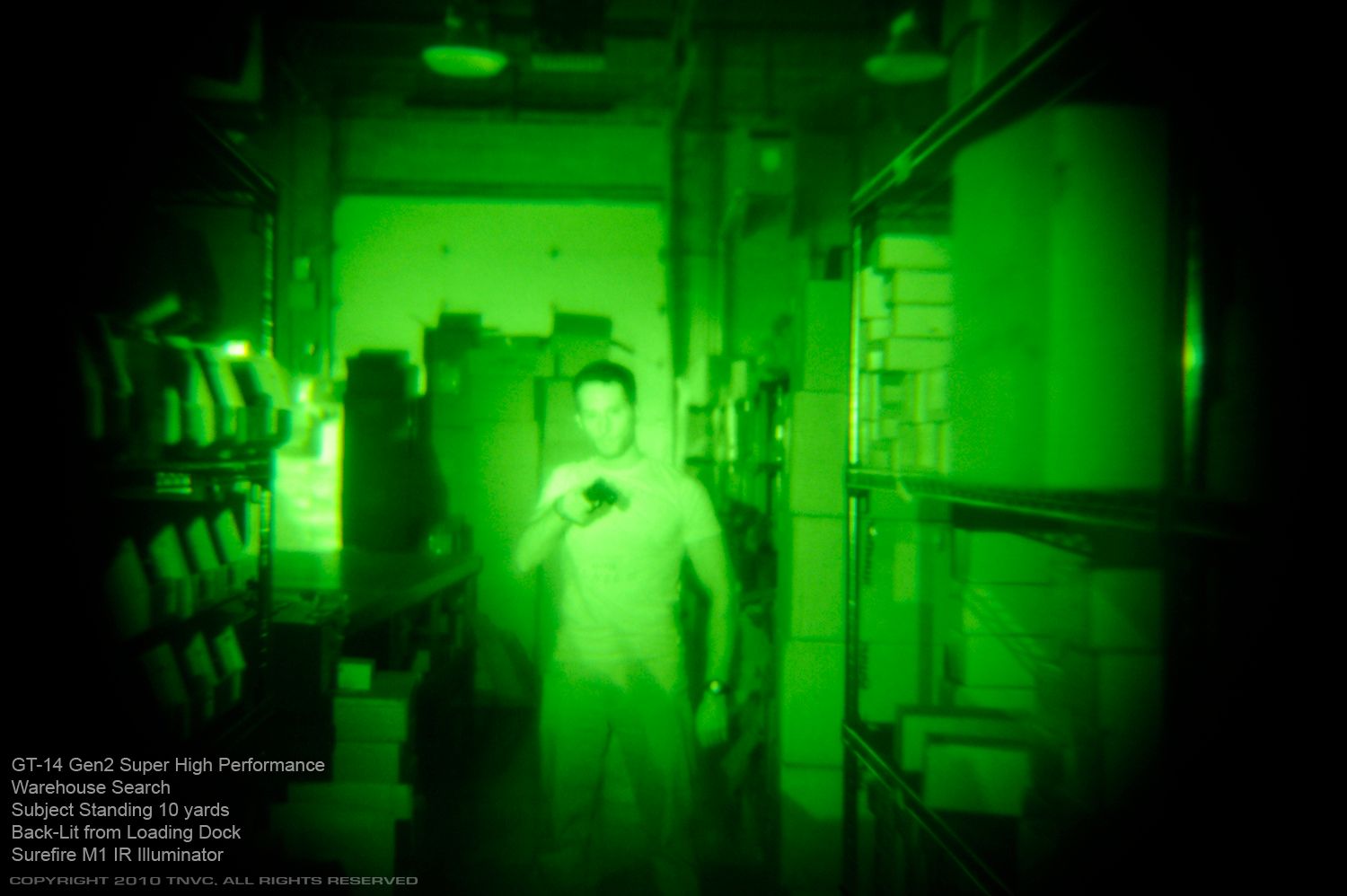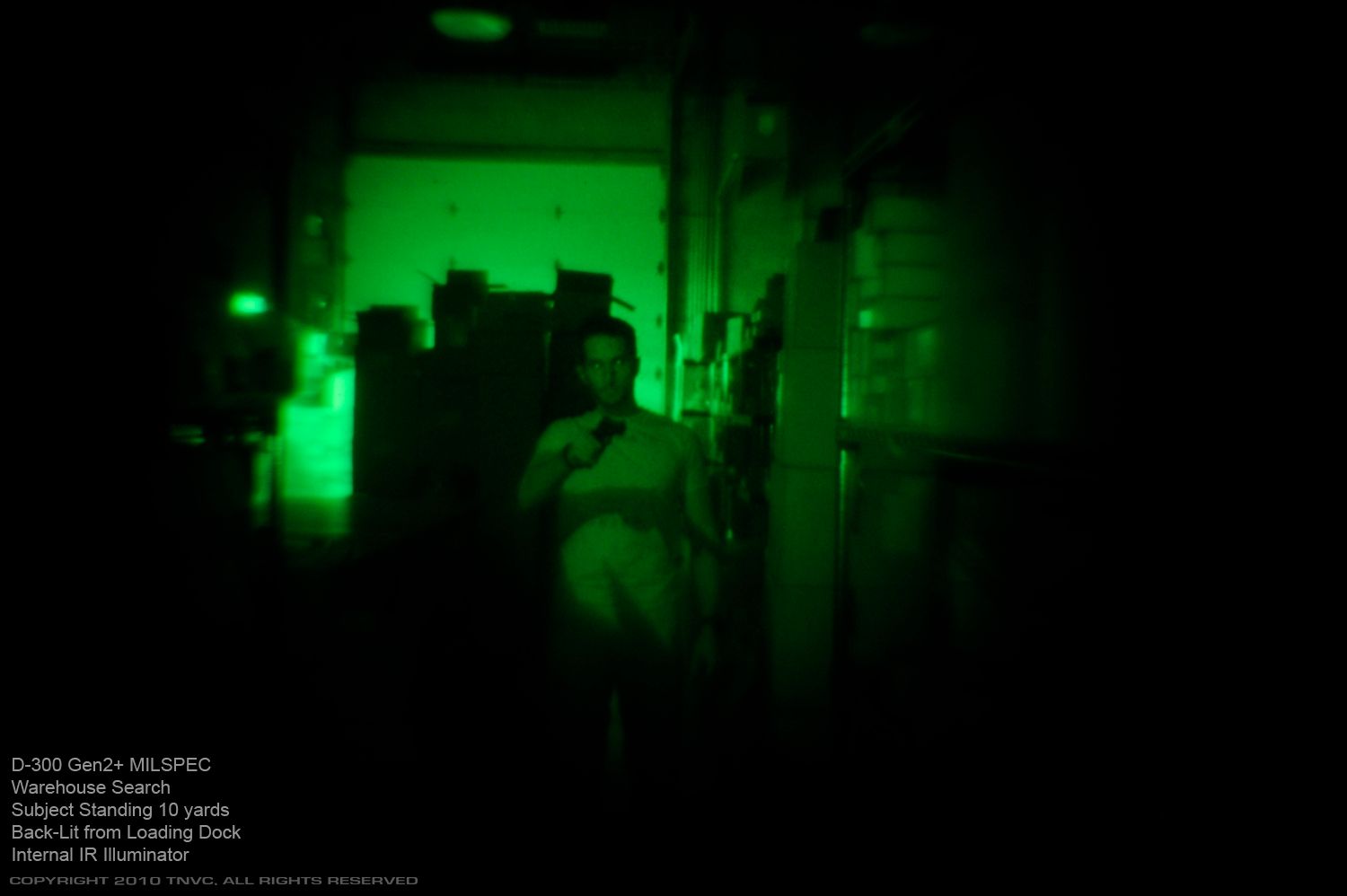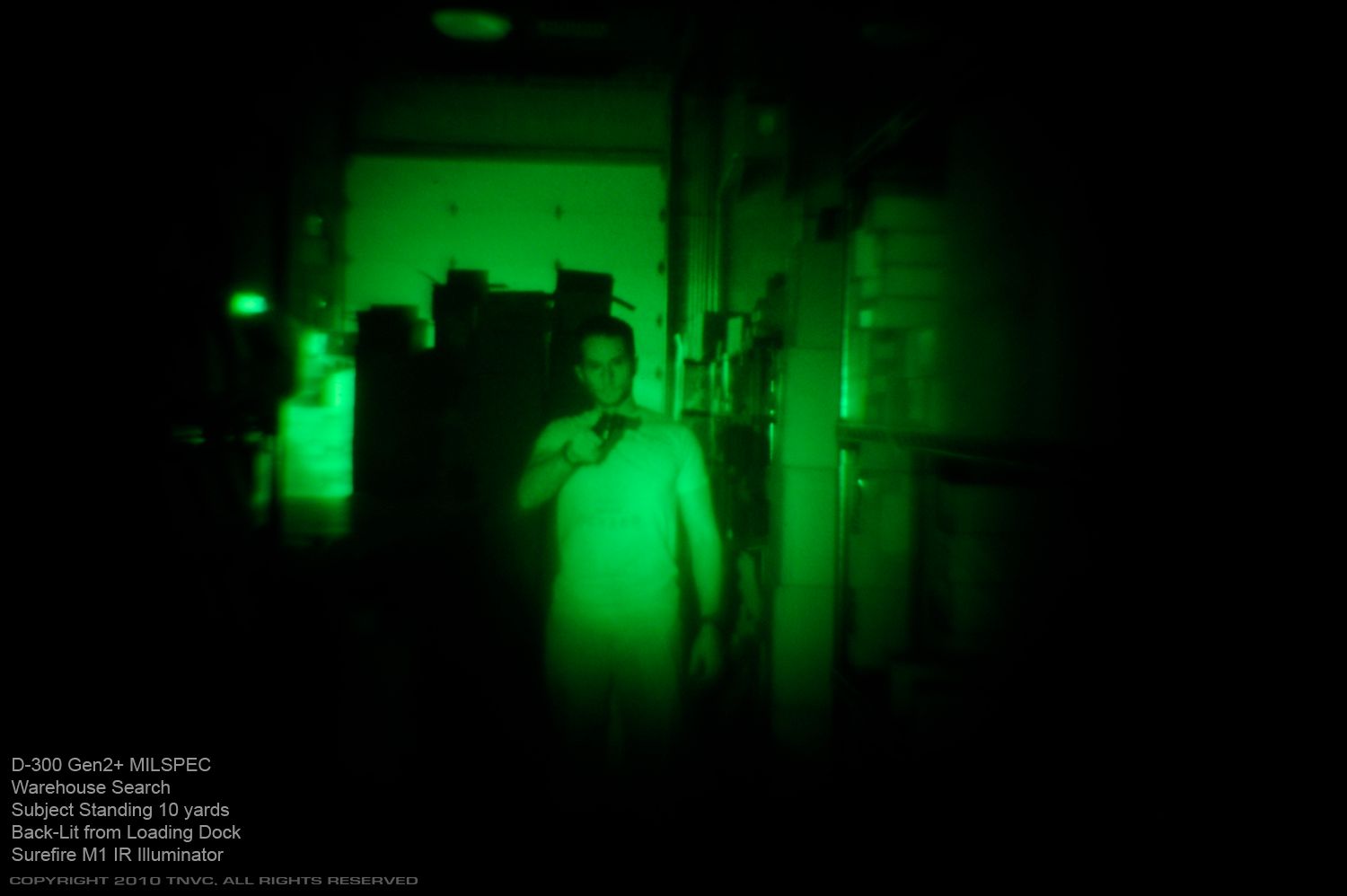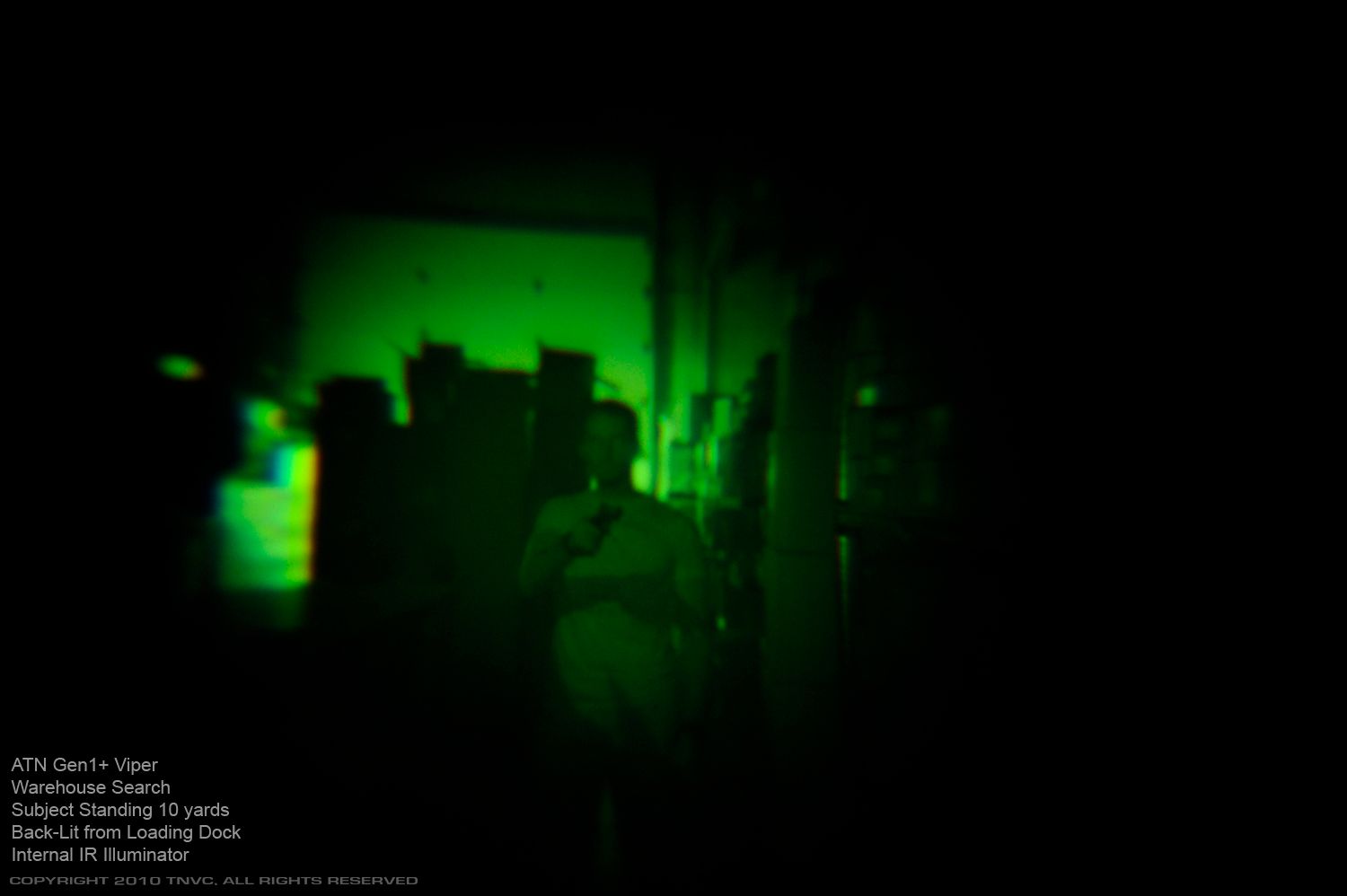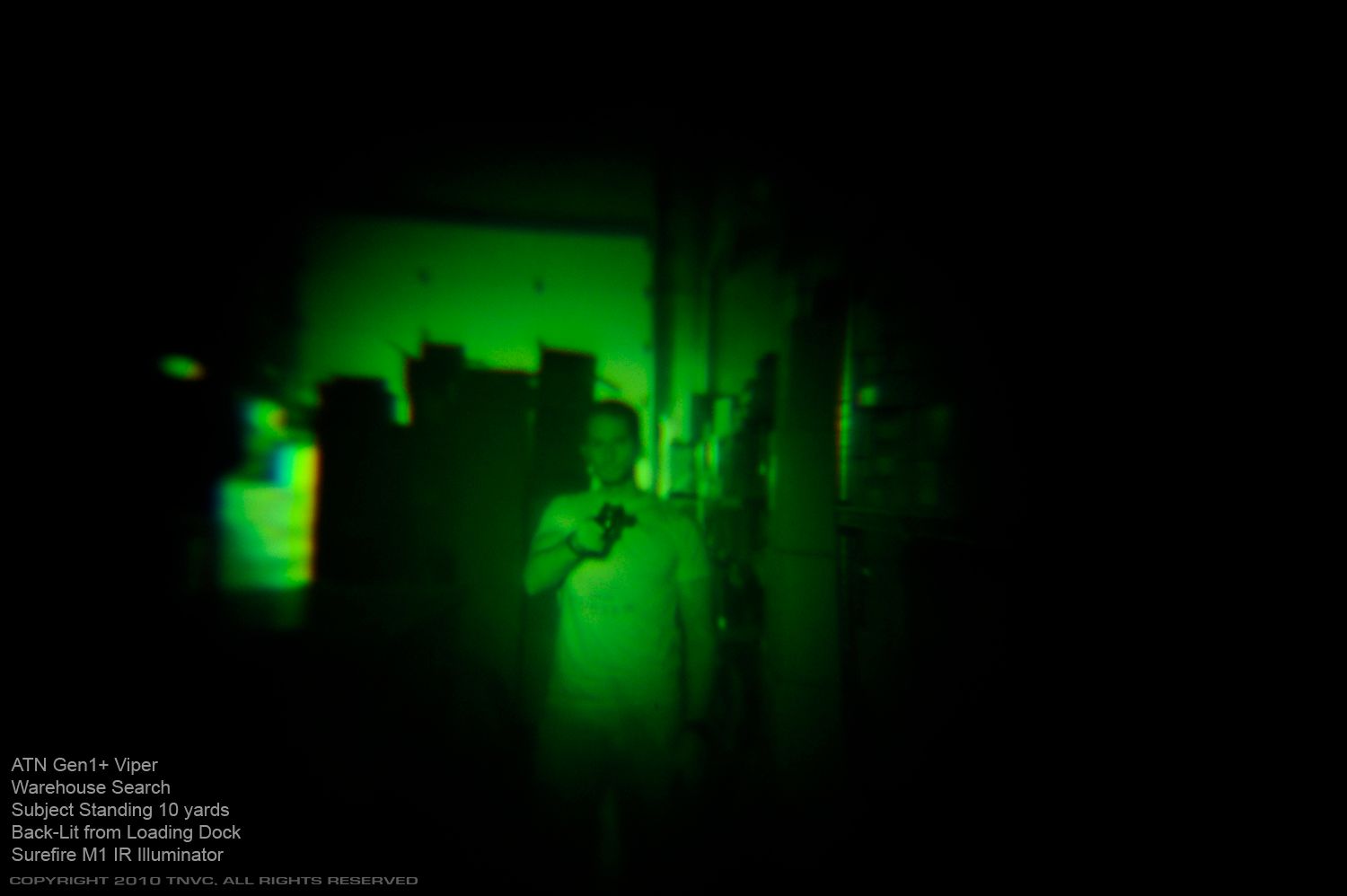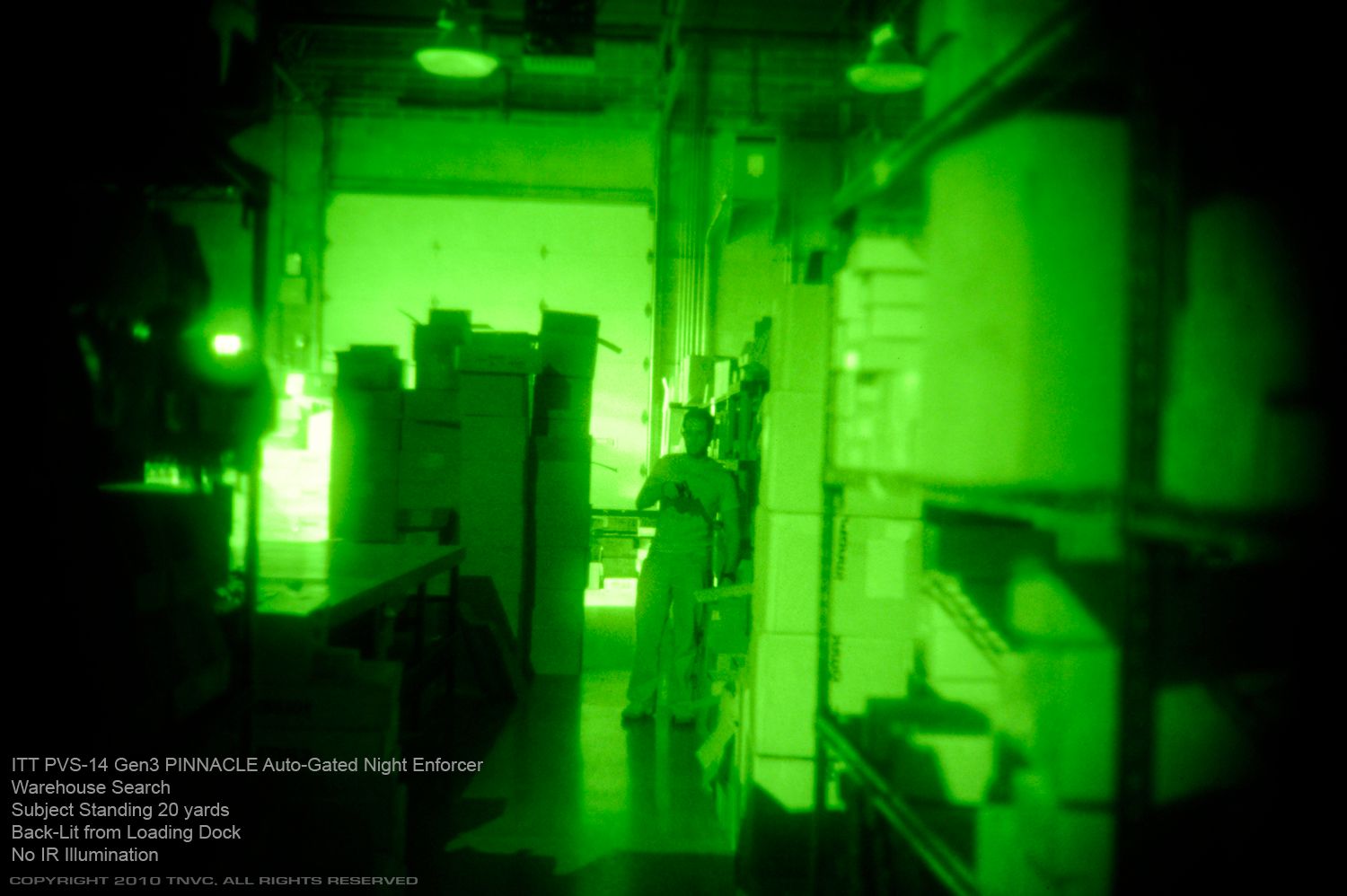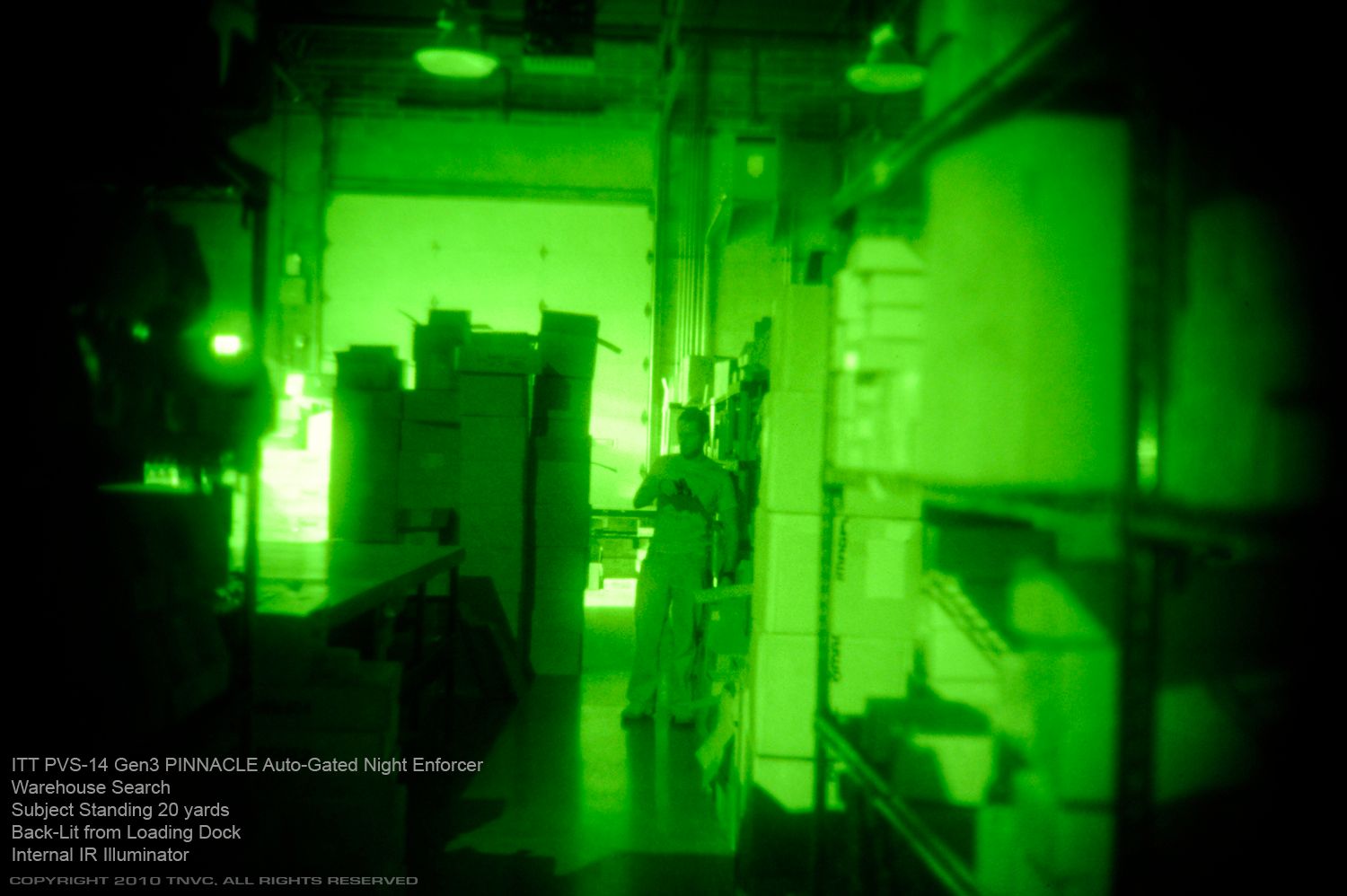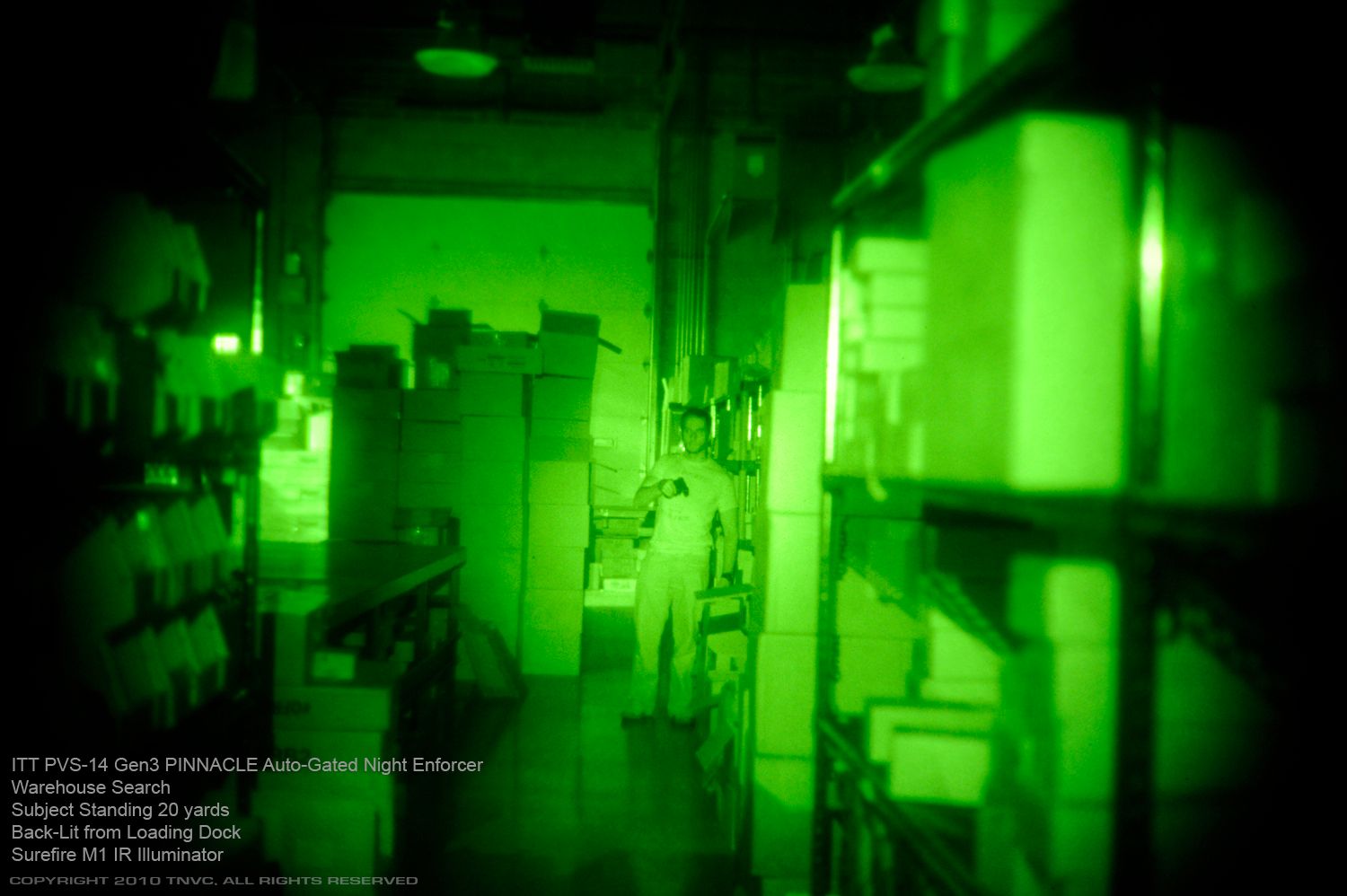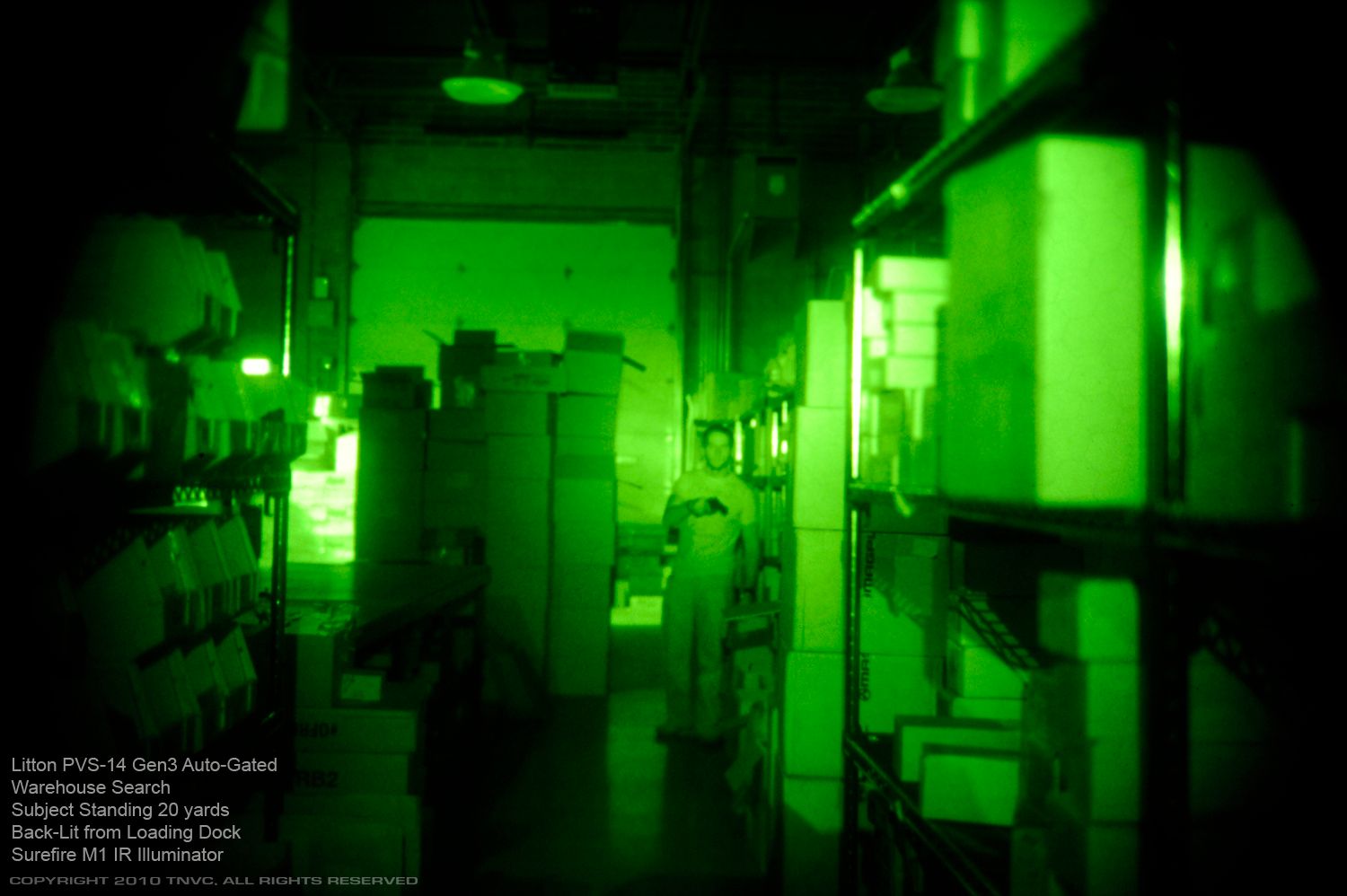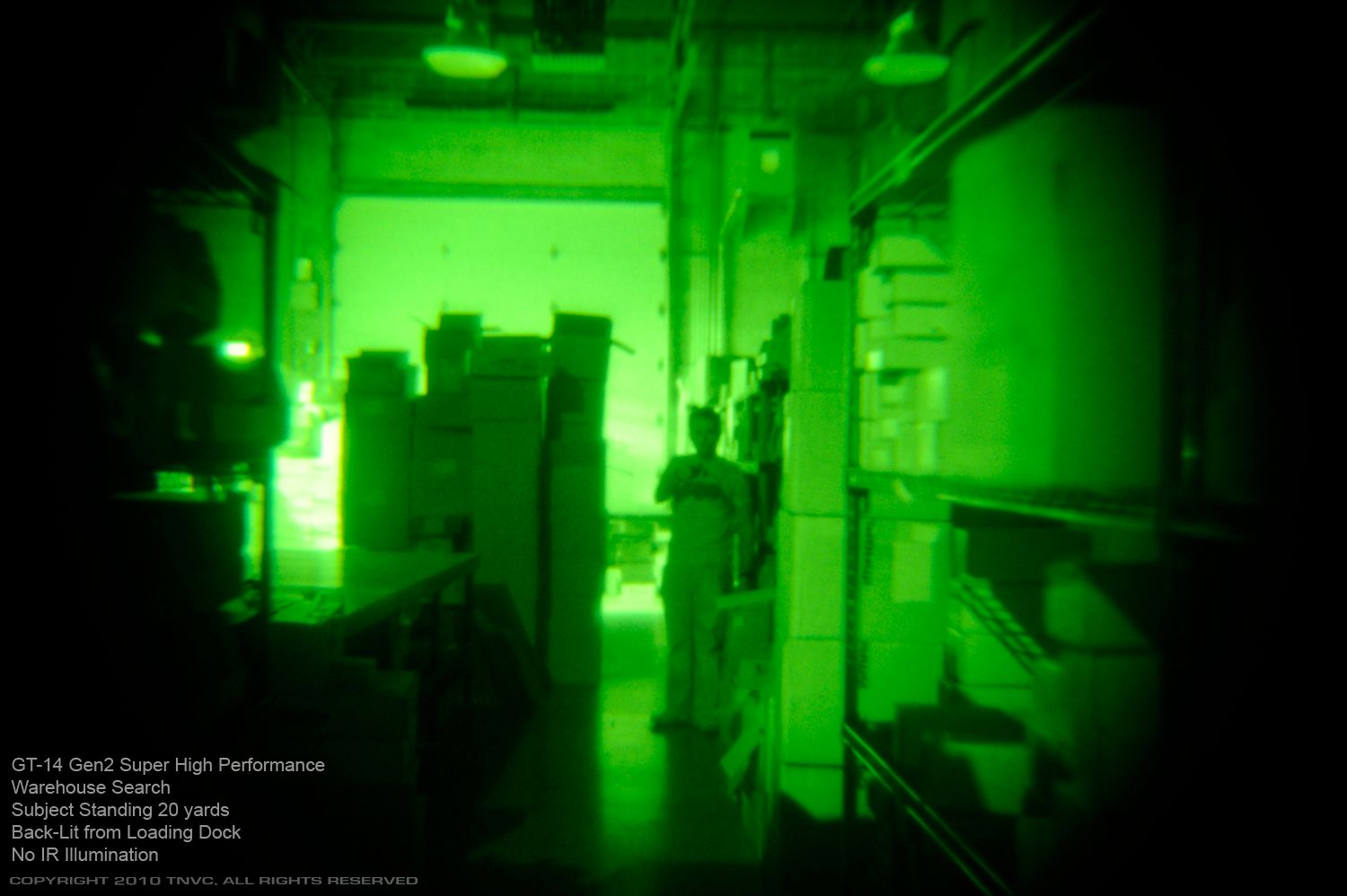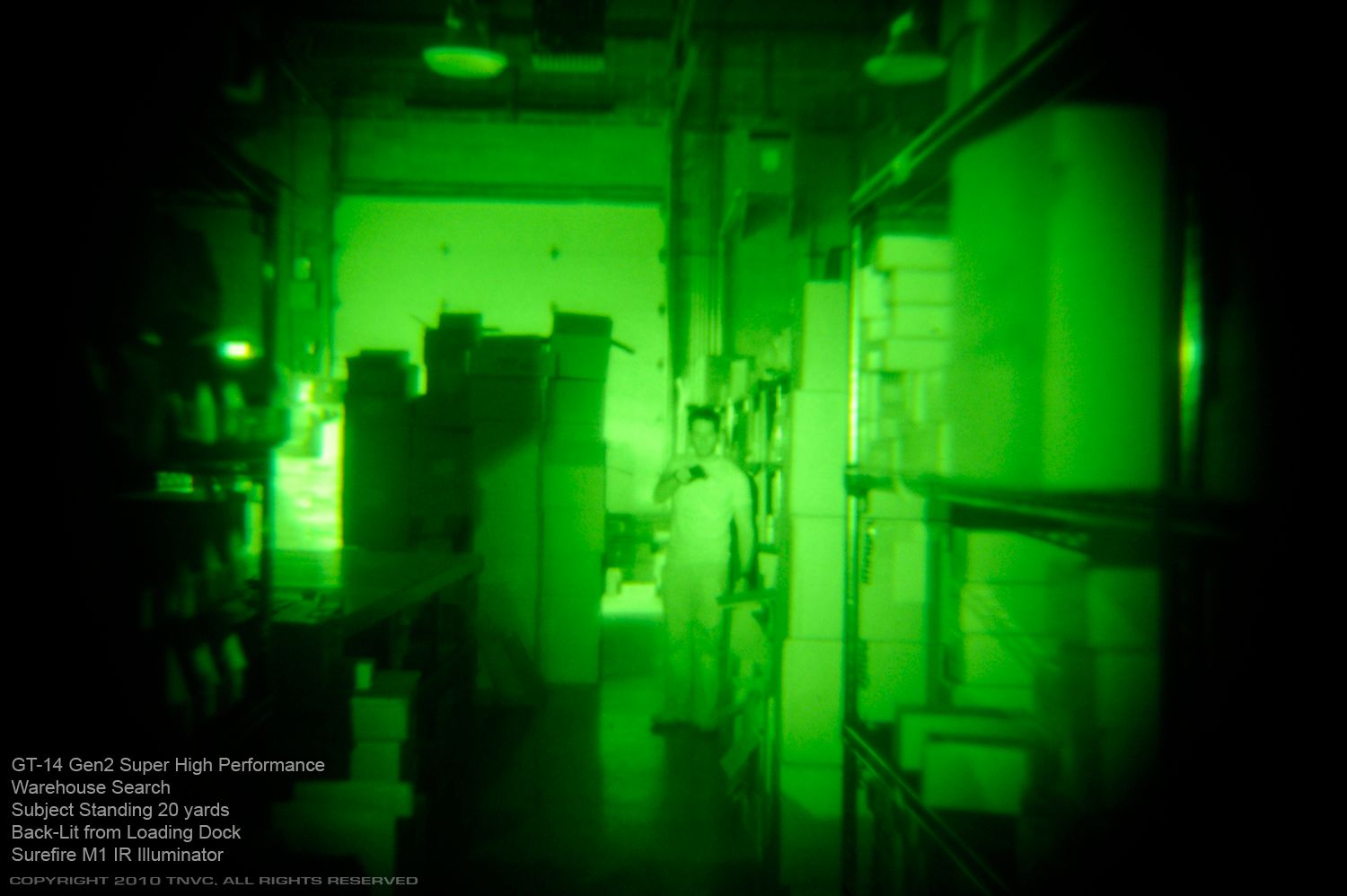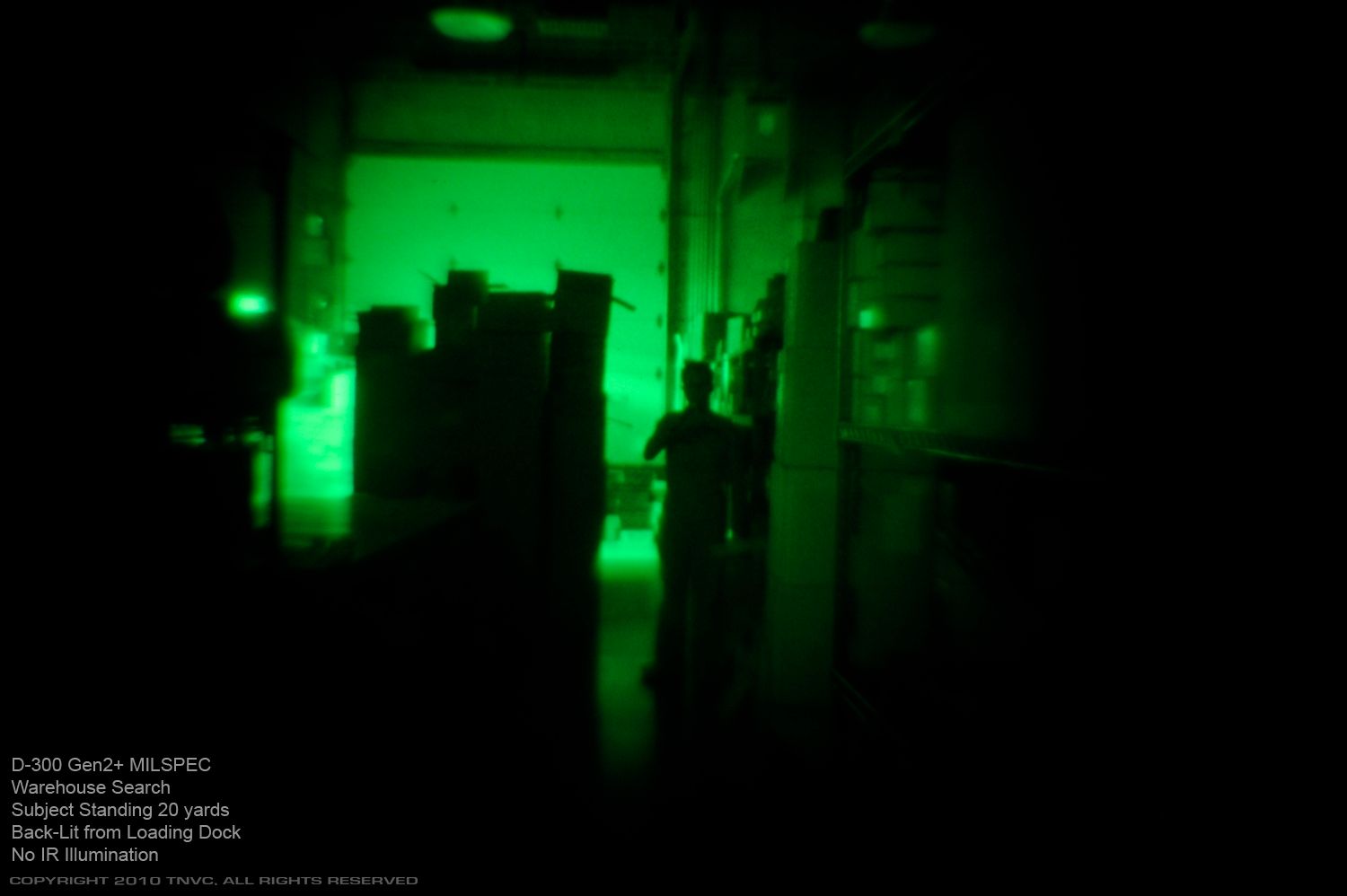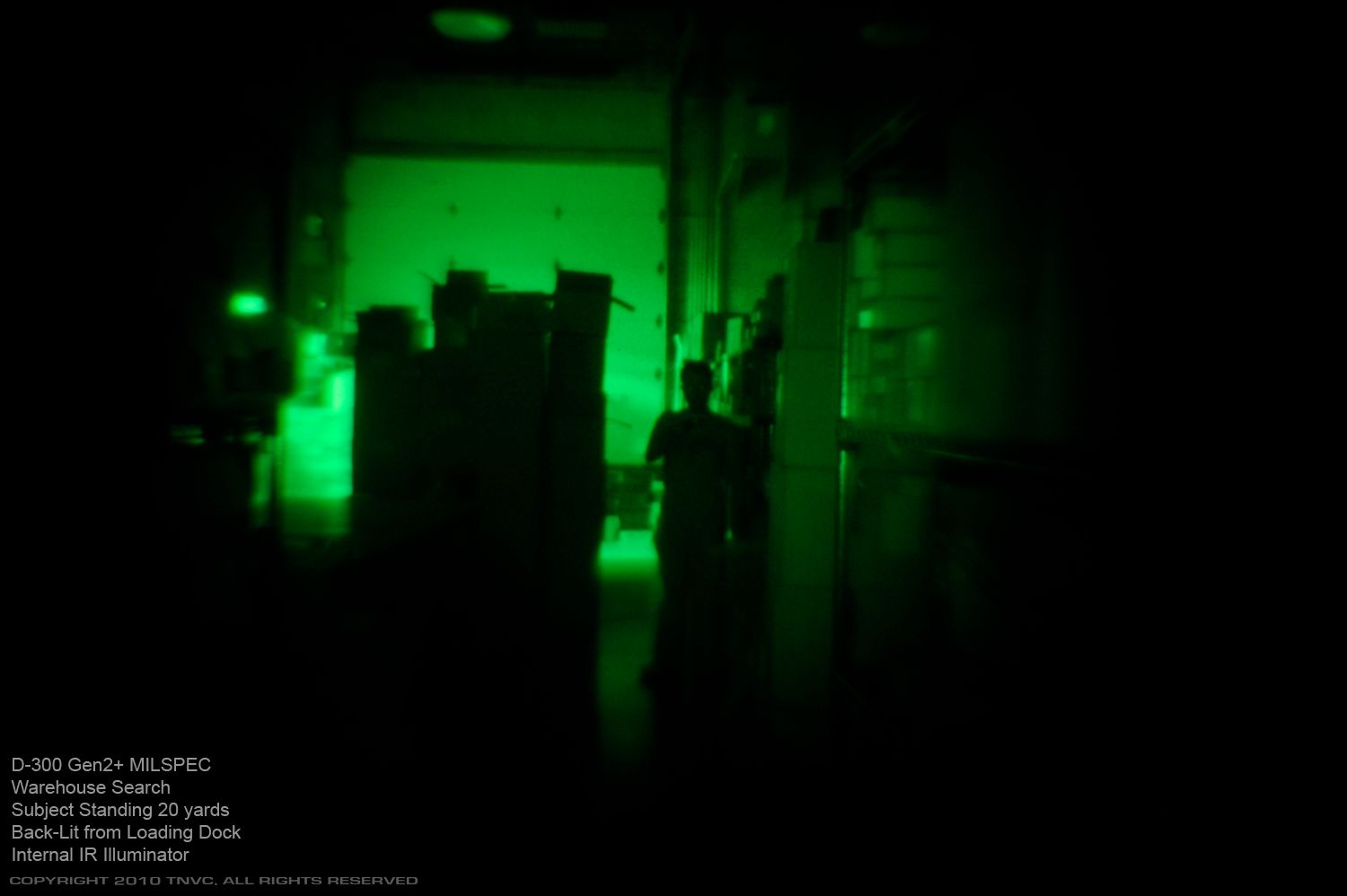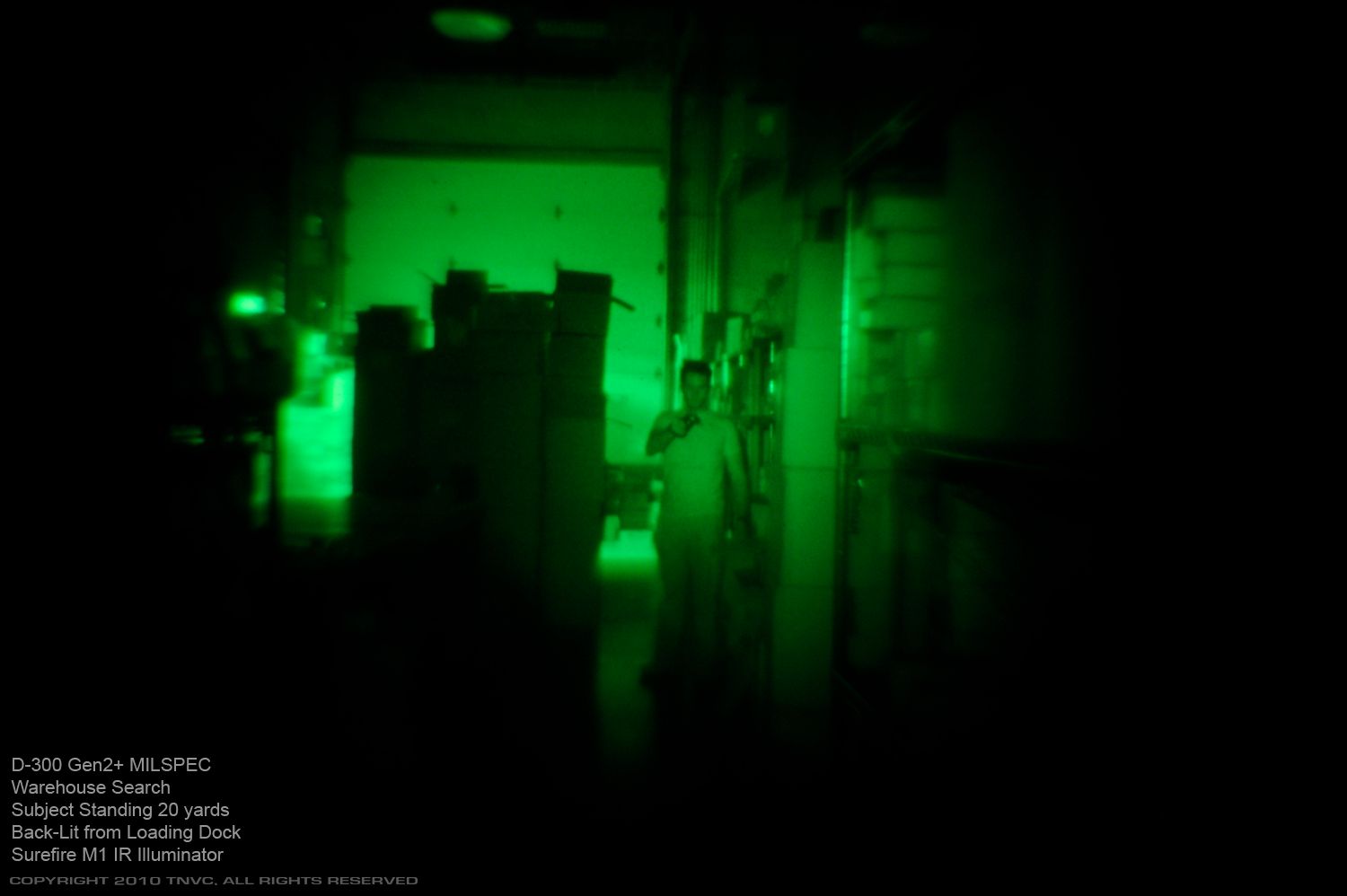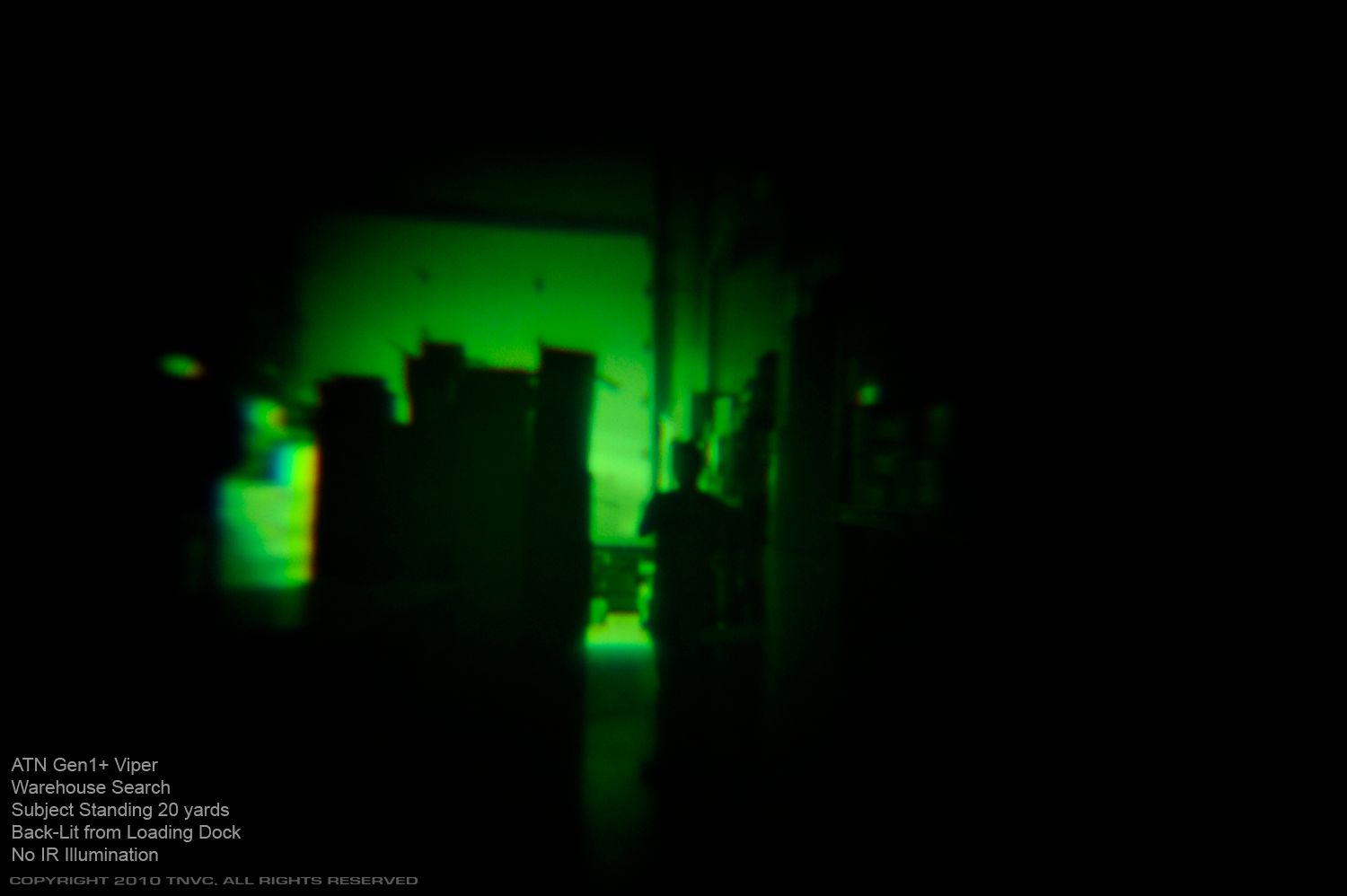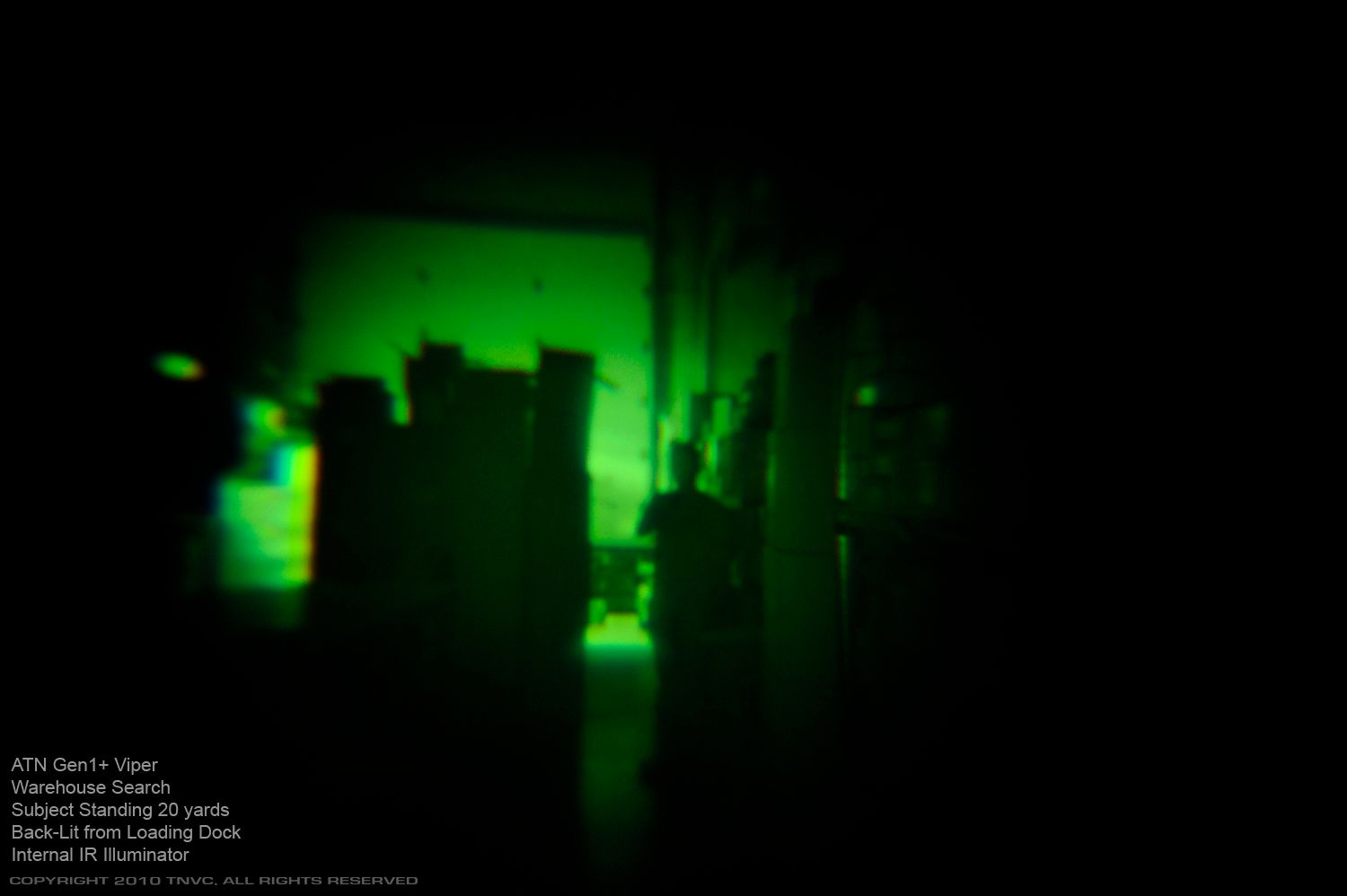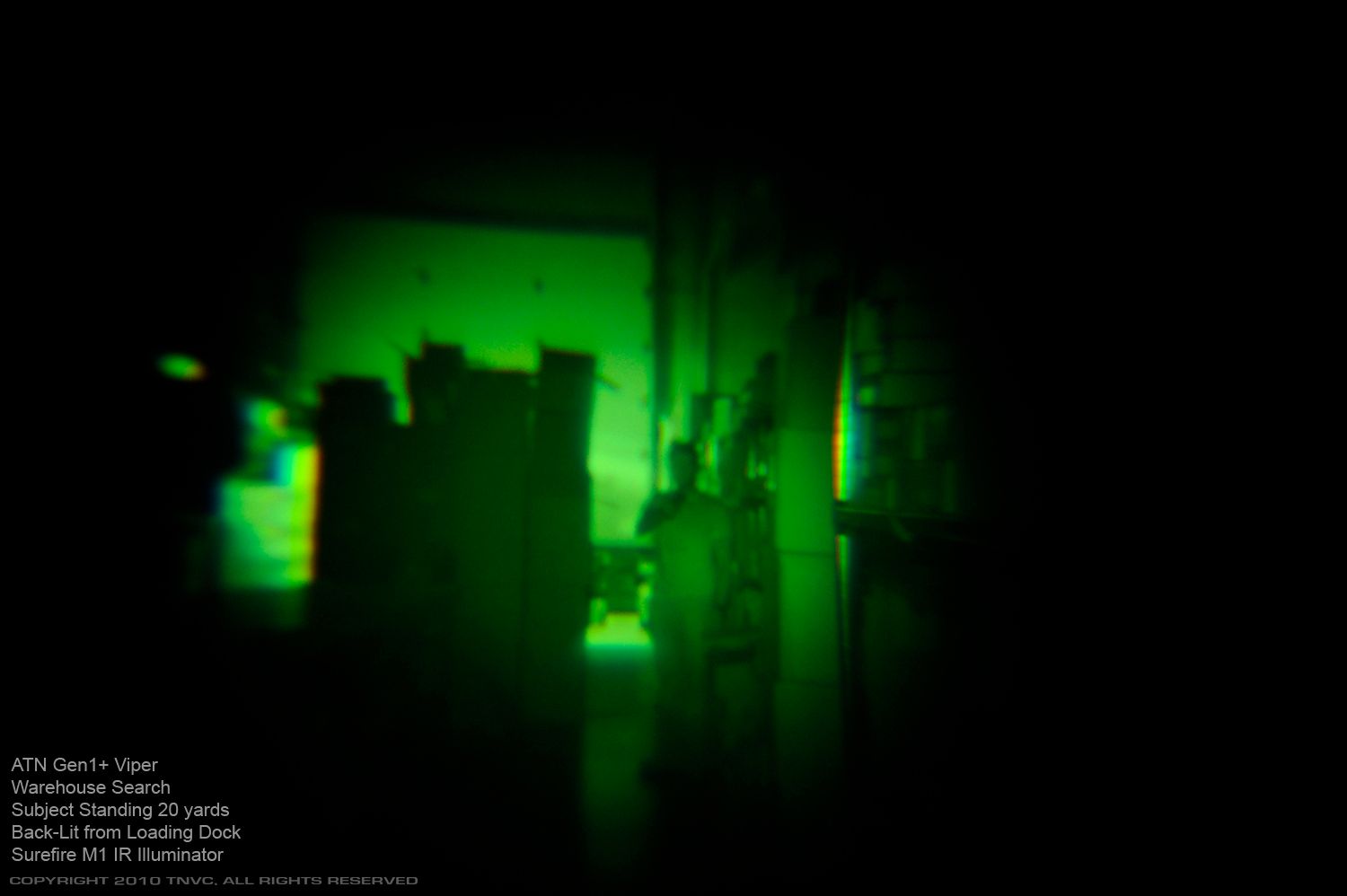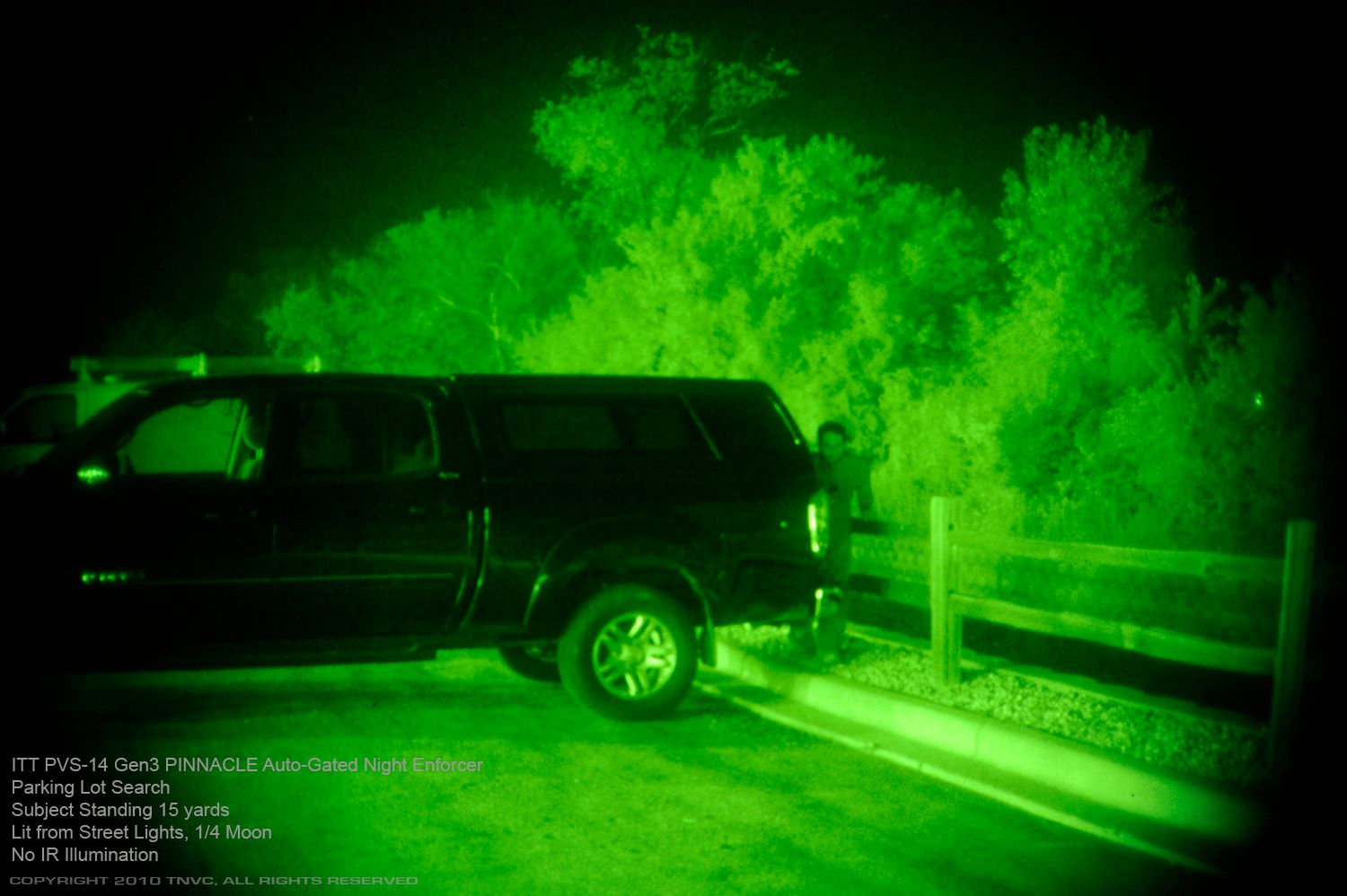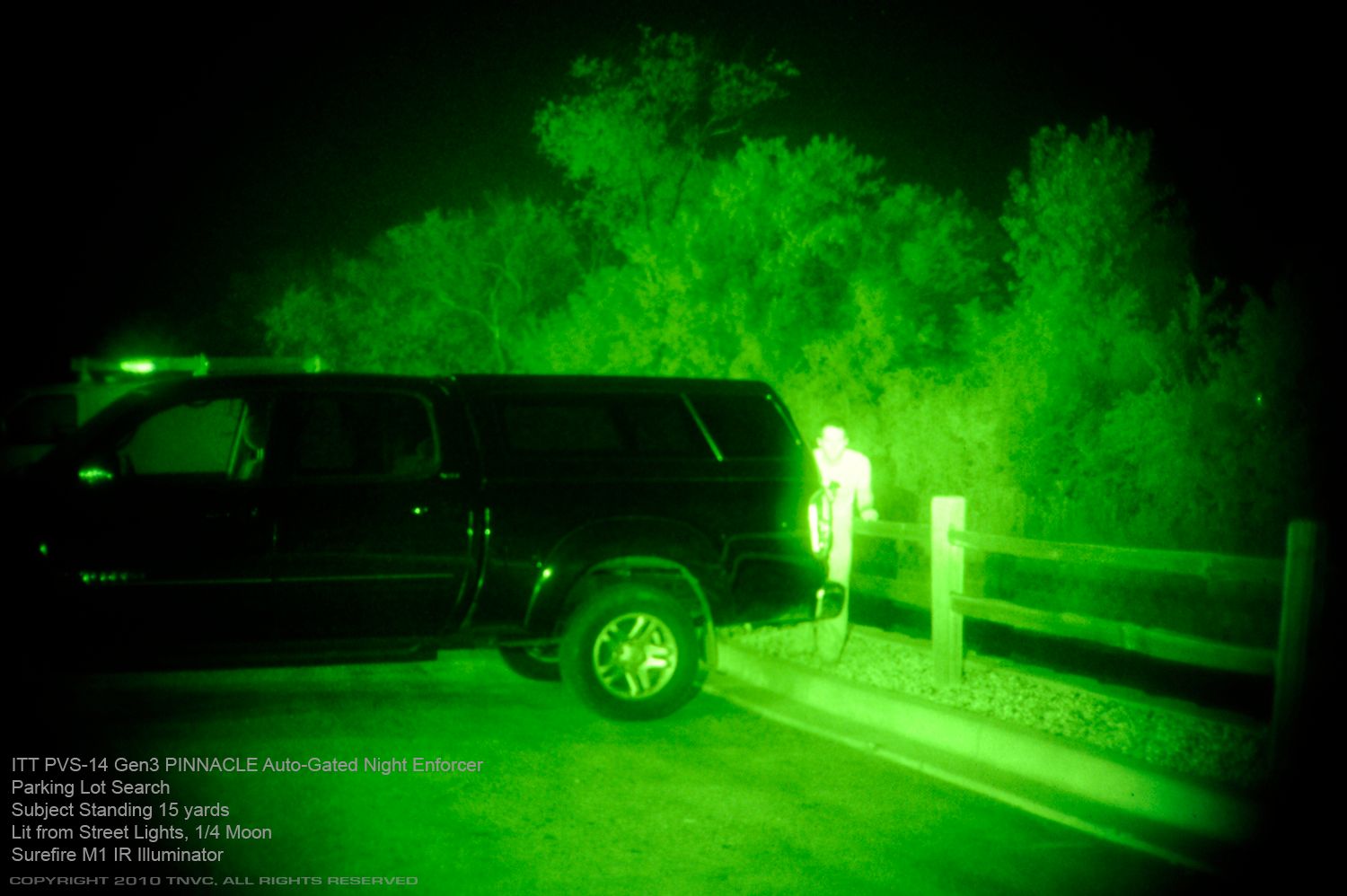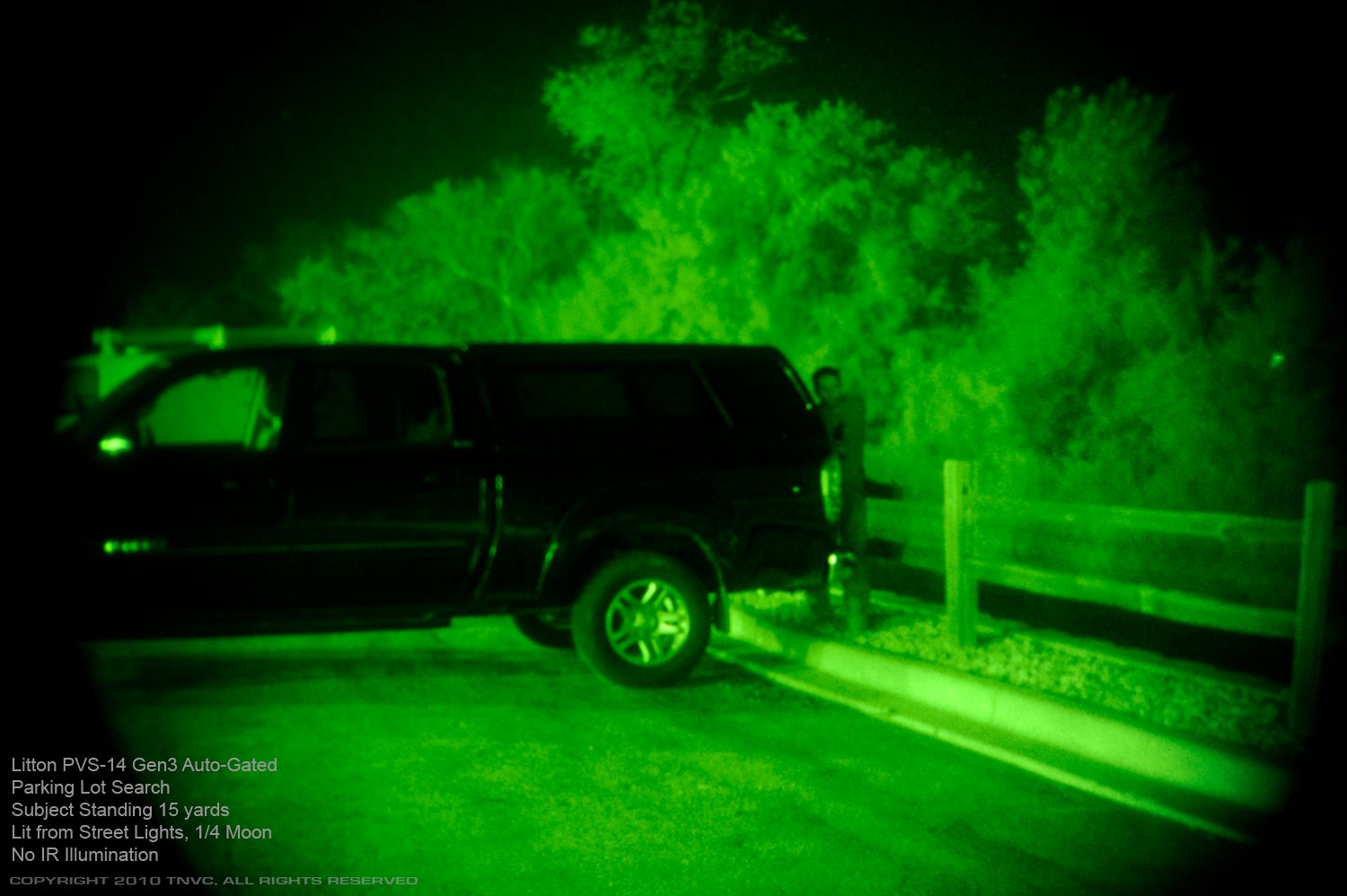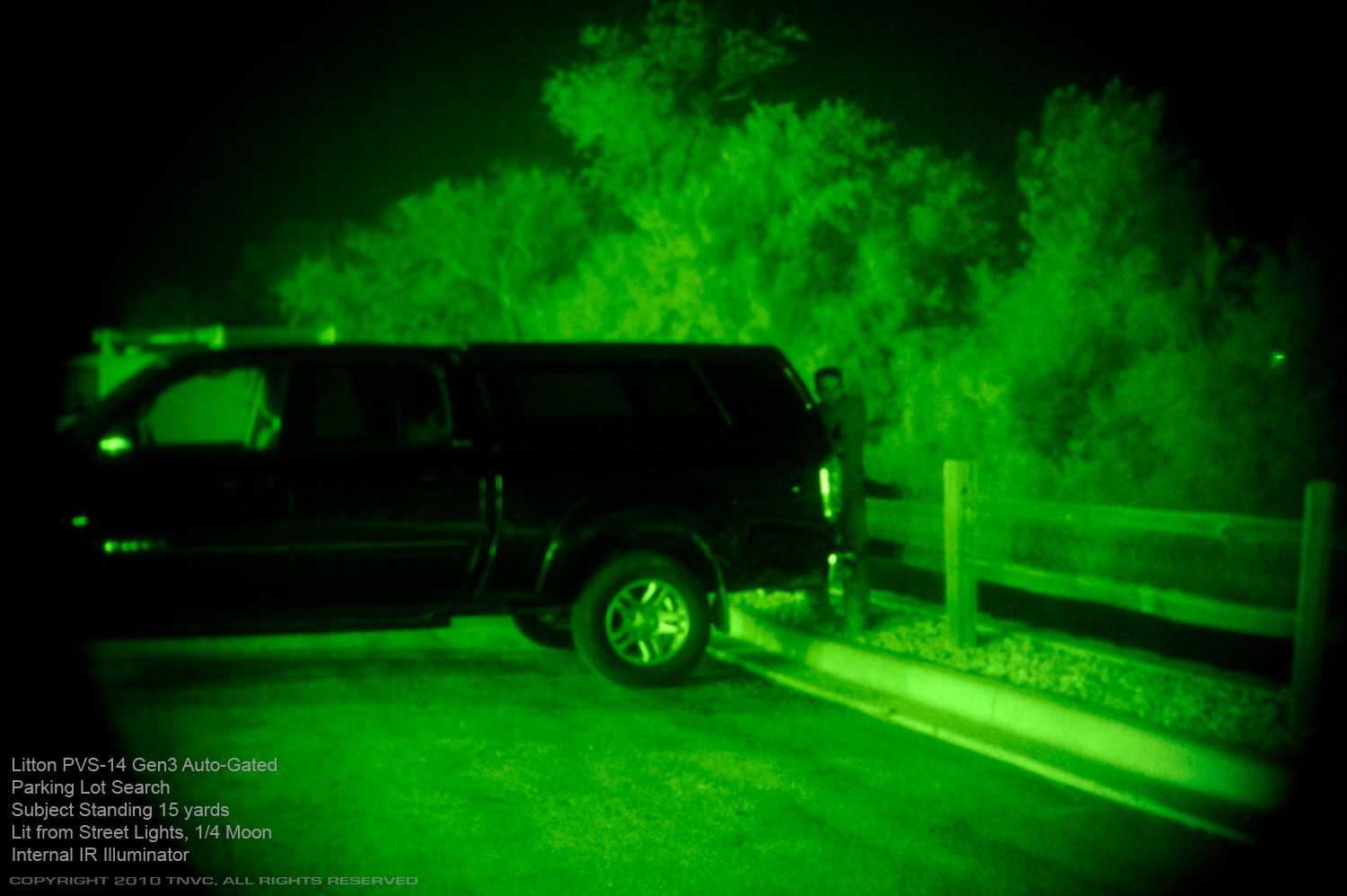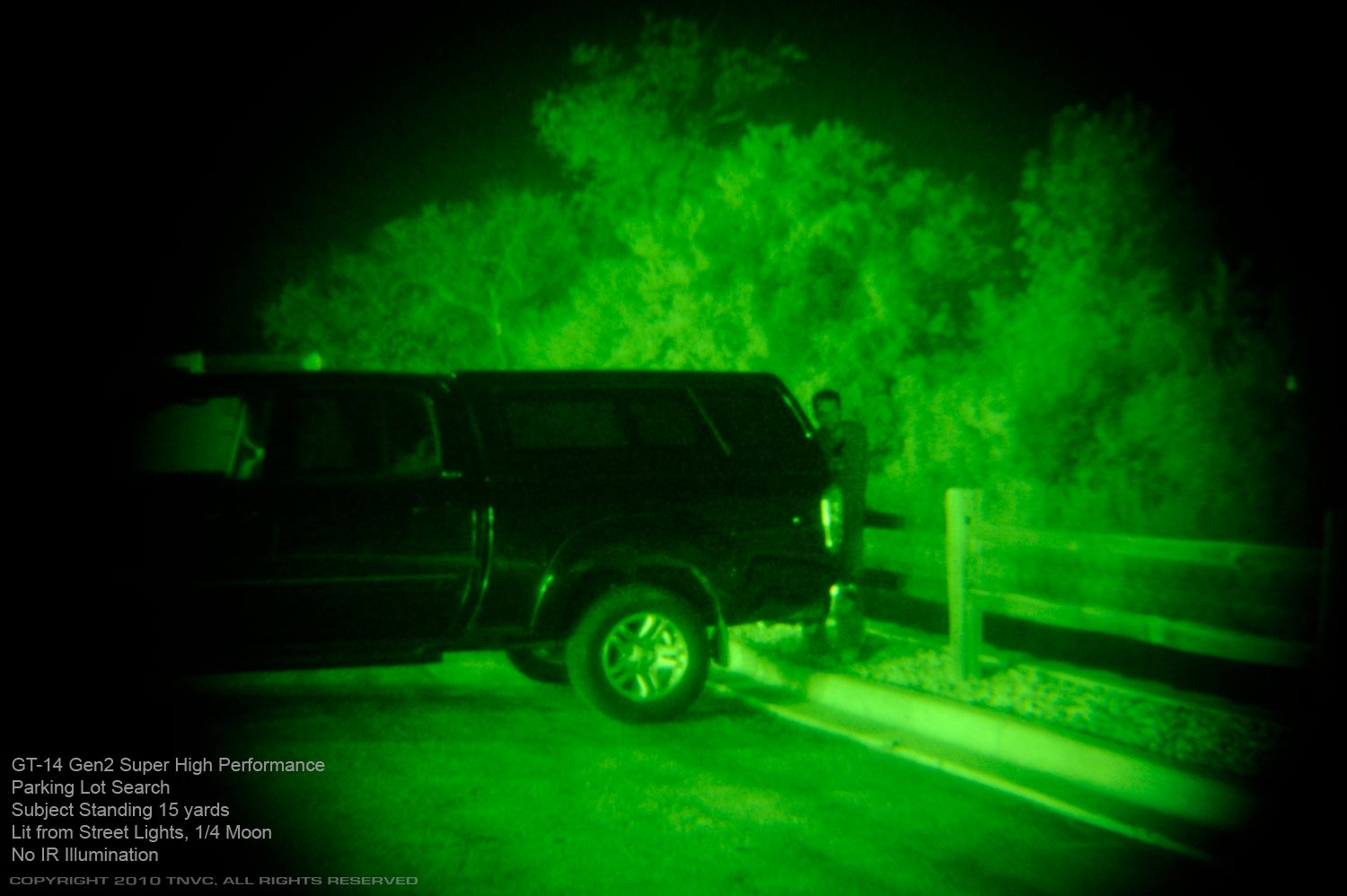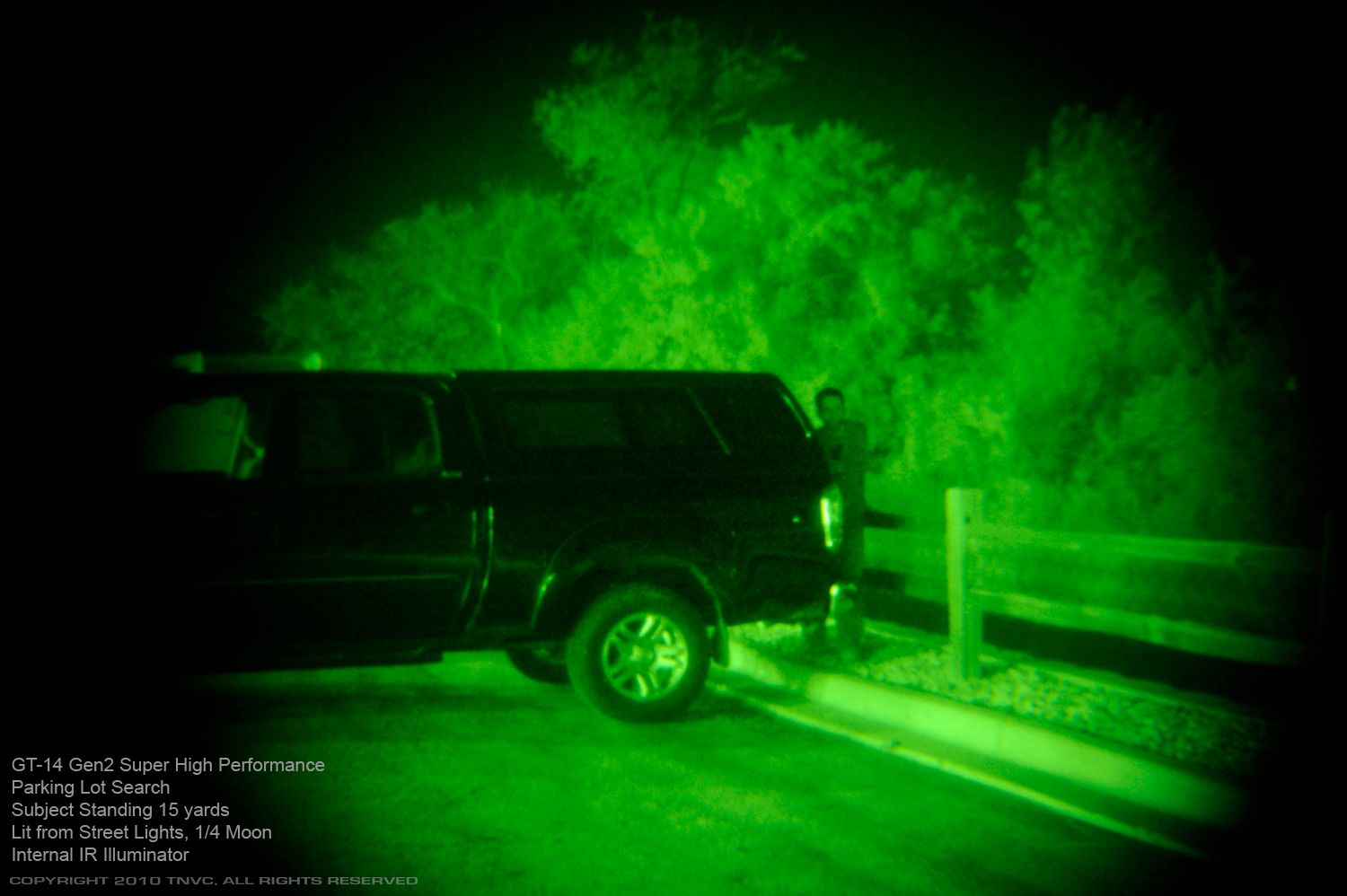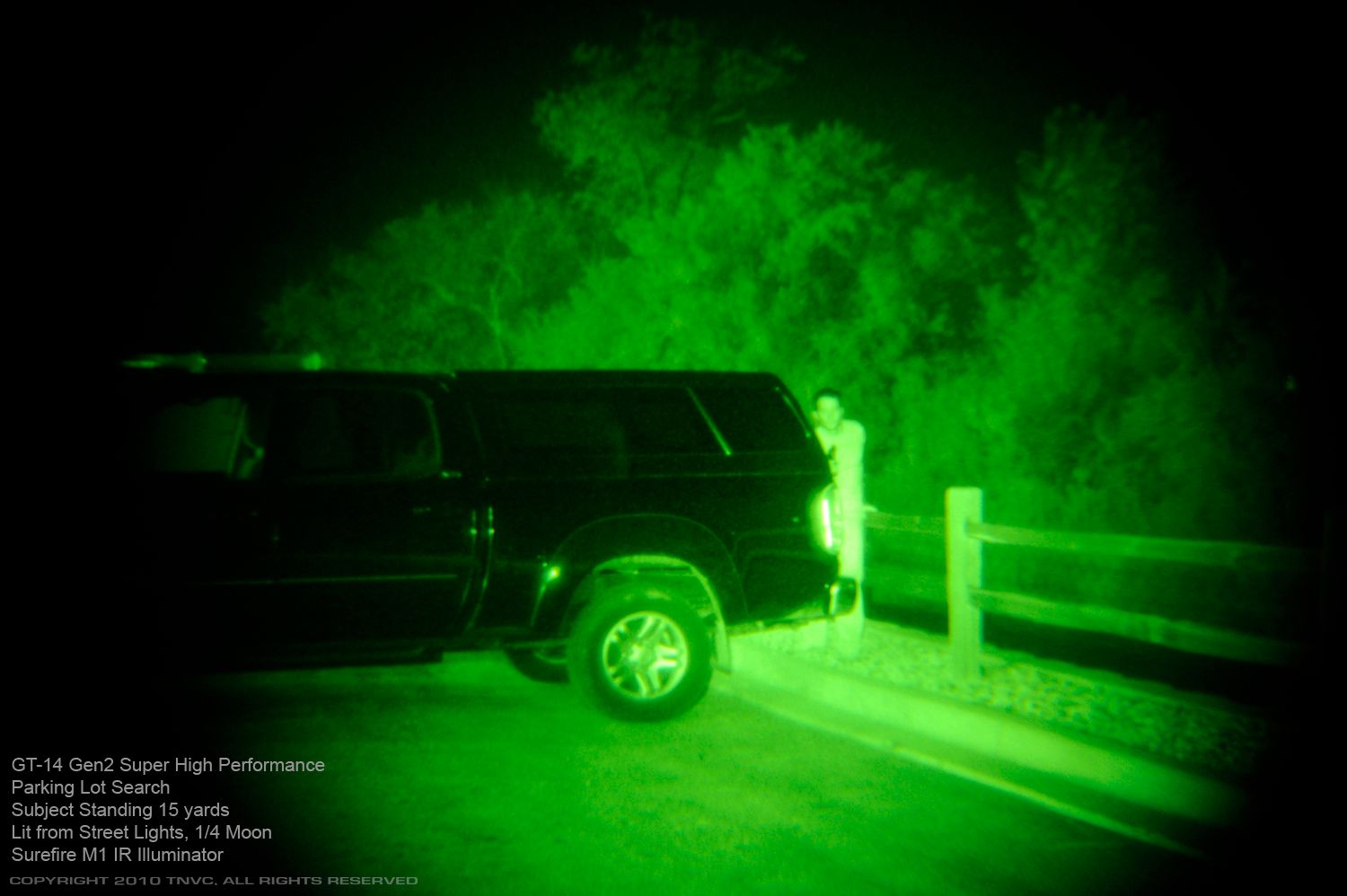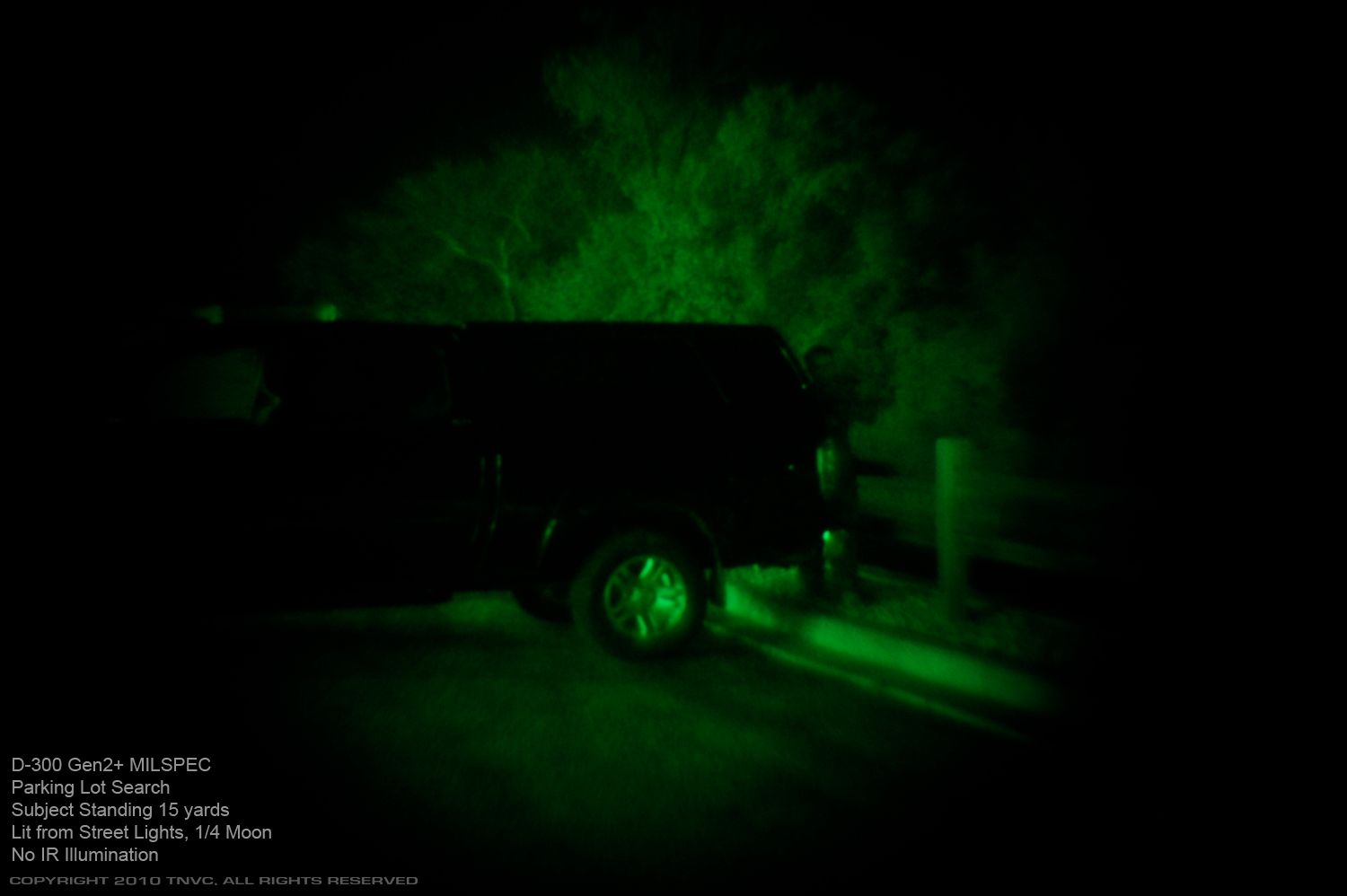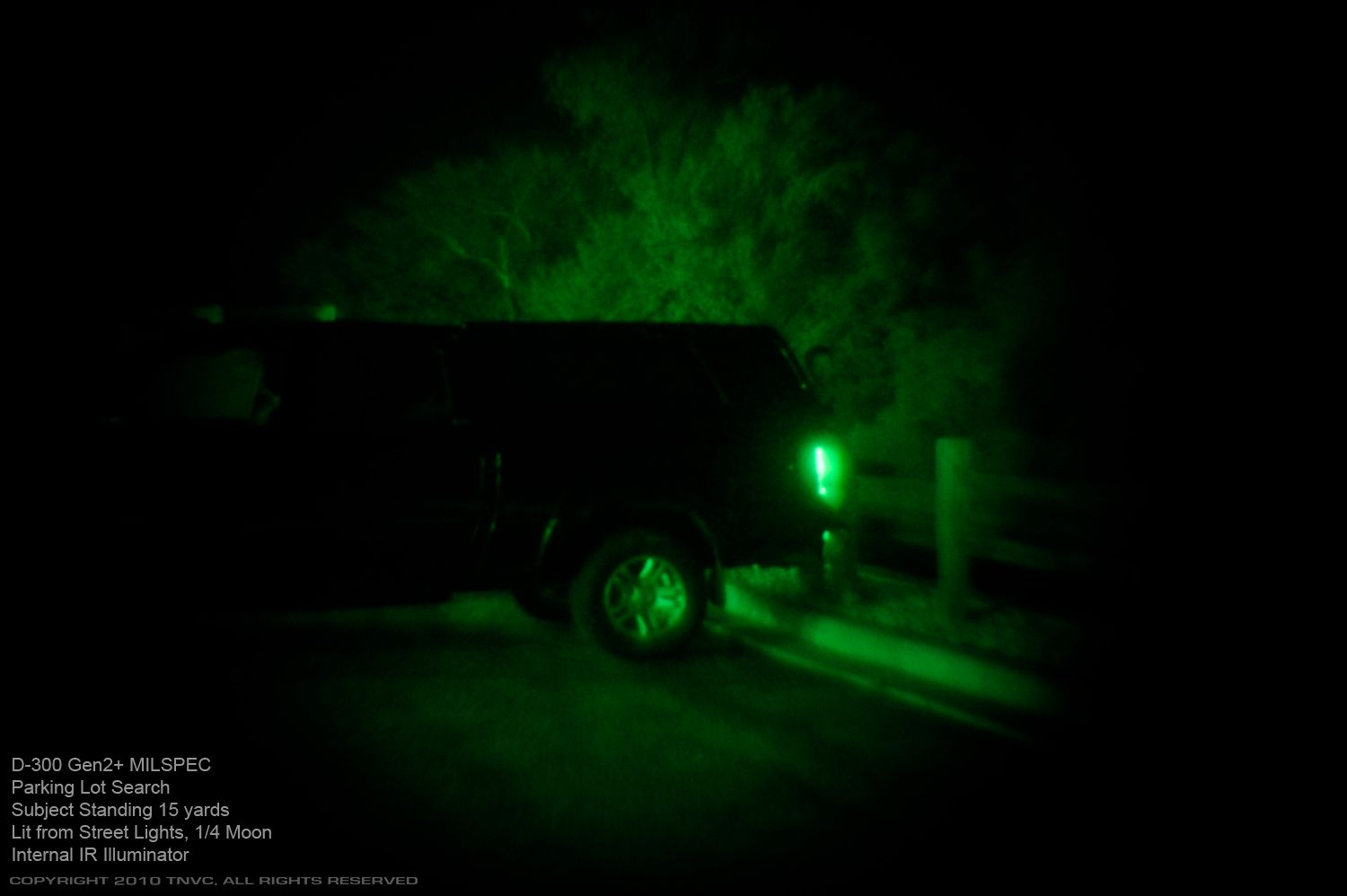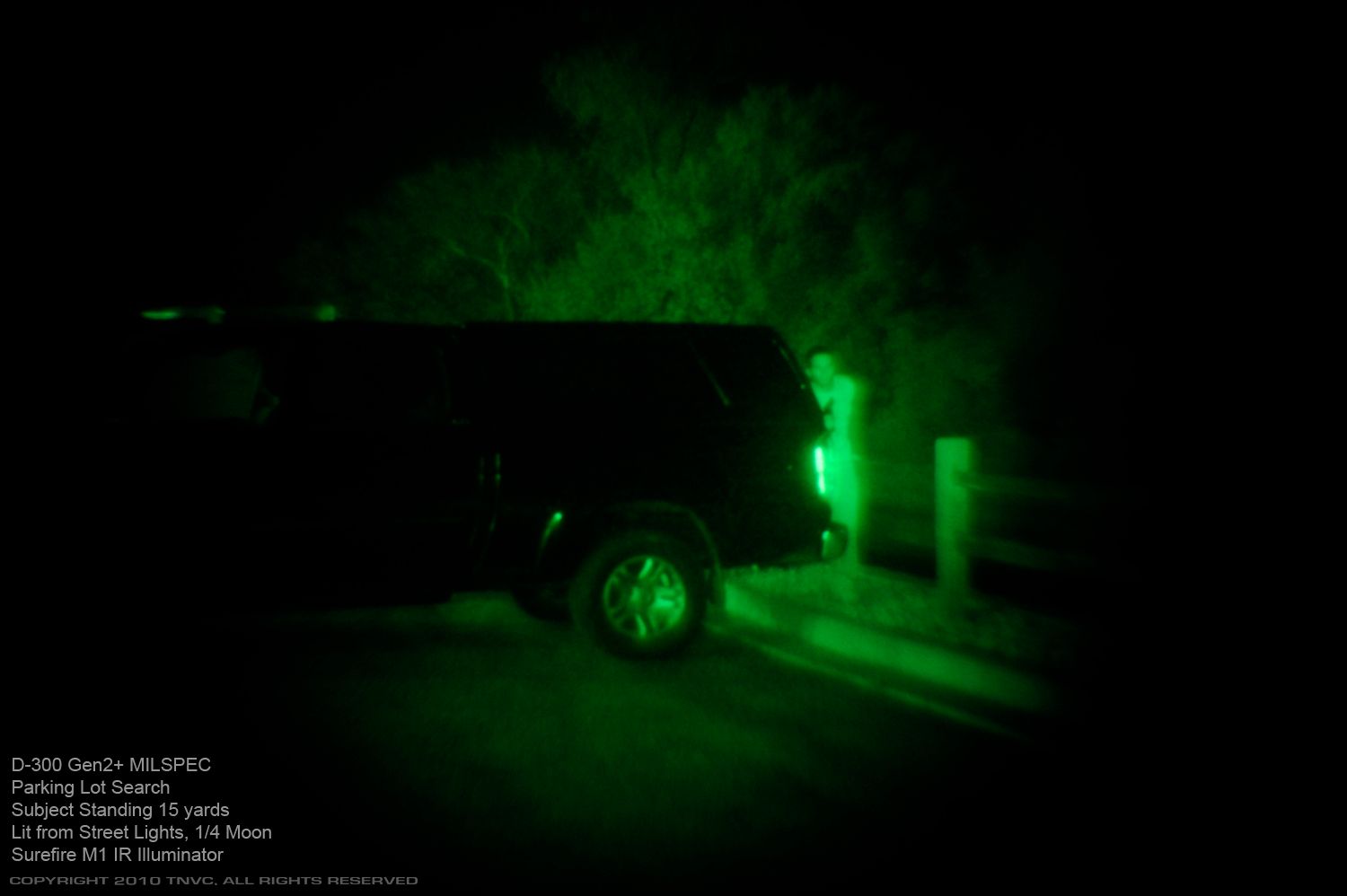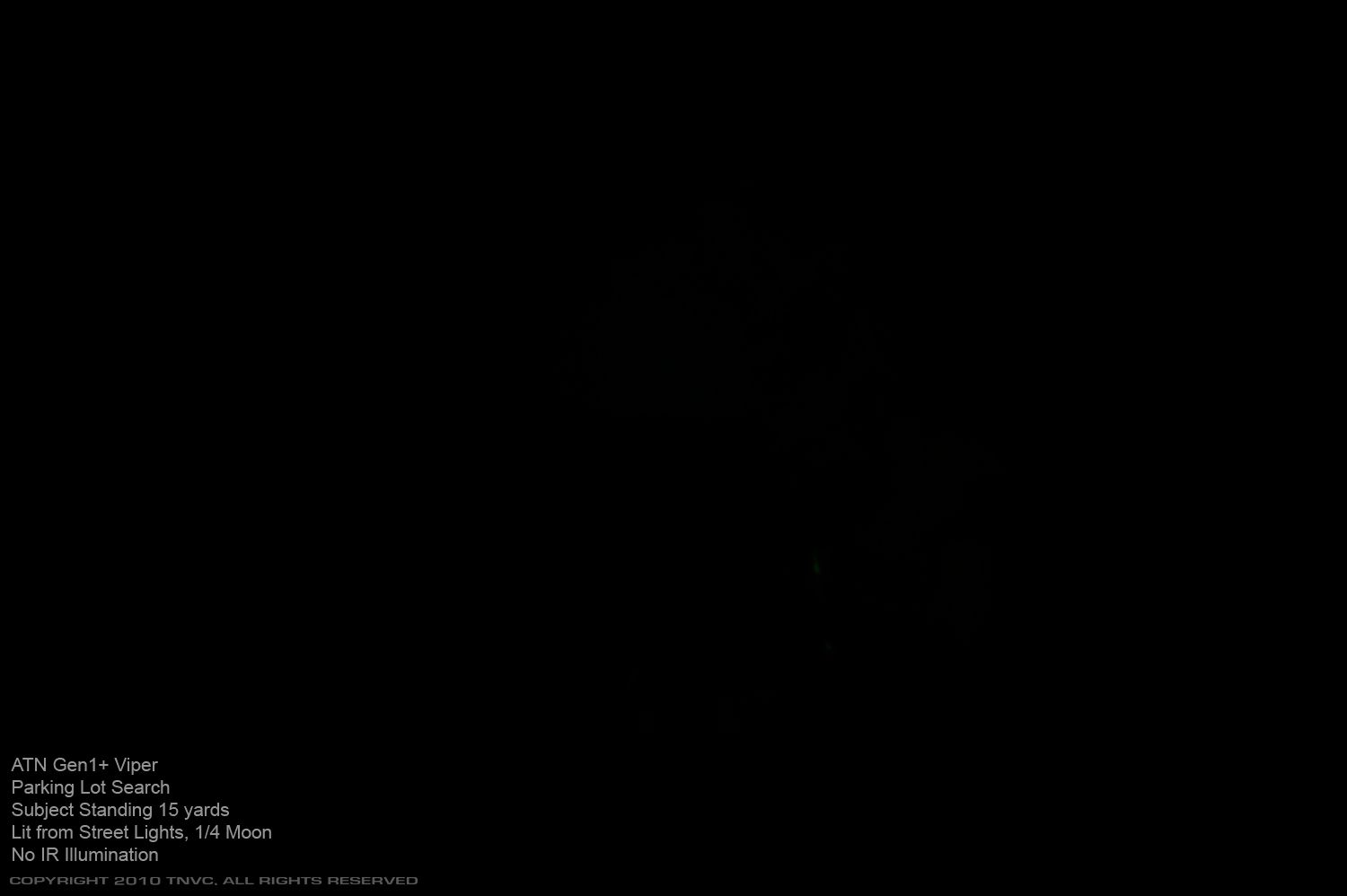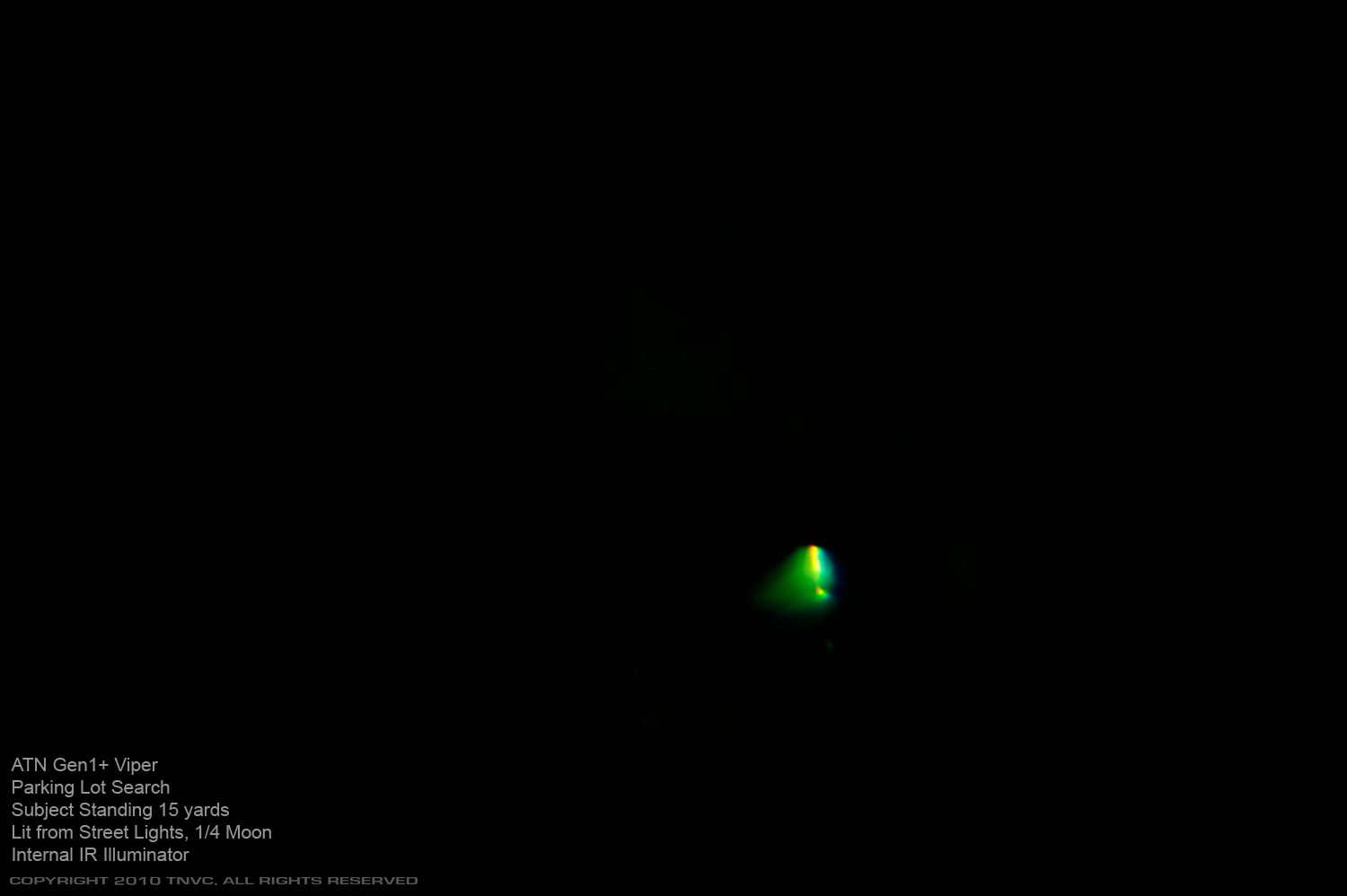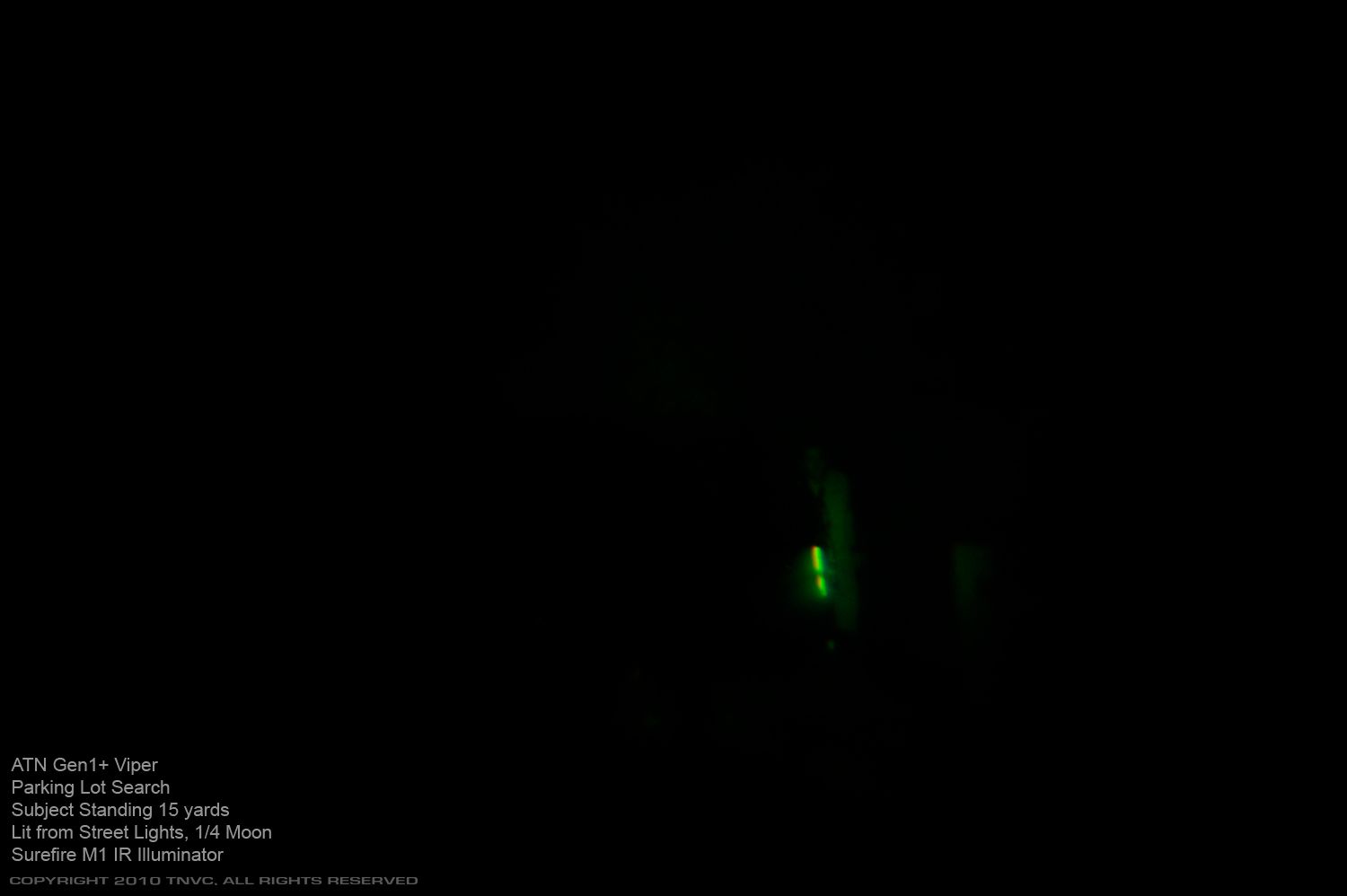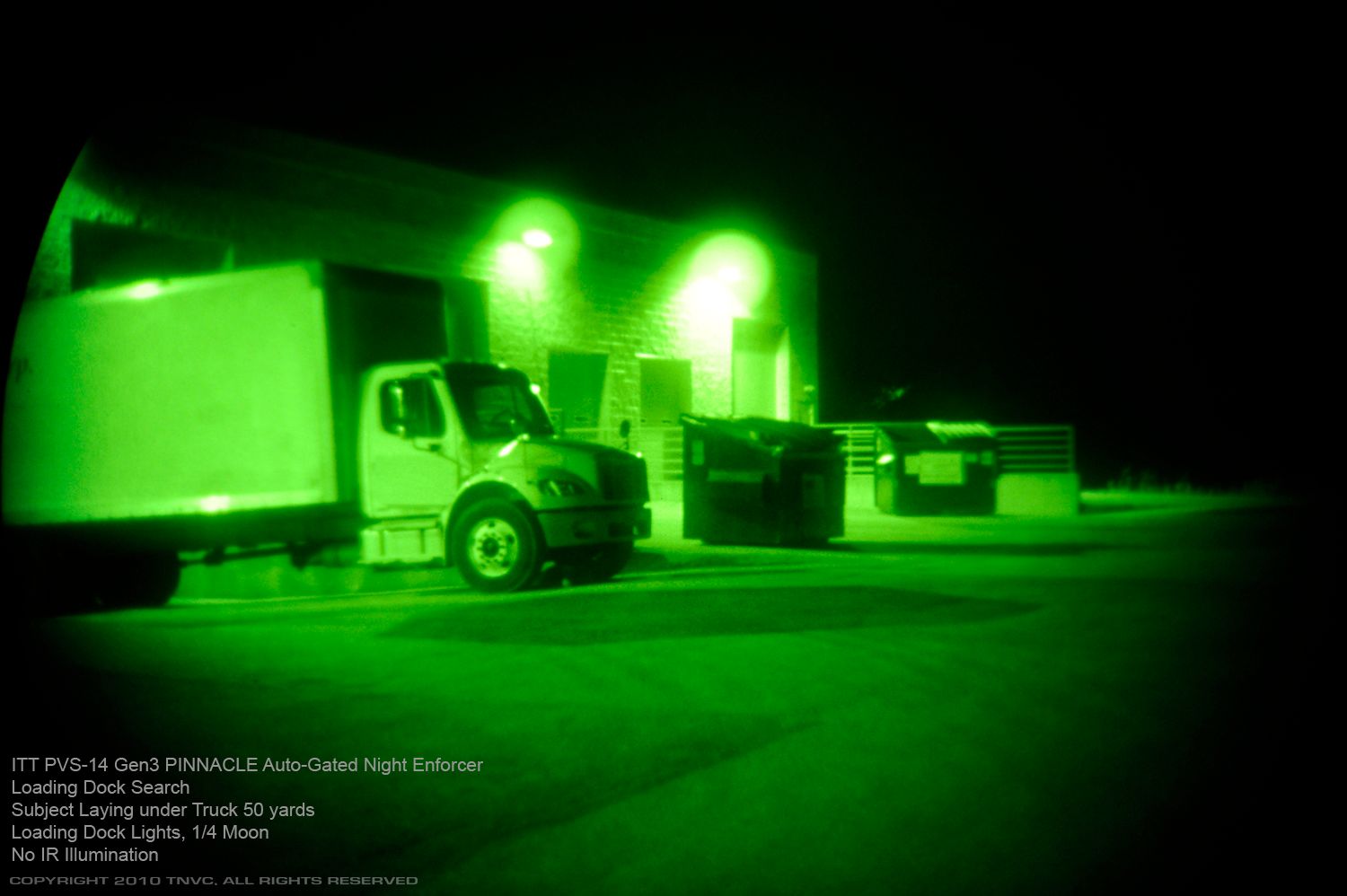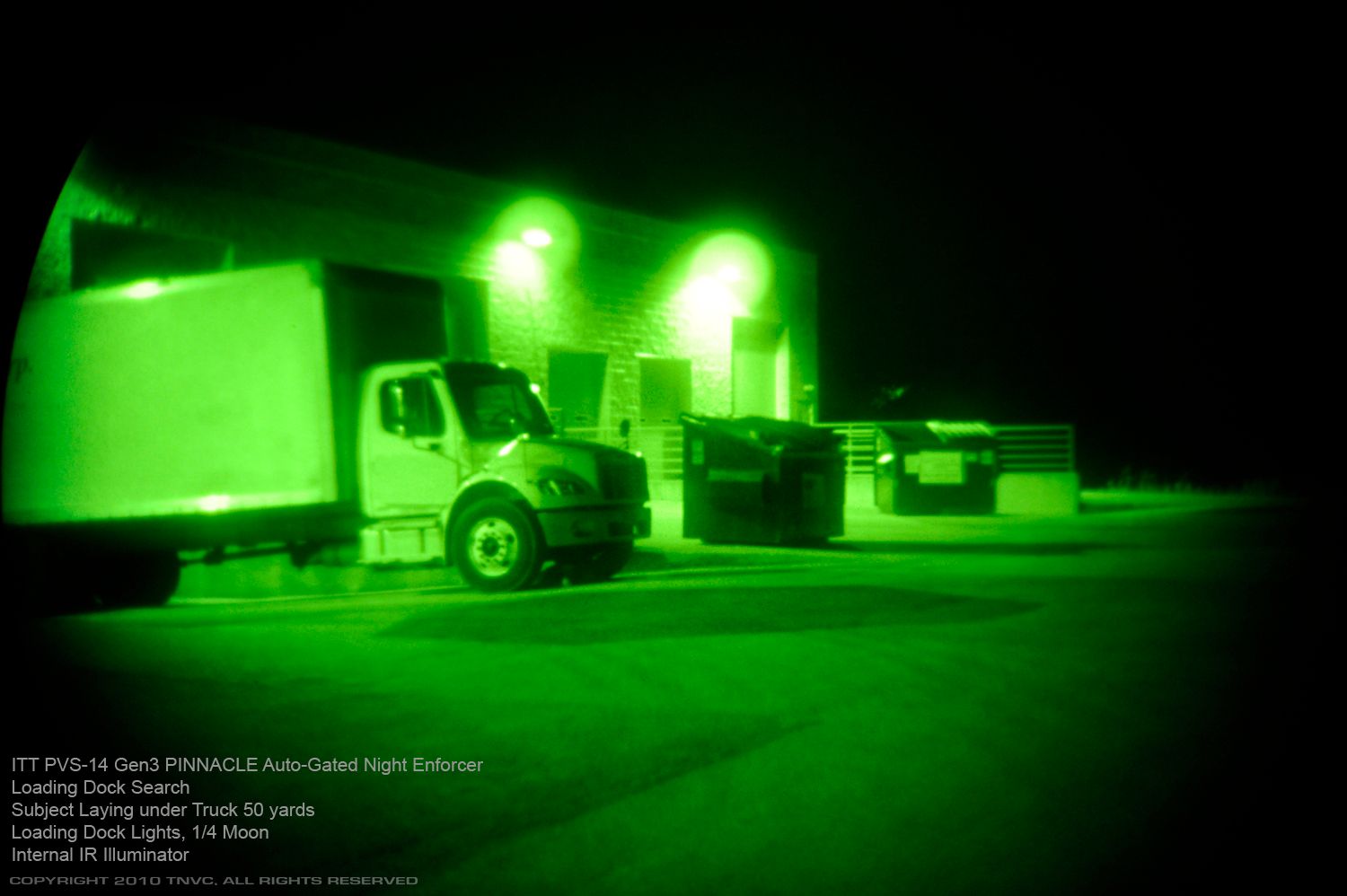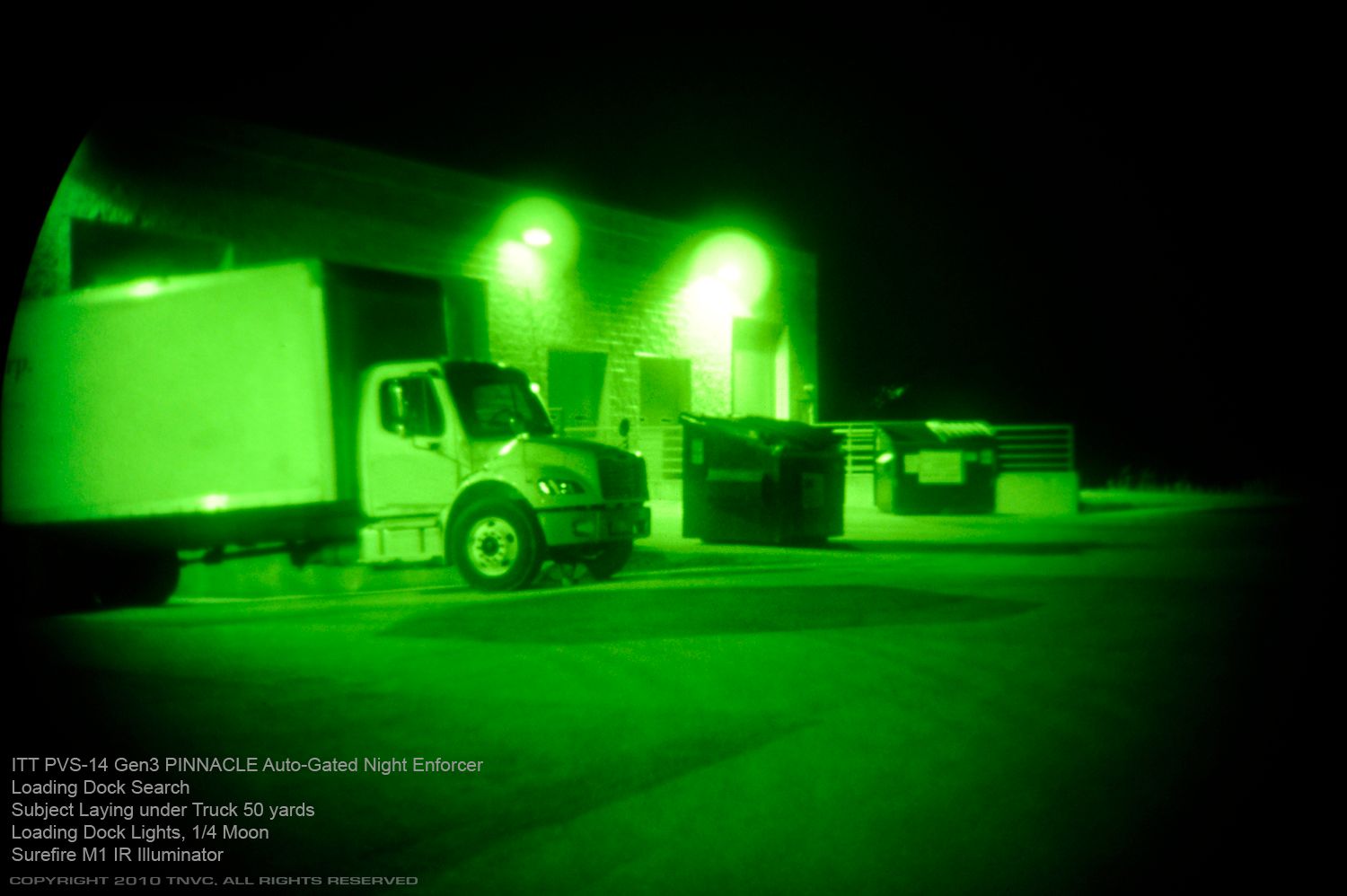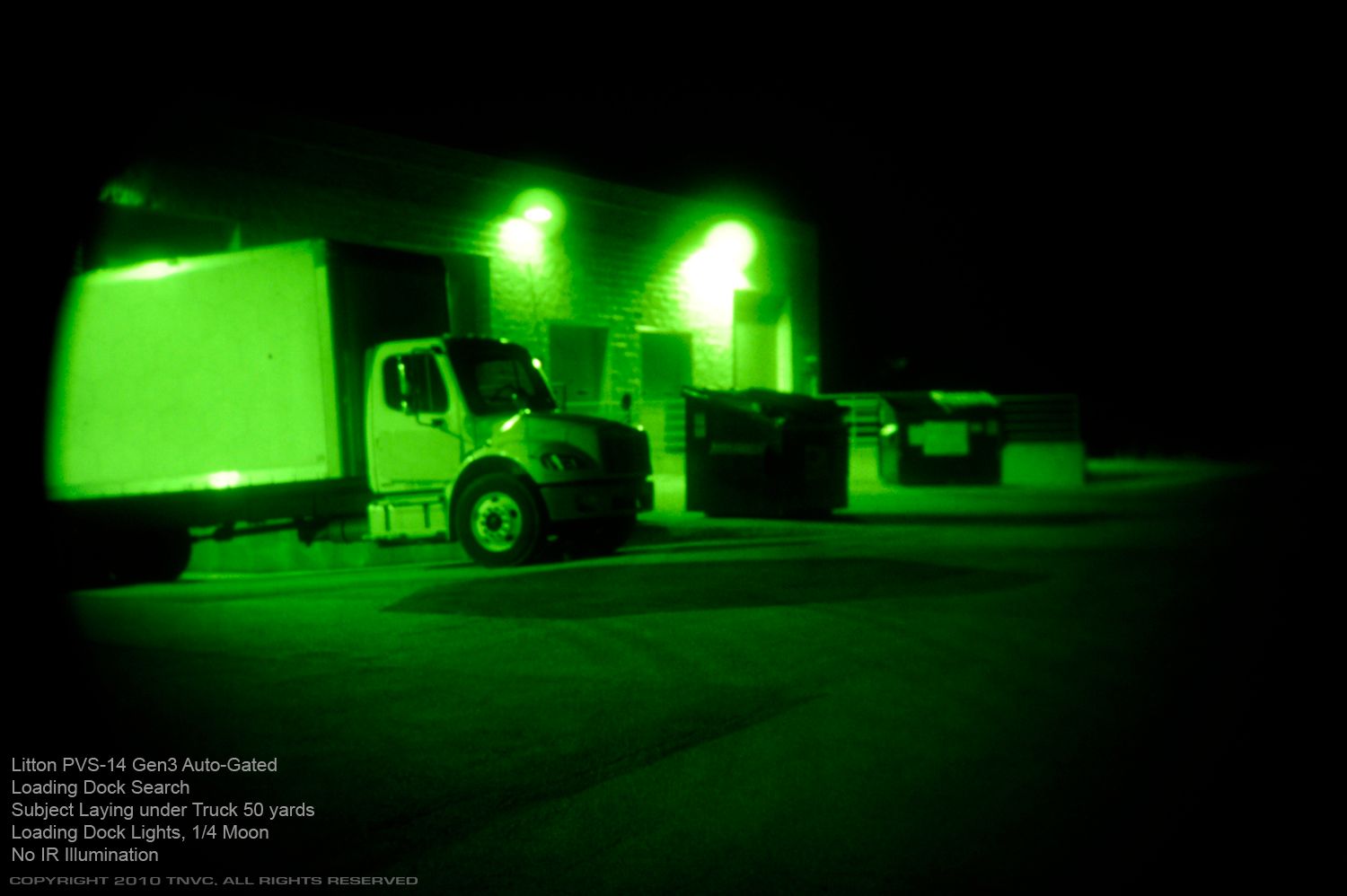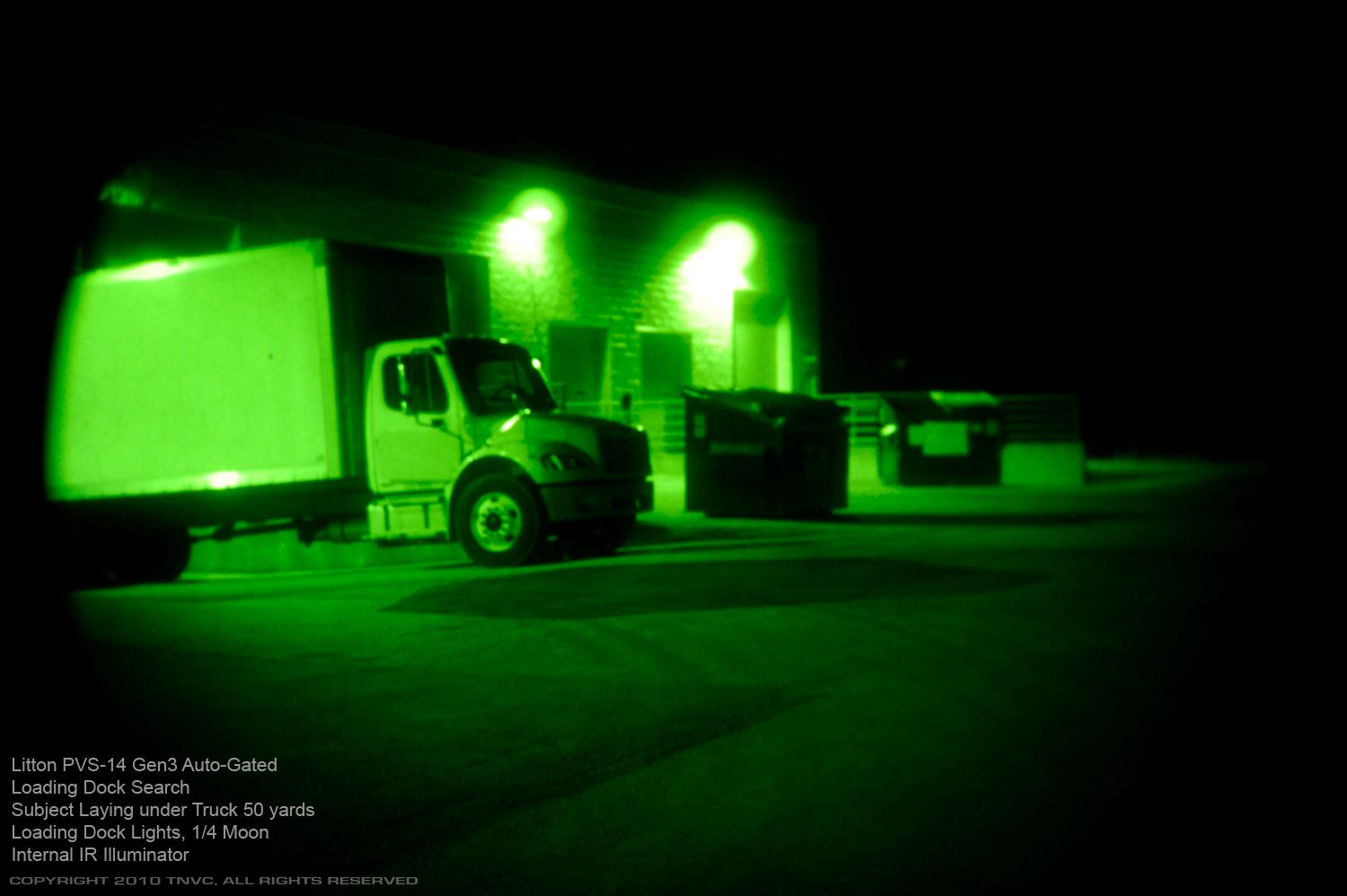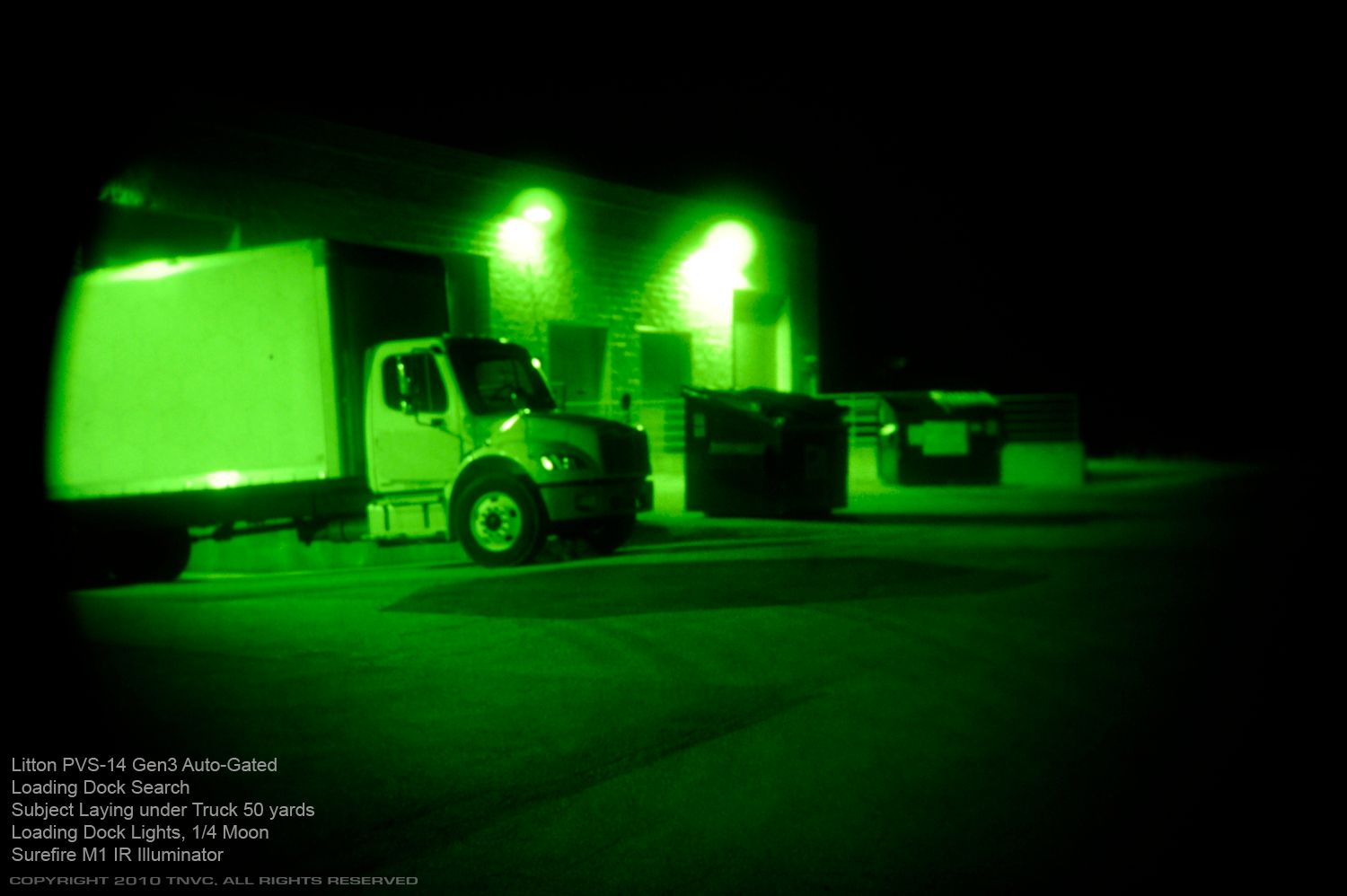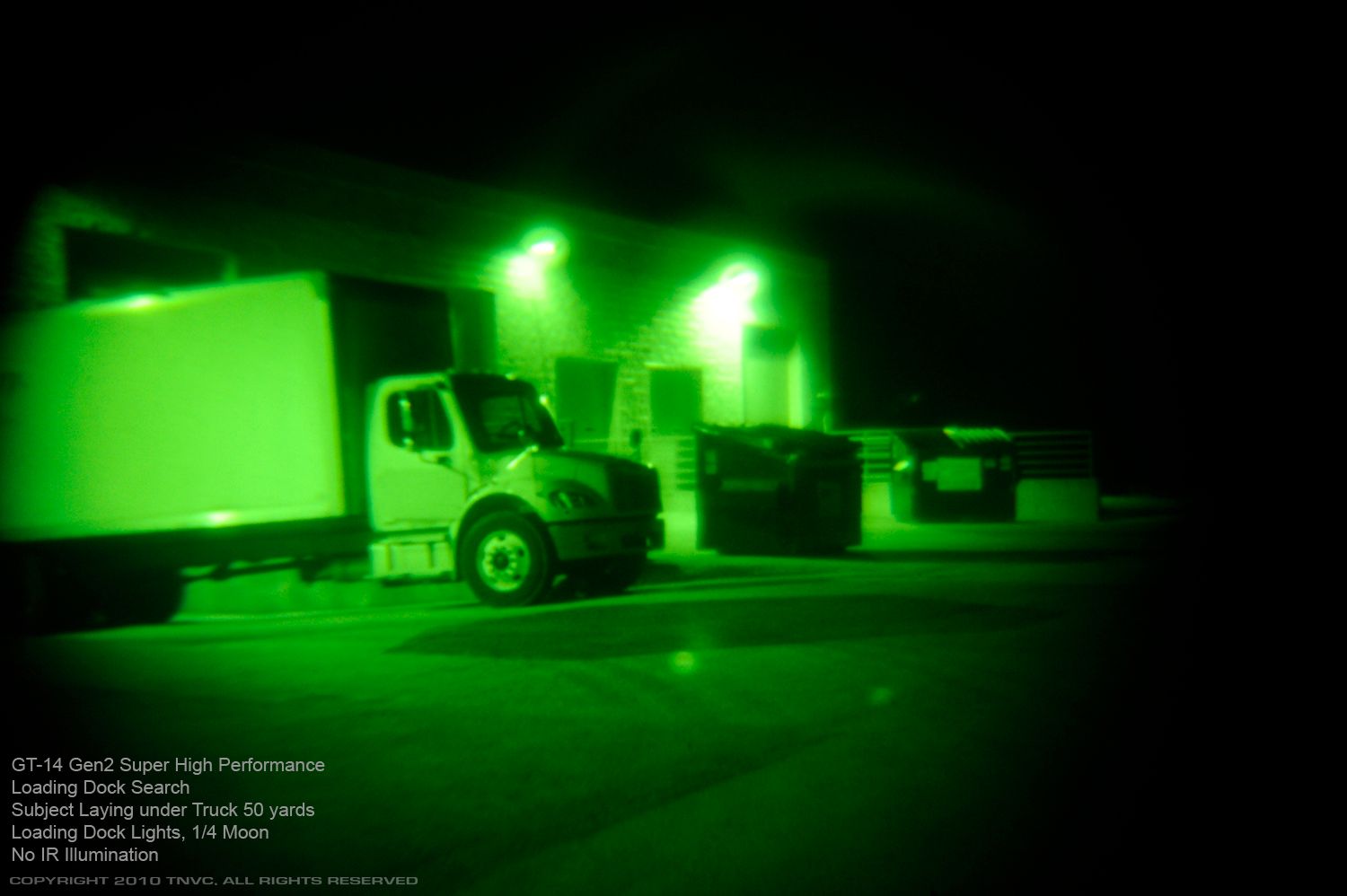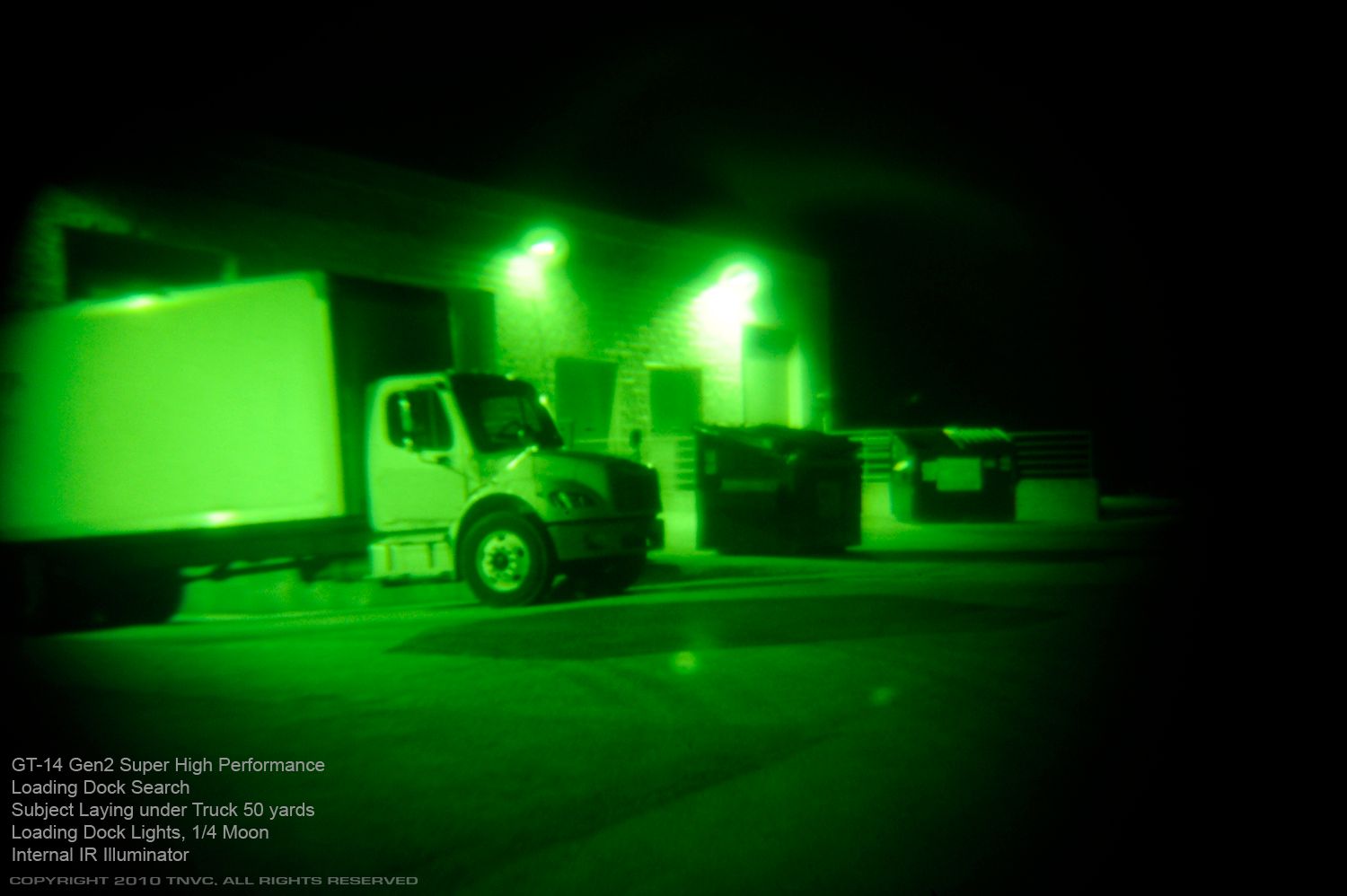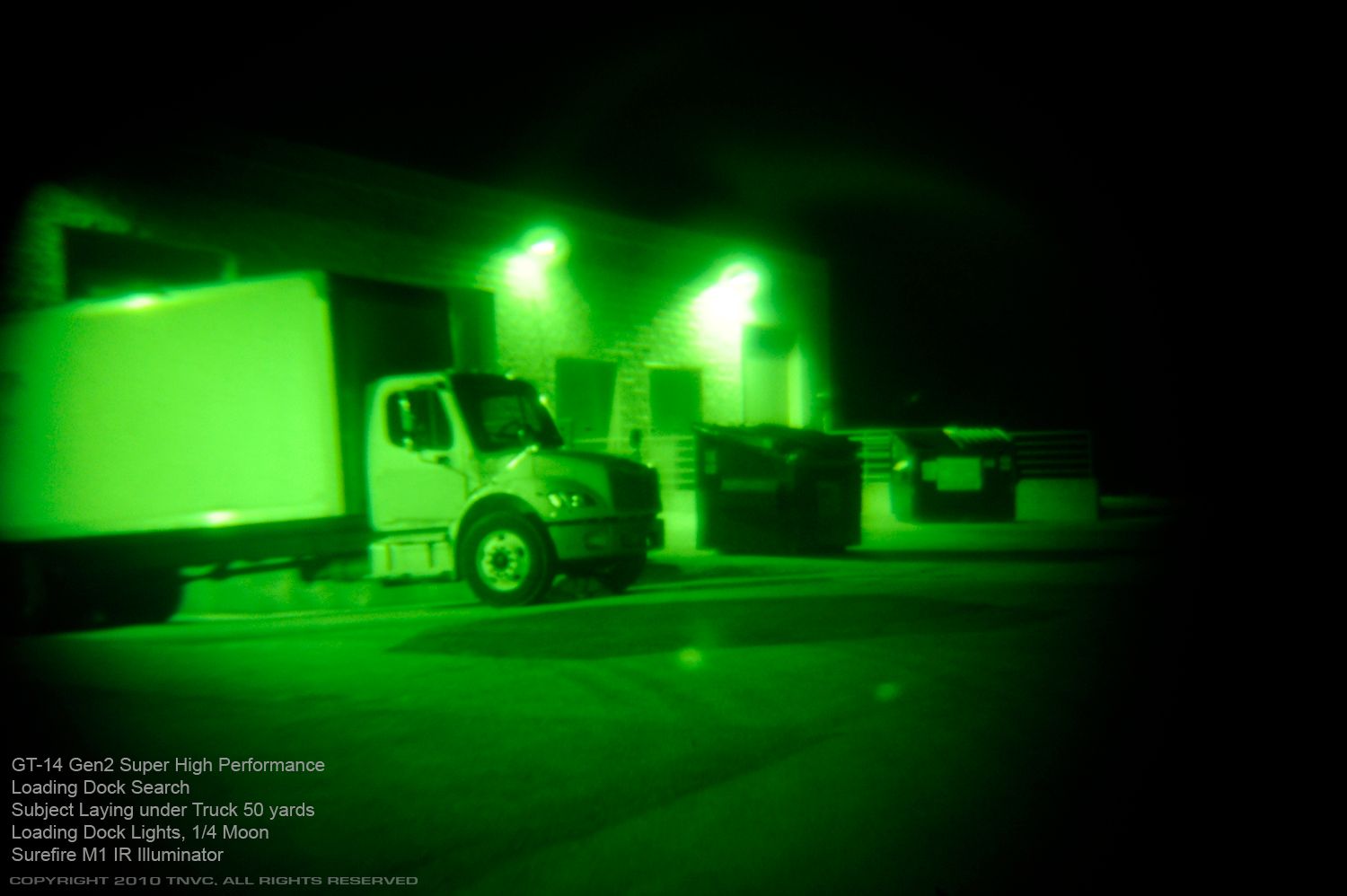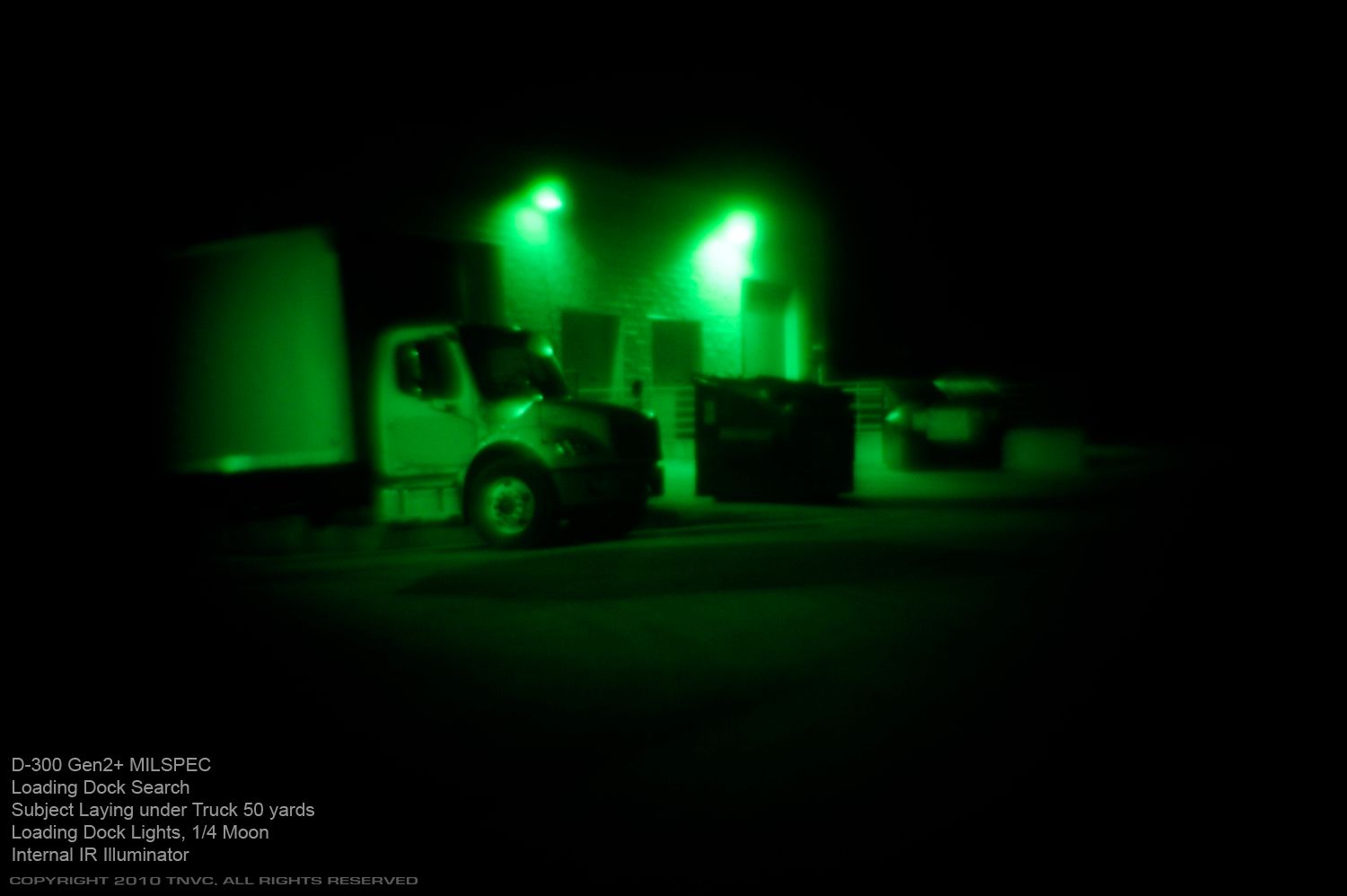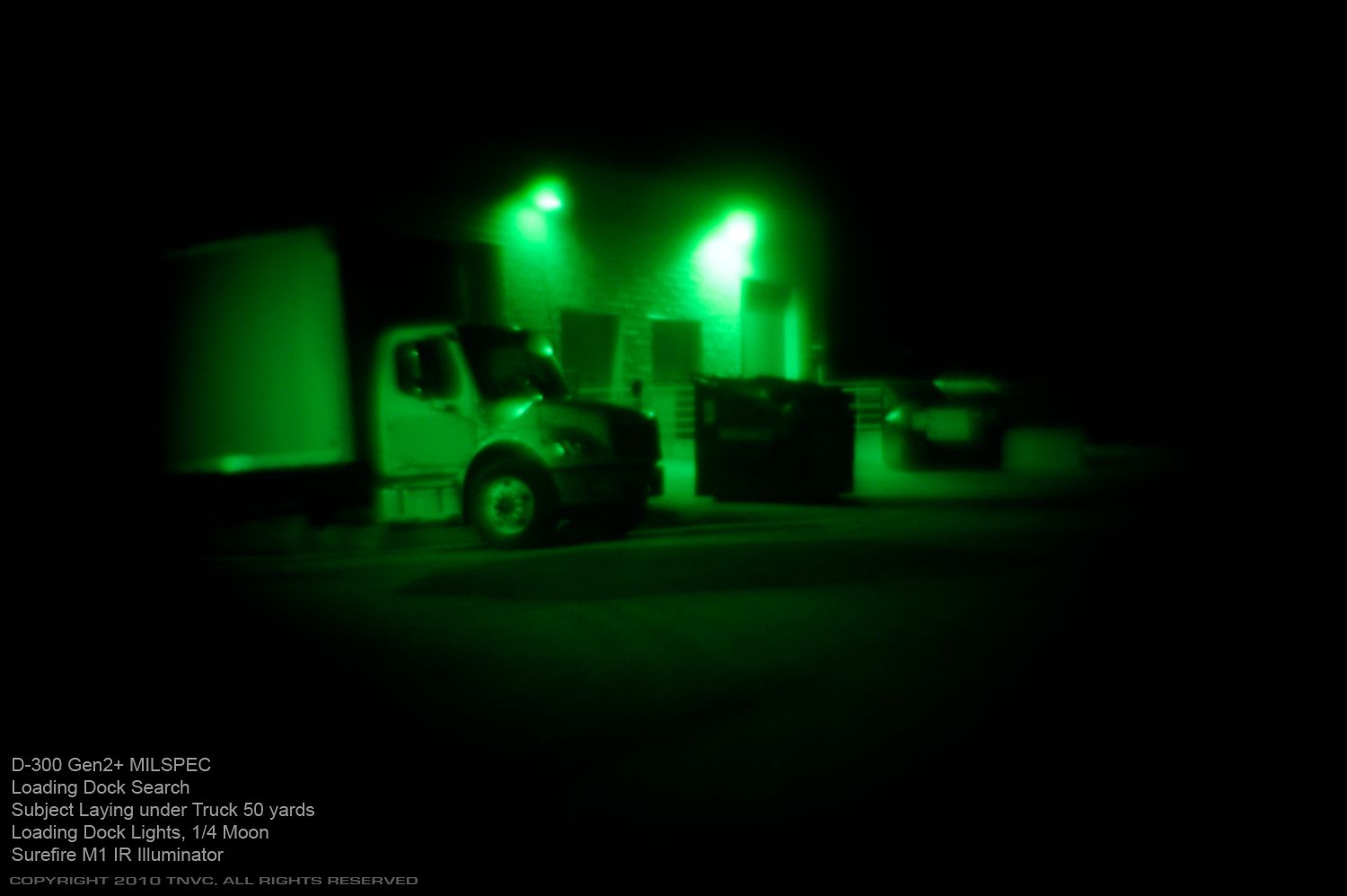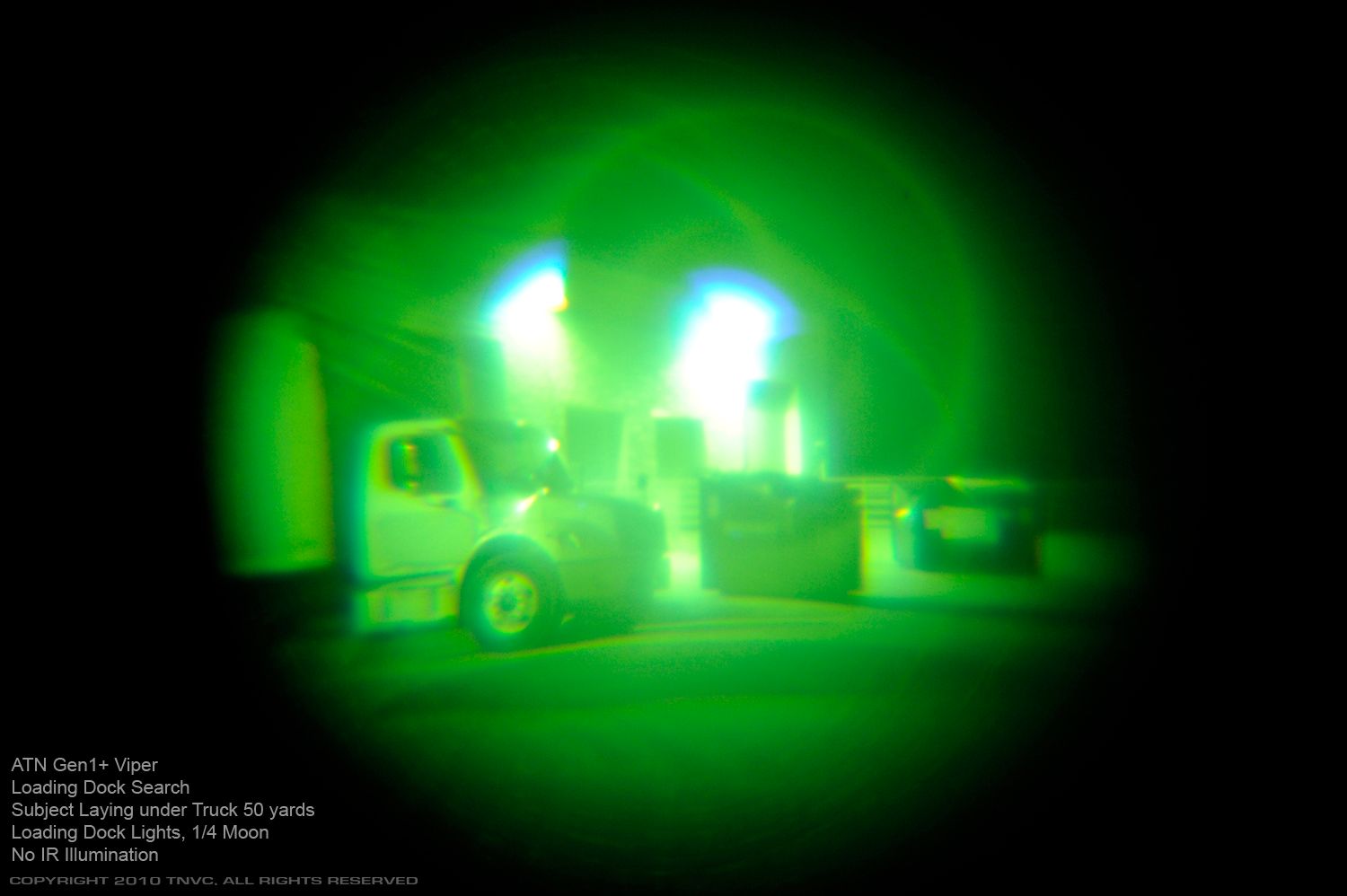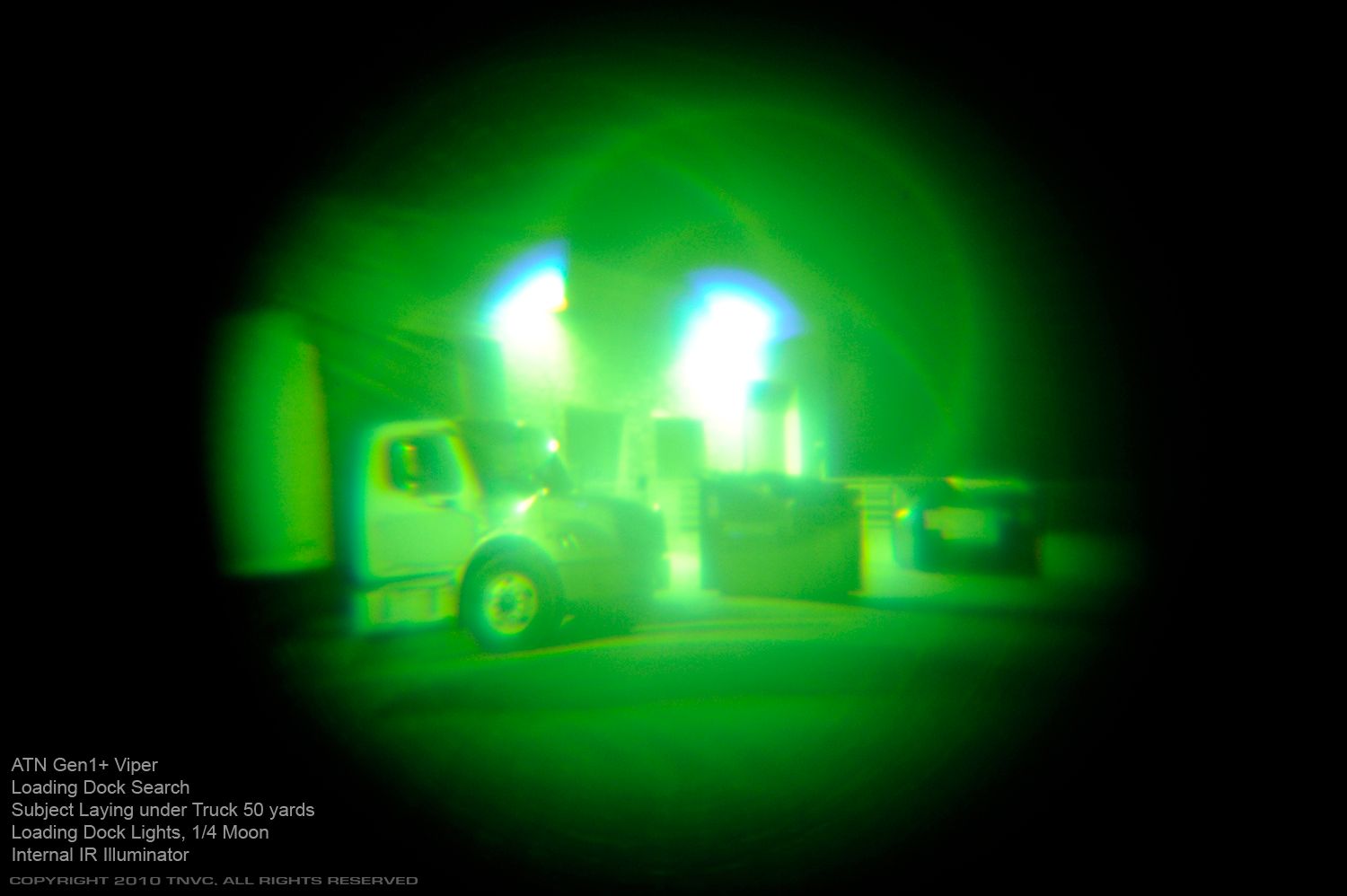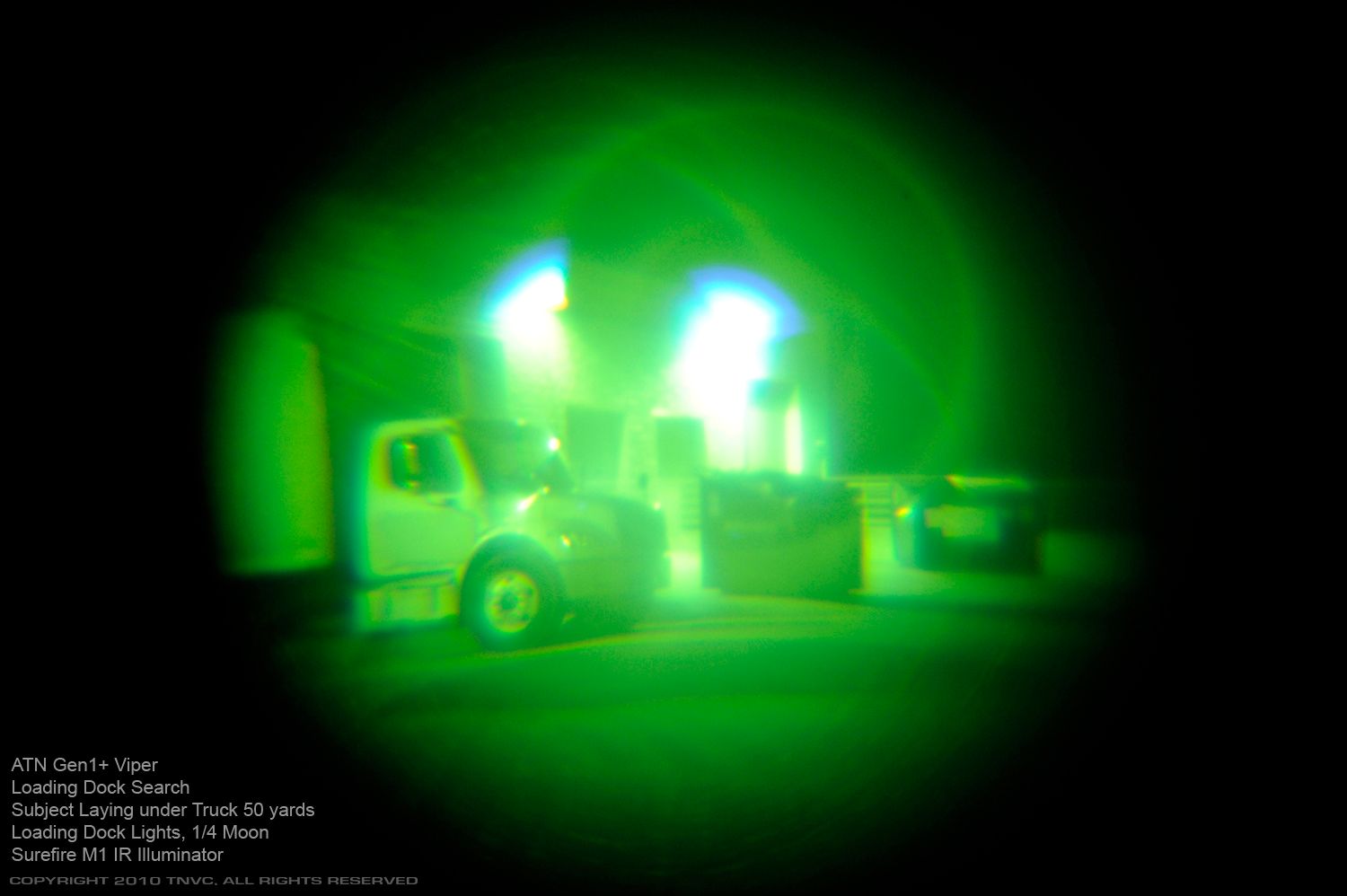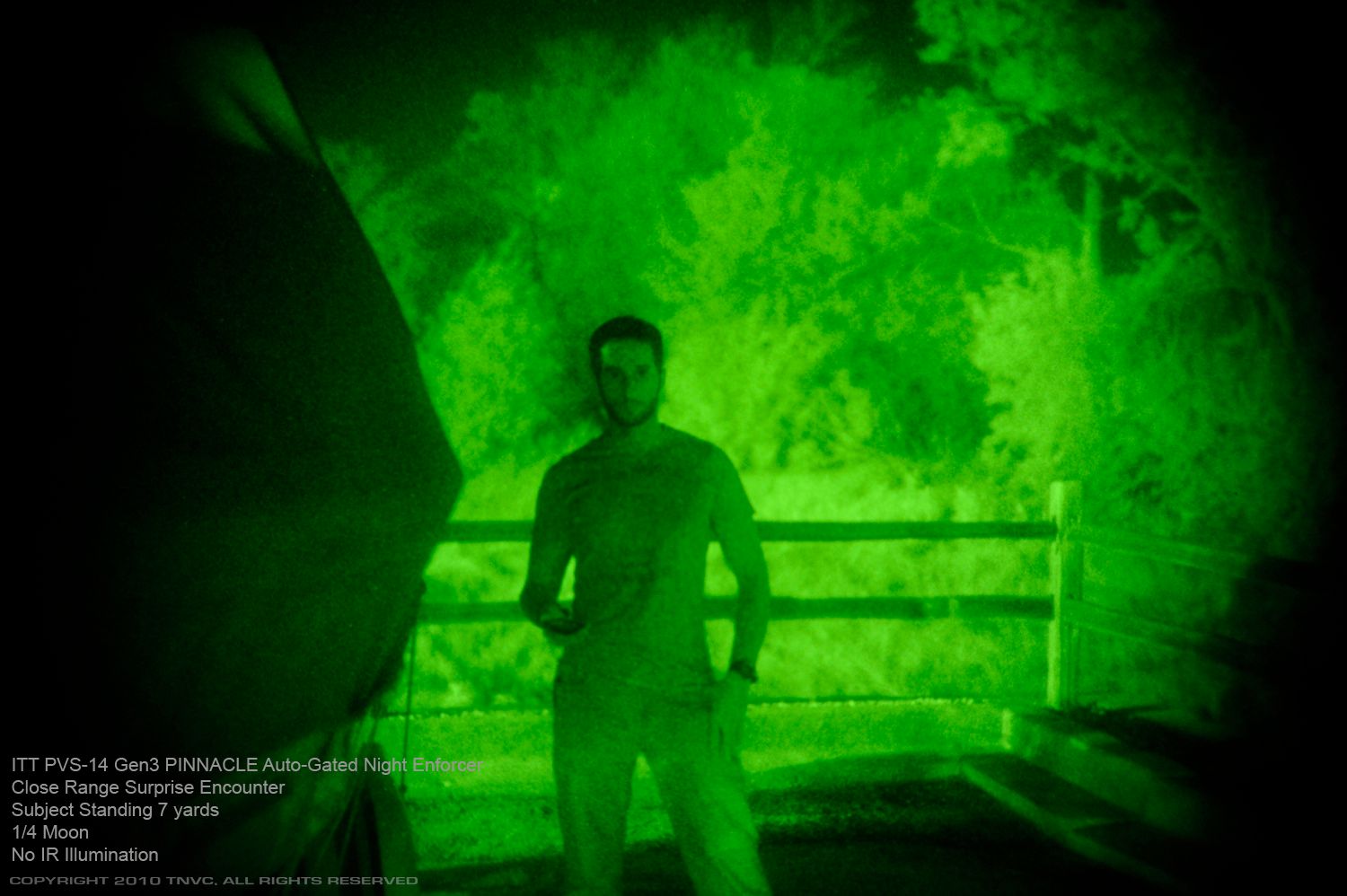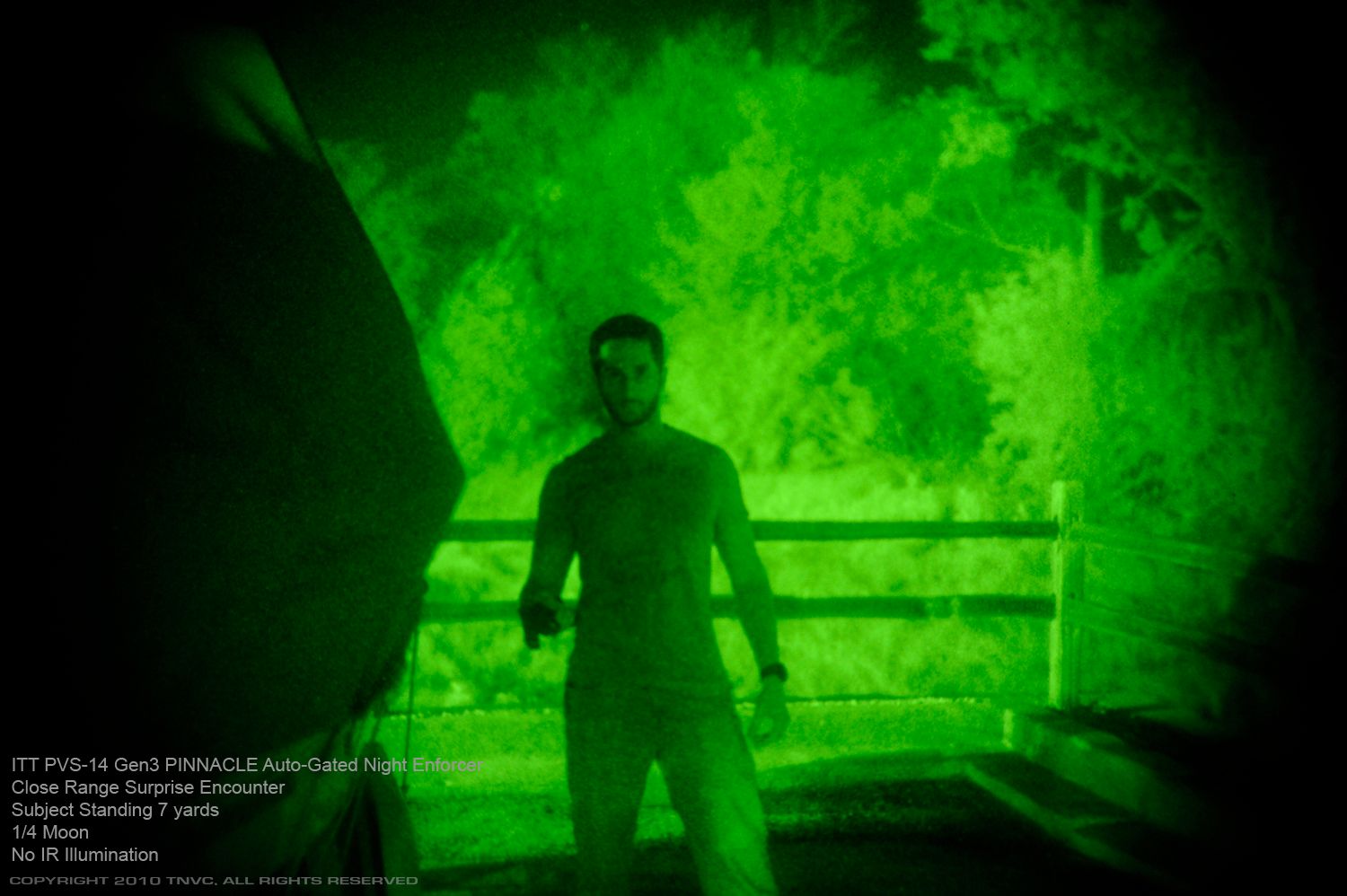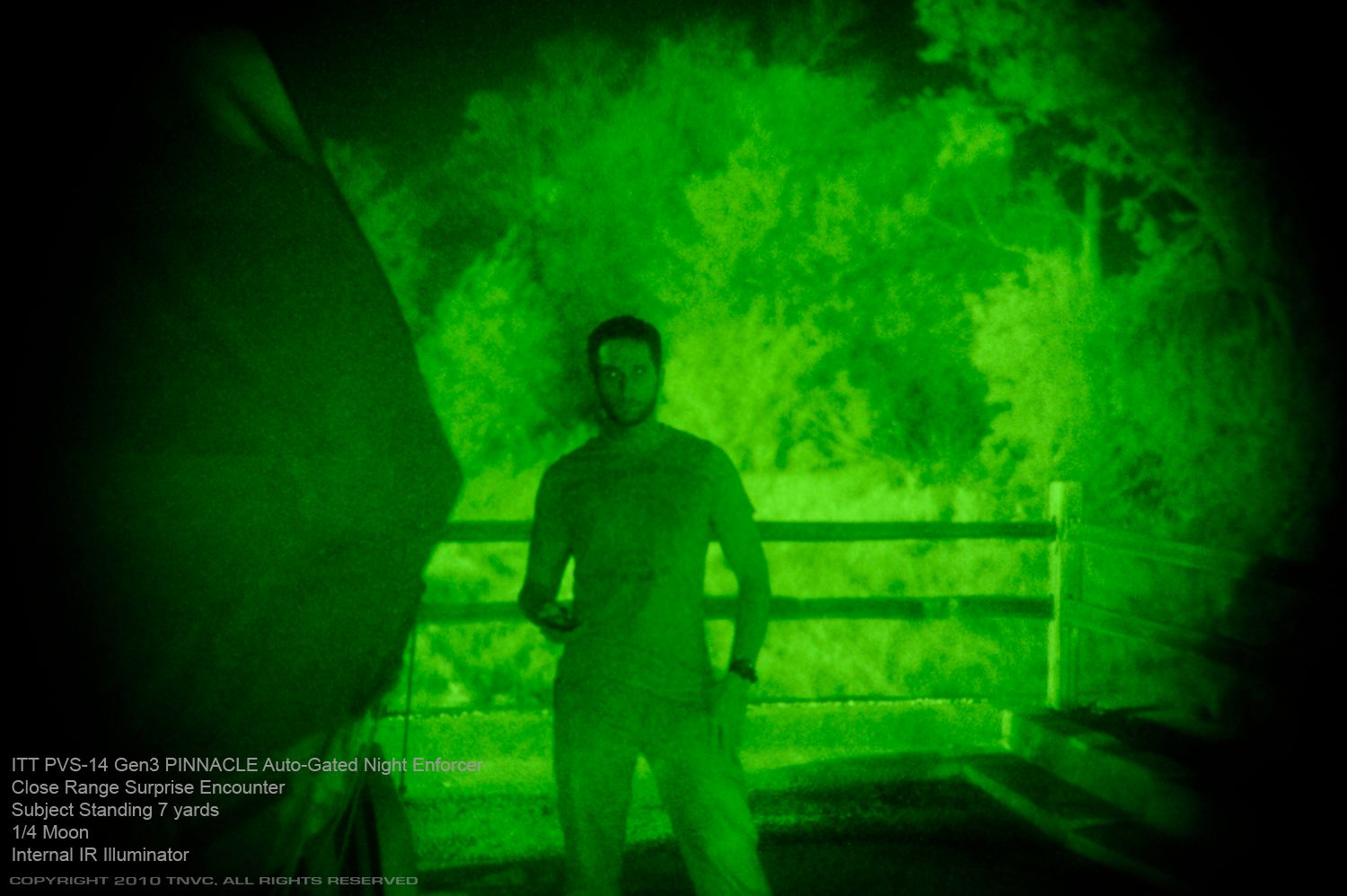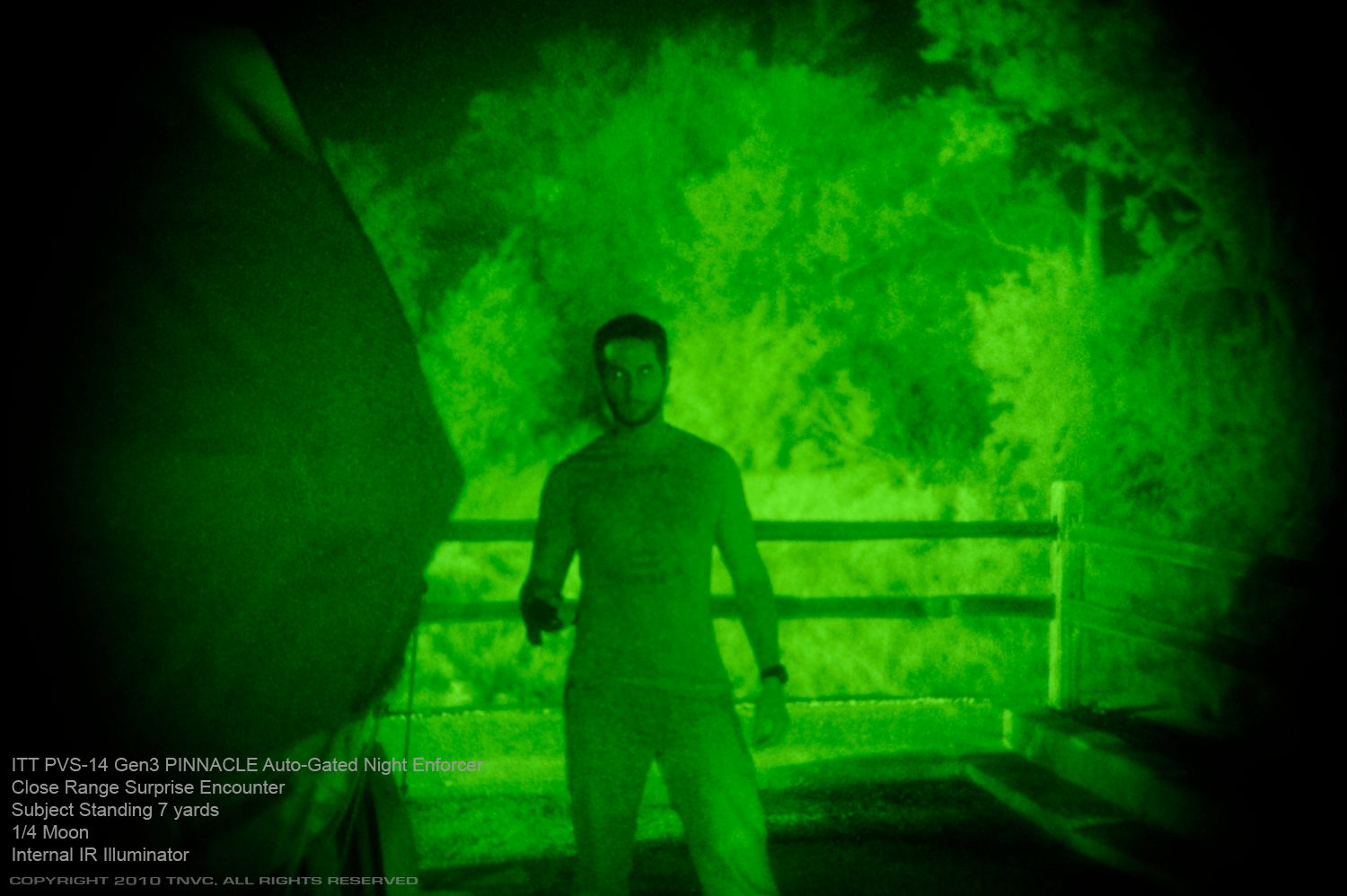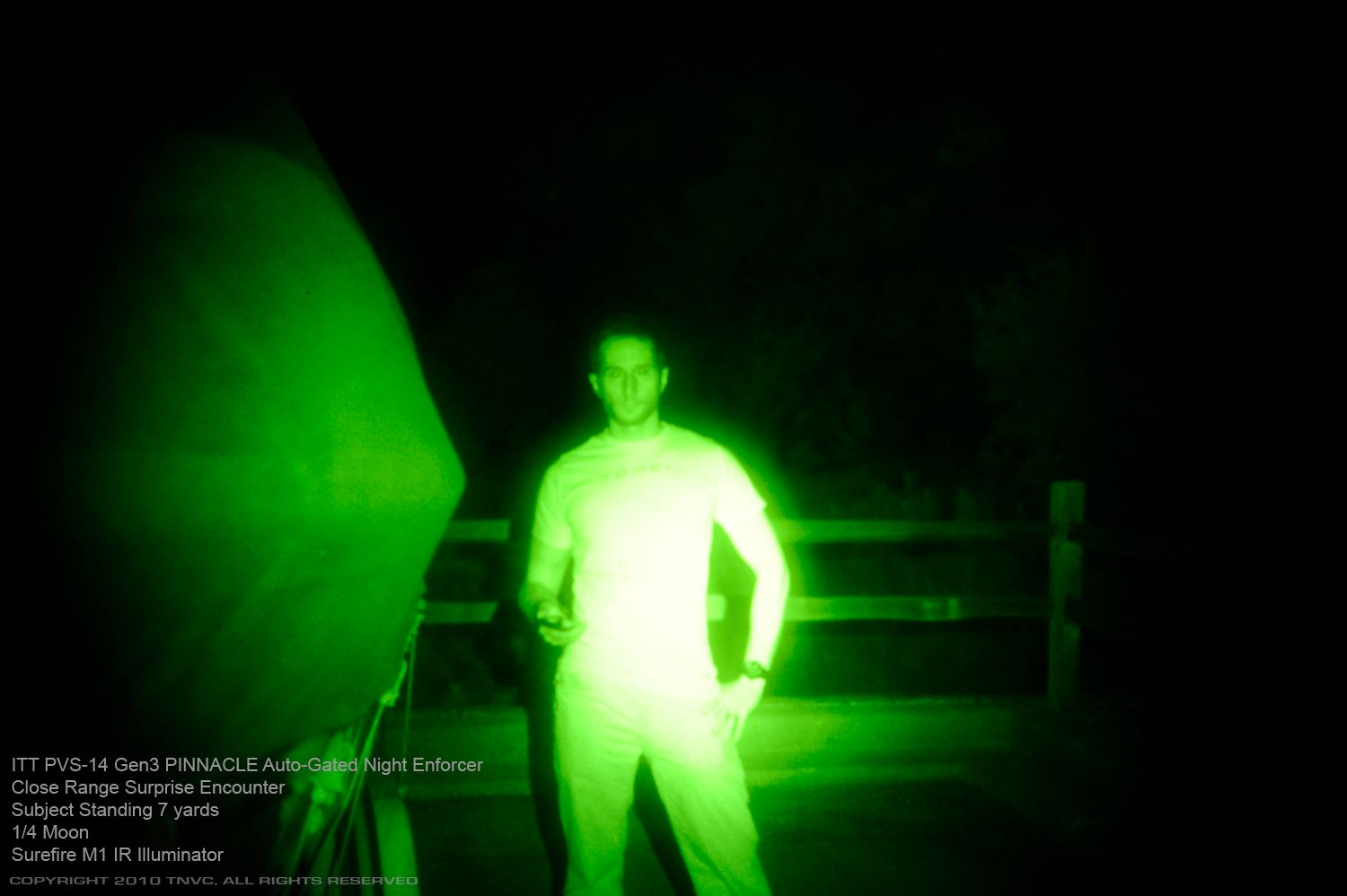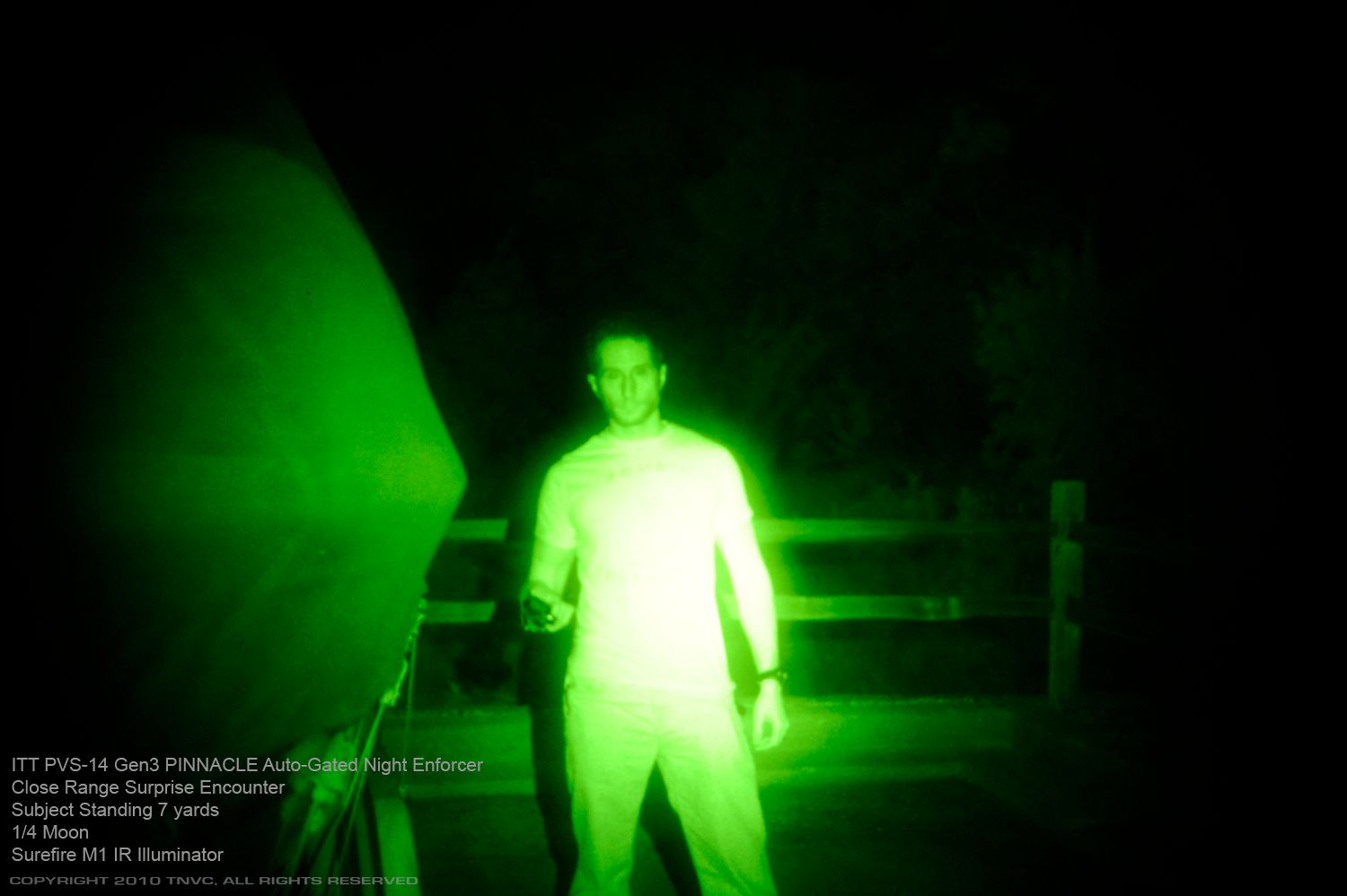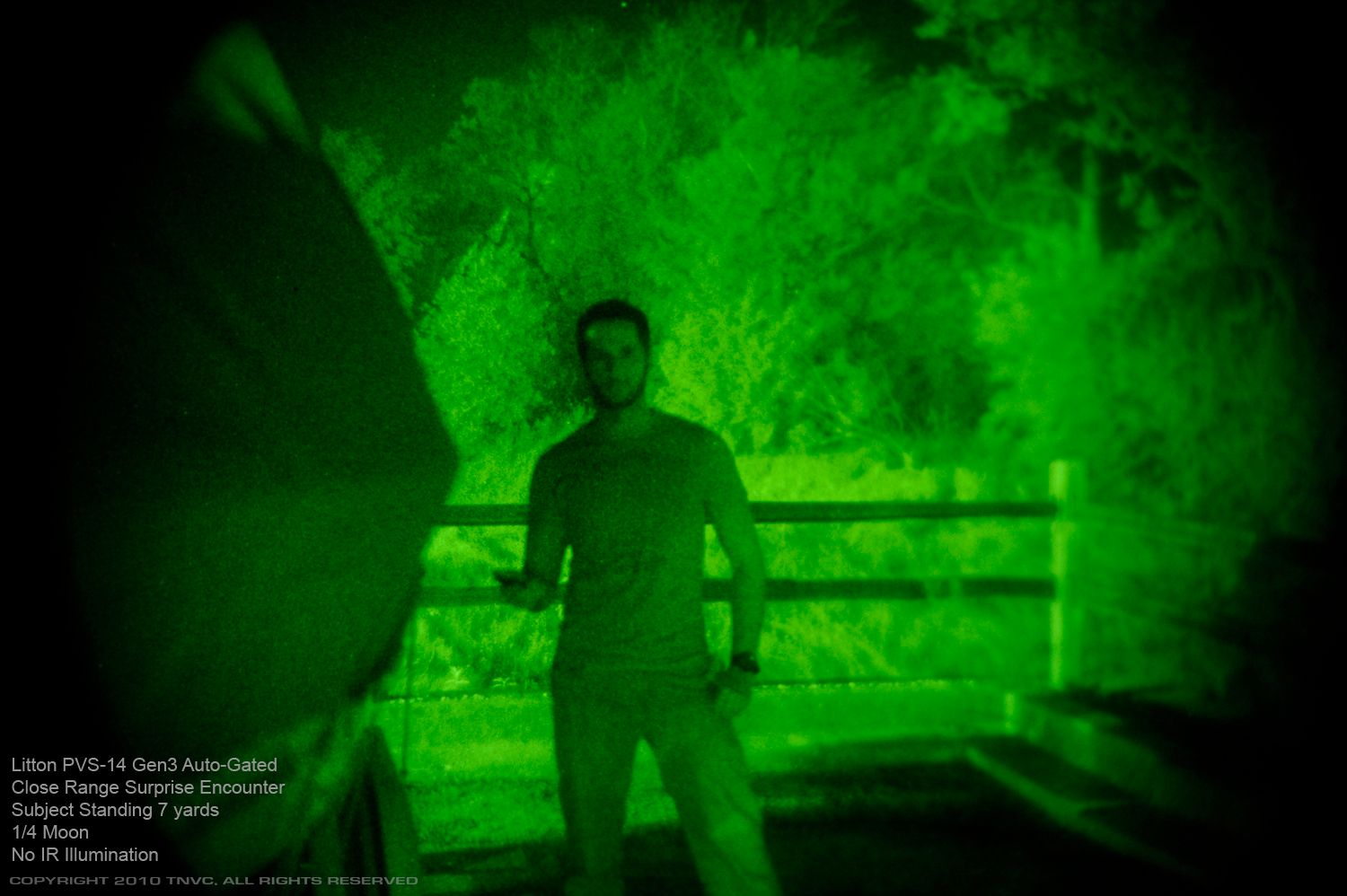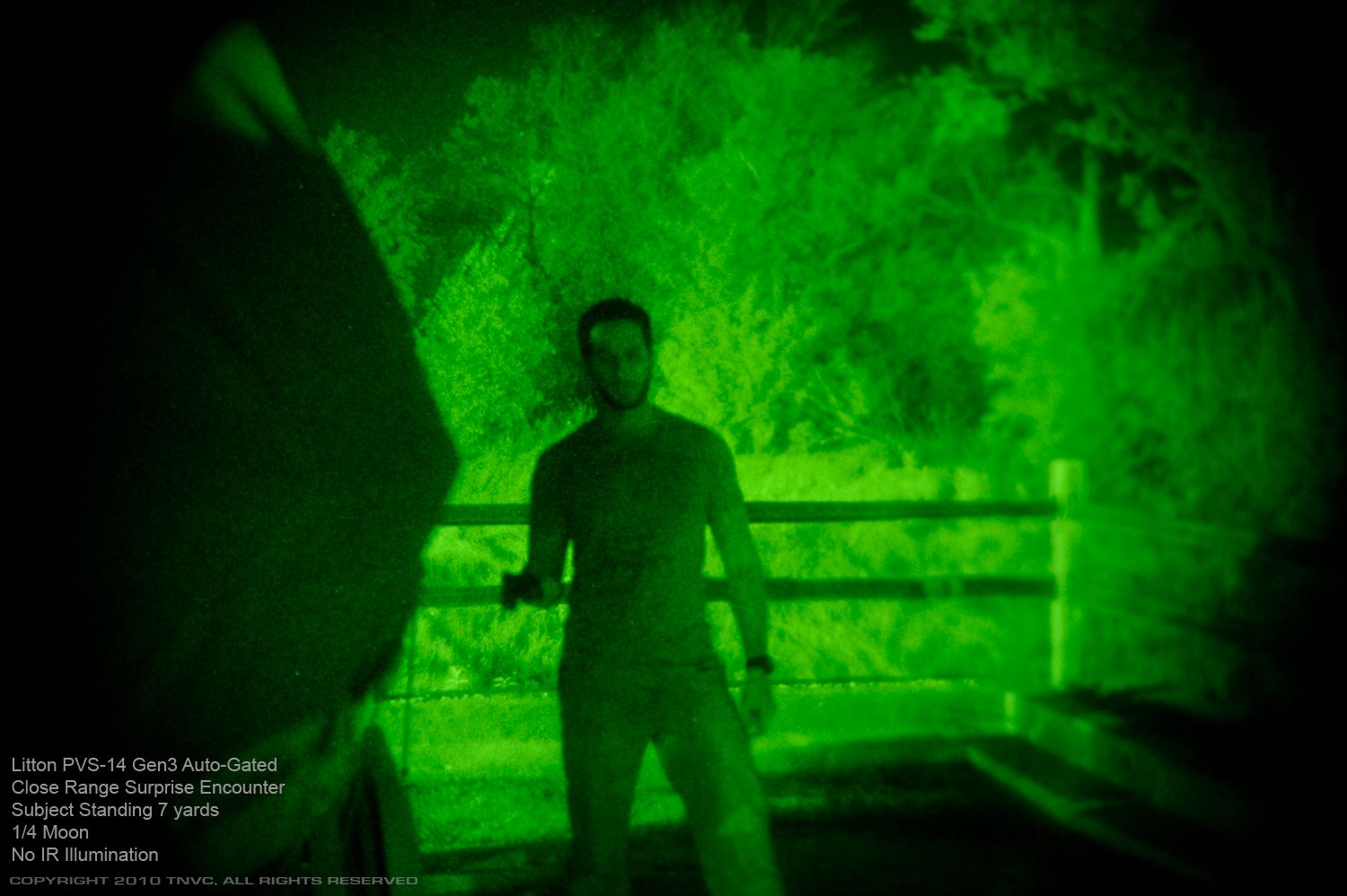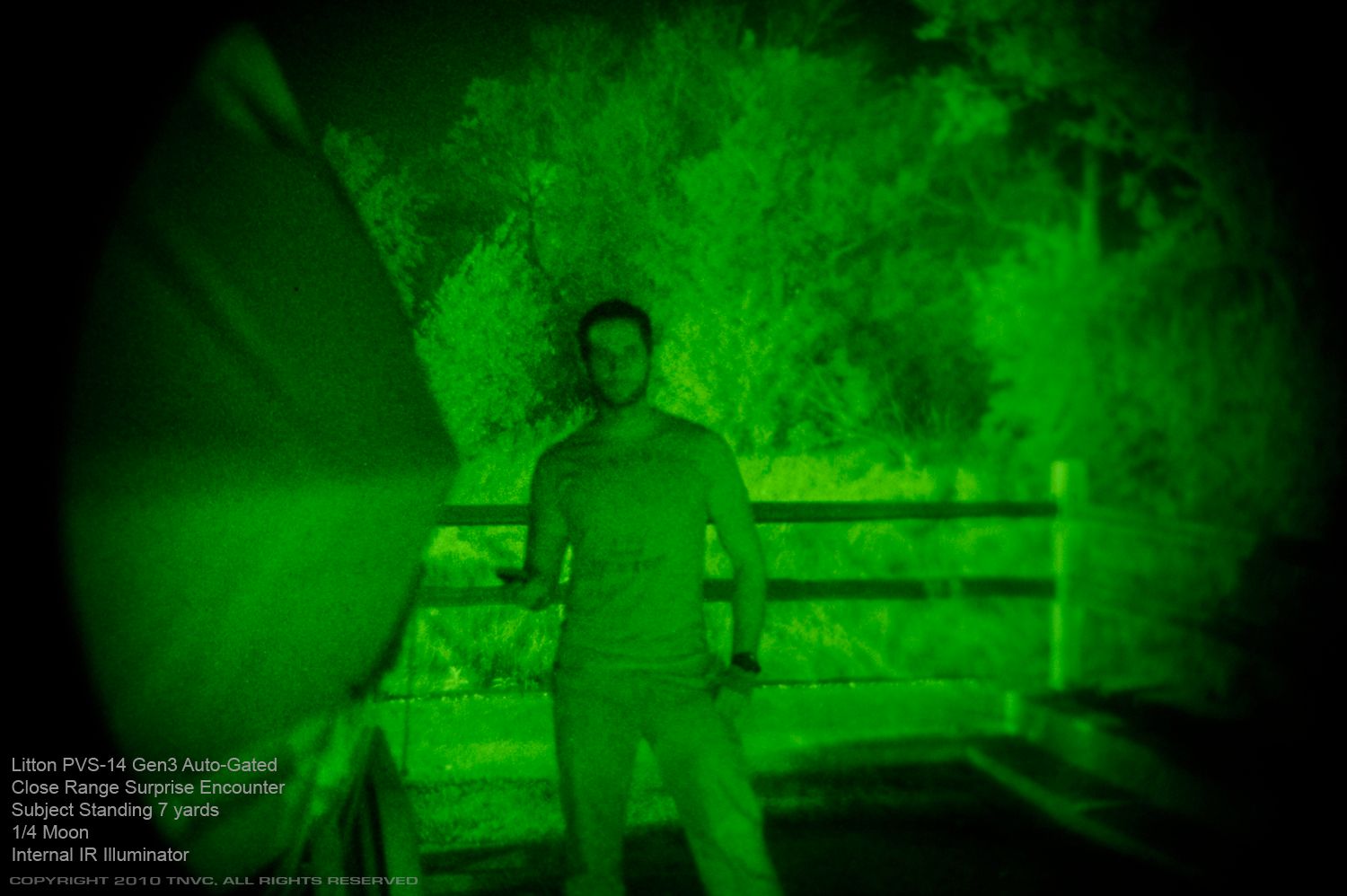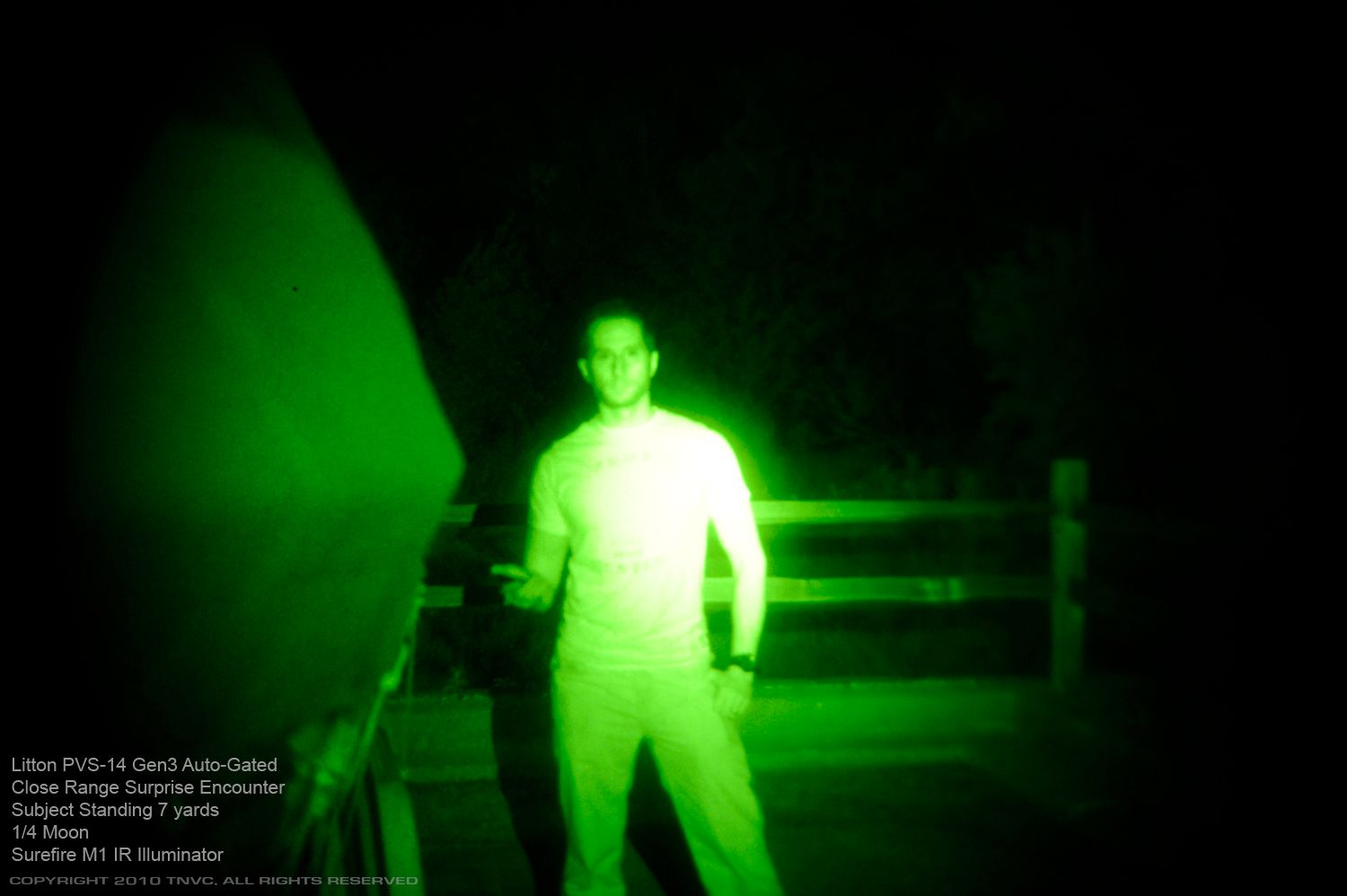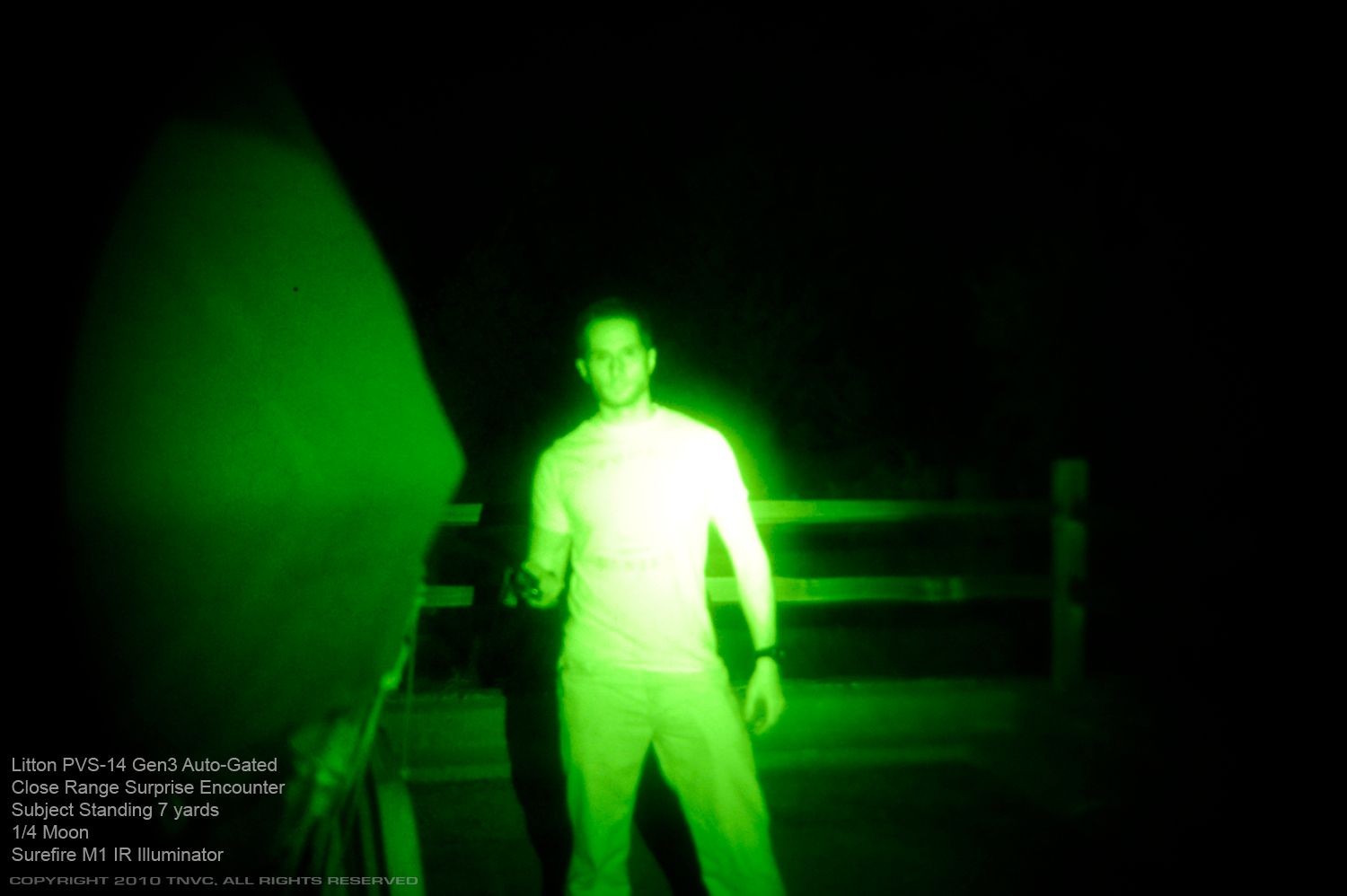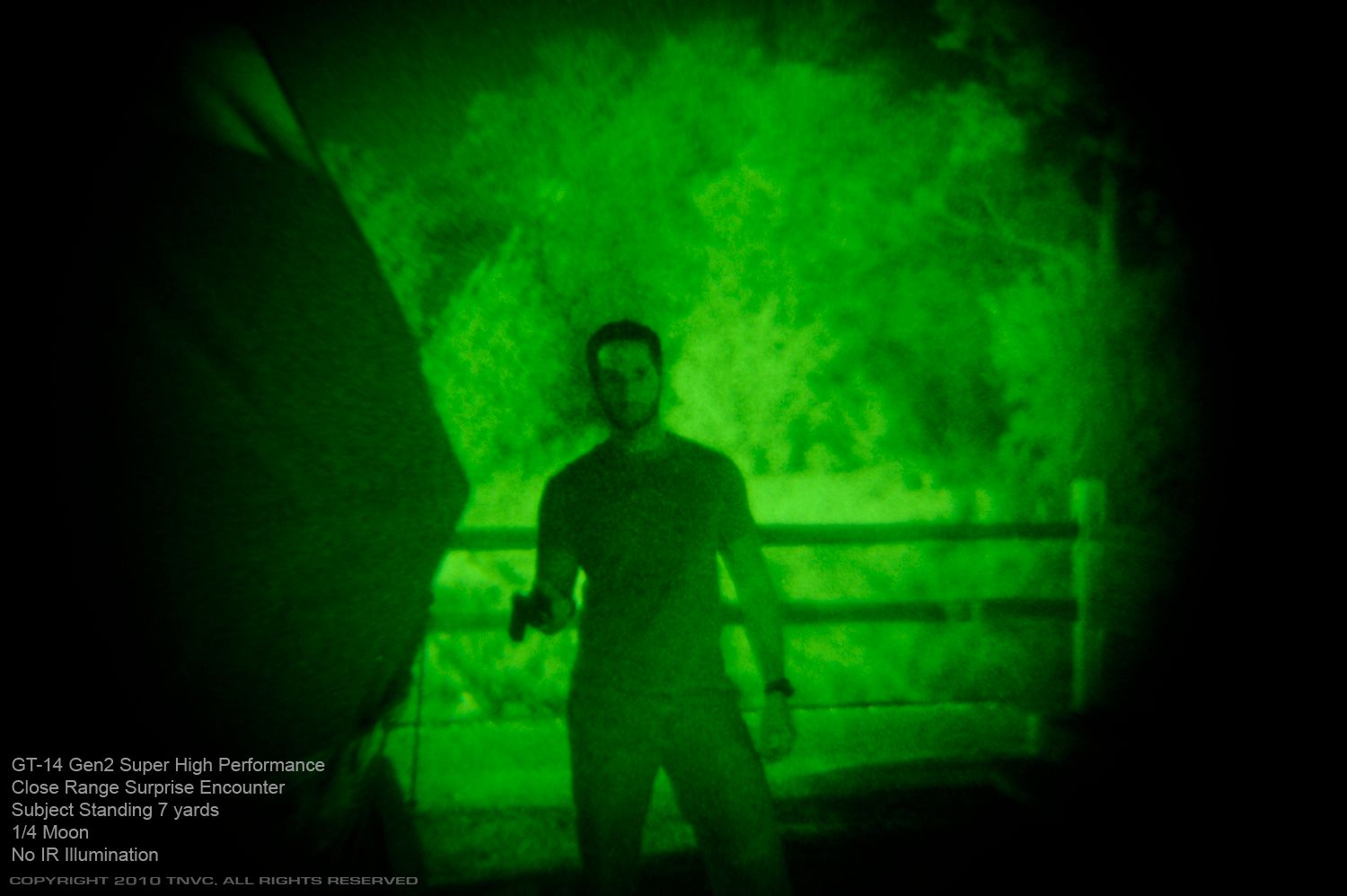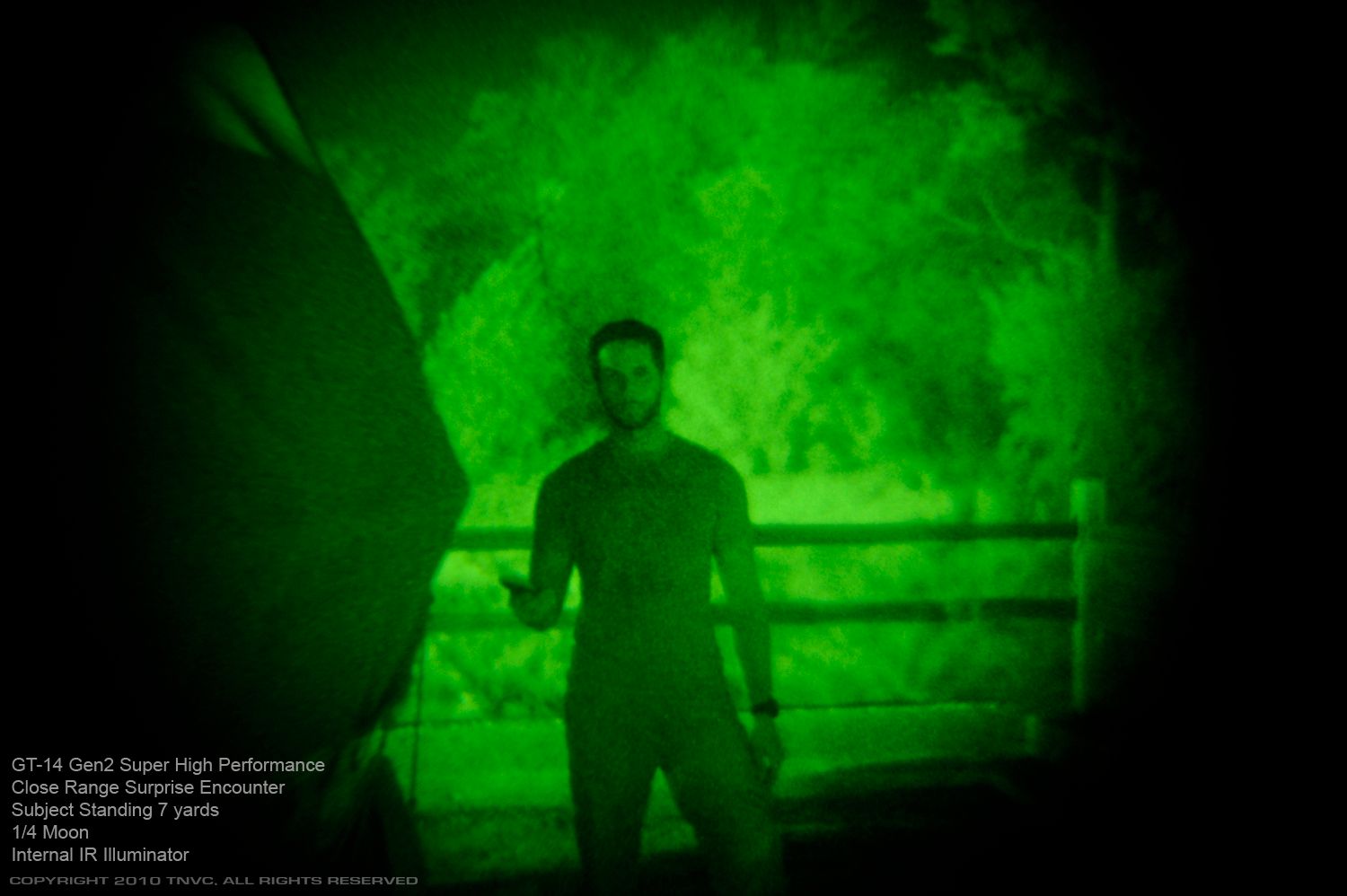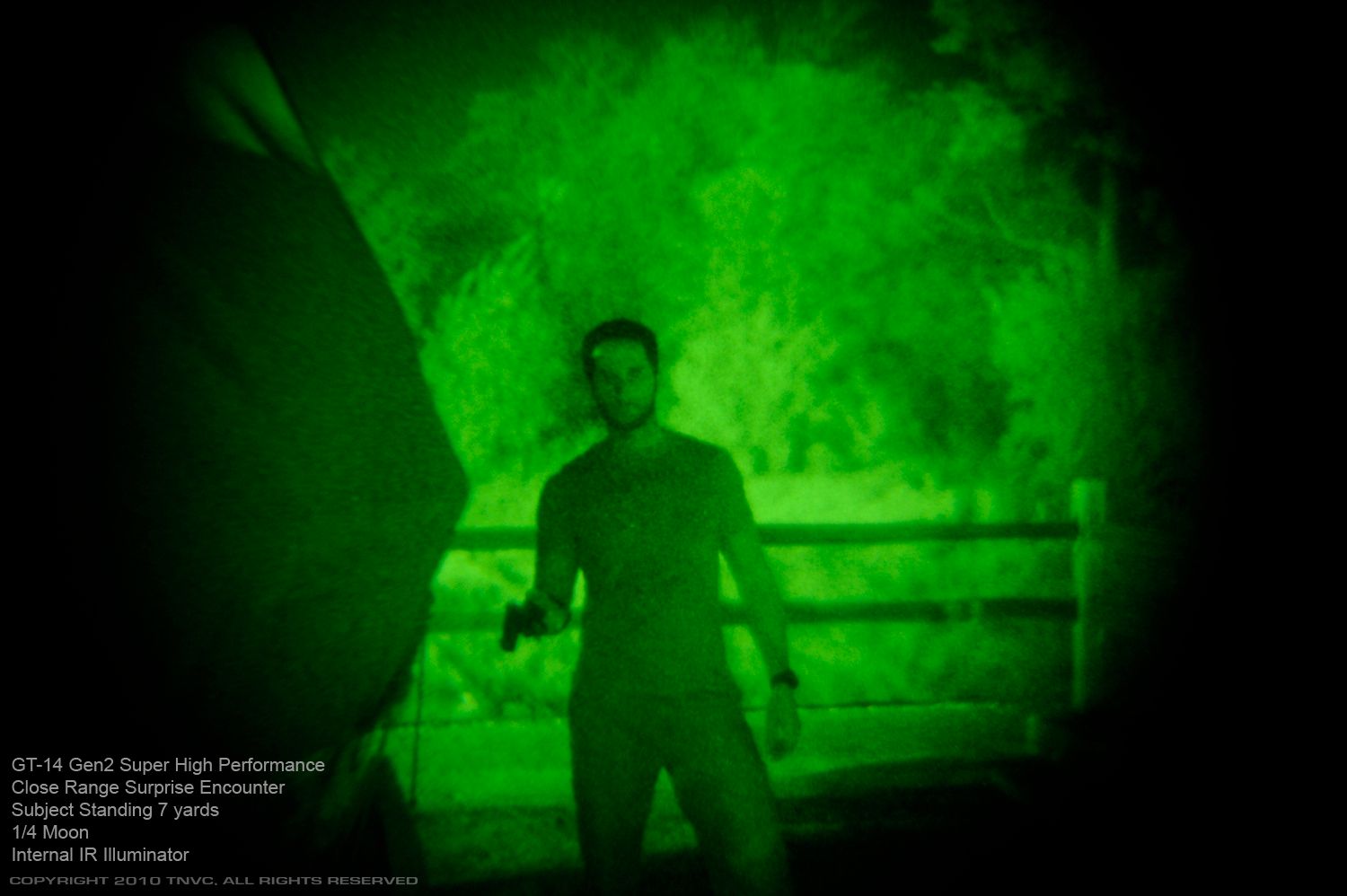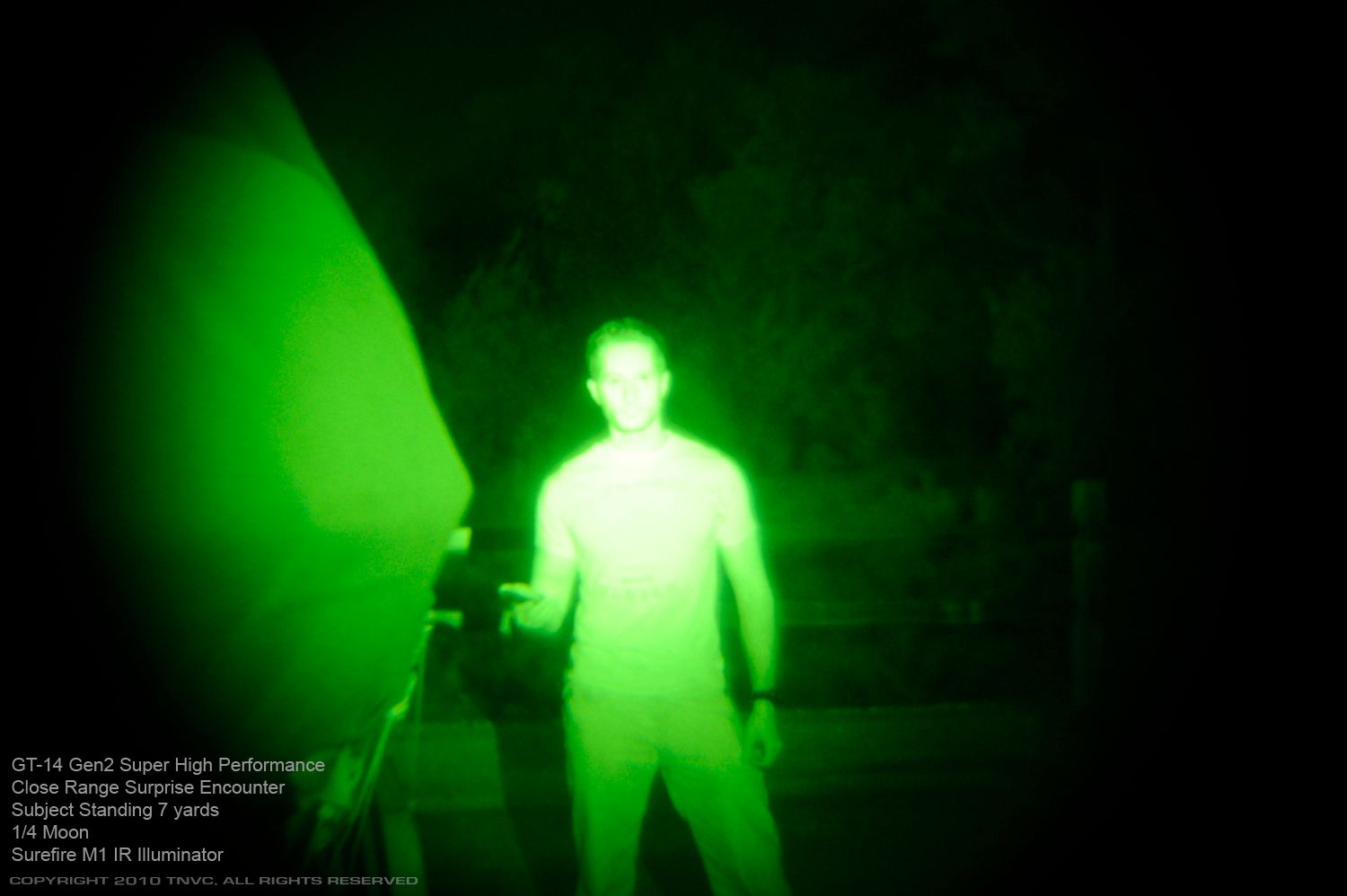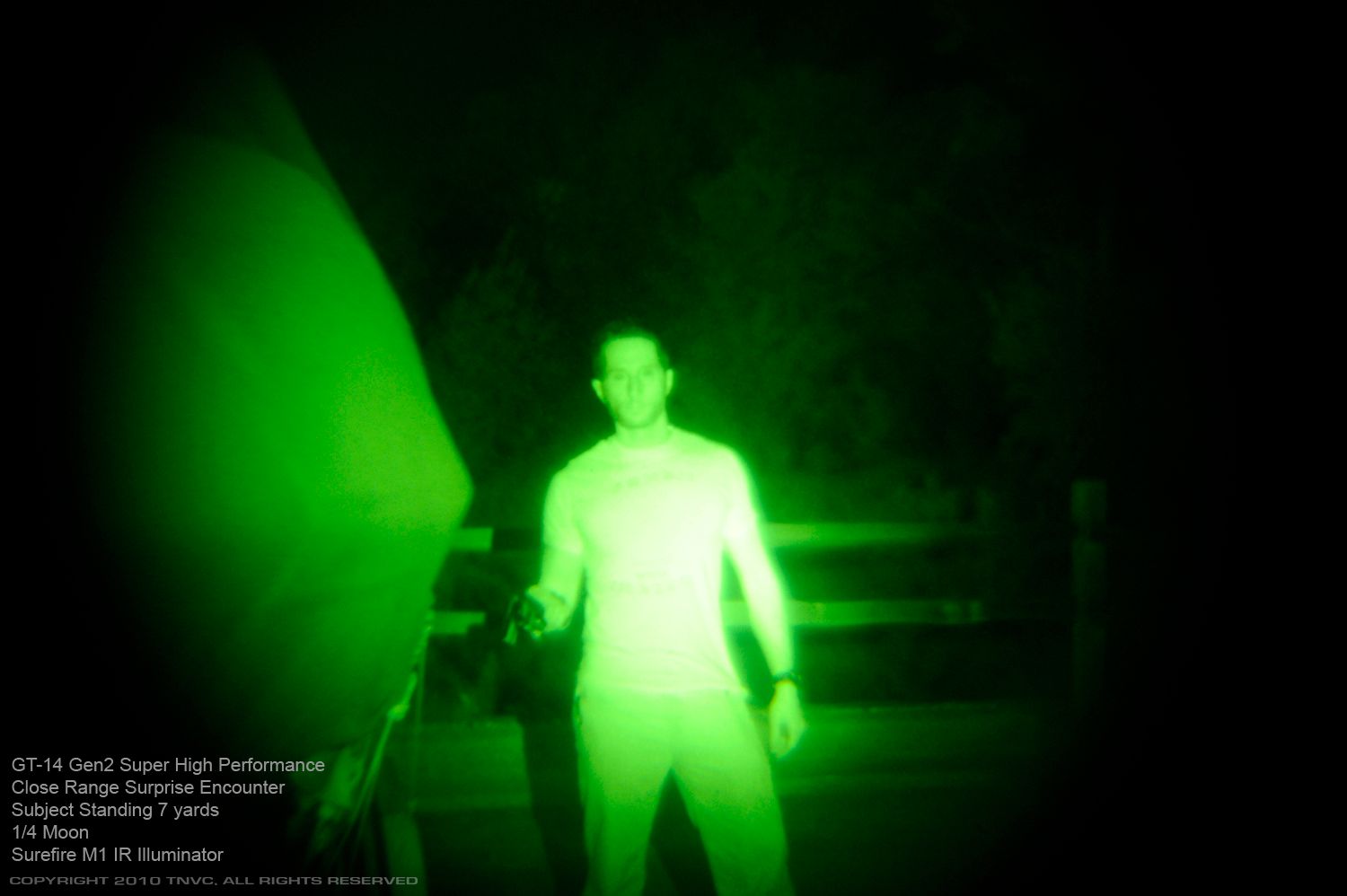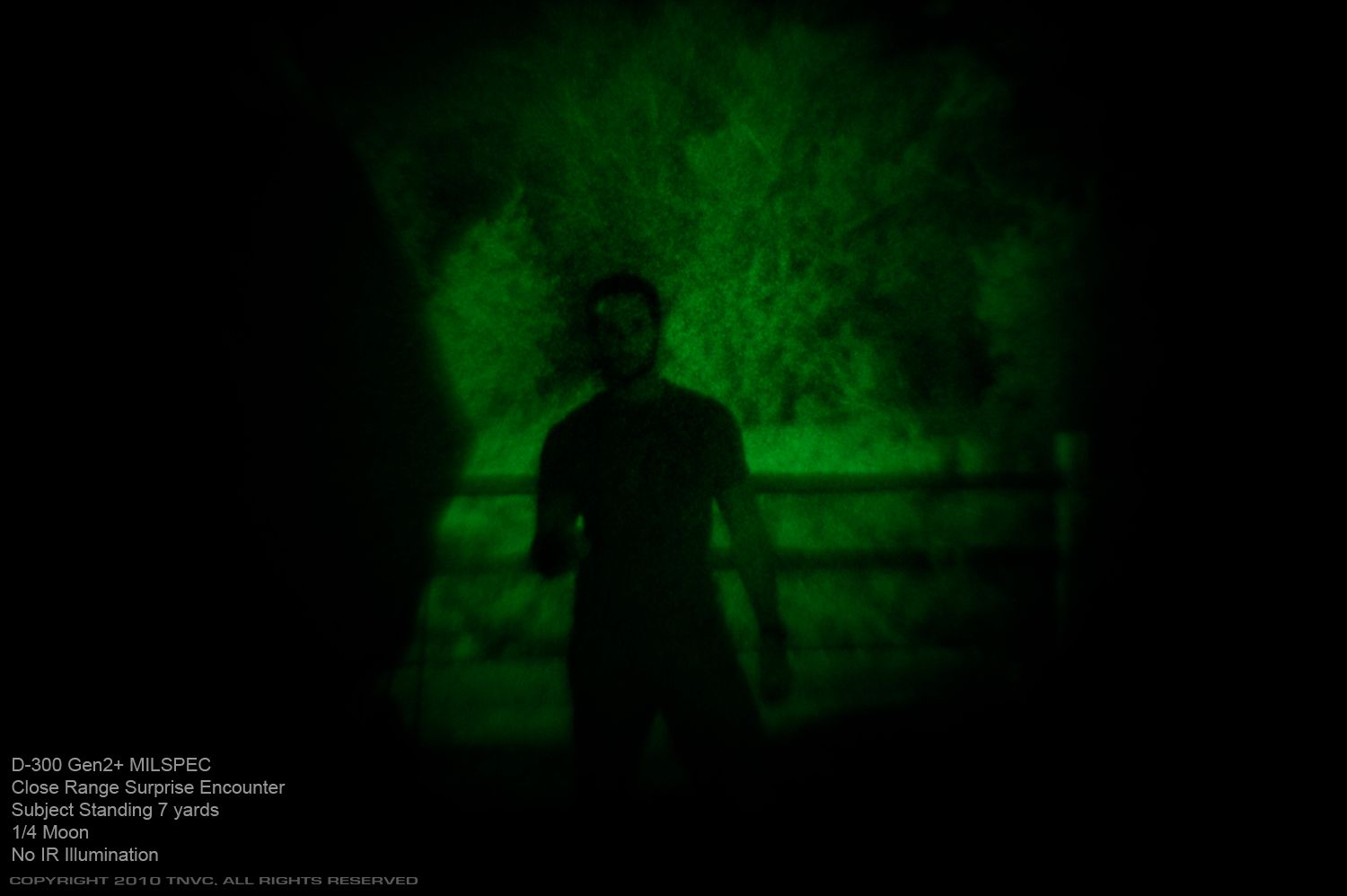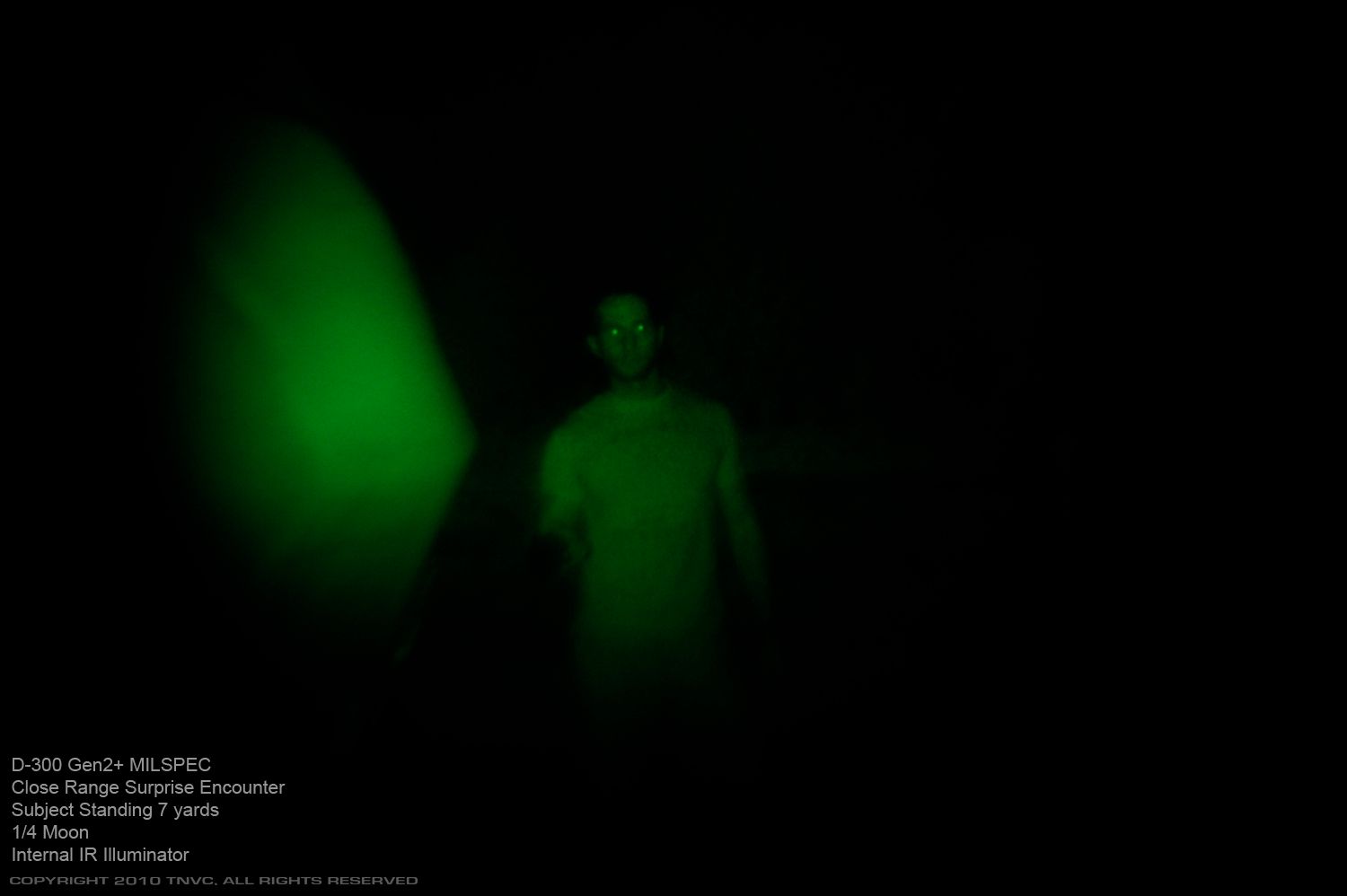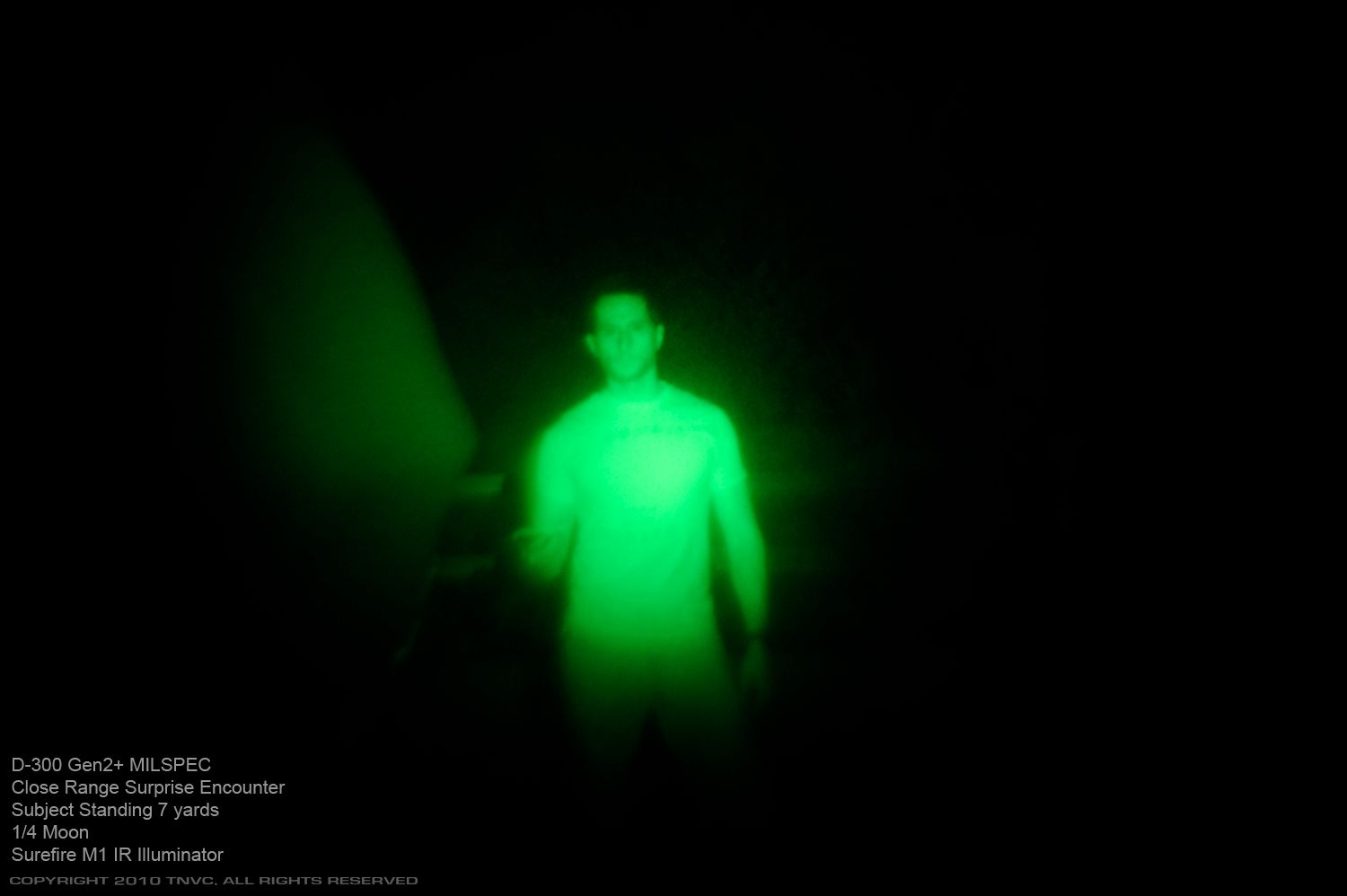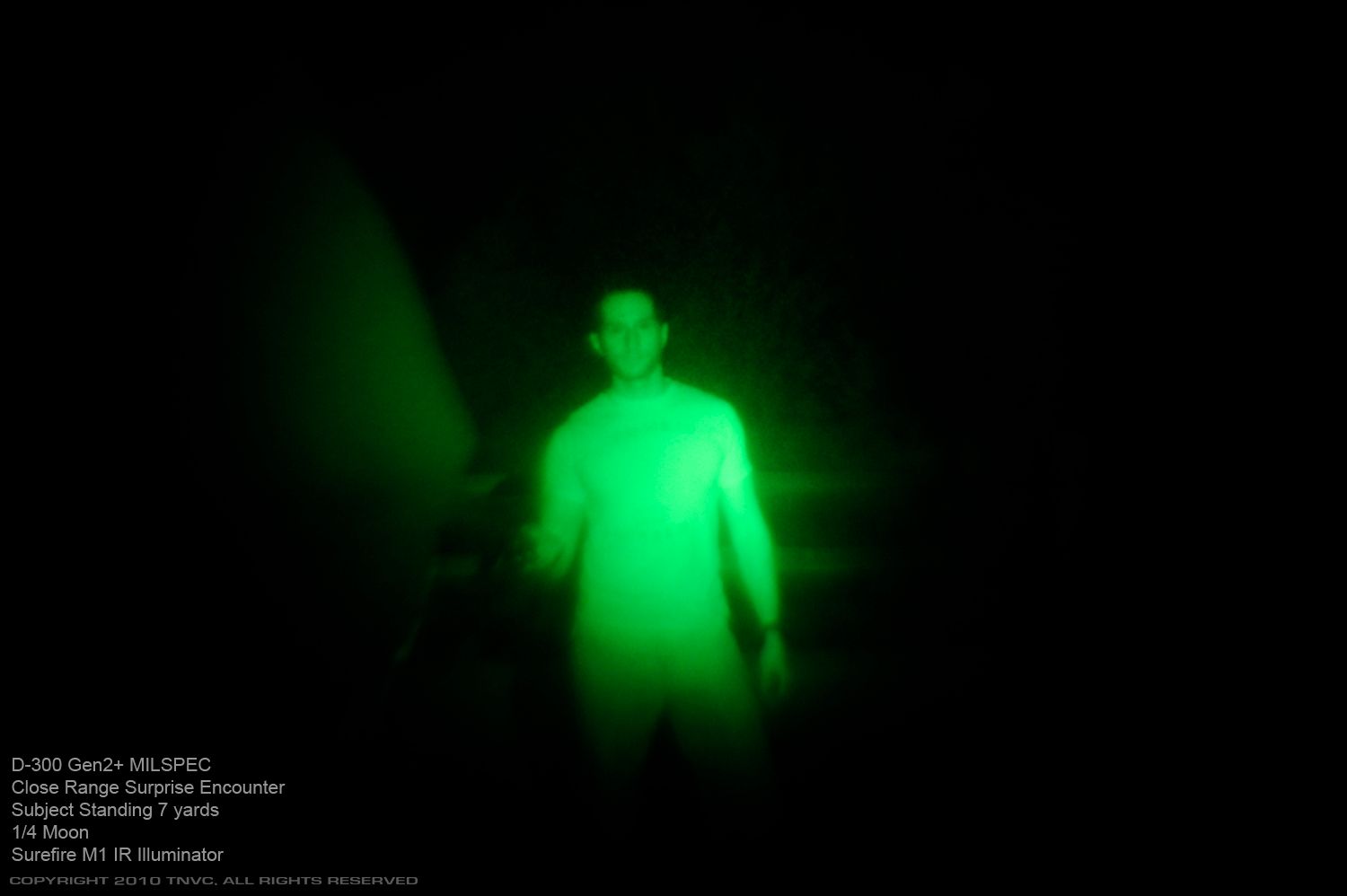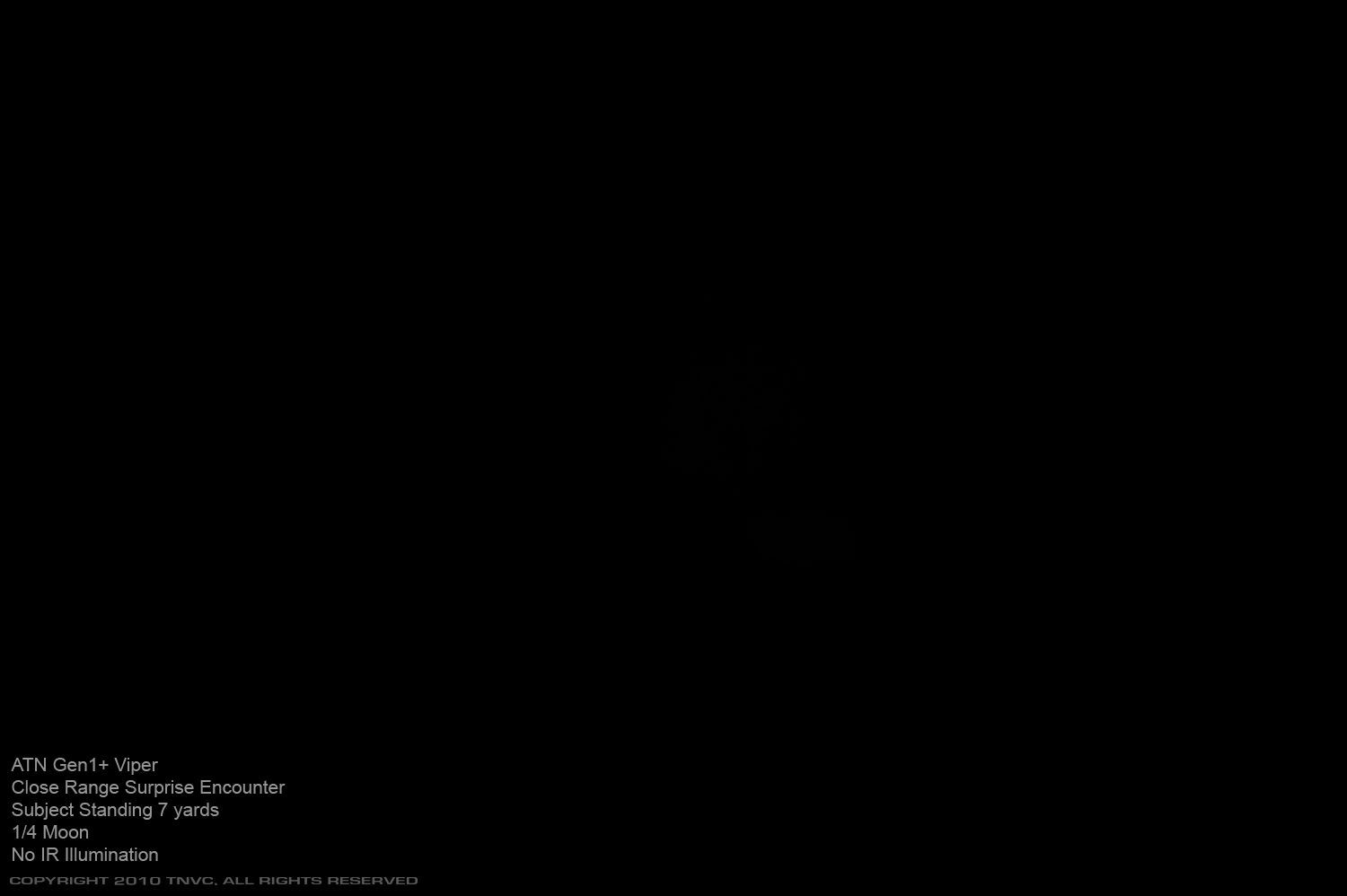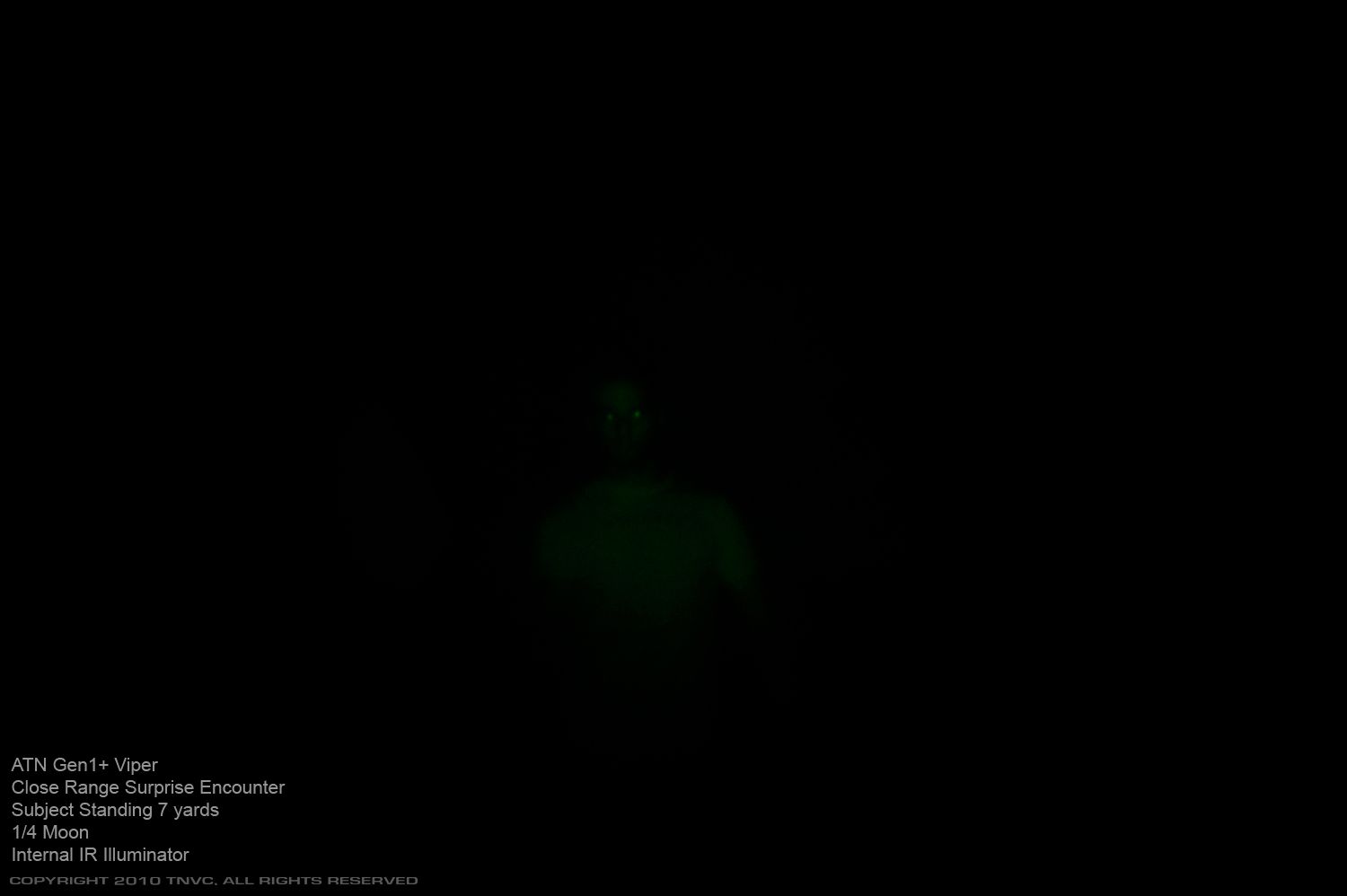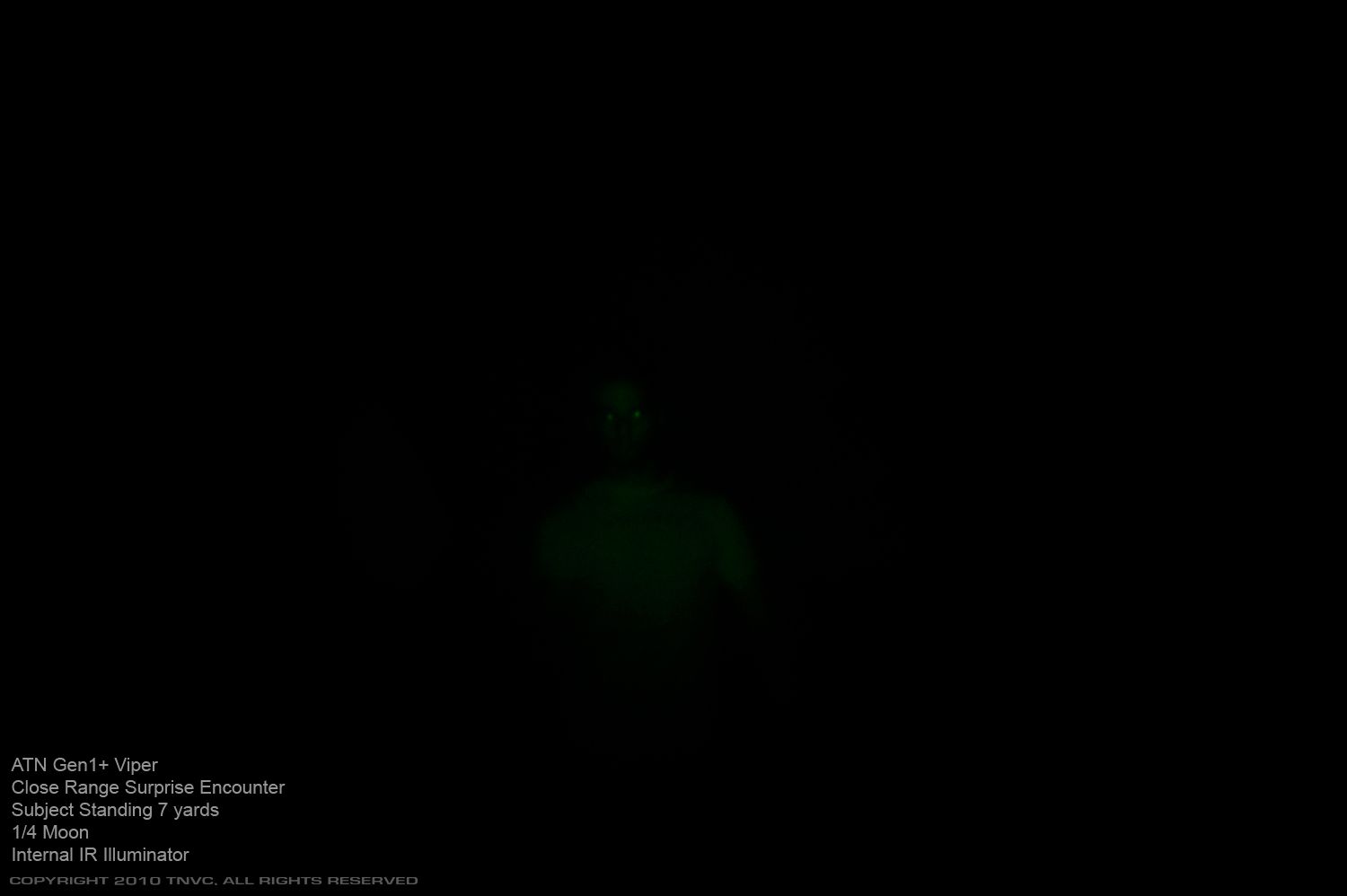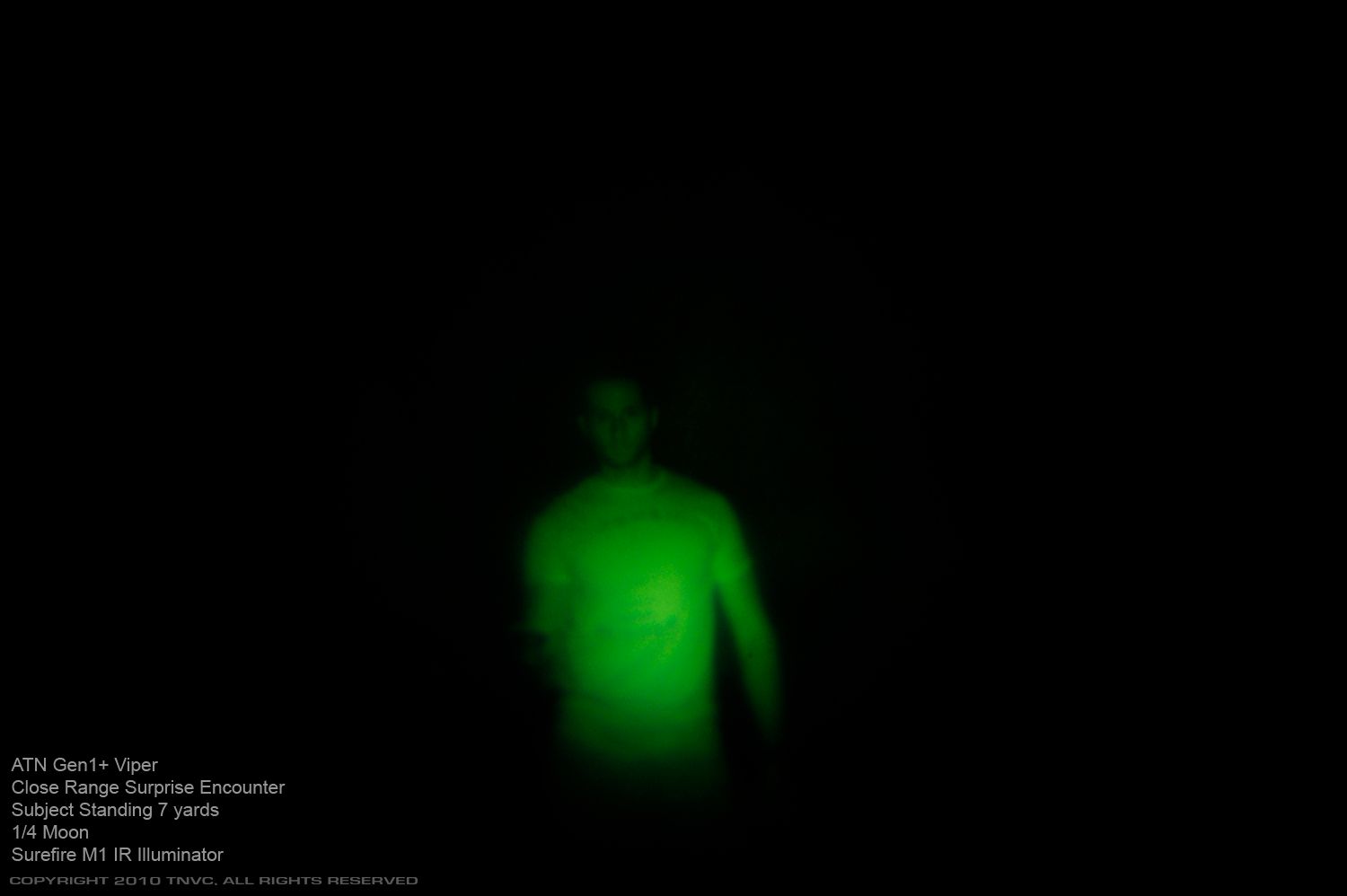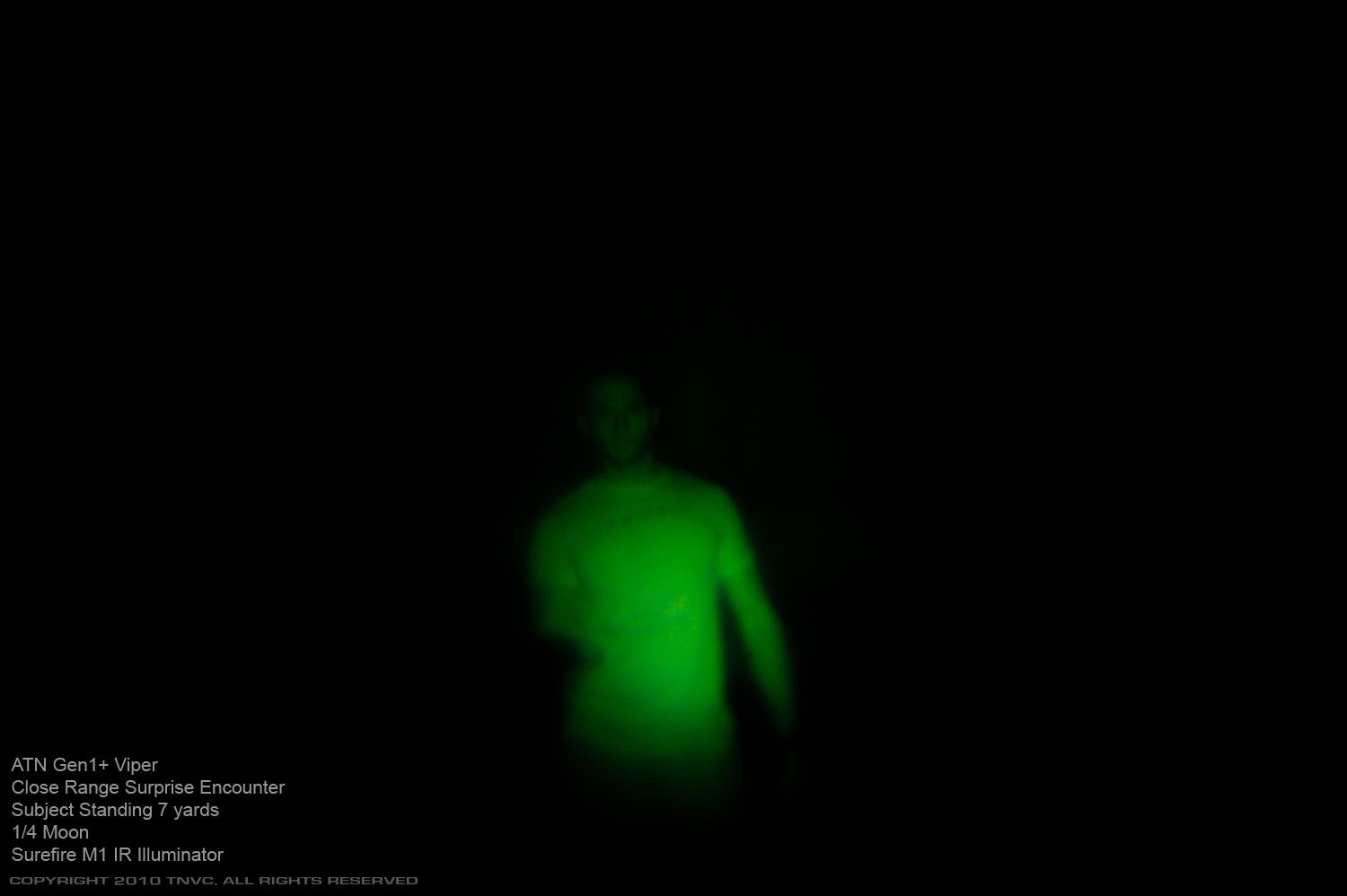Practical Application of Night Vision for Domestic
Law Enforcement & Homeland Security
By
Chip Lasky, TNVC Director of Operations & Product Development
And
John Chapman, Director of Training, LMS Defense
The purpose of this informational paper is to provide the reader with the strengths and weaknesses of the most commonly available night vision systems when applied to the US domestic law enforcement and homeland security mission. On August 17 and 18, 2010, Chip Lasky and John Chapman conducted a series of tests with the mandate to gather realistic data in order to 1) determine the effectiveness of commonly available night vision when utilized in real world circumstances; and 2) utilize this data to determine a minimum level of capability appropriate for domestic law enforcement and homeland security missions. The reason for this undertaking is to provide the law enforcement professional a basis for understanding the capabilities and limitations of various image intensifiers on the market. This informational paper is intended to dispel the confusion surrounding the appropriateness of various devices and their associated image intensifier tubes. This article is not meant to address the technical merits or deficiencies in these devices so much as to provide a realistic portrayal of their capabilities in side-by-side comparison.
To accomplish these goals, we developed a realistic set of scenarios based on real world circumstances likely to be encountered by the user community. We then utilized the five most common night vision devices covering the three most common image intensifier generations available to the domestic user community to observe these scenarios from the responder’s perspective. Each device was tested in each scenario to gather data in three modes: 1) Passive observation using only the available environment’s ambient light; 2) passive observation using each unit’s internal infrared (IR) Illuminator; and 3) Passive observation using a secondary IR Illuminator (Surefire M1 IR Illuminator). A professional photographer then captured photos through each device in each mode, using the same shutter speed and other camera settings. These camera settings were determined by setting up the camera in the mode and shutter speed most favorable to the device with the tube that gathered the least amount of light (the ATN Viper Gen1+).
The need to rapidly and accurately identify threats such as a weapon in a suspect’s hand is overwhelmingly obvious for those going into harm’s way. This was a requisite in developing the scenarios for this article. The idea is to best describe, through photo documentation, the ability to detect and identify threats in accordance with domestic laws of Use of Force. We chose several different locales in which law enforcement personnel are likely to encounter a suspect while using night vision.
Photo documentation was collected with a Nikon D700 Digital SLR Camera. Images are shown as-is with no alteration or retouching. Raw data files are available for peer review.
The five devices tested were:
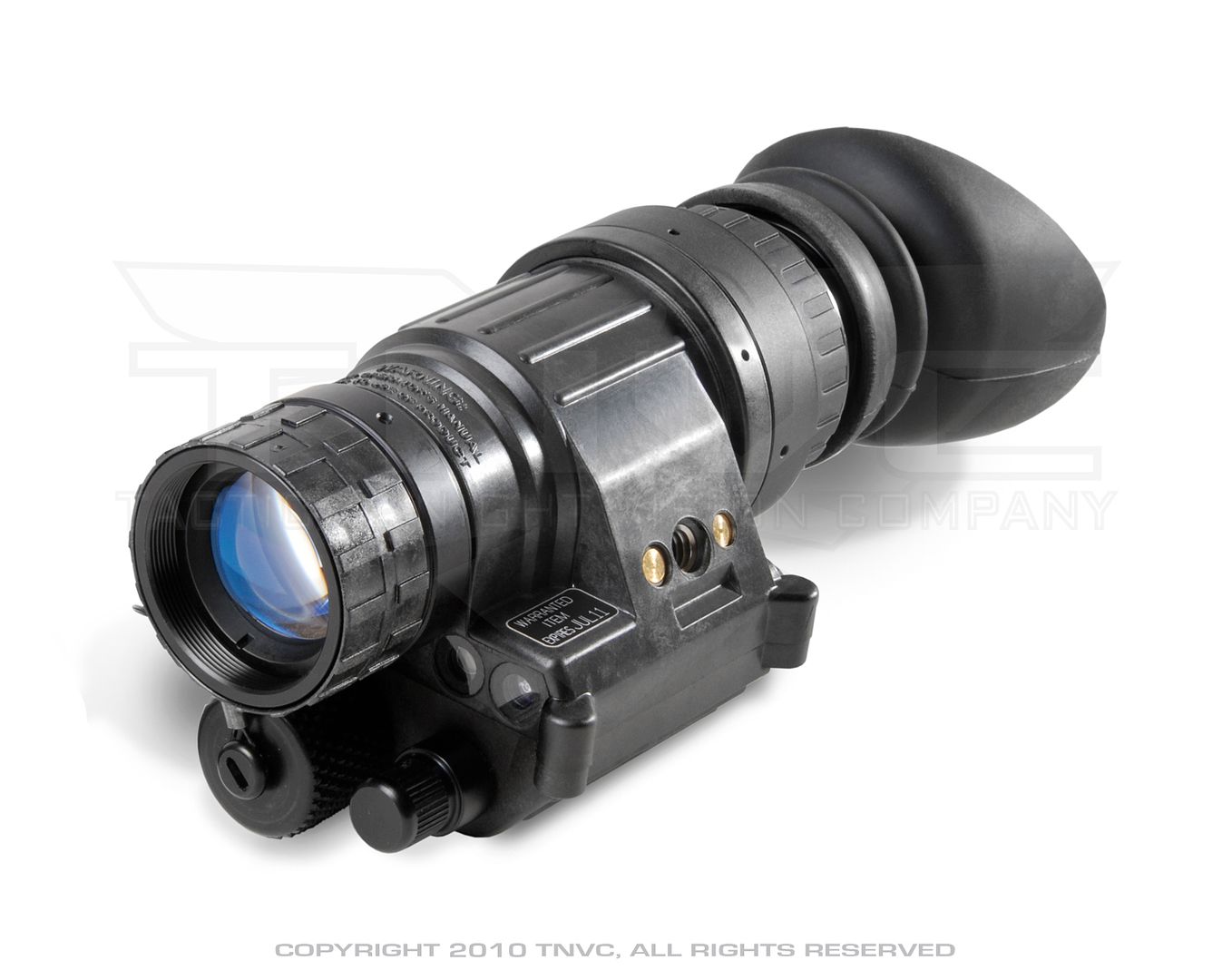
1.ITT PVS-14 Night Enforcer Gen3 PINNACLE Auto-Gated Image Intensifier (ITTE-NEPVS-14-17)
•Gen3 U.S. ITT PINNACLE
•Resolution: 64-72 lp/mm Typical
•Thin-Film
•Auto-Gated
•Adjustable/ Variable Gain
•1x +0.03 Magnification
•40º + 2º Field of View (FOV)
•F/1.2 Objective Lens
•EFL 26mm Ocular Lens
•Diopter +4 to -6
•10″ to Infinity Focus

2.Litton (L3) PVS-14 Gen3 Auto-Gated Image Intensifier
•Gen3 U.S. Litton Auto-Gated
•Resolution: 64 lp/mm Typical
•Thin-Film
•Auto-Gated
•Adjustable/ Variable Gain
•1x Magnification
•40º Field of View (FOV)
•F/1.2 Objective Lens
•EFL 26mm Ocular Lens
•Diopter +2 to -6
•10″ to Infinity Focus
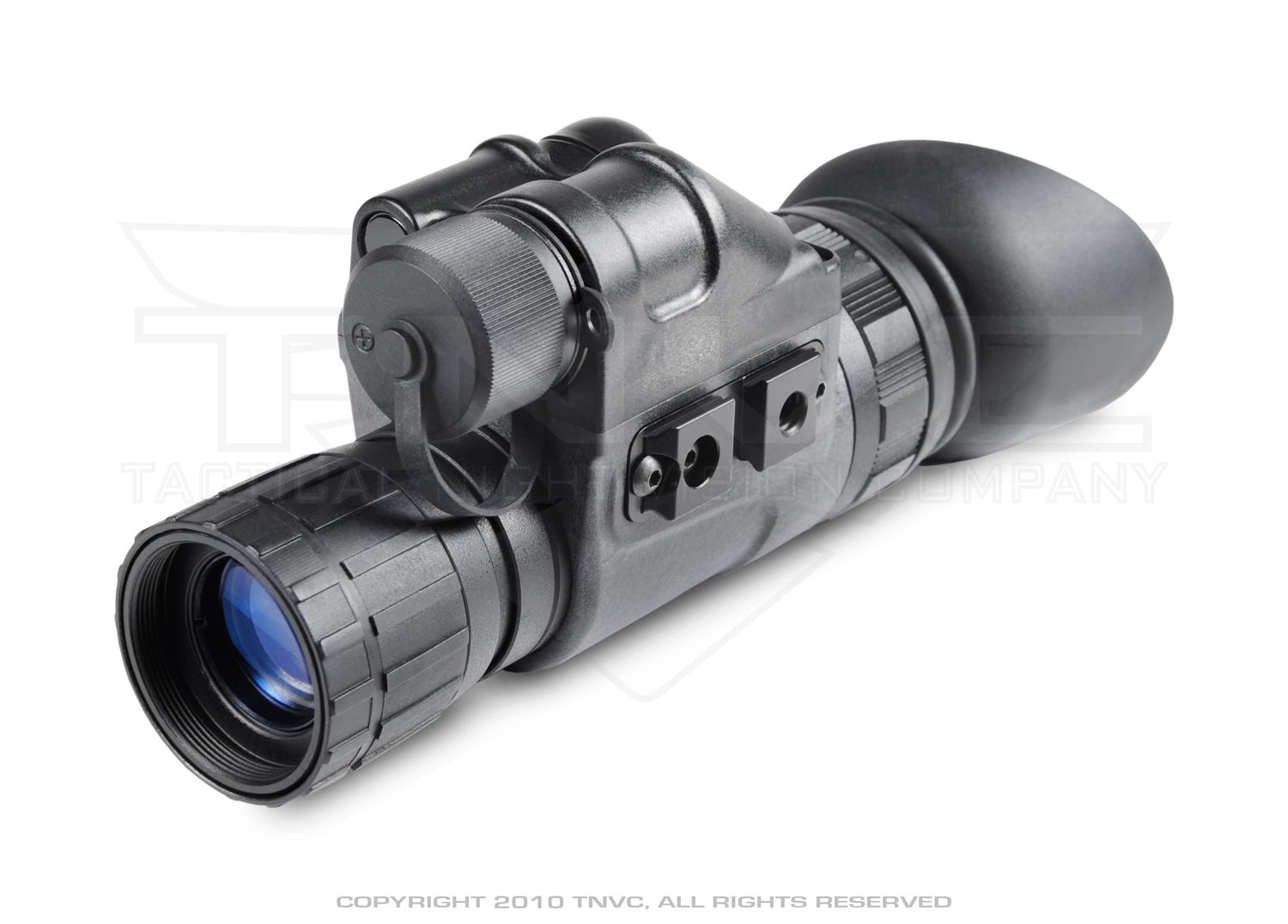
3.GT-14 Gen2 Super High Performance (SHP) Image Intensifier
•Gen2 Super High Performance (SHP)
•Resolution: 51-64 lp/mm Typical
•Non-Filmed
•Non-Gated
•Automatic Brightness Control
•1x Magnification
•40º Field of View (FOV)
•F/1.2 Objective Lens
•EFL 23mm Ocular Lens
•Diopter +5 to -4
•10″ to Infinity Focus
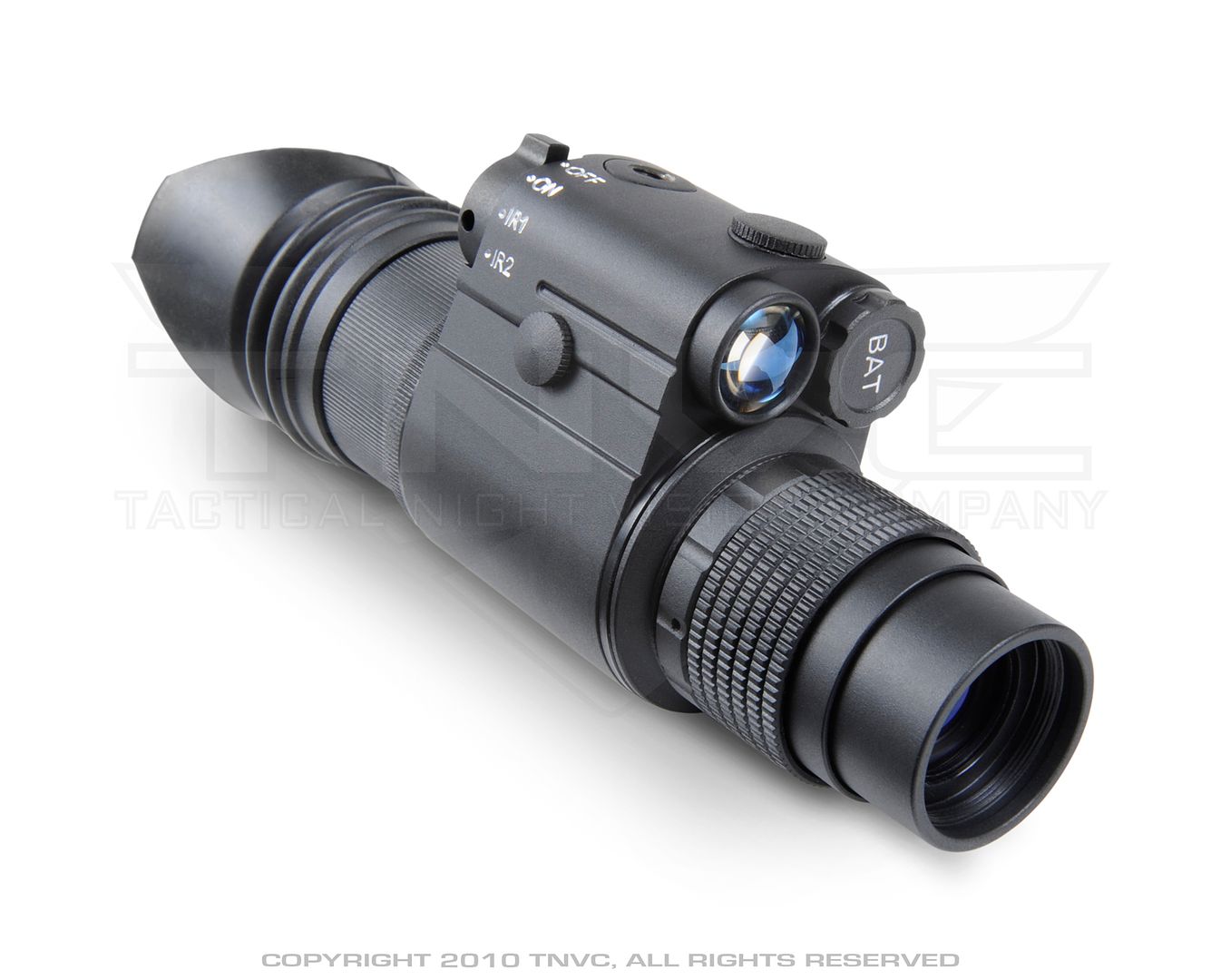
4.D-300 Gen2 MILSPEC Image Intensifier
•Gen2+
•Resolution: 28-38 lp/mm Typical
•Non-Filmed
•Non-Gated
•Automatic Brightness Control
•1x Magnification
•40º Field of View (FOV)
•F/1.2 Objective Lens
•EFL 25mm Ocular Lens
•Diopter +2 to -4
•10″ to Infinity Focus
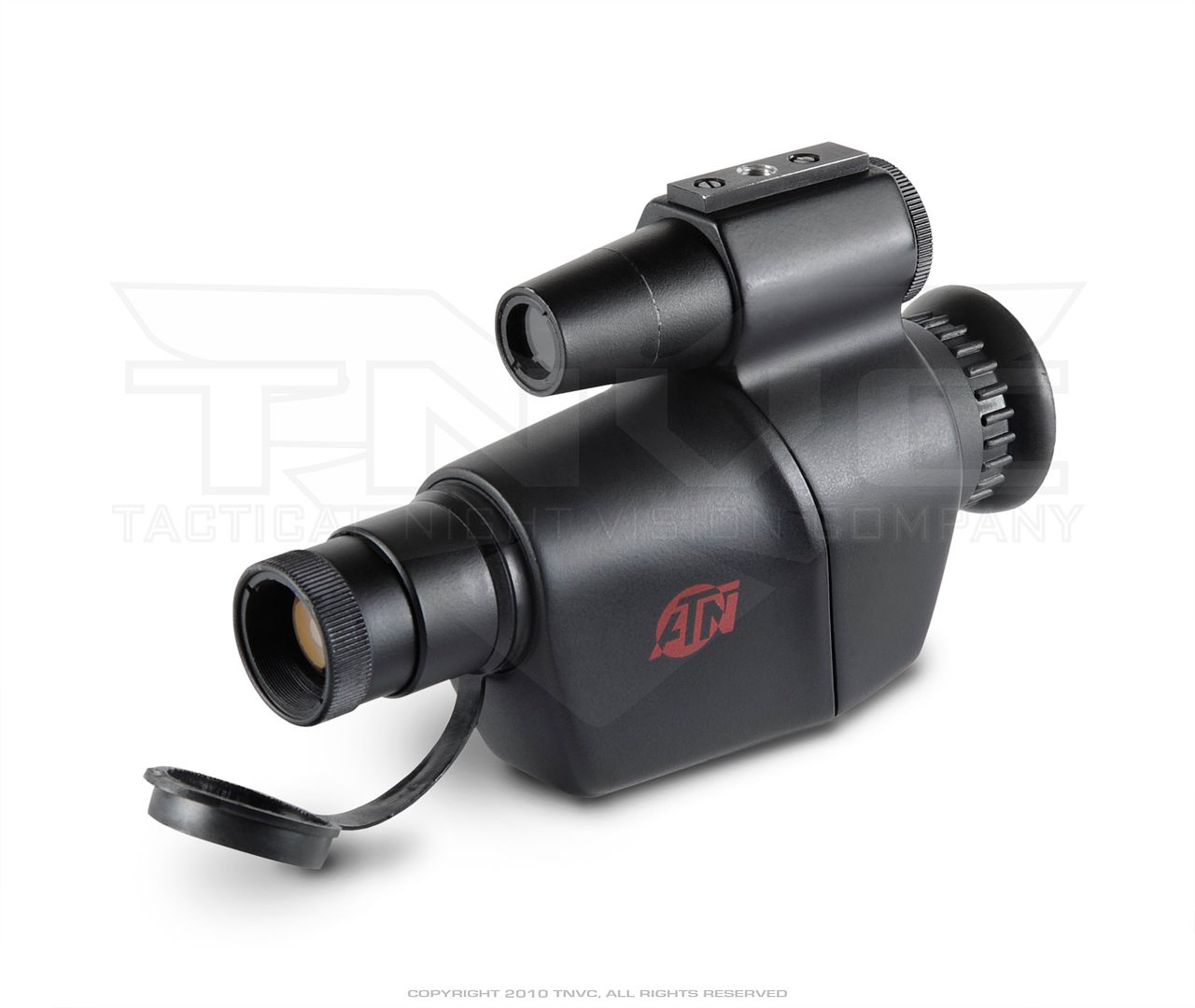
5.ATN Viper Gen1 Image Intensifier (NVG0VIPR10)
•Gen1+
•Resolution: 40 lp/mm Typical
•Non-Film
•Non-Gated
•Automatic Brightness Control
•1x Magnification
•20º Field of View (FOV)
•F/1.4 Objective Lens
•EFL 35mm Ocular Lens
•Diopter +5 to -5
•1 m to Infinity Focus
These devices were selected because they can display the various generations and levels within generations of image intensifier technology. The units are all monocular-type and can be hand-held or head-mounted for a hands free capability. Emphasis was placed on individually-operated devices used in a “search and observe” capacity.
Law Enforcement & Homeland Security
By
Chip Lasky, TNVC Director of Operations & Product Development
And
John Chapman, Director of Training, LMS Defense
The purpose of this informational paper is to provide the reader with the strengths and weaknesses of the most commonly available night vision systems when applied to the US domestic law enforcement and homeland security mission. On August 17 and 18, 2010, Chip Lasky and John Chapman conducted a series of tests with the mandate to gather realistic data in order to 1) determine the effectiveness of commonly available night vision when utilized in real world circumstances; and 2) utilize this data to determine a minimum level of capability appropriate for domestic law enforcement and homeland security missions. The reason for this undertaking is to provide the law enforcement professional a basis for understanding the capabilities and limitations of various image intensifiers on the market. This informational paper is intended to dispel the confusion surrounding the appropriateness of various devices and their associated image intensifier tubes. This article is not meant to address the technical merits or deficiencies in these devices so much as to provide a realistic portrayal of their capabilities in side-by-side comparison.
To accomplish these goals, we developed a realistic set of scenarios based on real world circumstances likely to be encountered by the user community. We then utilized the five most common night vision devices covering the three most common image intensifier generations available to the domestic user community to observe these scenarios from the responder’s perspective. Each device was tested in each scenario to gather data in three modes: 1) Passive observation using only the available environment’s ambient light; 2) passive observation using each unit’s internal infrared (IR) Illuminator; and 3) Passive observation using a secondary IR Illuminator (Surefire M1 IR Illuminator). A professional photographer then captured photos through each device in each mode, using the same shutter speed and other camera settings. These camera settings were determined by setting up the camera in the mode and shutter speed most favorable to the device with the tube that gathered the least amount of light (the ATN Viper Gen1+).
The need to rapidly and accurately identify threats such as a weapon in a suspect’s hand is overwhelmingly obvious for those going into harm’s way. This was a requisite in developing the scenarios for this article. The idea is to best describe, through photo documentation, the ability to detect and identify threats in accordance with domestic laws of Use of Force. We chose several different locales in which law enforcement personnel are likely to encounter a suspect while using night vision.
Photo documentation was collected with a Nikon D700 Digital SLR Camera. Images are shown as-is with no alteration or retouching. Raw data files are available for peer review.
The five devices tested were:

1.ITT PVS-14 Night Enforcer Gen3 PINNACLE Auto-Gated Image Intensifier (ITTE-NEPVS-14-17)
•Gen3 U.S. ITT PINNACLE
•Resolution: 64-72 lp/mm Typical
•Thin-Film
•Auto-Gated
•Adjustable/ Variable Gain
•1x +0.03 Magnification
•40º + 2º Field of View (FOV)
•F/1.2 Objective Lens
•EFL 26mm Ocular Lens
•Diopter +4 to -6
•10″ to Infinity Focus

2.Litton (L3) PVS-14 Gen3 Auto-Gated Image Intensifier
•Gen3 U.S. Litton Auto-Gated
•Resolution: 64 lp/mm Typical
•Thin-Film
•Auto-Gated
•Adjustable/ Variable Gain
•1x Magnification
•40º Field of View (FOV)
•F/1.2 Objective Lens
•EFL 26mm Ocular Lens
•Diopter +2 to -6
•10″ to Infinity Focus

3.GT-14 Gen2 Super High Performance (SHP) Image Intensifier
•Gen2 Super High Performance (SHP)
•Resolution: 51-64 lp/mm Typical
•Non-Filmed
•Non-Gated
•Automatic Brightness Control
•1x Magnification
•40º Field of View (FOV)
•F/1.2 Objective Lens
•EFL 23mm Ocular Lens
•Diopter +5 to -4
•10″ to Infinity Focus

4.D-300 Gen2 MILSPEC Image Intensifier
•Gen2+
•Resolution: 28-38 lp/mm Typical
•Non-Filmed
•Non-Gated
•Automatic Brightness Control
•1x Magnification
•40º Field of View (FOV)
•F/1.2 Objective Lens
•EFL 25mm Ocular Lens
•Diopter +2 to -4
•10″ to Infinity Focus

5.ATN Viper Gen1 Image Intensifier (NVG0VIPR10)
•Gen1+
•Resolution: 40 lp/mm Typical
•Non-Film
•Non-Gated
•Automatic Brightness Control
•1x Magnification
•20º Field of View (FOV)
•F/1.4 Objective Lens
•EFL 35mm Ocular Lens
•Diopter +5 to -5
•1 m to Infinity Focus
These devices were selected because they can display the various generations and levels within generations of image intensifier technology. The units are all monocular-type and can be hand-held or head-mounted for a hands free capability. Emphasis was placed on individually-operated devices used in a “search and observe” capacity.

